Goodia lotifolia
Gossia acmenoides
Gossia bidwillii
Gossia fragrantissima
Gossia hillii
Gossia punctata
Gossypium australe
Gossypium sturtianum
Grammitis billardierei
Grammitis stenophylla
Graptophyllum ilicifolium
Graptophyllum excelsum
Gratiola pedunculata
Grevillea acanthifolia
Grevillea acuaria
Grevillea agrifolia
Grevillea albiflora
Grevillea alpina
Grevillea angulata
Grevillea arenaria
Grevillea armigera
Grevillea asparagoides
Grevillea asplenifolia
Grevillea asteriscosa
Grevillea aurea
Grevillea baileyana
Grevillea banksii
Grevillea banyabba
Grevillea baueri
Grevillea beadleana
Grevillea bedggoodiana
Grevillea bipinnatifida
Grevillea biternata
Grevillea brevifolia
Grevillea bronwenae
Grevillea buxifolia
Grevillea caleyi
Grevillea calliantha
Grevillea candelabroides
Grevillea capitellata
Grevillea centristigma
Grevillea chrysophaea
Grevillea crithmifolia
Grevillea diffusa
Grevillea dimorpha
Grevillea disjuncta
Grevillea dryophylla
Grevillea eriobotrya
Grevillea eriostachya
Grevillea eryngioides
Grevillea evansiana
Grevillea exposita

Washpool National Park NSW
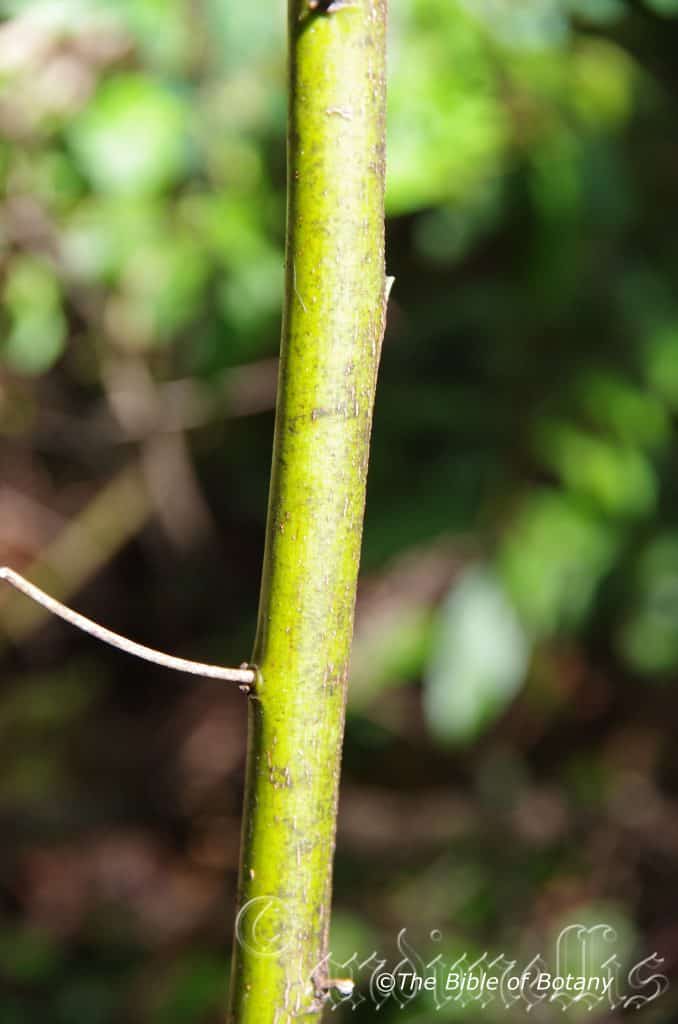
Washpool National Park NSW
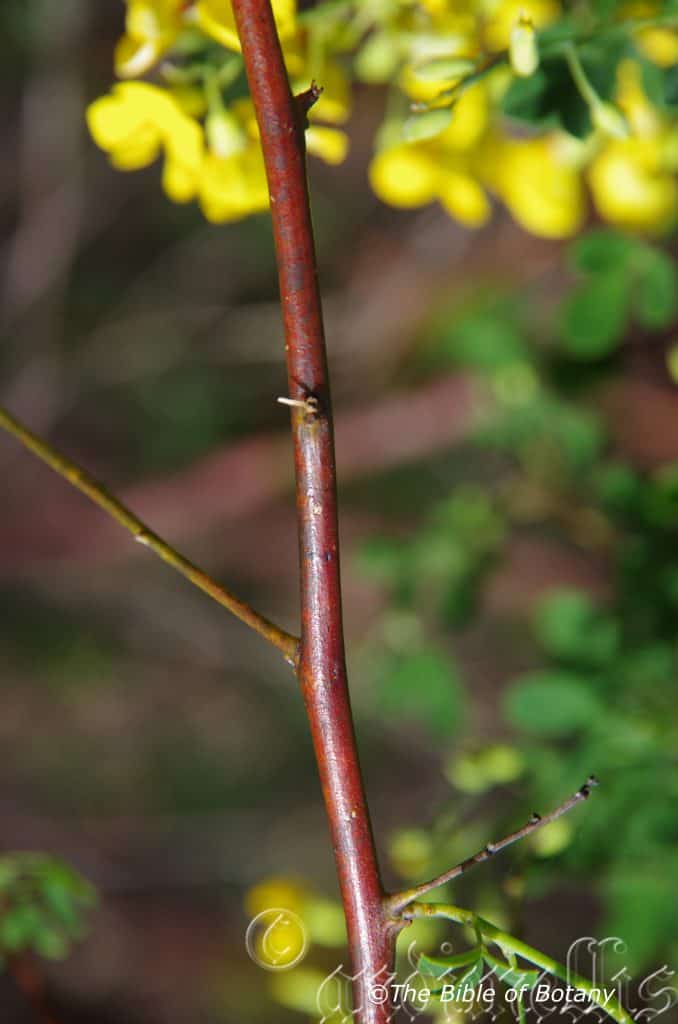
National Botanic Gardens ACT
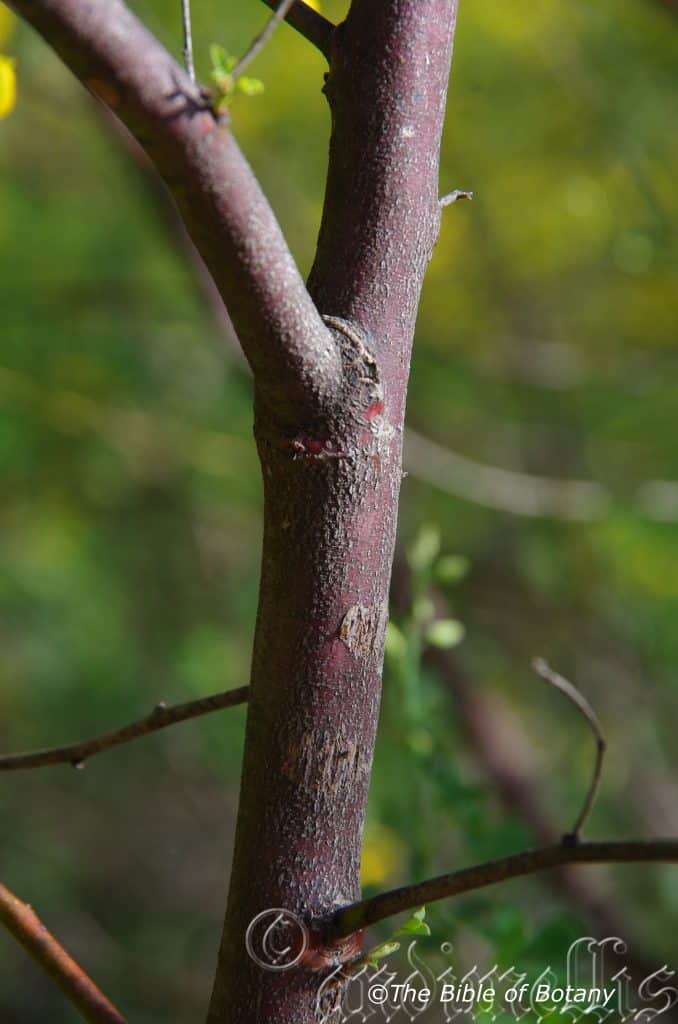
National Botanic Gardens ACT
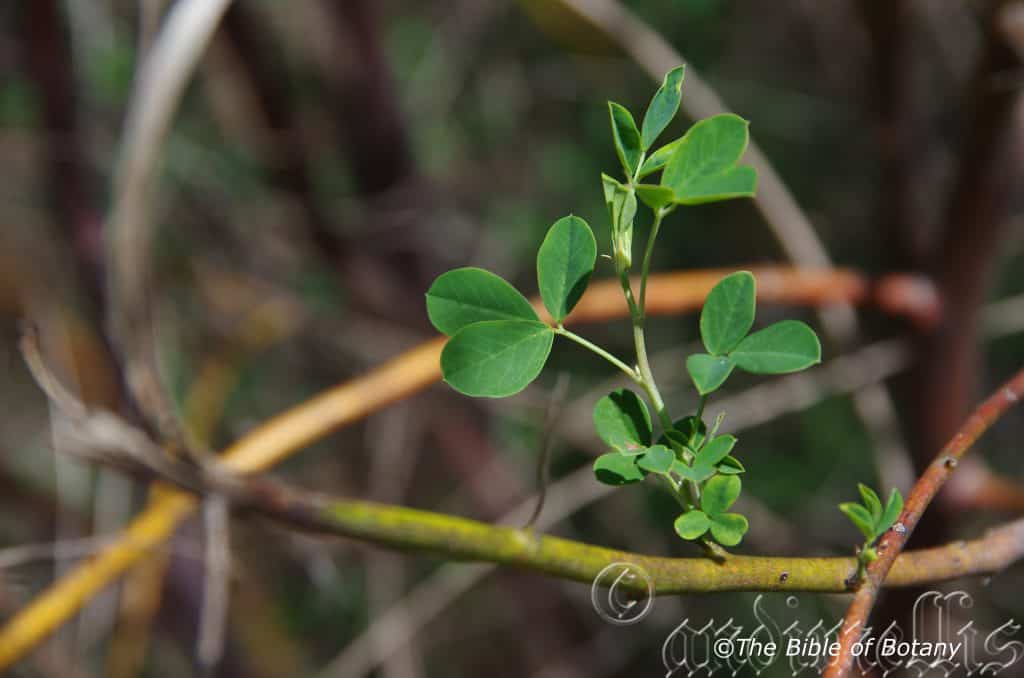
National Botanic Gardens ACT
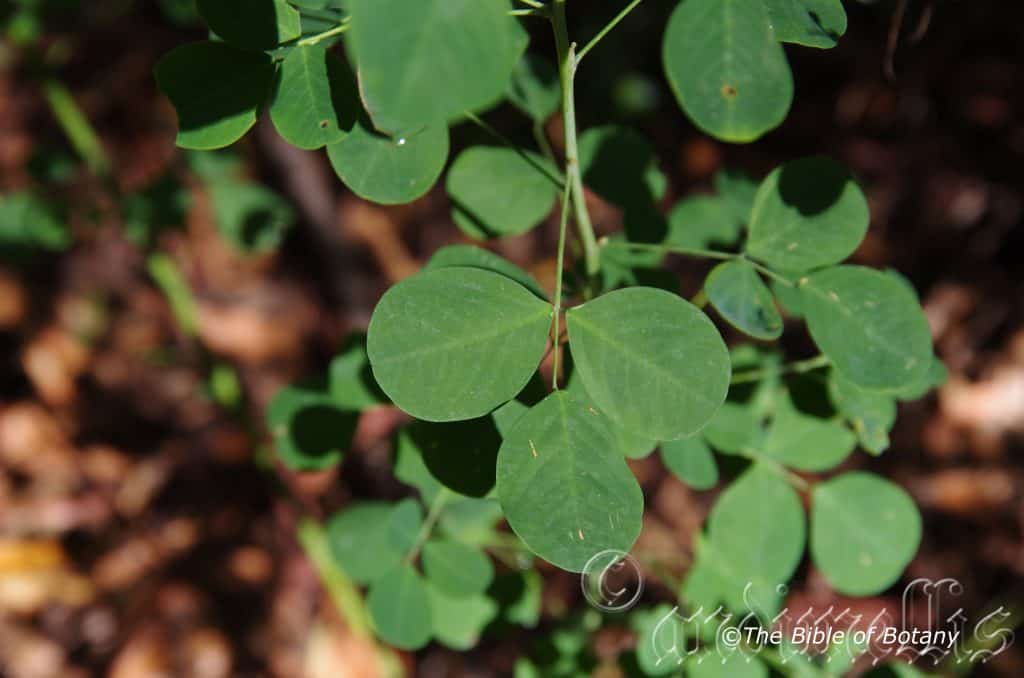
Washpool National Park NSW
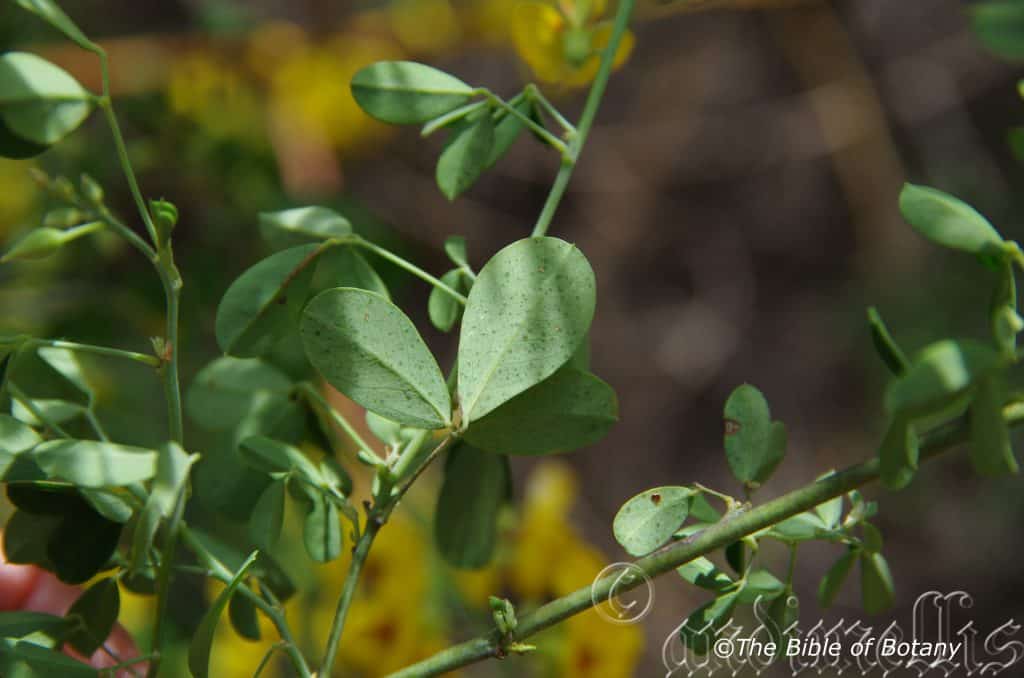
National Botanic Gardens ACT
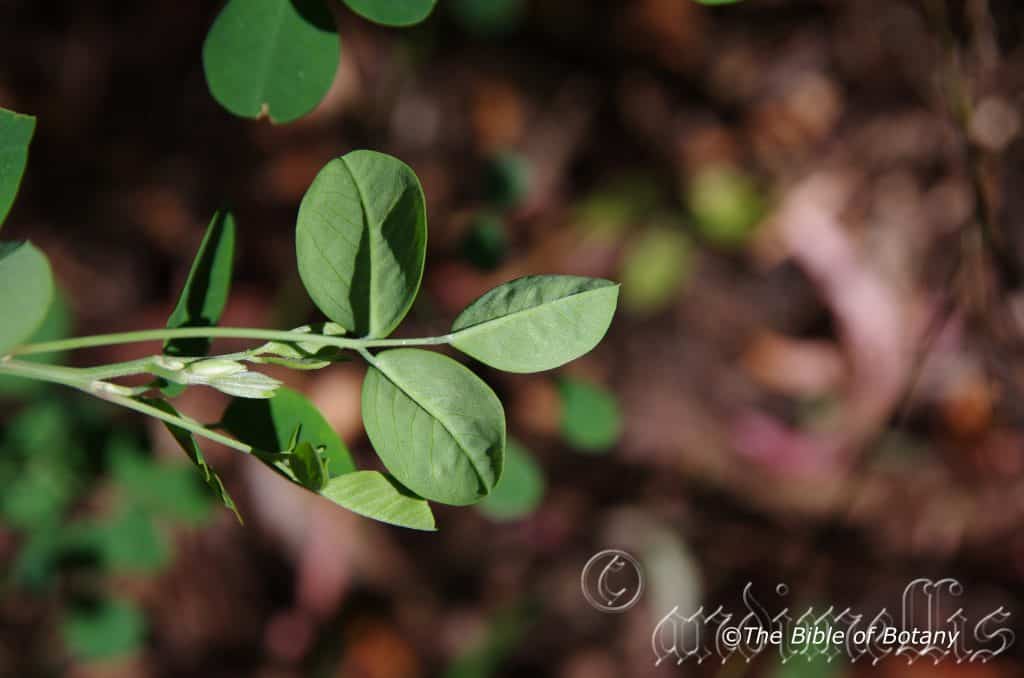
Washpool National Park NSW
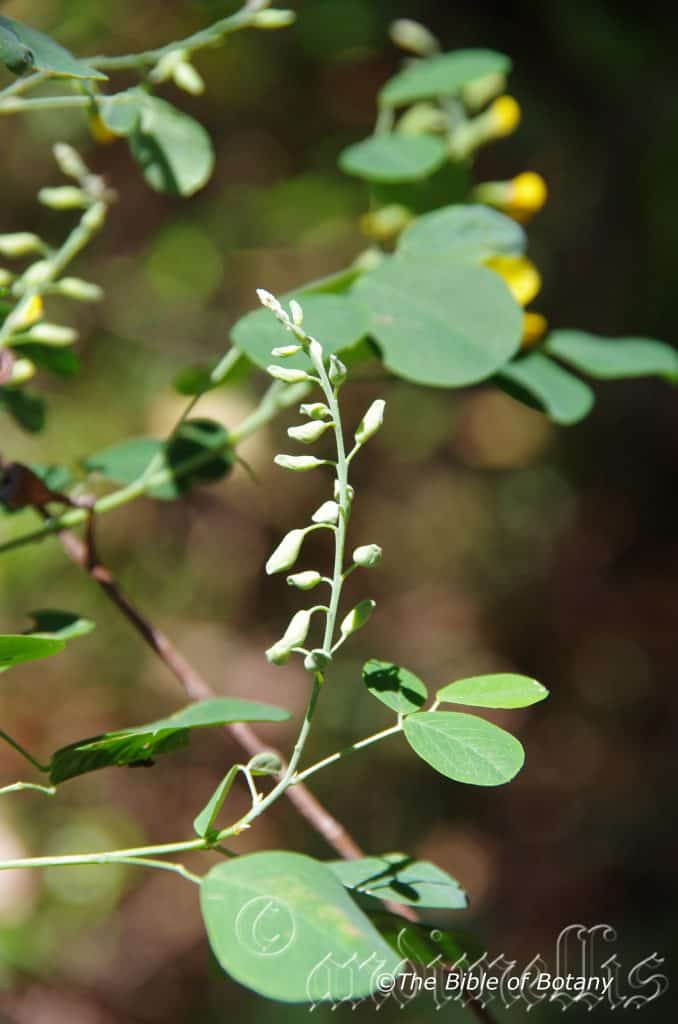
Washpool National Park NSW

National Botanic Gardens ACT

Washpool National Park NSW
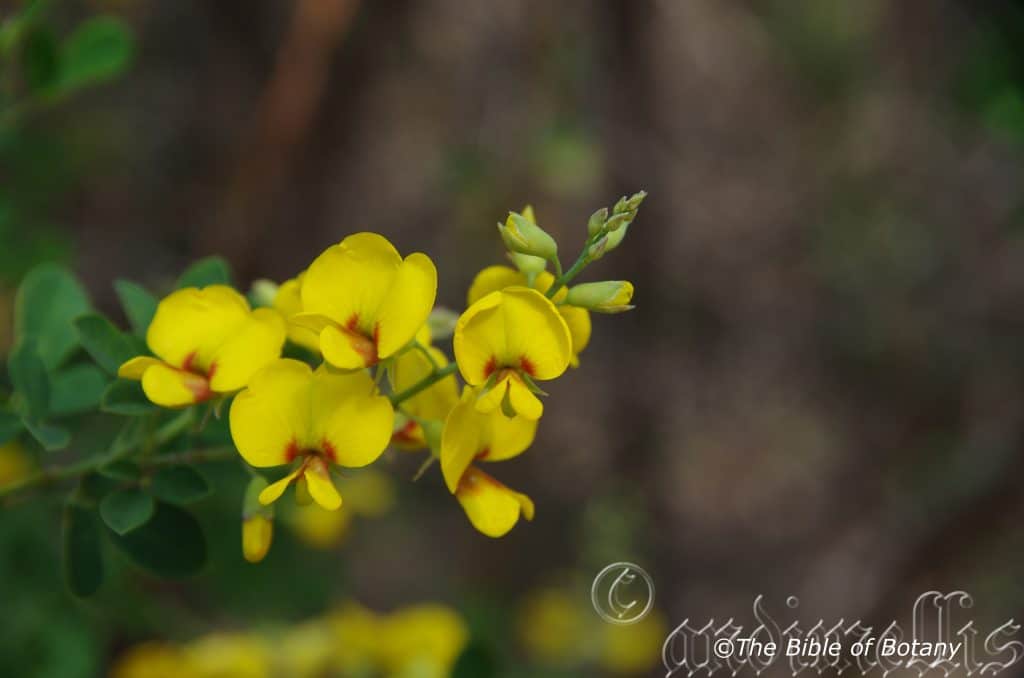
National Botanic Gardens ACT
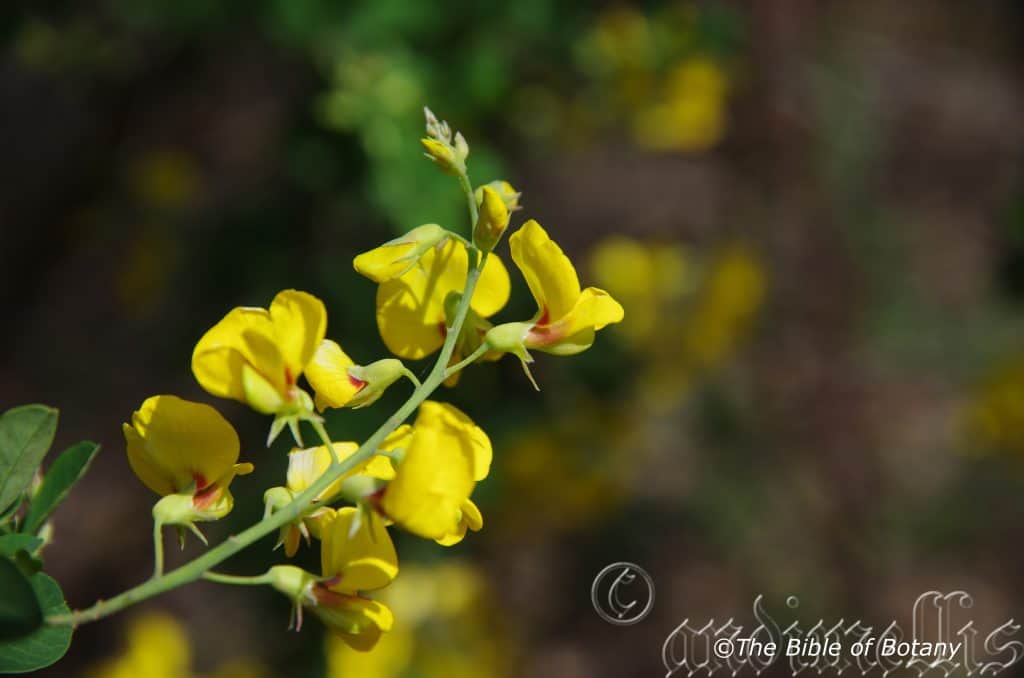
National Botanic Gardens ACT

Washpool National Park NSW
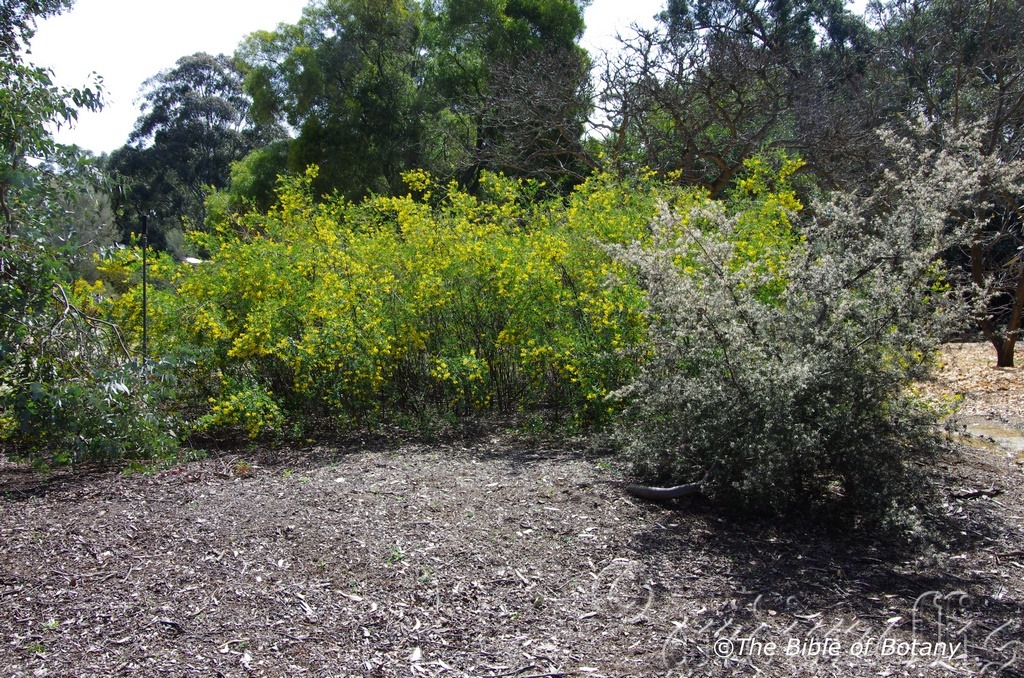
National Botanic Gardens ACT
Goodia lotifolia
Classification:
Unranked: Eudicots
Unranked: Rosids
Class: Magnoliidae
Superorder: Rossanae
Order: Fabales
Family: Fabaceae
Genus: Is named in honour of Peter Good; 17??-1803, who was a collector of plants from India, Pacific Islands and accompanied Robert brown to Australia.
Specie: From Lotos, which is Ancient Greek for the traditional name for legumes and Folium, which is Latin for foliage. It refers to flowers, which are typical of the legumes or Fabaceae family.
Sub Species:
Common Name: Golden Tip clover Tree.
Distribution:
Goodia lotifolia is found south and east from Mount Glorious in southern Queensland to Erica and west from Erica to Horsham then south west to the Naracoorte Coastal Plains in south eastern South Australia. It is mainly found on and east of the Great Dividing Range.
There are several isolated populations including Mount Lyndhurst, Melrose, Hundred of Coonarie Dudley Peninsular and southern Eyre Peninsular in South Australia and Nyngan in New South Wales.
It is found on the Bass Straight Islands and from Mount Cameron in north western Tasmania to Eagle Neck in the south east.
https://avh.ala.org.au/occurrences/search?taxa=Goodia+lotifolia#tab_mapView
Habitat Aspect Climate:
Goodia lotifolia prefers full sun to light dappled shade. It grows below tall trees to low trees, or in low moist scrub lands in sheltered valleys dry Eucalyptus forests, moist Eucalyptus forests, dry Eucalyptus woodlands or moist Eucalyptus woodlands. It is quick to recolonize disturbed land. The altitude ranges from 5 meters ASL to 850 meters ASL.
The temperatures range from minus 3 degrees in July to 38 degrees in January.
The rainfall ranges from lows of 300mm to an average of 2200mm annually.
Soil Requirements:
Goodia lotifolia prefers poor to fairly fertile sandy loams, to light gritty clays, medium clays, light silts to heavy silts or moist podsolics. The soils are usually derived from decomposed sandstones, granites or alluvial deposits. The soils pH ranges from 5pH to 7pH. It does not tolerate water logged soils. Non saline soils to moderately saline soils are tolerated.
Height & Spread:
Wild Plants: 2m to 4m by 2m to 3m.
Characteristics:
Goodia lotifolia’s stems are a brown to reddish-brown, dull to semi glossy. New growth and younger stems are olive green to blue-green and are glabrous to moderately covered in white pubescent hairs.
Thealternate leaves are trifoliate. The leaflets are obovate to broad elliptical and measure 10mm to 30mm in length by 8mm to 15mm in width. The bases are cuneate to broad cuneate while the apexes are broad acute with a minute mucronate tip. The concolourous laminas are mid soft, blue-green, glabrous to moderately covered in white pubescent hairs on the upper laminas while the lower laminas are paler. The laminas recurve slightly upwards from the mid vein to the margins and are flat or decurve slightly close to the apexes while the margins are entire. The mid blue-green petioles are glabrous to moderately covered in white pubescent hairs and measure 10mm to 20mm in length while the petiolules measure 0.5mm to 1.5mm in length.
The inflorescence are born racemes from the leaf axils. The calyxes measure 4mm to 6mm in length. The 5 dimorphic lobes are mid blue-green or purplish-red with the lower narrow triangular lobes measuring 4mm to 6mm in length while the upper lobes are shorter to about half the length of the lower lobes. The pedicels measure 4mm to 7mm in length.
The bright yellow standards are red to deep maroon, burgundy or almost black at the base, and have a retuse apex. The standards measure 11mm to 17mm in height by 16mm to 24mm in width. The bright yellow asymmetrical, oblong to clavate wings cover the upper section of the keel leaving the lower section exposed. The wings apexes are obtuse and measure 12mm to 16mm in length by 5mm to 7mm in height. The yellow to bright yellow keels measure 9mm to 12mm in length by 5mm to 6.5mm in height. The pedicels measure 2.5mm to 3mm in length.
The white filaments are fused to form a tube open on one side to allow the single free filament to be exposed. There are 3 to 5 usually 4.ovules in an ovary. The flowers appear from September to early December.
The fruits are an ovate to oblong flattened pods with a cuneate base and acute apex. The blue-green pods turn brown when ripe while the calyx is persistent at the base and the style is persistent at the apex. The pods measure 23mm to 28mm in length by 9mm to 12mmin width and 4mm to 5mm in thickness. The pods contain 3 to 5 round glabrous, smooth seeds that measure 2.5mm to 4.5mm in diameter. The aril is divided at the base and measures 1.5mm to 2mm in length and encircles the linear hilum.
Wildlife:
Goodia lotifolia is affected by white and pink scale which can lead to black smut in areas where bird life is reduced, chemicals are used or monocultures dominate the scene. It is an excellent plant for introducing nitrogen to the soils in depleted areas.
Cultivation:
Goodia lotifolia is a very beautiful small shrub which should be more widely grown in subtropical, semi-arid areas and temperate zones in Australia on both the east coast and west coast. In the west it should be grown with care as it may prove to be problem some if it escapes from cultivation to the wild. Plants should are not suitable to exposed situations as the larger stems are subject to snapping at the axils.
It is most suitable for small to large gardens with garden subjects usually grow 2.5 meters to 3 meters tall by 2.5meters to 3 meters in diameter. It can be lightly tip pruned but this is usually not warranted because of its dense habit of growth.
In Native gardens they can be used for bird attraction, hedges or screens. A bend in a path can break up straight lines or they can be used in raised garden beds to force a change in direction. If it is surrounded by small shrubs with fine pale green leaves which flower at the same time of the year the deep red or violet flowers would be a strong contrast or white, lilacs or pink flowers for a softer warmer more relaxing approach. If plants with large flowers are used ensure the flowering times do not overlap or it is placed in the background.
Use them as a midground plant with taller plants as the backdrop. Most red flowering Grevillea and this one is no exception look great when mixed with Goodia lotifolia. Try prostrate Grevillea acanthifolia for something different and strong.
Goodia lotifolia self-seeds under favourable conditions so can be used to rejuvenate the area every 4.or 5 years.
Propagation:
Seeds: Goodia lotifolia seeds can be planted directly into a seed raising mix. Cover fresh seeds with 5mm of fine sand and keep moist not wet. Place the tray in a warm sunny position. When the seedlings are 25mm to 50mm tall, prick them out and plant them into 50mm native tubes using a good organic mix. The seedlings are easy to handle and very few losses will occur.
Once the seedlings reach 150mm to 200mm in height, nip the tips out before planting them out into their permanent position. For mass plantings plant them at of 2.5 meter to 4.meter centers.
Fertilize using seaweed, fish emulsion or organic chicken pellets soaked in water on an alternate basis. Fertilize every two months until the plants are established then twice annually in early September or March to maintain health, vitality and better flowering. The Chicken pellets are particularly good as they have a tendency to neutralize the soil.
Further Comments from Readers:
“Hi reader, it seems you use The Bible of Botany a lot. That’s great as we have great pleasure in bringing it to you! It’s a little awkward for us to ask, but our first aim is to purchase land approximately 1,600 hectares to link several parcels of N.P. into one at The Pinnacles NSW Australia, but we need your help. We’re not salespeople. We’re amateur botanists who have dedicated over 30 years to saving the environment in a practical way. We depend on donations to reach our goal. If you donate just $5, the price of your coffee this Sunday, We can help to keep the planet alive in a real way and continue to bring you regular updates and features on Australian plants all in one Botanical Bible. Any support is greatly appreciated. Thank you.”
In the spirit of reconciliation we acknowledge the Bundjalung, Gumbaynggirr and Yaegl and all aboriginal nations throughout Australia and their connections to land, sea and community. We pay our respect to their Elders past, present and future for the pleasures we have gained.

LBG Lismore NSW

LBG Lismore NSW

LBG Lismore NSW

LBG Lismore NSW
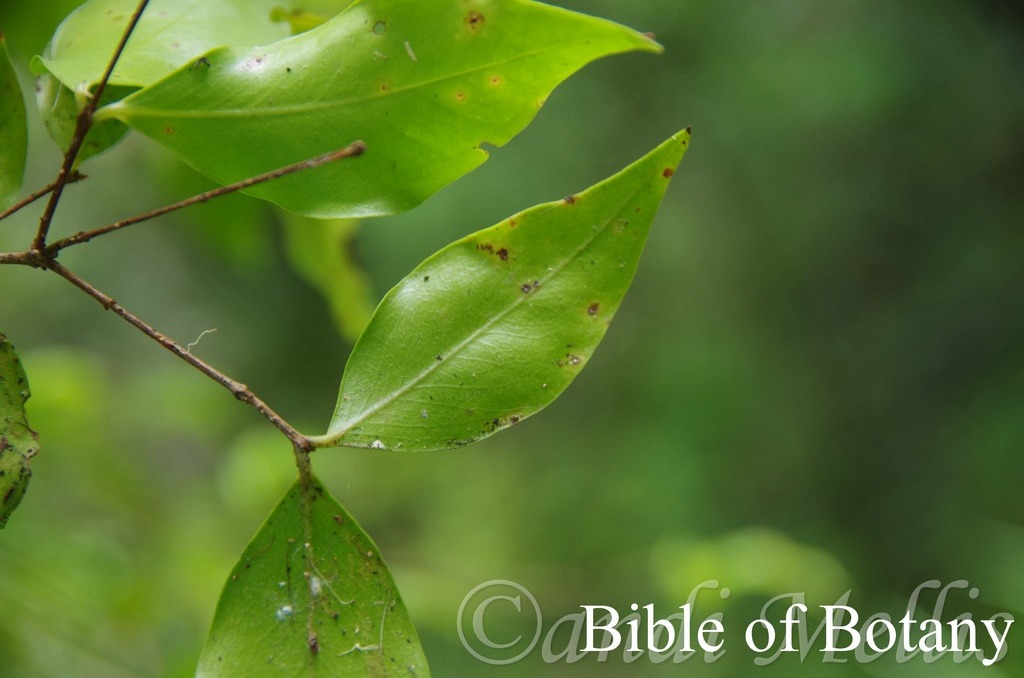
LBG Lismore NSW
Gossia acmenoides
Classification:
Unranked: Eudicots
Unranked: Rosids
Order: Myrtales
Family: Myrtaceae
Genus: Is named in honour of Wayne Keith Goss; 1951-2014, who was the Queensland Premier who contributed extensively to conservation and arts in the state.
Specie: From Acmenae, which is Ancient Greek for the beautiful nymph of Venus and Eîdos/Oides, which is Ancient Greek for alike or similar to. It refers to plants, usually the leaves, which resemble those of the Acmena genus.
Sub Species:
Common Name: Scrub Ironwood.
Distribution:
Gossia acmenoides is found south from Granite Creek State Forest in central coastal Queensland to Woolongong in central coastal New South Wales. There are 2 disjunct populations further north at Edgecumbe Bay near Bowen and Eungella National Park west of Mackay. It is found on and east of the Great Dividing Range except where it crosses the Range and extends to the Wonduf Range National Park west of Toowoomba.
https://avh.ala.org.au/occurrences/search?taxa=Gossia+acmenoides#tab_mapView
Habitat Aspect Climate:
Gossia acmenoides prefers full sun, light dappled shade to medium shade. It usually grows adjacent to dry rainforests, gallery forests or riparian zones or at times in moist schlerophyll forests adjacent to well-developed rainforests. The altitude ranges from 20 meters ASL to 850 meters ASL.
The temperatures range from minus 8 degrees in July to 36 degrees in January.
The rainfall ranges from lows of 700mm to an average of 2200mm annually.
Soil Requirements:
Gossia acmenoides prefers better quality fertile sandy loams, to light gritty clays, medium clays and alluvial silty flats. The soils are usually derived from decomposed brown basalt, black basalt, metamorphic rocks, granites or reddish sandstones. The soils pH ranges from 5pH to 6pH are preferred. It does not tolerate water logged soils. Non saline soils to moderately saline soils are tolerated.
Height & Spread:
Wild Plants: 8m to 18m by 6m to 10m.
Characteristics:
Gossia acmenoides often grows as a multi trunked small trees with brown, pinkish-brown or pinkish-grey mottled, smooth bark to the small branchlets. The decorticating bark is shed in patches throughout the year. The reddish branchlets turn deep grass-green to deep green near the apexes and are glabrous or covered in caducous white silky lanata hairs. The new growth is mid pinkish red to mid pinkish maroon.
The opposite leaves are ovate to elliptical and measure 25mm to 75mm in length by 10mm to 35mm in width. The grass-green petioles measure 2mm to 4mm in length. The bases are cuneate while the apexes are accuminata to broad acute. The discolourous deep grass-green deep green laminas are glabrous and semi glossy to glossy on the upper lamina while the lower laminas are slightly paler and dull. The laminas recurve upwards from the mid vein to the margins and decurve downwards near the apexes while the margins are entire. The mid vein and lateral veins are prominent on the lower laminas while the mid vein is slightly prominent near the base and the lateral veins are faintly visible. The oil glands are numerous and visible to the naked eye.
The inflorescence are born singly or more often 2 to 4.individual flowers on a cyme from a short lateral axil. The hypanthia are deep green to deep green with a purple tinge, glabrous and measures 1.5mm to 12mm in length by 1.5mm to 2mm in diameter. The 5 deep grass-green, glossy, triangular sepals measure 1.5mm to 2mm in length. The 5 white, oblong petals decurve on the apical half back to the petiole. The apexes are acute to obtuse, while the margins are entire and glabrous or are covered in minute, white, ciliate hairs and measure 3mm to 6mm in length by 2.5mm to 3.5mm in width. The pedicels measure 5mm to 12mm in length.
The 25, 30, 35 or 40 semi erect, white filaments measure 5mm to 6.5mm in length pastel yellow to pale yellow anthers measure 0.5mm to 0.8mm in diameter. The stout, white erect pistil measures 4mm to 5mm in length. The ovary is 2 locular. The flowers appear from late November to early March.
The fruits are obovoidal fleshy berries. The green berries turn deep purple-black to black and are semi glossy when ripe. The sepals are persistent on the ripe berries which measure 5mm to 7mm in length by 4mm to 6mm in diameter. The berries contain many finely pitted, glossy, tan seeds which measure 0.7mm to 1mm in diameter.
Wildlife:
Gossia acmenoides dense foliage and proliferation of small flowers and fruits are great attractions and safe zone for smaller honeyeaters like the Silver Eyes (Zosterops lateralis), Yellow Face Honeyeater (Lichenostomus chrysops), Brown Honeyeater (Lichmera indistincta) and the eastern Spinebill (Acanthorhynchus tenuirostris) which eat the fruit and nest in the trees.
Cultivation:
Gossia acmenoides is a very beautiful small tree which should be more widely grown in tropical, sub-tropical, semi-arid areas and temperate zones in Australia on both the east coast and west coast. It is most suitable for small to large gardens. Garden subjects usually grow 10 meters to 12 meters in height by 6meters to 9 meters in diameter.
In formal gardens they break up the foliage of English type gardens without being overpowering. They accept light pruning at the end of the flowering season and respond within a few weeks with new flushes of vivid glossy green leaves.
In Native gardens they can be used for bird attraction with the only extra being the supply of a safe water point for small birds. The down side is that it is an easy tree for cats to climb and descend from.
Use them in the back ground plant with taller trees as the backdrop in the bush or as the main feature in a smaller garden. It is also a very good starter tree for a small rainforest garden with the bark being very attractive.
The trees make very good accent trees in front of low set commercial, industrial sheds or 1 or 2 story school buildings where they will break up hard rigid architectural lines. It will give warmth and breadth to buildings in winter and cool them in the summer. The trees have a fairly small usually non-invasive root system. In front of high rise buildings or as street and avenue trees they give balance especially where they could be grown in curves meandering along the nature strip.
Propagation:
Seeds: The seeds can be planted directly into a seed raising mix. Cover fresh seeds with 2mm of fine sand and keep moist not wet. Place the tray in a warm sunny position beneath 30mm shade cloth. When the seedlings are 25mm to 50mm tall, prick them out and repot them into 50mm native tubes using a good organic mix. The seedlings are easy to handle and very few losses will occur.
Once the seedlings reach 150mm to 200mm in height, nip the tips out before planting them out into their permanent position. For mass plantings plant them at of 6 meter to 15 meter centers depending on whether it is to be used for a rainforest or park scene.
The altitude ranges from 5 meters ASL to 1350 meters ASL.
Fertilize using seaweed, fish emulsion or organic chicken pellets soaked in water on an alternate basis. Fertilize every two months until the plants are established then twice annually in early September or March to maintain health, vitality and better flowering. The chicken pellets are particularly good as it is usually slightly alkaline.
Further Comments from Readers:
“Hi reader, it seems you use The Bible of Botany a lot. That’s great as we have great pleasure in bringing it to you! It’s a little awkward for us to ask, but our first aim is to purchase land approximately 1,600 hectares to link several parcels of N.P. into one at The Pinnacles NSW Australia, but we need your help. We’re not salespeople. We’re amateur botanists who have dedicated over 30 years to saving the environment in a practical way. We depend on donations to reach our goal. If you donate just $5, the price of your coffee this Sunday, We can help to keep the planet alive in a real way and continue to bring you regular updates and features on Australian plants all in one Botanical Bible. Any support is greatly appreciated. Thank you.”
In the spirit of reconciliation we acknowledge the Bundjalung, Gumbaynggirr and Yaegl and all aboriginal nations throughout Australia and their connections to land, sea and community. We pay our respect to their Elders past, present and future for the pleasures we have gained.
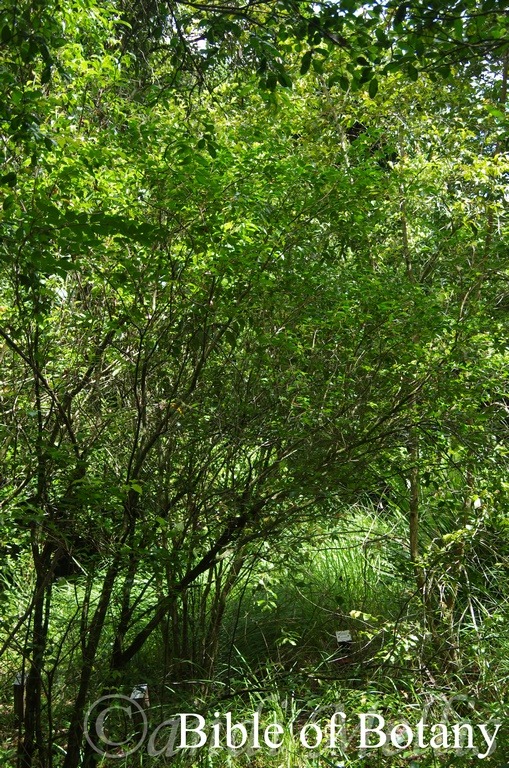
LBG Lismore NSW
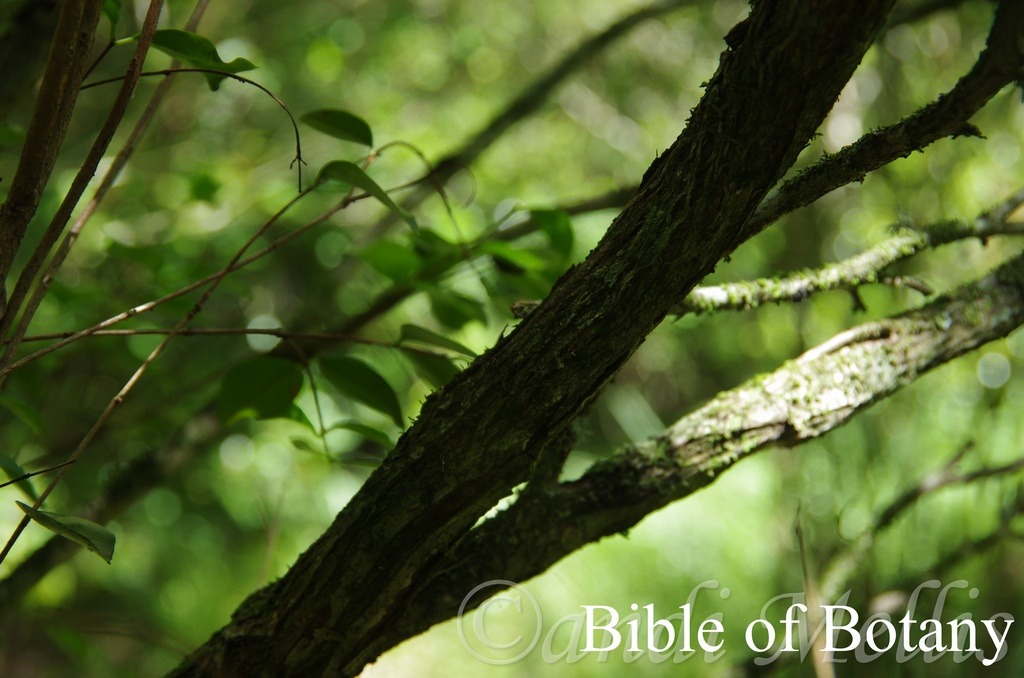
LBG Lismore NSW

LBG Lismore NSW
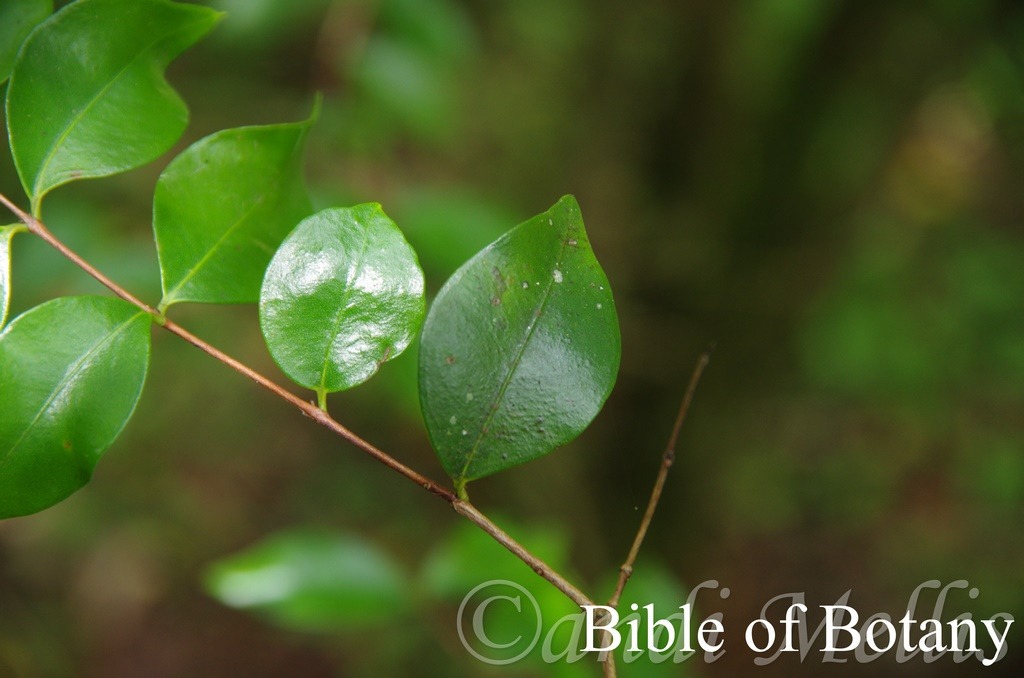
LBG Lismore NSW

LBG Lismore NSW
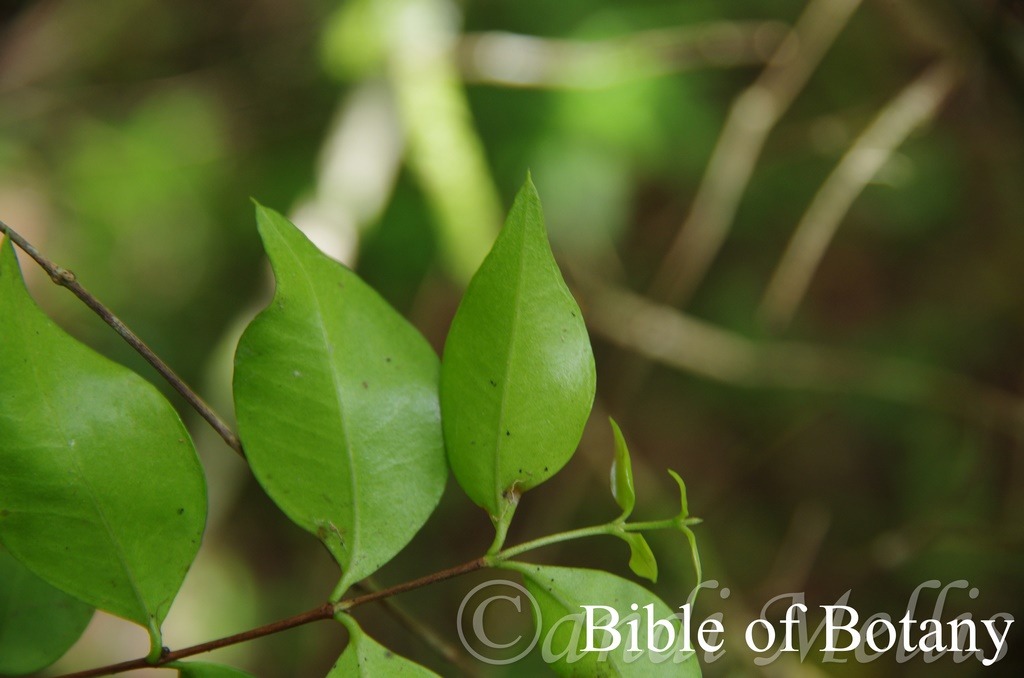
LBG Lismore NSW
Gossia bidwillii
Classification:
Unranked: Eudicots
Unranked: Rosids
Order: Myrtales
Family: Myrtaceae
Genus: Is named in honour of Wayne Keith Goss; 1951-2014, who was the Queensland Premier who contributed extensively to conservation and arts in the state.
Specie: Is named in honour of John Carne Bidwill, 1815-1853, who was a British born New Zealander who took a strong interest in New Zealand alpine plants.
Sub Species:
Common Name: Scrub Ironwood, Python Tree, Smooth Barked Ironwood, Lignum, Lignum-vitae or Python Tree.
Distribution:
Gossia bidwillii is found south from Lakefield National Park in coastal far north eastern Queensland to Port Macquarie in central coastal New South Wales. It is found on the western plains, on and east of the Great Dividing Range to the coast and off shore Islands.
https://avh.ala.org.au/occurrences/search?taxa=Gossia+bidwillii#tab_mapView
Habitat Aspect Climate:
Gossia bidwillii prefers full sun, light dappled shade or at times medium shade. It usually grows adjacent to drier types of rainforests or gallery forests abutting schlerophyll forests. The altitude ranges from 5 meters ASL to 980 meters ASL.
The temperatures range from 2 degrees in July to 36 degrees in January.
The rainfall ranges from lows of 700mm to an average of 2200mm annually.
Soil Requirements:
Gossia bidwillii prefers better quality fertile sandy loams, to light gritty clays, medium clays and alluvial silty flats. The soils are usually derived from decomposed brown basalt, black basalt, metamorphic rocks, granites or reddish sandstones. The soils pH ranges from 5pH to 6pH are preferred. It does not tolerate water logged soils. Non saline soils to moderately saline soils are tolerated.
Height & Spread:
Wild Plants: 8m to 25m by 6m to 10m.
Characteristics:
Gossia bidwillii often grows as a multi trunked smaller tree with a brown blotched green, smooth trunk. The small glabrous branchlets are mid green.
The opposite ovate to elliptical leaves measure 30mm to 90mm in length by 15mm to 45mm in width. The grass-green petioles measure 2mm to 4mm in length. The bases are broad cuneate while the apexes are acuminate to broad acute. The discolourous, deep green laminas are glabrous and semi glossy to glossy on the upper lamina while the lower lamina is slightly paler and semi glossy. The laminas recurve upwards from the mid vein to the margins and decurve downwards near the apexes while the margins are entire. The mid vein and lateral veins are prominent on the lower lamina, while the mid vein is slightly prominent near the base and the lateral veins are faintly visible. The oil glands are numerous and visible to the naked eye. The terete petiole has a small depression on the upper section and measures 2mm to 8mm in length.
The monecious inflorescences are born in axillary raceme-like inflorescences. The glabrous or glabrescent hypanthia are deep green to deep green with a purple tinge. The 5 deep grass-green, glossy, triangular sepals measure 0.5mm to 1.5mm in length. The 5 white, oblong/ovate petals are finely ciliate and measure 3mm to 4mm in length. The apexes are obtuse, while the margins are entire and glabrous The pedicels measure 5mm to 10mm in length. The 2 locular ovary is glabrous to sparsely covered in fine white hairs, while the style measure 2mm to 5mm in length.
The 20 plus erect stamens have white filaments, which measure 2.5mm to 5mm in length. The white basifixed anthers measure 0.5mm to 0.6mm in diameter. The flowers appear from September to November.
The fruits are obovoidal fleshy nuts. The green nuts turn black and are semi glossy when ripe. The sepals are persistent at the apex of the ripe nuts which measure 4mm to 7mm in in diameter.
Wildlife:
Gossia bidwillii dense foliage and proliferation of small flowers and fruits are great attractions and safe zone for smaller honeyeaters like the Silver Eyes (Zosterops lateralis), Yellow Face Honeyeater (Lichenostomus chrysops), Brown Honeyeater (Lichmera indistincta) and the eastern Spinebill (Acanthorhynchus tenuirostris) which eat the fruit and nest in the trees.
Cultivation:
Gossia bidwillii is a rather beautiful small tree which should be more widely grown in tropical, sub-tropical, semi-arid areas and warm temperate zones in Australia on both the east coast and west coast. It is most suitable for small to large gardens. Garden subjects usually grow 10 meters to 15 meters in height by 6 meters to 9 meters in diameter.
In formal gardens it will break up the foliage of English type gardens without being overpowering. It will accept light pruning at the end of the flowering season and respond within a few weeks with new flushes of vivid glossy green leaves.
In Native gardens it can be used for bird attraction with the only extra being the supply of a safe water point for small birds. The down side is that it is an easy tree for cats to climb and descend from.
Use it as a foreground plant with taller trees as the backdrop in the bush or as the main feature in a smaller garden. It is also a very good starter tree for a small rainforest garden with the bark being very attractive.
Propagation:
Seeds: The seeds may be difficult to come by but fresh seed should be sown directly into a seed raising mix. Cover fresh seeds with 5mm of fine sand and keep moist not wet. Place the tray in a warm sunny position beneath 30% shade cloth. When the seedlings are 25mm to 50mm tall, prick them out and repot them into 50mm native tubes using a good organic mix. The seedlings are easy to handle and very few losses will occur.
Once the seedlings reach 150mm to 200mm in height, nip the tips out before planting them out into their permanent position if a multi trunk large shrub is required. For mass plantings plant them at of 6 meter to 15 meter centers depending on whether it is to be used for a tree or shrub.
Fertilize using seaweed, fish emulsion or organic chicken pellets soaked in water on an alternate basis. Fertilize every two months until the plants are established then twice annually in early September or March to maintain health, vitality and better flowering. The chicken pellets are particularly good as it is usually slightly alkaline.
Further Comments from Readers:
“Hi reader, it seems you use The Bible of Botany a lot. That’s great as we have great pleasure in bringing it to you! It’s a little awkward for us to ask, but our first aim is to purchase land approximately 1,600 hectares to link several parcels of N.P. into one at The Pinnacles NSW Australia, but we need your help. We’re not salespeople. We’re amateur botanists who have dedicated over 30 years to saving the environment in a practical way. We depend on donations to reach our goal. If you donate just $5, the price of your coffee this Sunday, We can help to keep the planet alive in a real way and continue to bring you regular updates and features on Australian plants all in one Botanical Bible. Any support is greatly appreciated. Thank you.”
In the spirit of reconciliation we acknowledge the Bundjalung, Gumbaynggirr and Yaegl and all aboriginal nations throughout Australia and their connections to land, sea and community. We pay our respect to their Elders past, present and future for the pleasures we have gained.
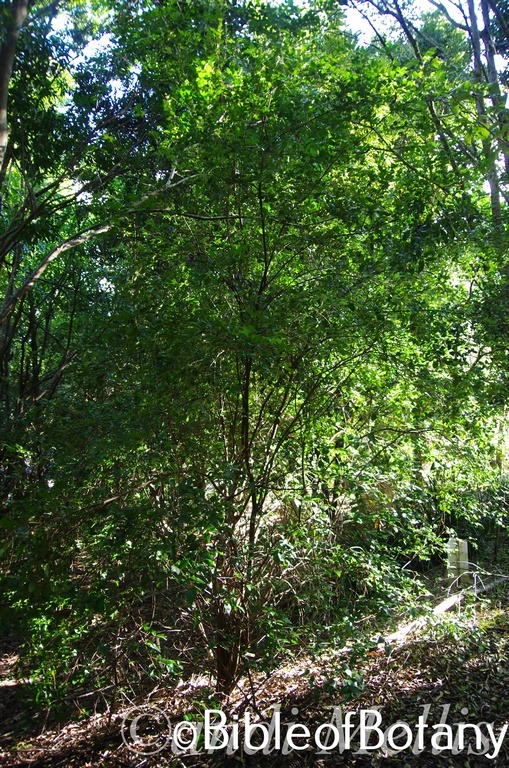
LBG Lismore NSW

LBG Lismore NSW
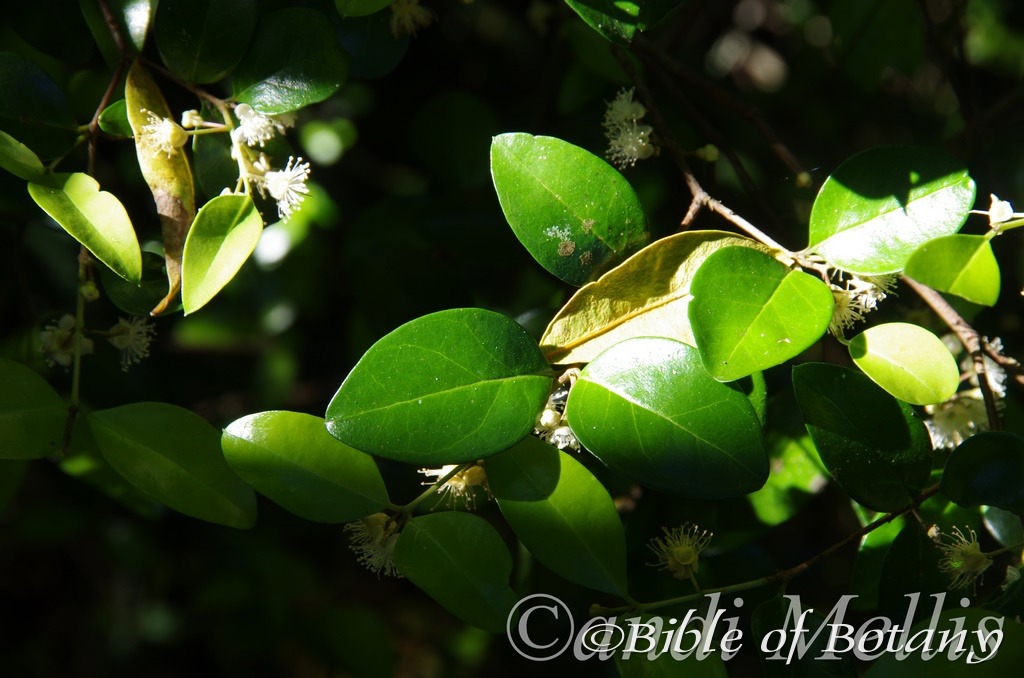
Richmond River NSW
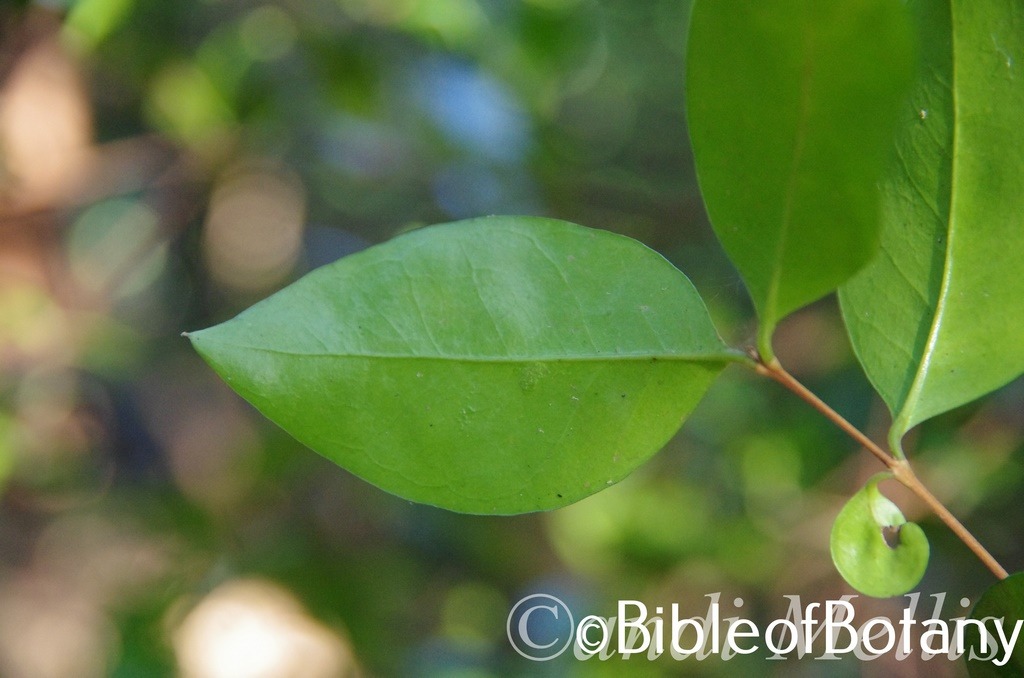
LBG Lismore NSW

Richmond River NSW

Richmond River NSW
Gossia fragrantissima
Classification:
Unranked: Eudicots
Unranked: Rosids
Order: Myrtales
Family: Myrtaceae
Genus: Is named in honour of Wayne Keith Goss; 1951-2014, who was the Queensland Premier who contributed extensively to conservation and arts in the state.
Specie: From Fragrant, which is for perfumed and Issima, which is for the superlative. It refers to flowers, or fruits which are extremely or the most fragrant species in the genus.
Sub Species:
Common Name: Sweet Myrtle or Small leaf Myrtle.
Distribution:
Gossia fragrantissima is found south from north of Caboolture in coastal southern Queensland to Lismore north eastern coastal New South Wales. It is found east of the Great Dividing Range to the coast.
https://avh.ala.org.au/occurrences/search?taxa=Gossia+fragrantissima#tab_mapView
Habitat Aspect Climate:
Gossia fragrantissima prefers full sun, light dappled shade to medium shade. It usually grows in moist sub tropical rainforests. The altitude ranges from 20 meters ASL to 650 meters ASL.
The temperatures range from 4 degrees in July to 34 degrees in January.
The rainfall ranges from lows of 700mm to an average of 1600mm annually.
Soil Requirements:
Gossia fragrantissima prefers better quality fertile sandy loams, to light gritty clays, medium clays and alluvial silty flats. The soils are usually derived from decomposed brown basalt, black basalt, metamorphic rocks, granites or reddish sandstones. The soils pH ranges from 5pH to 6pH are preferred. It does not tolerate water logged soils. Non saline soils to moderately saline soils are tolerated.
Height & Spread:
Wild Plants: 4m to 10m by 4m to 5m.
Characteristics:
Gossia fragrantissima often grows as a multi trunked small tree with rough brown, pinkish-brown fissured bark to the small branchlets. The reddish branchlets turn deep grass-green near the apexes and are glabrous or sparsely covered in short brown hirsute hairs.
The opposite to subopposite leaves are broad-lanceolate to elliptic and measure 15mm to 50mm in length by 8mm to 25mm in width. The grass-green glabrous petioles measure 1mm to 4mm in length. The bases are broad cuneate to rounded while the apexes are broad acute or obtuse with an apiculate tip. The discolourous laminas are deep green and glossy on the upper lamina, while the lower lamina is paler and dull. The laminas recurve upwards from the mid vein then decurve to the margins and from the bases to the apexes, while the margins are entire. The mid vein and lateral veins are prominent on the lower laminas while the mid vein is slightly prominent near the base and the lateral veins are faintly visible on the upper lamina. The oil glands are numerous and visible to the naked eye.
The monecious 4 merous inflorescences are born axillary, singularly or in small clusters or occasionally on raceme. The hypanthia is sparsely to moderately covered in white pilose hairs. The 5 white sepals are ciliate and measure 1.5mm to 2.5mm in length. The 4 white, oblong/ovate petals are finely ciliate and measure 2mm to 3mm in length. The apexes are broad acute to obtuse, while the margins are entire. The glabrous pedicels measure 2mm to 7mm in length. The 2 locular ovary is glabrous to sparsely covered in fine white hairs, while the style measure 3mm to 4mm in length.
The 20 plus erect stamens have white filaments, which measure 2.5mm to 3mm in length. The white basifixed anthers measure 0.5mm to 0.6mm in diameter. The flowers appear from late November to early March.
The fruits are obovoidal fleshy nuts. The green berries turn deep yellow to orange and are semi glossy when ripe. The sepals are persistent at the apex when ripe which measure 4mm to 6mm in length by 5mm to 7mm in diameter.
Wildlife:
Gossia fragrantissima dense foliage and proliferation of small flowers and fruits make it a great attraction and safe zone for smaller honeyeaters like the Silver Eyes (Zosterops lateralis), Yellow Face Honeyeater (Lichenostomus chrysops), Brown Honeyeater (Lichmera indistincta) and the eastern Spinebill (Acanthorhynchus tenuirostris) which eat the fruit and nest in the trees.
Cultivation:
Gossia fragrantissima is a very beautiful small tree which should be more widely grown in tropical, sub-tropical, semi-arid areas and temperate zones in Australia on both the east coast and west coast. It is most suitable for small to large gardens. Garden subjects usually grow 4 meters to 8 meters in height by 4 meters to 5 meters in diameter.
In formal gardens it will break up the foliage of English type gardens without being overpowering. It will accept light pruning at the end of the flowering season and respond within a few weeks with new flushes of vivid glossy green leaves.
In Native gardens it can be used for bird attraction with the only extra being the supply of a safe water point for small birds. The down side is that it is an easy tree for cats to climb and descend from.
Use it as the fore ground plant with taller trees as the backdrop in the bush or as the main feature in a smaller garden. It is also a very good starter tree for a small rainforest garden with the bark being very attractive.
The trees make very good accent trees in front of low set commercial, industrial sheds or 1 or 2 story school buildings where they will break up hard rigid architectural lines. It will give warmth and breadth to buildings in winter and cool them in the summer. The trees have a fairly small usually non-invasive root system. In front of high-rise buildings or as street and avenue trees they give balance especially where it could be grown in curves meandering along the nature strip.
Propagation:
Seeds: The seeds can be planted directly into a seed raising mix. Cover fresh seeds with 2mm of fine sand and keep moist not wet. Place the tray in a warm sunny position beneath 30% shade cloth. When the seedlings are 25mm to 50mm tall, prick them out and repot them into 50mm native tubes using a good organic mix. The seedlings are easy to handle and very few losses will occur.
Once the seedlings reach 150mm to 200mm in height, nip the tips out before planting them out into their permanent position. For mass plantings plant them at of 6 meter to 15 meter centers depending on whether it is to be used for a rainforest or park scene.
The altitude ranges from 5 meters ASL to 1350 meters ASL.
Fertilize using seaweed, fish emulsion or organic chicken pellets soaked in water on an alternate basis. Fertilize every two months until the plants are established then twice annually in early September or March to maintain health, vitality and better flowering. The chicken pellets are particularly good as it is usually slightly alkaline.
Further Comments from Readers:
“Hi reader, it seems you use The Bible of Botany a lot. That’s great as we have great pleasure in bringing it to you! It’s a little awkward for us to ask, but our first aim is to purchase land approximately 1,600 hectares to link several parcels of N.P. into one at The Pinnacles NSW Australia, but we need your help. We’re not salespeople. We’re amateur botanists who have dedicated over 30 years to saving the environment in a practical way. We depend on donations to reach our goal. If you donate just $5, the price of your coffee this Sunday, We can help to keep the planet alive in a real way and continue to bring you regular updates and features on Australian plants all in one Botanical Bible. Any support is greatly appreciated. Thank you.”
In the spirit of reconciliation we acknowledge the Bundjalung, Gumbaynggirr and Yaegl and all aboriginal nations throughout Australia and their connections to land, sea and community. We pay our respect to their Elders past, present and future for the pleasures we have gained.
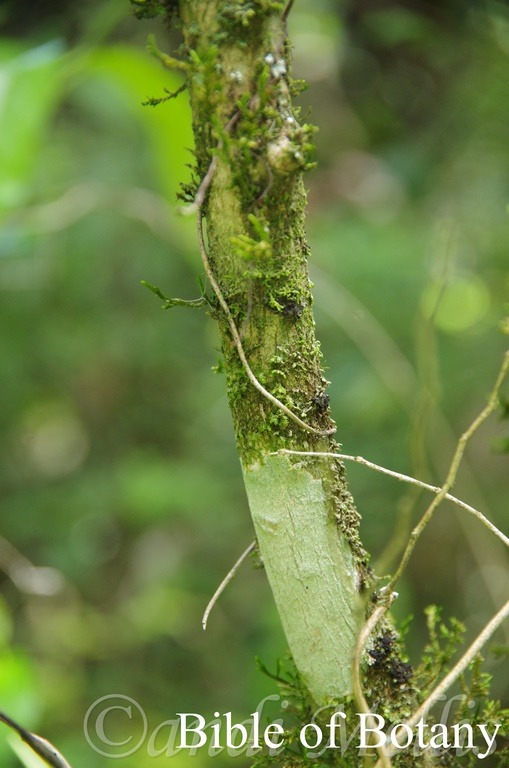
LBG Lismore NSW
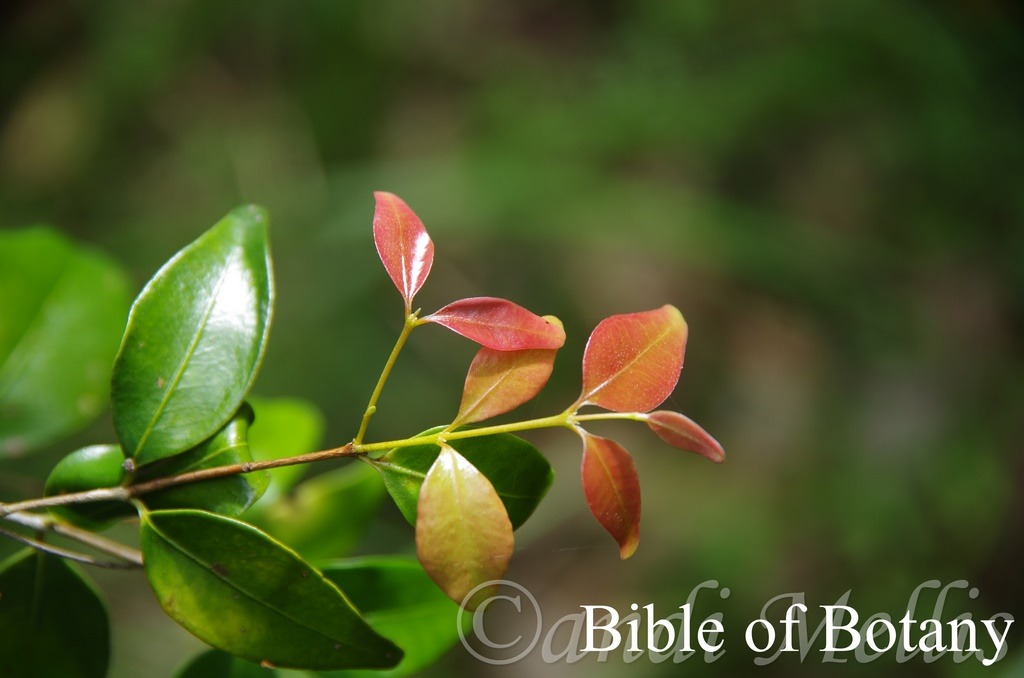
LBG Lismore NSW
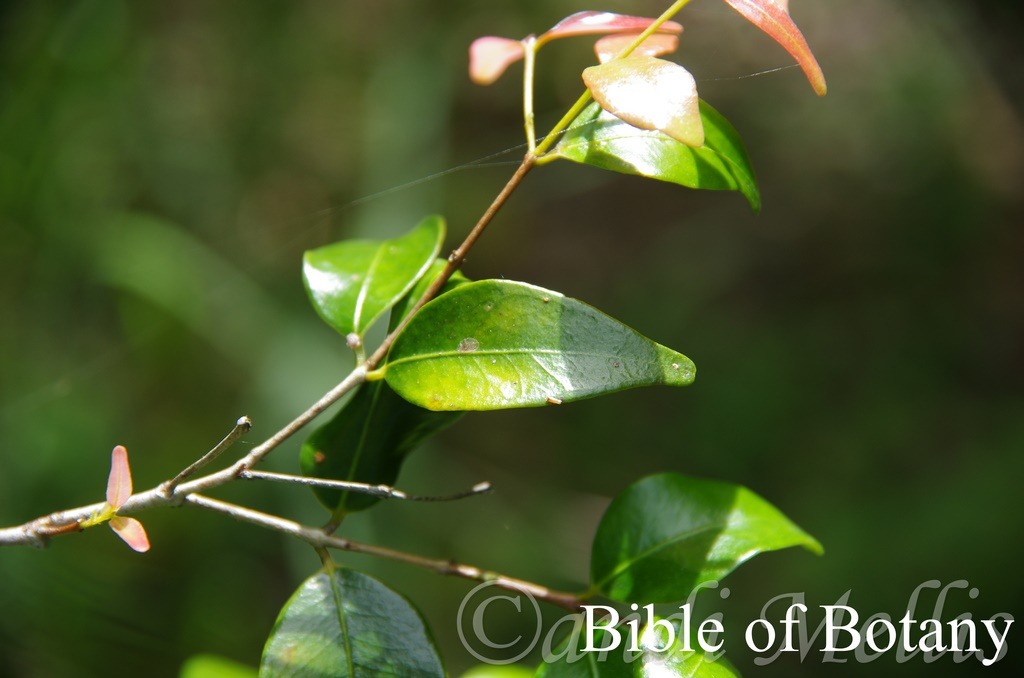
LBG Lismore NSW
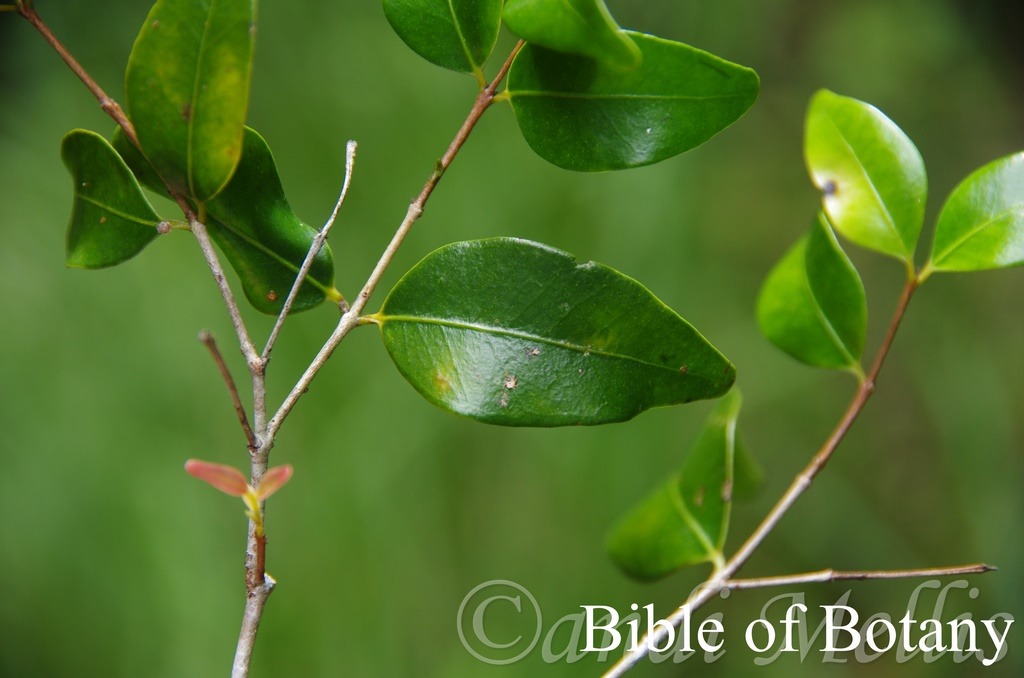
LBG Lismore NSW
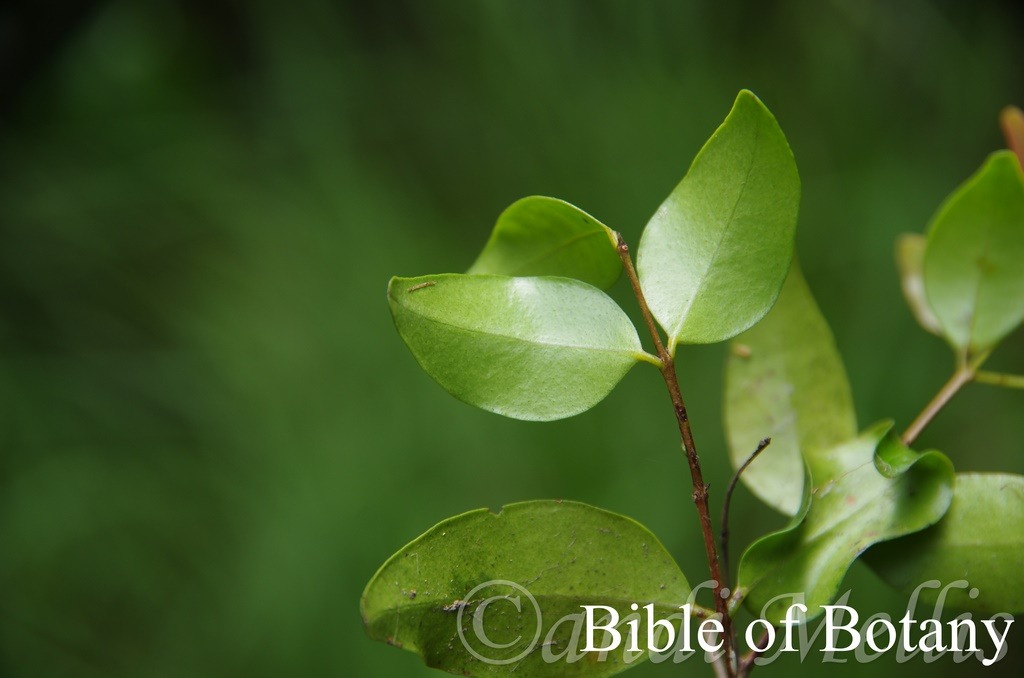
LBG Lismore NSW
Gossia hillii
Classification:
Unranked: Eudicots
Unranked: Rosids
Order: Myrtales
Family: Myrtaceae
Genus: Is named in honour of Wayne Keith Goss; 1951-2014, who was the Queensland Premier who contributed extensively to conservation and arts in the state.
Specie: Is named in honour of Leslie J. Hill; 1908-2003, who was a botanical philanthropist and collector of South African succulents.
Sub Species:
Common Name: Hill’s Ironwood, Hill’s Lignum or Scaly Myrtle.
Distribution:
Gossia hillii is found south from Whypalla state Forest in far north eastern coastal Queensland to Dorrigo in far north eastern New South Wales. It is found on and east of the Great Dividing Range to the coast.
https://avh.ala.org.au/occurrences/search?taxa=Gossia+hillii#tab_mapView
Habitat Aspect Climate:
Gossia hillii prefers full sun, light dappled shade to medium shade. It usually grows adjacent to dry rainforests, gallery forests or riparian zones or at times in moist schlerophyll forests adjacent to well-developed rainforests. The altitude ranges from 20 meters ASL to 850 meters ASL.
The temperatures range from minus 8 degrees in July to 36 degrees in January.
The rainfall ranges from lows of 700mm to an average of 2200mm annually.
Grows in subtropical and dry rainforest, inland coastal ranges
Soil Requirements:
Gossia hillii prefers better quality fertile sandy loams, to light gritty clays, medium clays and alluvial silty flats. The soils are usually derived from decomposed brown basalt, black basalt, metamorphic rocks, granites or reddish sandstones. The soils pH ranges from 5pH to 6pH are preferred. It does not tolerate water logged soils. Non saline soils to moderately saline soils are tolerated.
Height & Spread:
Wild Plants: 8m to 12m by 5m to 6m.
Characteristics:
Gossia hillii often grows as a multi trunked small crooked trees rather than upright with deep, hard brown, bark to the small glabrous green branchlets.
The opposite leaves are narrow ovate to elliptical and measure 25mm to 60mm in length by 12mm to 25mm in width. The grass-green petioles measure 2mm to 4mm in length. The bases are rounded while the apexes are broad acute. The discolourous deep green laminas are glabrous and semi glossy to glossy on the upper lamina while the lower laminas are paler and semi glossy. The laminas recurve upwards from the mid vein to the margins and decurve downwards near the apexes while the margins are entire. The mid vein and lateral veins are prominent on the lower laminas while the mid vein is prominent on the upper lamina especially on the base half, while the lateral veins are faintly visible. The oil glands are numerous and not visible to the naked eye. The terete petiole is channelled on the upper surface and measures 1mm to 3mm in length.
The monecious, inflorescences are born axillary, solitary or with 2 to 4 individual flowers in small clusters or occasionally on raceme. The hypanthia is sparsely to moderately covered in white appressed hairs. The 5 white sepals are sparsely to moderately covered in white pubescent hairs abaxially, while the margins are ciliate and measure 1mm to 2mm in length. The 4 white, oblong/ovate petals are finely ciliate and measure 2mm to 3mm in length. The apexes are broad acute to obtuse, while the margins are entire. The glabrous pedicels measure 2mm to 20mm in length. The 2 locular ovary is glabrous to sparsely covered in fine white hairs, while the style measure 2mm to 3mm in length. There are about 20 oil dots per petal.
The 20 plus erect stamens have white filaments, which measure 2.5mm to 3.5mm in length. The white basifixed anthers measure 0.5mm to 0.6mm in diameter. The flowers appear from September to November.
The fruits are globular fleshy nuts. The green nuts turn black and are glossy when ripe. The sepals are persistent at the apex of the ripe fruits which measure 8mm to 10mm in length by 4mm to 6mm in diameter. The berries contain many finely pitted, glossy, tan seeds which measure 0.7mm to 1mm in diameter.
Wildlife:
Gossia hillii dense foliage and proliferation of small flowers and fruits make it a good attractions and safe zone for smaller honeyeaters like the Silver Eyes (Zosterops lateralis), Yellow Face Honeyeater (Lichenostomus chrysops), Brown Honeyeater (Lichmera indistincta) and the eastern Spinebill (Acanthorhynchus tenuirostris) which eat the fruit and nest in the trees.
Cultivation:
Gossia hillii is a beautiful small tree which should be more widely grown in tropical, sub-tropical, semi-arid areas and temperate zones in Australia on both the east coast and west coast. It is most suitable for small to large gardens. Garden subjects usually grow 10 meters to 12 meters in height by 6 meters to 9 meters in diameter.
In formal gardens it can break up the foliage of English type gardens without being overpowering. It accepts light pruning at the end of the flowering season and respond within a few weeks with new flushes of vivid glossy green leaves.
In Native gardens it can be used for bird attraction with the only extra being the supply of a safe water point for small birds. The down side is that it is an easy tree for cats to climb and descend from.
Use it as the back ground plant as the main feature in a smaller garden. It is also a very good starter tree for a small rainforest garden with the bark being very attractive.
Propagation:
Seeds: The seeds can be planted directly into a seed raising mix. Cover fresh seeds with 2mm of fine sand and keep moist not wet. Place the tray in a warm sunny position beneath 30% shade cloth. When the seedlings are 25mm to 50mm tall, prick them out and repot them into 50mm native tubes using a good organic mix. The seedlings are easy to handle and very few losses will occur.
Once the seedlings reach 150mm to 200mm in height, nip the tips out before planting them out into their permanent position. For mass plantings plant them at of 6 meter to 15 meter centers depending on whether it is to be used for a rainforest or park scene.
The altitude ranges from 5 meters ASL to 1350 meters ASL.
Fertilize using seaweed, fish emulsion or organic chicken pellets soaked in water on an alternate basis. Fertilize every two months until the plants are established then twice annually in early September or March to maintain health, vitality and better flowering. The chicken pellets are particularly good as it is usually slightly alkaline.
Further Comments from Readers:
“Hi reader, it seems you use The Bible of Botany a lot. That’s great as we have great pleasure in bringing it to you! It’s a little awkward for us to ask, but our first aim is to purchase land approximately 1,600 hectares to link several parcels of N.P. into one at The Pinnacles NSW Australia, but we need your help. We’re not salespeople. We’re amateur botanists who have dedicated over 30 years to saving the environment in a practical way. We depend on donations to reach our goal. If you donate just $5, the price of your coffee this Sunday, We can help to keep the planet alive in a real way and continue to bring you regular updates and features on Australian plants all in one Botanical Bible. Any support is greatly appreciated. Thank you.”
In the spirit of reconciliation we acknowledge the Bundjalung, Gumbaynggirr and Yaegl and all aboriginal nations throughout Australia and their connections to land, sea and community. We pay our respect to their Elders past, present and future for the pleasures we have gained.
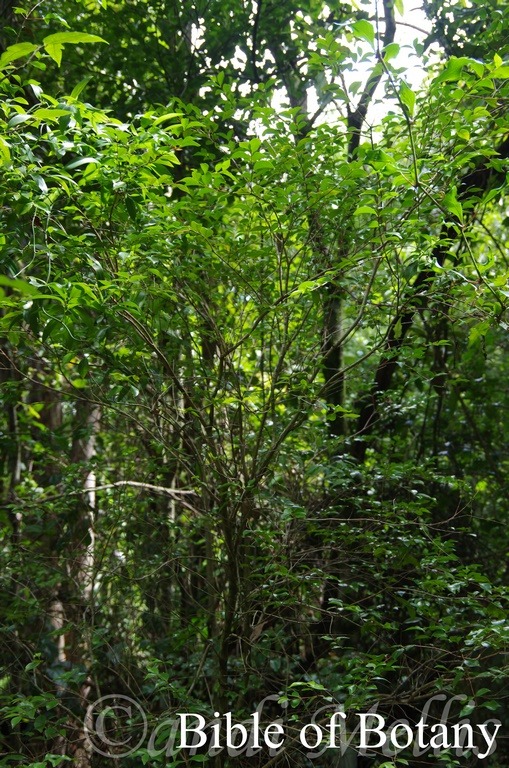
LBG Lismore NSW
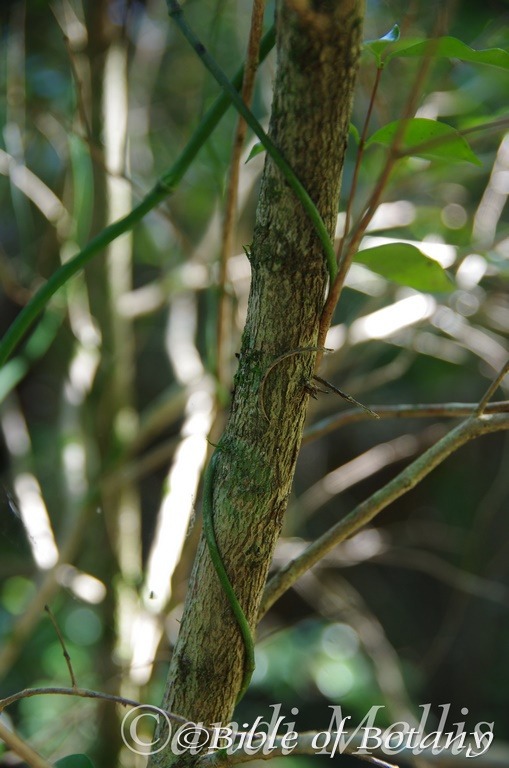
Richmond River NSW
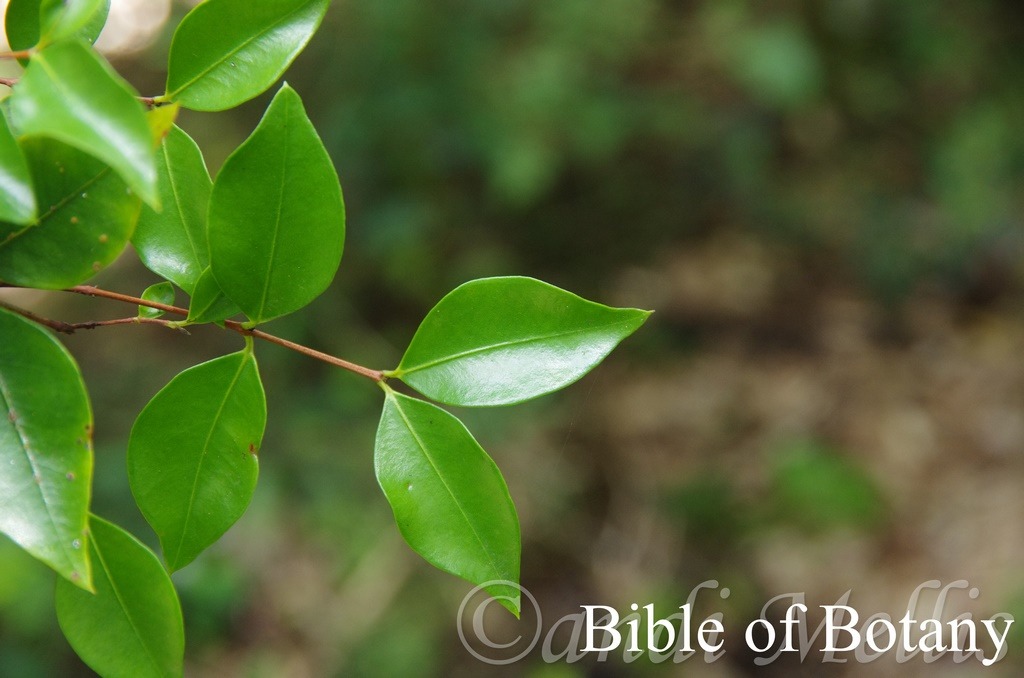
LBG Lismore NSW
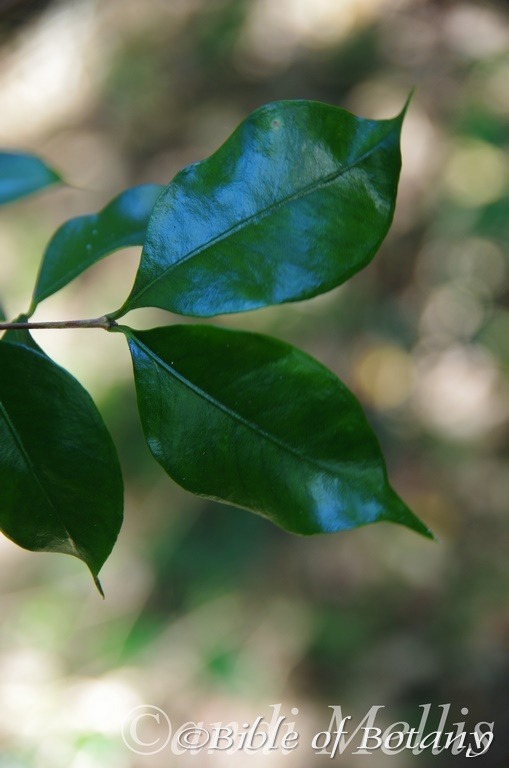
Richmond River NSW

LBG Lismore NSW

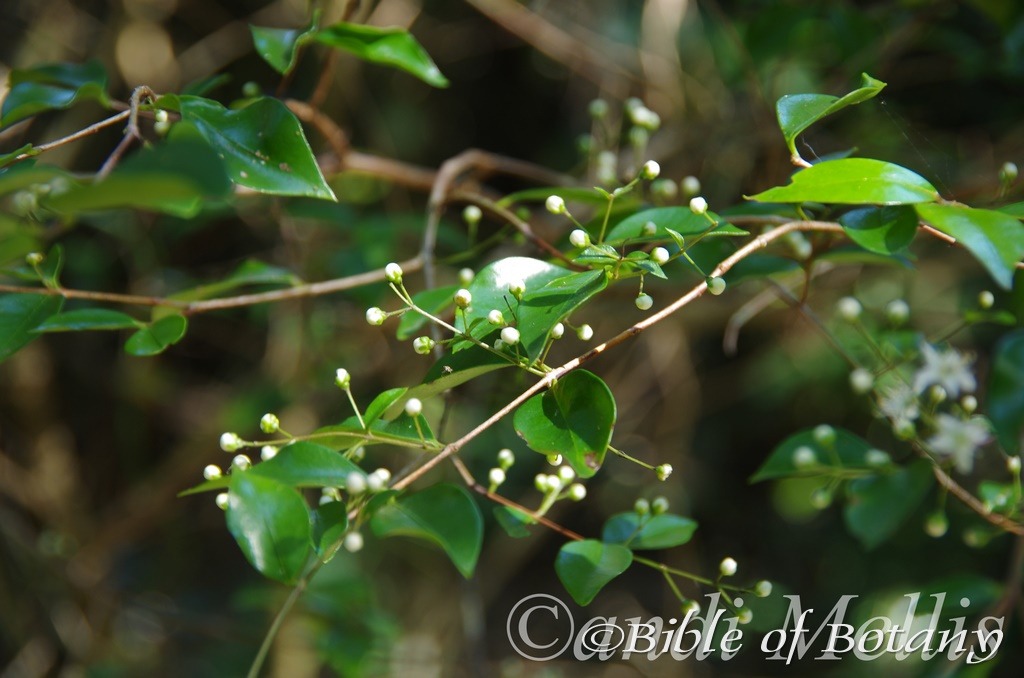
Richmond River NSW
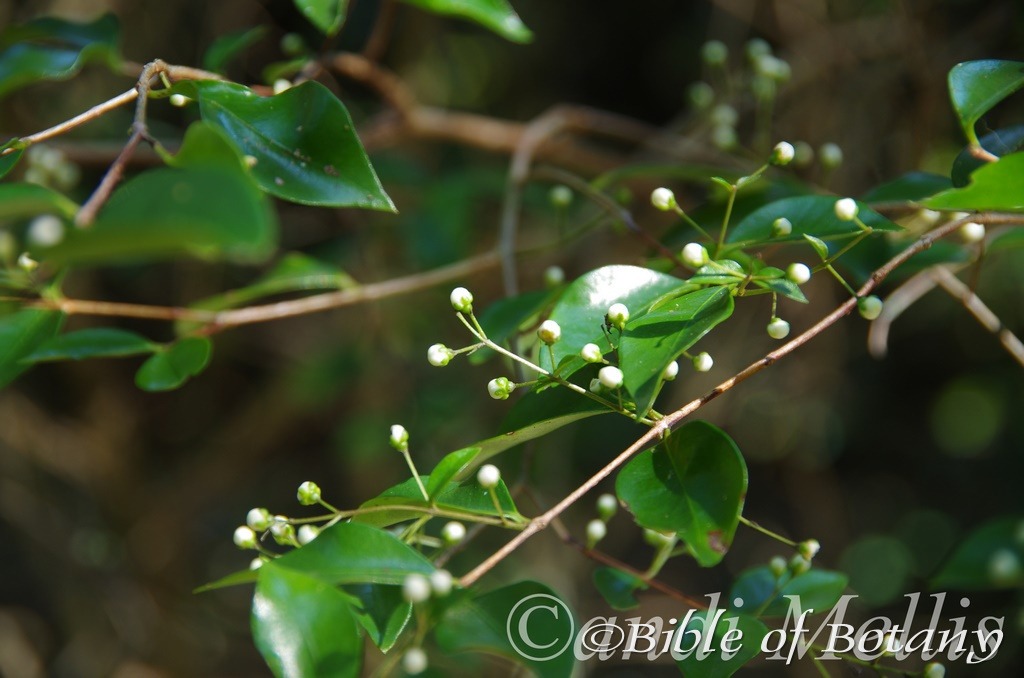
Richmond River NSW

Richmond River NSW

Richmond River NSW
Gossia punctata
Classification:
Unranked: Eudicots
Unranked: Rosids
Order: Myrtales
Family: Myrtaceae
Genus: Is named in honour of Wayne Keith Goss; 1951-2014, who was the Queensland Premier who contributed extensively to conservation and arts in the state.
Specie: From P?nct?ta, which is Latin for small dots or small depressions. It refers to surfaces or organs, which have small dots or small depressions on the surface.
Sub Species:
Common Name: Scrub Ironwood.
Distribution:
Gossia punctata is found south from Mount Bauple National Park in southern coastal Queensland to Pikapene State Forest near Casina in far north eastern New South Wales. It is found on and east of the Great Dividing Range.
https://avh.ala.org.au/occurrences/search?taxa=Gossia+punctata#tab_mapView
Habitat Aspect Climate:
Gossia punctata prefers full sun, light dappled shade to medium shade. It usually grows adjacent to dry rainforests, gallery forests or dry riparian zones or schlerophyll forests. The altitude ranges from 20 meters ASL to 850 meters ASL.
The temperatures range from minus 8 degrees in July to 36 degrees in January.
The rainfall ranges from lows of 700mm to an average of 1200mm annually.
Soil Requirements:
Gossia punctata prefers better quality fertile sandy loams, to light gritty clays, medium clays and alluvial silty flats. The soils are usually derived from decomposed brown basalt, black basalt, metamorphic rocks, granites or reddish sandstones. The soils pH ranges from 5pH to 6pH are preferred. It does not tolerate water logged soils. Non saline soils to moderately saline soils are tolerated.
Height & Spread:
Wild Plants: 8m to 15m by 6m to 8m.
Characteristics:
Gossia punctata often grows as a multi trunked small tree with grey mottled, smooth bark to the small branchlets. The juvenile new growth is mid pinkish red to mid pinkish-brown and sparsely to moderately covered in caducous, white pubescent hairs.
The opposite, elliptical leaves measure 20mm to 55mm in length by 8mm to 22mm in width. The grass-green petioles measure 2mm to 4mm in length. The bases are broad cuneate while the apexes are acute. The discolourous deep grass-green deep green laminas are glabrous and semi glossy to glossy on the upper lamina while the lower laminas are somewhat paler and semi glossy. The laminas recurve upwards from the mid vein to the margins and decurve downwards near the apexes while the margins are entire. The mid vein and lateral veins are prominent on the lower laminas while the mid vein is prominent near the base and the lateral veins are faintly visible. The oil glands are numerous and visible to the naked eye on the lower lamina. The terete petiole is channelled on the upper surface and measures 1mm to 2mm in length.
The monecious, inflorescences are born axillary, solitary or with 2 to 6 individual flowers on raceme. The hypanthia is glabrous to sparsely covered in fine, white pubescent hairs. The 5 white sepals are sparsely to moderately covered in white pubescent hairs abaxially, while the margins are ciliate and measure 1mm to 2mm in length. The 4 or 5 white, oblong/ovate petals are finely ciliate and measure 3mm to 5mm in length. The apexes are broad acute to obtuse, while the margins are entire. The glabrous pedicels measure 8mm to 15mm in length. The 2 locular ovary is glabrous to sparsely covered in fine white hairs, while the style measure 2mm to 3mm in length. There are about 20 oil dots per petal.
The 20 plus erect stamens have white filaments, which measure 2.5mm to 3.5mm in length. The white basifixed anthers measure 0.5mm to 0.6mm in diameter. The flowers appear from December to January.
The fruits are globular fleshy nuts. The green nuts turn black and are glossy when ripe. The sepals are persistent at the apex of the ripe fruits which measure 9mm to 15mm in length by 10mm to 15mm in diameter.
Wildlife:
Gossia punctata dense foliage and proliferation of small flowers and fruits are great attractions and safe zone for smaller honeyeaters like the Silver Eyes (Zosterops lateralis), Yellow Face Honeyeater (Lichenostomus chrysops), Brown Honeyeater (Lichmera indistincta) and the eastern Spinebill (Acanthorhynchus tenuirostris) which eat the fruit and nest in the trees.
Cultivation:
Gossia punctata is a very beautiful small tree which should be more widely grown in tropical, sub-tropical, semi-arid areas and temperate zones in Australia on both the east coast and west coast. It is most suitable for small to large gardens. Garden subjects usually grow 10 meters to 12 meters in height by 6 meters to 9 meters in diameter.
In formal gardens it can break up the foliage yet not distract from colourful annuals. It can accept light pruning at the end of the flowering season in its early years of growth to enhance a bushier shrubbery like structure.
In Native gardens it can be used to attract birds with the only extra being the supply of a safe water point for small birds. The down side is that multi trunk trees are an easy tree for cats to climb and descend from.
Use it as the back ground plant with annuals and colourful perennials in the foreground in a smaller gardens. It is also a very good starter tree for a small rainforest garden with the bark being very attractive.
The trees make very good accent trees in front of low set commercial, industrial sheds or 1 or 2 story school buildings where they will break up hard rigid architectural lines. It will give warmth and breadth to buildings in winter and cool them in the summer. The trees have a fairly small usually non-invasive root system. In front of high-rise buildings or as street and avenue trees they give balance especially where it could be grown in curves meandering along the nature strip.
Propagation:
Seeds: The seeds can be planted directly into a seed raising mix. Cover fresh seeds with 2mm of fine sand and keep moist not wet. Place the tray in a warm sunny position beneath 30% shade cloth. When the seedlings are 25mm to 50mm tall, prick them out and repot them into 50mm native tubes using a good organic mix. The seedlings are easy to handle and very few losses will occur.
Once the seedlings reach 150mm to 200mm in height, nip the tips out before planting them out into their permanent position. For mass plantings plant them at of 6 meter to 15 meter centers depending on whether it is to be used for a rainforest or park scene.
The altitude ranges from 5 meters ASL to 1350 meters ASL.
Fertilize using seaweed, fish emulsion or organic chicken pellets soaked in water on an alternate basis. Fertilize every two months until the plants are established then twice annually in early September or March to maintain health, vitality and better flowering. The chicken pellets are particularly good as it is usually slightly alkaline.
Further Comments from Readers:
“Hi reader, it seems you use The Bible of Botany a lot. That’s great as we have great pleasure in bringing it to you! It’s a little awkward for us to ask, but our first aim is to purchase land approximately 1,600 hectares to link several parcels of N.P. into one at The Pinnacles NSW Australia, but we need your help. We’re not salespeople. We’re amateur botanists who have dedicated over 30 years to saving the environment in a practical way. We depend on donations to reach our goal. If you donate just $5, the price of your coffee this Sunday, We can help to keep the planet alive in a real way and continue to bring you regular updates and features on Australian plants all in one Botanical Bible. Any support is greatly appreciated. Thank you.”
In the spirit of reconciliation we acknowledge the Bundjalung, Gumbaynggirr and Yaegl and all aboriginal nations throughout Australia and their connections to land, sea and community. We pay our respect to their Elders past, present and future for the pleasures we have gained.
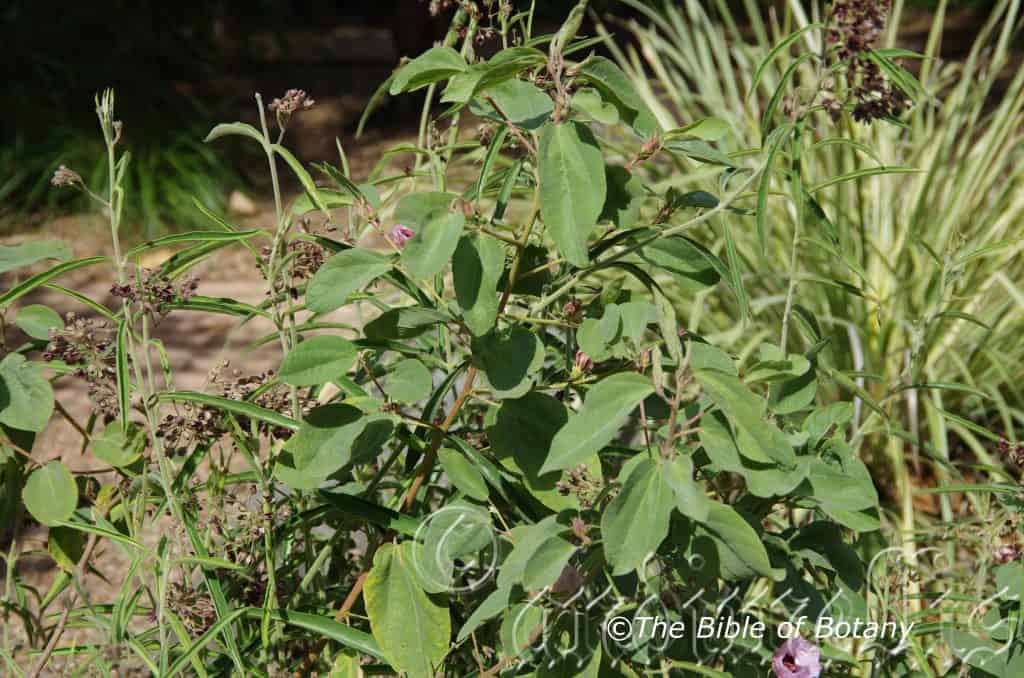
Hervey Range Qld.

Hervey Range Qld.
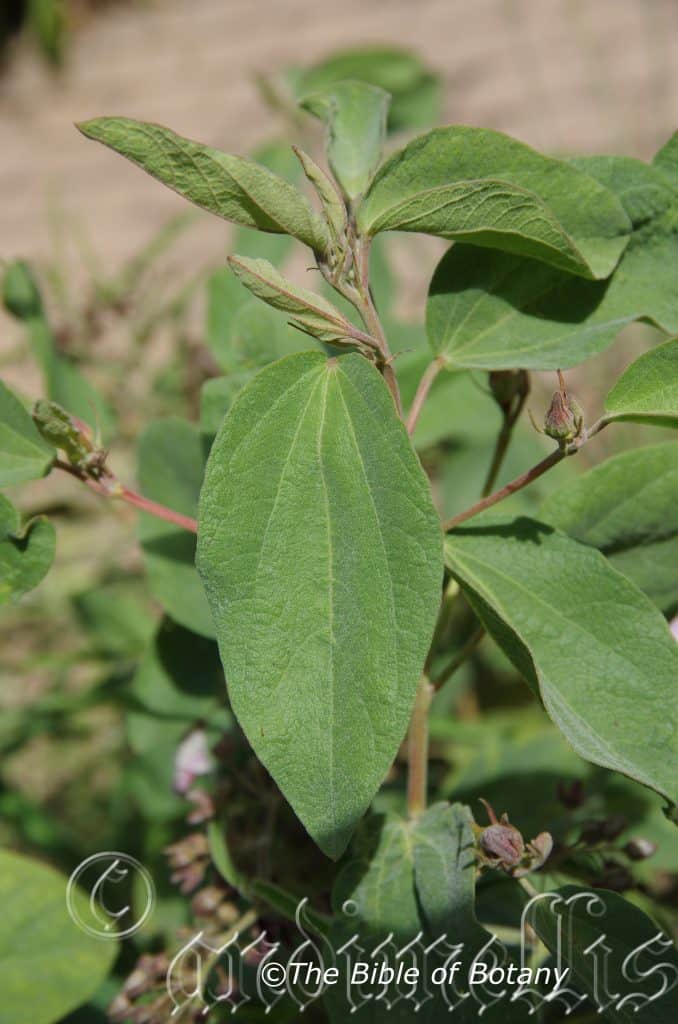
Hervey Range Qld.
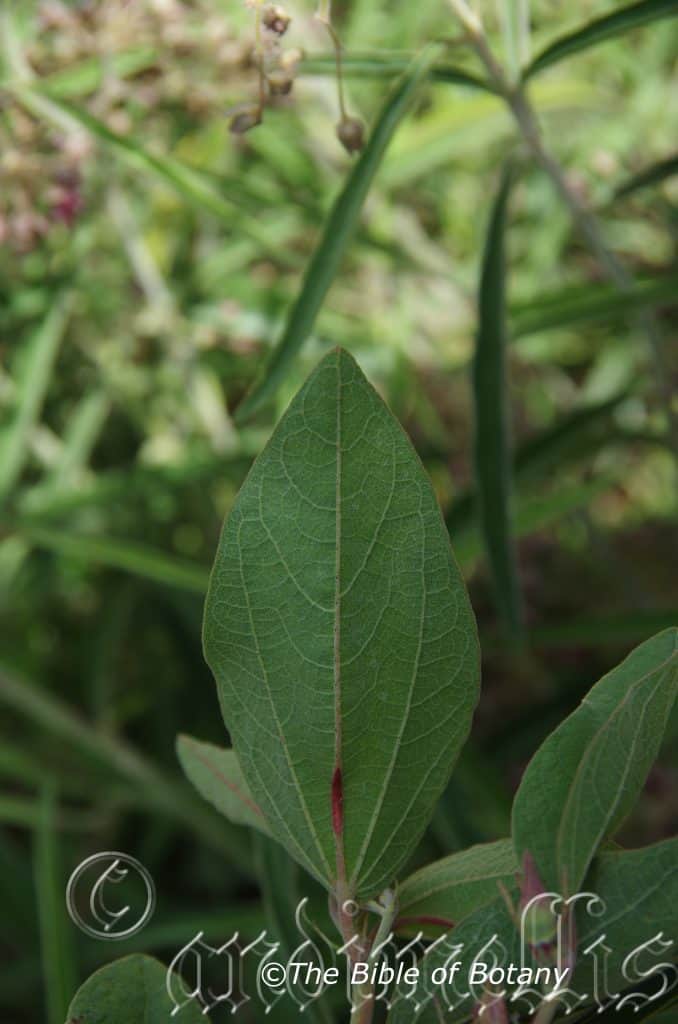
Hervey Range Qld.
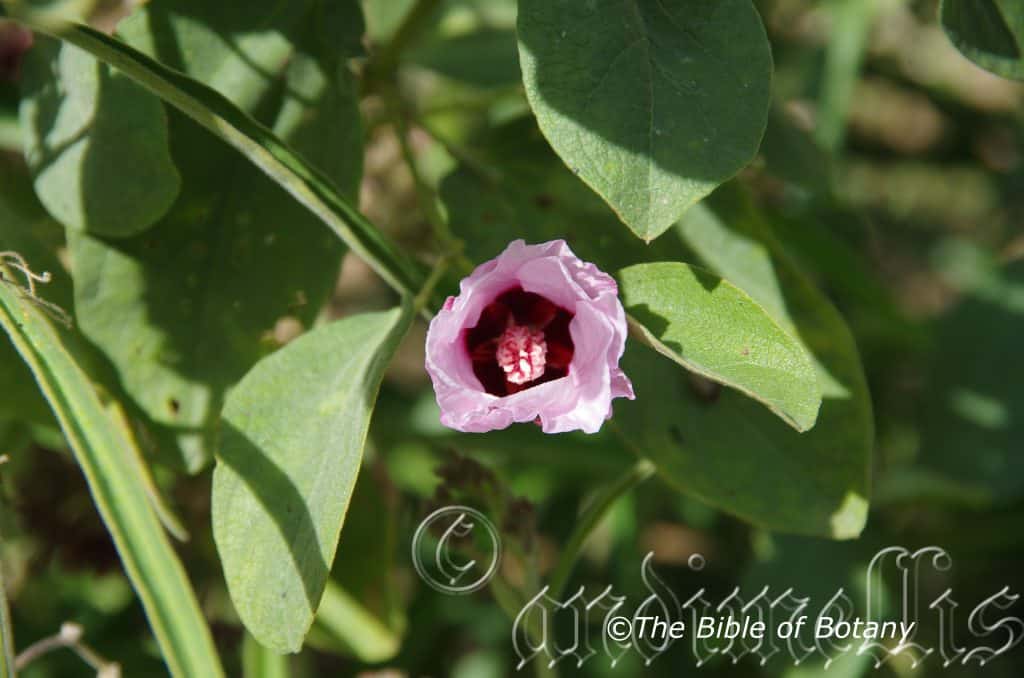
Hervey Range Qld.

Hervey Range Qld.

Hervey Range Qld.
Gossypium australe
Classification:
Unranked: Eudicots
Unranked: Rosids
Order: Malvales
Family: Malvaceae
Genus: From Gossúpion/Kárpasos, which is Ancient Greek for a cotton fabric. It refers structures or organs, which are covered in cottony like hairs.
Specie: From or Terra Australis, which is borrowed from Ancient Greek for the terrible south land or Austr?le, which is Latin for southern. It refers to plants, which were originally found in Australia.
Sub specie:
Common Name:
Distribution:
Gossypium australe is found in the northern half of Australia except for the Kimberley Range in far north west Western Australia, the far northern monsoonal areas of the Northern Territory and the northern section of Cape York Penninsular in far north eastern Queensland.
https://avh.ala.org.au/occurrences/search?taxa=Gossypium+australe#tab_mapView
Habitat Aspect Climate:
Gossypium australe prefers full sun to light dappled shade. It grows in open Acacia woodlands, open Mallee woodlands or tussock savannah woodlands usually along or adjacent to watercourses. The altitude ranges from 52 meters ASL to 800 meters ASL.
The temperatures range from minus 2 degrees in July to 46 degrees in January.
The rainfalls range from lows of 250mm to 600mm on average per annum.
Soil Requirements:
Gossypium australe prefers skeletal to deep, rocky sandy loams, to rocky light medium clays or pebbly alluvial flats. The soils are usually derived from decomposed brown, red or orange sandstones, granites or rhyolites. The soils pH ranges from 4.5pH to 7pH are preferred. It does not tolerate water logged soils. Non saline soils to moderately saline soils are tolerated.
Height & Spread:
Wild Plants: 1m to 2m by 0.5m to 2m.
Characteristics:
Gossypium australe is an erect small or spreading shrub. The main stems near the ground are grey-brown while the upper stems are grey-green, or pale green and densely covered in short, fawn to brown velvety hairs.
Gossypium australe has alternate, elliptical to ovate leaves, which measure 50mm to 120mm in length by 25mm to 65mm in width.
The terete petioles bend at 90 degrees so that they are appressed against the stem and are densely covered in short, fawn to brown velvety hairs. The petioles measure 15mm to 23mm long.
The bases are rounded while the apexes are long mucronate. The mature concolourous laminas are dull blue-green and densely covered in short, soft weathered, hoary hairs. The laminas are recurve upwards from the mid vein to the margins while the margins are usually entire, with a slight undulation. The mid vein and lateral veins are strongly prominent on the lower lamina and distinctly visible on the upper laminas.
The inflorescences of Gossypium australe are born singularly from the leaf axils. The pedicels measure 4mm to 8mm in length. The epicalyxes segments are ovate-cordate to narrow triangular and are densely covered in short, white velvety hairs. The green calyxes have the lobes fused less than half their length and are often covered in stellate hairs. The calyxes measure 17mm to 27mm in length.
The 5 pink, deep pink or rose pink petals have a deep red or deep pink centre and measure 25mm to 55mm in length by 45mm to 55mm in diameter. The margins are entire or shallowly and broadly sinuate. The flowers appear April to October.
The stamens are united and arise from a staminal tube, which surrounds the style. The filaments measure 0.5mm to 0.7mm in length. The cream, spherical, basifixed anthers measure 1.5mm to 2mm in diameter.
The single style has a single lobed stigma or capitate stigma. The white style measures 12mm to 15mm in length.
The ovoidal capsules are densely covered in fawn, erect, hirtellous hairs or scales with a sparse covering of stellate hairs. The apex is obtuse, while the calyx persistent on the ripe capsules. There are 2 to 4 grey seeds in each locule. The capsules measure 18mm to 23mm in length by 18mm to 23mm in diameter.
Wildlife:
Gossypium australe’s wildlife consists of most arid area insects that consume nectar and pollen.
Cultivation:
Gossypium australe is a magnificent flowering small to medium shrub for arid areas or frost free low humidity zones throughout Australia. In cultivation the plants will grow 1.5 meters to 2 meters by 1 meters to 1.5 meters in diameter when grown in the open. This is one plant that is worthwhile trying in most areas from the west coast to the western side of the Great Dividing Range where frosts are not encountered. If light frosts are normally had on an annual basis it would be better to try Gossypium sturtianum sub sp. nandewarensis than the described type.
It grows and adapts well to cultivation in central Australia in open woodlands to grass lands around homesteads and country towns. It thrives where the weather is hot and the humidity is low however it should be tried more, in more humid areas where the soils are sandy or rocky, the drainage is excellent and it can receive full sun all day. Ensure the plants are free from competition so that good air circulation is created to prevent fungal diseases.
Gossypium australe would make a good contribution to a sandy or rocky terrain rock arid or desert garden scene. Here it can be used as the feature plants, scattered throughout the boulders or plains. When you use them in area that is strewn with large boulders do not over crowd the scene as the boulders are a formidable part of the scene and plant them to the rear so that both the boulders and plants are in full view.
Gossypium australe is well suited to such conditions so use contours to display the plants and remember boulder country are almost always rising and falling in contour and have sharp rises so plant them where the maximum sunlight can be guaranteed and the drainage is at a premium. Plants must be planted sparingly with short annuals between to give vibrant colour. Make the scene so you can see over the tallest ones with the exception of one or two plants at the most. The idea is to achieve a feeling of expansive harshness. This can be achieved with using Gossypium sturtianum’s large blue-green orbicular leaves and large rose pink flowers contrasting with finer pale green or soft grey to glaucous coloured foliages. If large deep green leaf plants are wanted try using them as prostrate plants. Use a lot of procumbent plants like Hibbertia specie to make the rocks look larger and the spaces between the plants bigger. Some ideal plants that come to mind would be Swainsona formosa, Lechenaultia formosa or Lechenaultia biloba, Calytrix longiflora if pink is your thing, Solanum quadriloculatum or Grevillea thelemanniana for some great contrasting foliages.
Alternative if there are a few taller mallees already growing in an arid garden Gossypium australe could be sparingly planted to take advantage of the stark ground conditions.
Propagation:
Seeds: Gossypium australe seeds require treatment before sowing. Pre-treat by placing the seeds into a glass of boiling water. Allow the water to cool and leave to soak for 6 hours. Seeds that have not swollen repeat the exercise. As the seedlings resent being handled sow the seeds into peat pots. When the seedlings are 50mm to 80mm tall, plant the pots out into their permanent position. Water thoroughly.
For mass plantings space the seedlings at 1 meter centers.
Fertilize using seaweed, fish emulsion or organic chicken pellets soaked in water two weeks after planting then sit back and enjoy the splendour that will soon follow.
Cuttings:
Treat cuttings as you would any of the Malvaceae family. Take the 50mm to 70mm cuttings as the weather warms up, with minimum temperatures above 10 degrees. Cuttings should have 2 or 3 healthy pairs of nodes.
1 Prepare the cutting mix by adding one third sharp clean river sand, one third peat and one third perlite. These ingredients are sterilize,
2 Select good material from non diseased plants,
3 Select semi green stems for cuttings. Look for a stem with two or three nodes,
4 Place the cutting on a flat, hard surface, and make a clean cut down one side of the cutting at the base for 10mm with a sharp sterile knife or razor blade. – This scarification of the node will increase the chances of roots emerging from this spot. Now remove all but one or two the leaves, leaving the apex leaves in tact. If the leaves are very large in proportion to the stem, cut off the apical halves.
5 Fill a saucer with water, and place a little weak rooting hormone into another container like a milk bottle top. Dip the node end of the cutting into the water and then into the rooting hormone. Tap off any excess hormone,
6 Use a small dipple stick or old pencil to poke a hole into the soilless potting mix. Ensure the hole is slightly larger than the stem diameter and be careful not to wipe the rooting hormone off the cuttings base, place the cuttings in a pattern ensuring the cuttings are not touching each other,
7 I like to place the pots in Plastic bags to help maintain temperature and moisture. Place in a semi shaded place like under 50mm shade cloth.
8 When the cuttings have struck, open the bag to allow air circulation for a few days to a week,
9 Once hardened off remove the cuttings from the bag and allow to further hardening for a few more days,
10 Transplant into a good potting mix to grow on.
Further Comments from Readers:
“Hi reader, it seems you use The Bible of Botany a lot. That’s great as we have great pleasure in bringing it to you! It’s a little awkward for us to ask, but our first aim is to purchase land approximately 1,600 hectares to link several parcels of N.P. into one at The Pinnacles NSW Australia, but we need your help. We’re not salespeople. We’re amateur botanists who have dedicated over 30 years to saving the environment in a practical way. We depend on donations to reach our goal. If you donate just $5, the price of your coffee this Sunday, We can help to keep the planet alive in a real way and continue to bring you regular updates and features on Australian plants all in one Botanical Bible. Any support is greatly appreciated. Thank you.”
In the spirit of reconciliation we acknowledge the Bundjalung, Gumbaynggirr and Yaegl and all aboriginal nations throughout Australia and their connections to land, sea and community. We pay our respect to their Elders past, present and future for the pleasures we have gained.

National Botanic Gardens ACT
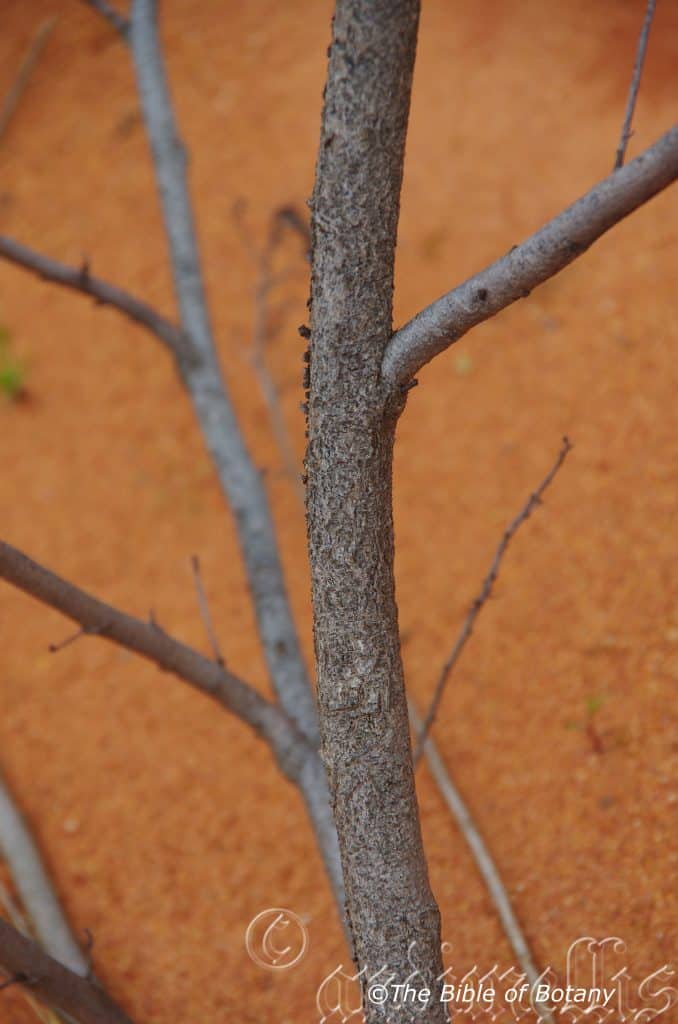
National Botanic Gardens ACT
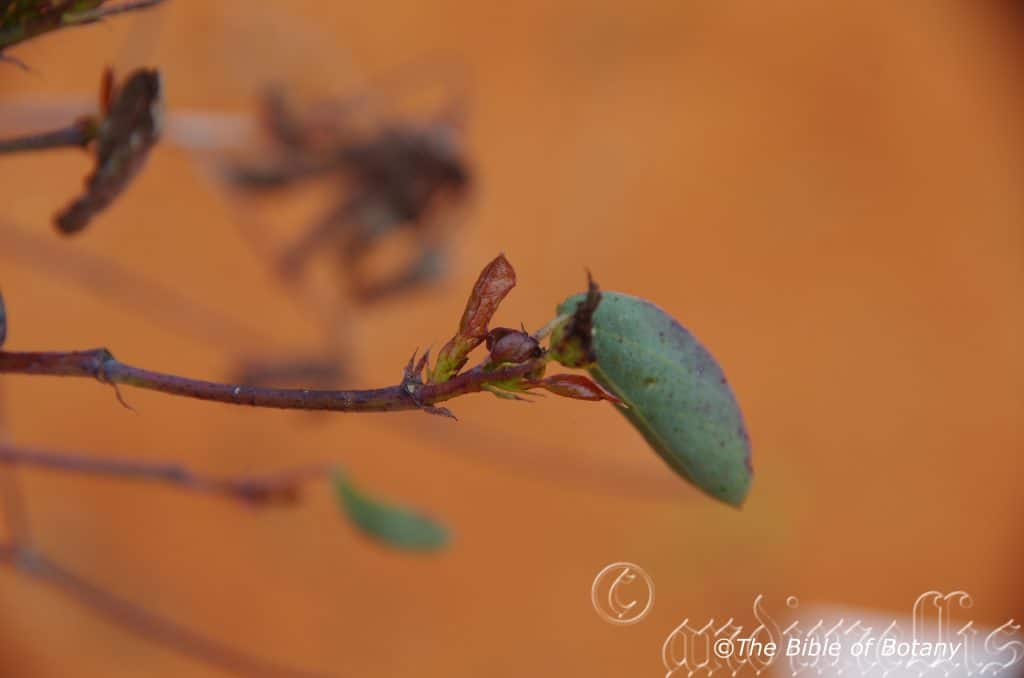
National Botanic Gardens ACT
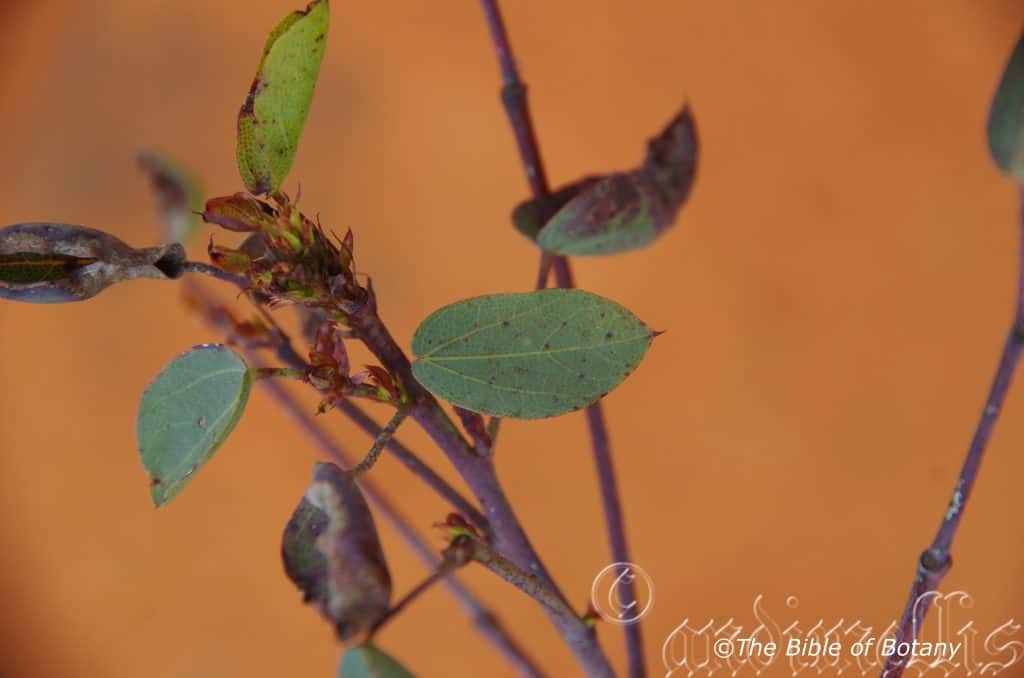
National Botanic Gardens ACT
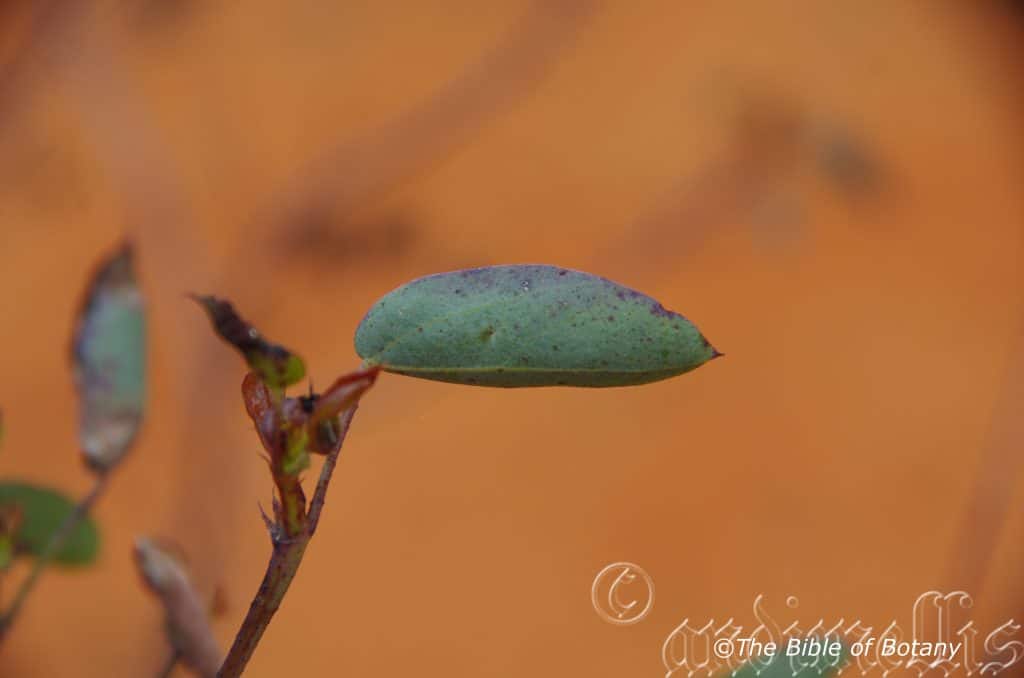
National Botanic Gardens ACT
Gossypium sturtianum
Northern Territory’s Floral Emblem
Classification:
Unranked: Eudicots
Unranked: Rosids
Order: Malvales
Family: Malvaceae
Genus: From Gossúpion/Kárpasos, which is Ancient Greek for a cotton fabric. It refers structures or organs, which are covered in cottony like hairs.
Specie: Is named in honour of Captain Charles Napier Sturt; 1795–1869, who was a British born explorer in the interior of Australia and Anum/Ensis which is Latin for to originate from. It refers to plants which were first discovered in the Sturt desert region.
Sub specie: Gossypium sturtianum subsp. nandewarensis. From Nandewar, which is Latinized from the local aboriginal vernacular for the Nandewar range. It refers to plants which were first discovered there or are restricted to the area between Nanewar Range and the Warrumbungle Range in north eastern New South Wales.
Sub specie: Gossypium sturtianum subsp. sturtianum. Is named in honour of Captain Charles Napier Sturt; 1795–1869, who was a British born explorer in the interior of Australia and Anum/Ensis which is Latin for to originate from. It refers to plants which were first discovered in the Sturt desert region.
Common Name: Sturts Desert Rose.
Distribution:
Gossypium sturtianum is found east from Exmouth to Newman in central Western Australia.
Gossypium sturtianum subsp. sturtianum is found in central Australia it is found south and between Cape Crawford in the Northern Territory to the Rawlison Range in central eastern Western Australian near the South Australian Northern Territory Border and south to the Gawler Ranges, Adelaide and Terrapinna in southern South Australia.
Gossypium sturtianum subsp. nandewarensis is found scattered in the east over most of Queensland and New South Wales south from the Flinders Highway to Dangalli National Park in eastern South Australia and Nowra in southern coastal New South Wales.
https://avh.ala.org.au/occurrences/search?taxa=Gossypium+sturtianum#tab_mapView
Habitat Aspect Climate:
Gossypium sturtianum prefers full sun to light dappled shade. It grows in open Acacia woodlands, open Mallee woodlands or tussock savannah woodlands. The altitude ranges from 52 meters ASL to 800 meters ASL.
The temperatures range from minus 2 degrees in July to 40 degrees in January.
The rainfalls range from lows of 250mm to 600mm on average per annum.
Soil Requirements:
Gossypium sturtianum prefers skeletal to deep, rocky sandy loams, to rocky light medium clays or pebbly alluvial flats. The soils are usually derived from decomposed brown, red or orange sandstones, granites or rhyolites. The soils pH ranges from 4.5pH to 7pH are preferred. It does not tolerate water logged soils. Non saline soils to moderately saline soils are tolerated.
Height & Spread:
Wild Plants: 1m to 2m by 0.5m to 2m.
Characteristics:
Gossypium sturtianum is an erect small to large, erect or spreading shrub. The main stems near the ground are grey-brown while the upper stems are grey-green, blue-green or deep green and are covered in black lenticel like glands. The new growth is usually blue-green to grey-green and glabrous.
Gossypium sturtianum’s alternate, orbicular to ovate leaves measure 30mm to 60mm in length by 30mm to 60mm in width.
The petiole measures 9mm to 11mm long. The petioles are white or grey hirsute hairs. The petioles measure 35mm to 70mm in length.
The off centred peltate bases are truncate to broadly rounded while the apexes are truncate broadly obtuse, broadly emarginate with a mucronate tip or broadly acute with an apiculate tip. The discolourous laminas are usually blue-green or at times deep green to grey-green, glabrous and dull on the upper laminas while the lower laminas are paler or more greenish. The laminas are flat to slightly recurve upwards from the petiole to the margins while the margins are usually entire or at times deeply 3 to 5 lobed. The mid veins are prominent on the lower lamina and distinctly visible on the upper laminas.
Inflorescences of Gossypium sturtianum are born singularly from the leaf axils. The pedicels measure 5mm to 20mm in length. The epicalyxes segments are ovate-cordate to narrow triangular and are covered in black gossypol glands on both surfaces. The lobes measure 20mm to 30mm in length by 20mm to 30mm in width near the base. The 5 c calyx lobes are ovate and covered black gossypol glands on both surfaces. The calyx lobes measure 8mm to 12mm in length by 8mm to 12mm in width near the base. The 5 mauve, pink, deep pink or rose pink petals are deep red, deep purple or deep purple-red at the base over the ovary. The petals measure 50mm to 60mm in length by 50mm to 60mm in width near the apex. The margins are entire or shallowly and broadly sinuate. The flowers appear throughout the year when weather conditions are favourable with a peak from late July to early September.
Gossypium sturtianum fruit is an ovoidal capsule. The capsules measure 20mm to 25mm in length by 17mm to 22mm in diameter. The green capsules turn mid grey-brown when ripe and split to reveal the 4.or usually 5 locules.
Difference between the sub specie:
Gossypium sturtianum subsp. sturtianum leaves are entire and are circular to ovate with a mucronate tip. The seeds are covered in long pale green hirsute hairs and measure 3mm to 4mm in length.
Gossypium sturtianum subsp. nandewarensis leaves usually entire but can have 3 to 5 small lobes, often with 2 small lobes at the base of the lamina. The apexes have an apiculate tip. The seeds are covered in long brown hirsute hairs and measure 4mm to 6mm in length.
Wildlife:
Gossypium sturtianum’s wildlife consists of most arid area insects that consume nectar and pollen.
Cultivation:
Gossypium sturtianum is a magnificent flowering small to medium shrub for arid areas or frost free low humidity zones throughout Australia. In cultivation the plants will grow 1.5 meters to 2 meters by 2 meters to 2.5 meters in diameter when grown in the open. This is one plant that is worthwhile trying in most areas from the west coast to the western side of the Great Dividing Range where frosts are not encountered. If light frosts are normally had on an annual basis it would be better to try Gossypium sturtianum sub sp. nandewarensis than the described type.
It grows and adapts well to cultivation in central Australia in open woodlands to grass lands around homesteads and country towns. It thrives where the weather is hot and the humidity is low however it should be tried more, in more humid areas where the soils are sandy or rocky, the drainage is excellent and it can receive full sun all day. Ensure the plants are free from competition so that good air circulation is created to prevent fungal diseases.
Gossypium sturtianum would make a good contribution to a sandy or rocky terrain rock arid or desert garden scene. Here it can be used as the feature plants, scattered throughout the boulders or plains. When you use them in area that is strewn with large boulders do not over crowd the scene as the boulders are a formidable part of the scene and plant them to the rear so that both the boulders and plants are in full view. Gossypium sturtianum is well suited to such conditions so use contours to display the plants and remember boulder country are almost always rising and falling in contour and have sharp rises so plant them where the maximum sunlight can be guaranteed and the drainage is at a premium. Plants must be planted sparingly with short annuals between to give vibrant colour. Make the scene so you can see over the tallest ones with the exception of one or two plants at the most. The idea is to achieve a feeling of expansive harshness. This can be achieved with using Gossypium sturtianum’s large blue-green orbicular leaves and large rose pink flowers contrasting with finer pale green or soft grey to glaucous coloured foliages. If large deep green leaf plants are wanted try using them as prostrate plants. Use a lot of procumbent plants like Hibbertia specie to make the rocks look larger and the spaces between the plants bigger. Some ideal plants that come to mind would be Swainsona formosa, Lechenaultia formosa or Lechenaultia biloba, Calytrix longiflora if pink is your thing, Solanum quadriloculatum or Grevillea thelemanniana for some great contrasting foliages.
Alternative if there are a few taller mallees already growing in an arid garden Gossypium sturtianum could be sparingly planted to take advantage of the stark ground conditions.
The interesting thing about the glands is that they contain gossypol. Gossypol is a natural phenol derived from members of the cotton family or Gossypium genus. Phenolic aldehyde is a yellow pigment that permeates cells and acts as an inhibitor for several dehydrogenase enzymes. It is being tested in China at the moment as a male oral contraceptive without any side effects to date. So we will probably see it being grown extensively here and browsed on by many young males. Oh, I should mention now, that the main benefit of the plant is that it is “toxic” to non-ruminant animals which includes humans.
Propagation:
Seeds: Gossypium sturtianum seeds require treatment before sowing. Pre-treat by placing the seeds into a glass of boiling water. Allow the water to cool and leave to soak for 6 hours. Seeds that have not swollen repeat the exercise. As the seedlings resent being handled sow the seeds into peat pots. When the seedlings are 50mm to 80mm tall, plant the pots out into their permanent position. Water thoroughly.
For mass plantings space the seedlings at 1 meter centers.
Fertilize using seaweed, fish emulsion or organic chicken pellets soaked in water two weeks after planting then sit back and enjoy the splendour that will soon follow.
Further Comments from Readers:
“Hi reader, it seems you use The Bible of Botany a lot. That’s great as we have great pleasure in bringing it to you! It’s a little awkward for us to ask, but our first aim is to purchase land approximately 1,600 hectares to link several parcels of N.P. into one at The Pinnacles NSW Australia, but we need your help. We’re not salespeople. We’re amateur botanists who have dedicated over 30 years to saving the environment in a practical way. We depend on donations to reach our goal. If you donate just $5, the price of your coffee this Sunday, We can help to keep the planet alive in a real way and continue to bring you regular updates and features on Australian plants all in one Botanical Bible. Any support is greatly appreciated. Thank you.”
In the spirit of reconciliation we acknowledge the Bundjalung, Gumbaynggirr and Yaegl and all aboriginal nations throughout Australia and their connections to land, sea and community. We pay our respect to their Elders past, present and future for the pleasures we have gained.
Grammitis billardierei
Classification:
Division: Pteridophyta
Subclass: Polypodiidae
Order: Polypodiales
Family: Polypodiaceae
Genus: From Gramma/Grammati, which is Latin for a line. It refers to sporangium, which are produced in straight lines.
Specie: Is named in honour of Billardier; 1755-1834.who travelled with the D’entrecasteaux Expedition to Western Australia and Tasmania where he discovered many new species.
Sub specie:
Common Name: Finger Fern.
Distribution:
Grammitis billardierei is found south from Lamington National Park to Cape Otway Range National Park. It is mainly found on the Western Slopes, on and east of the Great Dividing Range
In Tasmania it is found on the Flinders Island group and the entire Tasmanian mainland except for the central highlands.
There is 1 disjunct population in the Grampians National Park in south western Victoria and an isolated population in far north eastern Queensland on Mount Lewis.
https://avh.ala.org.au/occurrences/search?taxa=Grammitis+billardierei#tab_mapView
Habitat Aspect Climate:
Grammitis billardierei prefers dense shade, light shade and dappled light. It grows in cool moist montane sub-tropical rainforests, better quality moist fertile Eucalyptus forests preferring gullies and drainage lines in sheltered positions. The altitude ranges from 50 meters ASL to 1200 meters ASL.
The temperature ranges from minus 4.degrees in August to 32 degrees in January.
The rainfall ranges from lows of 900mm to 2600mm average per annum. Lower rainfall areas have high to very high orographic precipitation.
Soil Requirements:
Grammitis billardierei prefers better quality, fertile light fatty clays to medium clays. The soils are usually derived from decomposed brown basalt, black basalt or better quality decomposed shales, meta-granites or fatty sandstones verging on mudstone. The soils pH ranges from 5pH to 6.5pH are preferred. It does not tolerate water logged soils. Non saline soils to slightly saline soils are tolerated.
Height & Spread:
Wild Plants: 0.1m to 0.2m by 0.2m to 0.4m.
Characteristics:
Grammitis billardierei grows as a terrestrial, lithophytic or epiphytic fern in the baskets of other epiphytic ferns. The rhizomes are short, thick, erect or creeping rhizome. The rhizome is densely covered in chartaceous deep red-brown to brown scales.
Its linear to narrow oblanceolate fronds measure 50mm to 160mm but can grow to 200mm in length by 6mm to 12mm in width. The concolourous laminas are deep grass-green, to deep green glabrous and semi glossy on the upper laminas while the lower laminas are densely covered in short white hairs. The margins are entire and at times undulating. The glossy, black stipes are covered in reddish-brown glandular hairs near the base. The stipes measure 5mm to 15mm in length.
The fertile fronds and sterile fronds are similar. The 10 to 24.pairs of sori are arranged in a single oblong row on each side of the mid vein plus 2 or 3 single rows on one side on the basal half. The sori measure 4mm to 6mm in length by 2mm to 2.5mm in width. The spore is golden-brown to pale tan.
Wildlife:
Grammitis billardierei’s wildlife is unknown to the author.
Cultivation:
Grammitis billardierei is a magnificent small strap leaf fern for courtyards, rainforests or in the garden where dense shade or dappled light prevails. Place it on host plants like Dicksonia antarctica or Elaeocarpus specie for a natural look. Apply half strength organic native fertilizers every couple of months to encourage larger, fresher, deep green fronds. The liquid should be mixed and poured over the fronds and rhizomes.
Three to five plants planted close together at random distances on shady rocks or boulders would make interesting features especially if it is surrounded by small leafy plants with scarlet red flowers. Shrubs like Graptophyllum excelsum, Graptophyllum ilicifolium or Rhododendron loche would suffice beautifully in bringing a rainforest full of green to life. A dense crown of tall rainforest trees brings opportunities for mixing them with other smaller fine leaf plants with bright green foliages beneath and up close to the trunks. Viola hederacea, the native Peperomia blanda var. Floribunda, Peperomia tetraphylla and the dwarf Lomandra confertifolia all can add colour and leaf variation to good effect.
An entirely different scene can be mastered by using boulders, rocks and logs on a slope with a few strap leaf plants like Grammitis billardierei or Grammitis stenophylla in the back ground and both terrestrial and epiphytic ferns and orchids on the boulders and logs to give the effect of walking along a fern clad gully.
Propagation:
Spores: Grammitis billardierei while slow in growth is easy to propagate from spore. All ferns that are declared rare, vulnerable or endangered are protected by Federal and State Laws and must not be removed from the wild unless you are a land developer, mining company or main Roads department etc. This includes bulbs, roots, leaves and flowers. No part of any plant can be removed from Federal, State or Local Government land without the prior permission of the authority and this includes the spore.
Most people are put off at the thought of growing ferns from spore. Like all plants that produce their offspring from seed or spore the methods are basically the same. Remember nature has been doing this for millions of years and has been very successful. I have had excellent results growing over 200 different species of Australian ferns so don’t be afraid. Give it a go.
Step 1. Select spore from the fern fronds. Wait until the fern is just starting to release its spore. Rinse the fronds under clean running water and dry. This is to wash off any other spores from rogue ferns that may have settled onto the fronds. (There is nothing worse than having common brake or common soft bracken contaminating a prized tree fern or epiphyte.)
Step 2. Place the dry fronds in a clean brown paper bag and keep them in a cool dark place like the linen closet for about a week to ten days before you are ready to sow the spore. The exception to this rule applies to ferns, which produce green spores. These must be sown immediately that they are released. Todea Barbara is a good example of a fern, which produces green spore.
Step 3. Take a large ice cream container, a small ice cream container and a clean clear plastic bag large enough to seal the large ice cream container and three or four milk bottle tops.
Step 4. Punch or drill 6 to 10 5mm holes in the bottom of the small ice cream container.
Step 5. Wash both containers, tops and plastic bag so that they are very clean and sterile.
Step 6. Use a clean fine seed raising mi. We used 30mm fine sand, 30mm peat and 30mm perlite and 10mm vermiculite. We used crushed basalt, crusher dust and peat in a 50:50 ratio for epiphytes. Moisten the mix enough that water does not run out when the mix is squeezed between the fingers.
Step 7. Place the moisten mix (Enough to half fill the small ice cream container) in the microwave oven with a large glass of water for 7 or 8 minutes, until the water is boiling. Allow them to cool in the oven. You will need the water later so do not tip it out.
Step 8. Take the brown paper bag out of the linen closet. Shake the bag and remove the fronds. You should have a yellow, brown, black or rarely greenish brown or ochre powder or very fine, small round pin head size spore depending on the specie involved.
Step 9. Remove the mixture from the oven once it has cooled and place it in the small ice cream container and level.
Step 10. Sprinkle the spore sparsely over the mixture in the small ice cream container.
Step 11. Place the milk bottle tops in the large ice cream container with the flat surface facing down. Place the small ice cream container in the large ice cream container so that it is sitting on the milk bottle tops.
Step 12. Remove the water from the microwave and pour it into the larger ice cream container so there is 25mm to 30mm of water in the bottom.
Step 13. Place the ice cream containers in the plastic bag and seal.
Step 14. Place the contents and bag in a warm shady place preferably 50mm to 70mm shade depending on the specie. Shade houses and some window sills are ideal.
Step 15. The surface should turn green within a week to two weeks. The prothallus will then develop. From the prothalus the first true fronds will appear. Wait until the ferns are 20mm to 35mm in height before you attempt to transplant them. Once they are ready open the bag up slightly and allow the air to flow around the little ferns. Every 3 to 5 days open the bag a little further so the ferns get use to their new environment. Allow them a week to two weeks to harden off before you transplant them following the removal of the plastic bag. Carefully prick them out into 50mm standard squat tubes as you would any seedling.
Do not try to transplant them as single plants as they are still a little delicate still.
Once the smaller ones again reach 50mm to 70mm you may wish to divide the stronger and hardier individual plants into smaller clumps in 100mm squat pots.
Step 16. We fertilized with seaweed, fish emulsion or organic chicken pellets soaked in water on an alternate basis until established. Fertilize every two months for one year even when in the ground.
Further Comments from Readers:
“Hi reader, it seems you use The Bible of Botany a lot. That’s great as we have great pleasure in bringing it to you! It’s a little awkward for us to ask, but our first aim is to purchase land approximately 1,600 hectares to link several parcels of N.P. into one at The Pinnacles NSW Australia, but we need your help. We’re not salespeople. We’re amateur botanists who have dedicated over 30 years to saving the environment in a practical way. We depend on donations to reach our goal. If you donate just $5, the price of your coffee this Sunday, We can help to keep the planet alive in a real way and continue to bring you regular updates and features on Australian plants all in one Botanical Bible. Any support is greatly appreciated. Thank you.”
In the spirit of reconciliation we acknowledge the Bundjalung, Gumbaynggirr and Yaegl and all aboriginal nations throughout Australia and their connections to land, sea and community. We pay our respect to their Elders past, present and future for the pleasures we have gained.
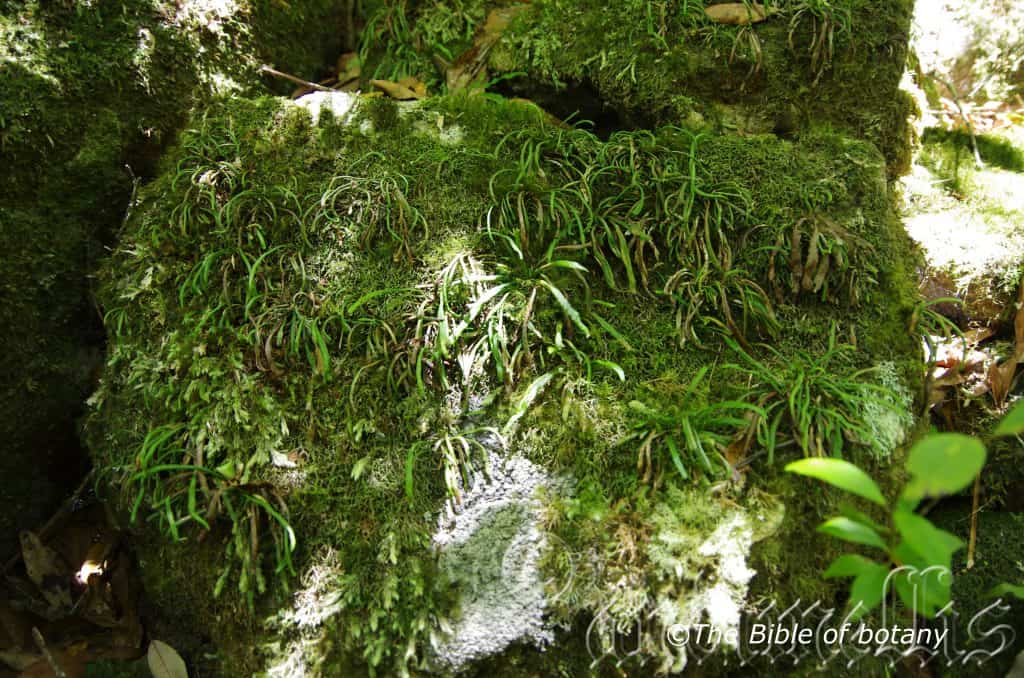
Washpool National Park NSW

Washpool National Park NSW
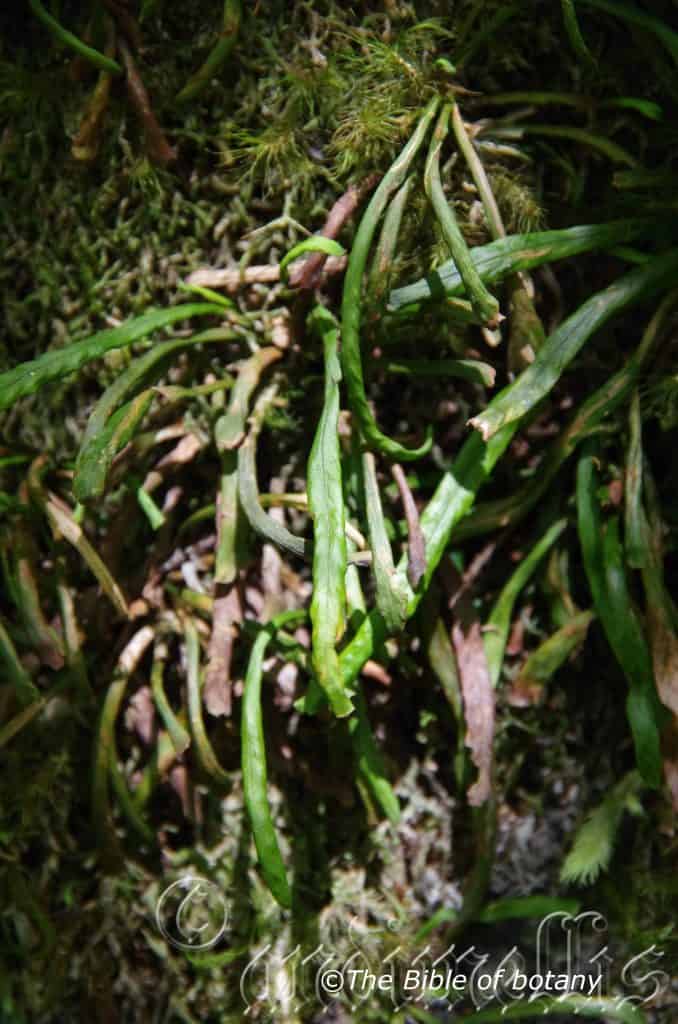
Washpool National Park NSW
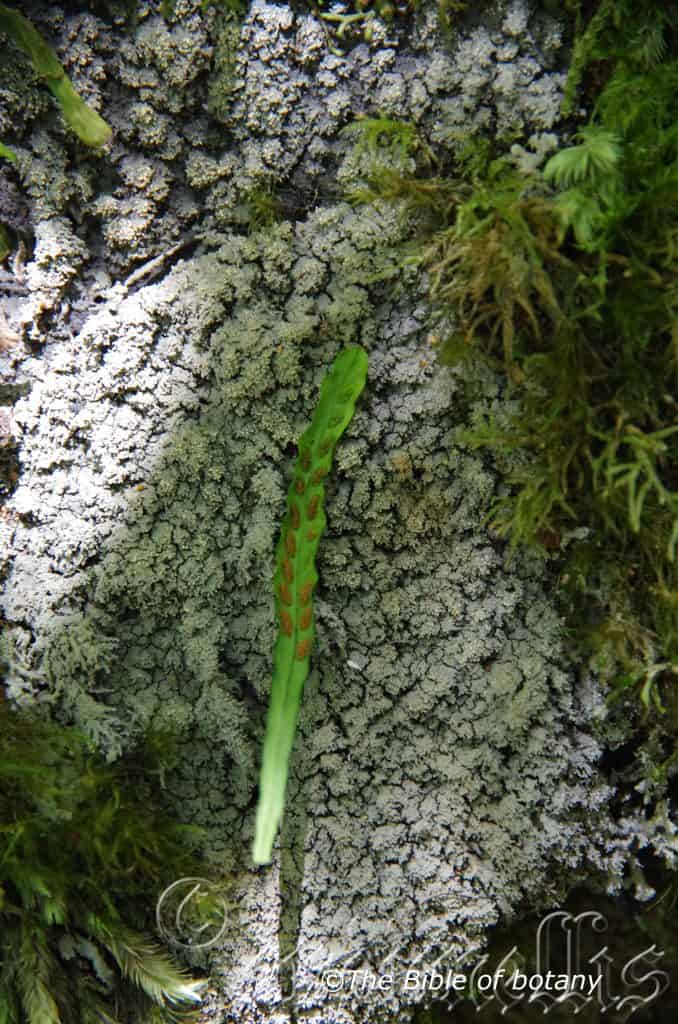
Washpool National Park NSW
Grammitis stenophylla
Classification:
Division: Pteridophyta
Subclass: Polypodiidae
Order: Polypodiales
Family: Polypodiaceae
Genus: From Gramma/Grammati, which is Latin for a line. It refers to sporangium, which are produced in straight lines.
Specie: From Stenos, which is Ancient Greek for narrow and Phullon/Phýllon, which is Ancient Greek for a leaf. It refers to leaves, which are narrower on this species compared to other species in the genus.
Sub specie:
Common Name: Narrow Leaf Finger Fern.
Distribution:
Grammitis stenophylla is found in 5 disjunct populations south from Mount Finnigan to Eungella National Park in far north eastern Queensland and the Maroochy River in south eastern Queensland to Kempsie in coastal northern New South Wales and the Hawkesbury River to Point Shoalhaven in central coastal New South Wales. The other 2 populations are in far north Queensland at Mount Tozer and in southern Tasmania at the Huon Valley. It is found on the Great Dividing Range.
https://avh.ala.org.au/occurrences/search?taxa=Grammitis+stenophylla#tab_mapView
Habitat Aspect Climate:
Grammitis stenophylla prefers dense shade to light dappled light. It grows in cool moist montane rainforests, better quality littoral rainforests and moist closed Eucalyptus forests preferring protected positions in gullies, drainage lines or sheltered positions on cliffs. The altitude ranges from 150 meters ASL to 900 meters ASL
The temperature ranges from minus 4.degrees in August to 36 degrees in January.
The rainfall ranges from lows of 1000mm to 3200mm average per annum. Lower rainfall areas have high to very high orographic precipitation.
Soil Requirements:
Grammitis stenophylla grow as a terrestrial, lithophyte on rocks or at times as an epiphyte in the baskets of other ferns. The rocks are usually associated with exposed brown basalt, black basalt or better quality meta-granites or rhyolites. The soils pH ranges from 5.5pH to 6pH are preferred. It does not tolerate water logged soils. Non saline soils to slightly saline soils are tolerated.
Height & Spread:
Wild Plants: 0.03m to 0.05m by 0.2m to 0.4m.
Characteristics:
Grammitis stenophylla has a short, thick, erect or creeping rhizome which is densely covered in chartaceous brown scales. The rhizomes measures 1.5mm to 2mm in diameter.
The linear to narrow oblanceolate fronds measure 10mm to 60mm by 1mm to 4mm in width. The glossy, black stipes are difficult to distinguish as the frond bases are attenuate while the apexes are acute to obtuse. The concolourous, coriaceous laminas are deep grass-green, to deep green glabrous and semi glossy on the upper laminas while the lower laminas are slightly paler. The margins are entire.
The fertile fronds and sterile fronds are similar. The 2 to 25 pairs of sori are arranged in a single oblong row on each side of the mid vein on the apical third of the frond. The sori measure 1mm to 2mm in length by 0.5mm to 1mm in width. The spore is golden-brown to pale tan.
Wildlife:
Grammitis stenophylla’s wildlife is unknown to the author.
Cultivation:
Grammitis stenophylla is a magnificent small strap leaf fern for courtyards, rainforests or in the garden where dense shade or dappled light prevails. Place it on host plants like Dicksonia antarctica, Harpullia specie or Elaeocarpus specie for a natural look. Apply half strength organic native fertilizers every couple of months to encourage larger, fresher, deep green fronds. The liquid should be mixed and poured over the fronds and rhizomes.
Three to five plants planted close together at random distances on shady rocks or boulders would make interesting features especially if it is surrounded by small leafy plants with scarlet red flowers. The danger here is that it can be lost due to its small size. Shrubs like Graptophyllum excelsum, Graptophyllum ilicifolium or Rhododendron loche would suffice beautifully in bringing a rainforest full of green to life. A dense crown of tall rainforest trees brings opportunities for mixing them with other smaller fine leaf plants with bright green foliages beneath and up close to the trunks. Viola hederacea, the native Peperomia blanda var. Floribunda, Peperomia tetraphylla and the dwarf Lomandra confertifolia all can add colour and leaf variation to good effect.
An entirely different scene can be mastered by using boulders, rocks and logs on a slope with a few strap leaf plants like Grammitis billardierei or Grammitis stenophylla in the back ground and both terrestrial and epiphytic ferns and orchids on the boulders and logs to give the effect of walking along a fern clad gully.
Propagation:
Spores: Grammitis stenophylla while slow in growth is easy to propagate from spore. All ferns that are declared rare, vulnerable or endangered are protected by Federal and State Laws and must not be removed from the wild unless you are a land developer, mining company or main Roads department etc. This includes bulbs, roots, leaves and flowers. No part of any plant can be removed from Federal, State or Local Government land without the prior permission of the authority and this includes the spore.
Most people are put off at the thought of growing ferns from spore. Like all plants that produce their offspring from seed or spore the methods are basically the same. Remember nature has been doing this for millions of years and has been very successful. I have had excellent results growing over 200 different species of Australian ferns so don’t be afraid. Give it a go.
Step 1. Select spore from the fern fronds. Wait until the fern is just starting to release its spore. Rinse the fronds under clean running water and dry. This is to wash off any other spores from rogue ferns that may have settled onto the fronds. (There is nothing worse than having common brake or common soft bracken contaminating a prized tree fern or epiphyte.)
Step 2. Place the dry fronds in a clean brown paper bag and keep them in a cool dark place like the linen closet for about a week to ten days before you are ready to sow the spore. The exception to this rule applies to ferns, which produce green spores. These must be sown immediately that they are released. Todea Barbara is a good example of a fern, which produces green spore.
Step 3. Take a large ice cream container, a small ice cream container and a clean clear plastic bag large enough to seal the large ice cream container and three or four milk bottle tops.
Step 4. Punch or drill 6 to 10 5mm holes in the bottom of the small ice cream container.
Step 5. Wash both containers, tops and plastic bag so that they are very clean and sterile.
Step 6. Use a clean fine seed raising mi. We used 30mm fine sand, 30mm peat and 30mm perlite and 10mm vermiculite. We used crushed basalt, crusher dust and peat in a 50:50 ratio for epiphytes. Moisten the mix enough that water does not run out when the mix is squeezed between the fingers.
Step 7. Place the moisten mix (Enough to half fill the small ice cream container) in the microwave oven with a large glass of water for 7 or 8 minutes, until the water is boiling. Allow them to cool in the oven. You will need the water later so do not tip it out.
Step 8. Take the brown paper bag out of the linen closet. Shake the bag and remove the fronds. You should have a yellow, brown, black or rarely greenish brown or ochre powder or very fine, small round pin head size spore depending on the specie involved.
Step 9. Remove the mixture from the oven once it has cooled and place it in the small ice cream container and level.
Step 10. Sprinkle the spore sparsely over the mixture in the small ice cream container.
Step 11. Place the milk bottle tops in the large ice cream container with the flat surface facing down. Place the small ice cream container in the large ice cream container so that it is sitting on the milk bottle tops.
Step 12. Remove the water from the microwave and pour it into the larger ice cream container so there is 25mm to 30mm of water in the bottom.
Step 13. Place the ice cream containers in the plastic bag and seal.
Step 14. Place the contents and bag in a warm shady place preferably 50mm to 70mm shade depending on the specie. Shade houses and some window sills are ideal.
Step 15. The surface should turn green within a week to two weeks. The prothallus will then develop. From the prthalus the first true fronds will appear. Wait until the ferns are 20mm to 35mm in height before you attempt to transplant them. Once they are ready open the bag up slightly and allow the air to flow around the little ferns. Every 3 to 5 days open the bag a little further so the ferns get use to their new environment. Allow them a week to two weeks to harden off before you transplant them following the removal of the plastic bag. Carefully prick them out into 50mm standard squat tubes as you would any seedling.
Do not try to transplant them as single plants as they are still a little delicate still.
Once the smaller ones again reach 50mm to 70mm you may wish to divide the stronger and hardier individual plants into smaller clumps in 100mm squat pots.
Step 16. We fertilized with seaweed, fish emulsion or organic chicken pellets soaked in water on an alternate basis until established. Fertilize every two months for one year even when in the ground.
Further Comments from Readers:
“Hi reader, it seems you use The Bible of Botany a lot. That’s great as we have great pleasure in bringing it to you! It’s a little awkward for us to ask, but our first aim is to purchase land approximately 1,600 hectares to link several parcels of N.P. into one at The Pinnacles NSW Australia, but we need your help. We’re not salespeople. We’re amateur botanists who have dedicated over 30 years to saving the environment in a practical way. We depend on donations to reach our goal. If you donate just $5, the price of your coffee this Sunday, We can help to keep the planet alive in a real way and continue to bring you regular updates and features on Australian plants all in one Botanical Bible. Any support is greatly appreciated. Thank you.”
In the spirit of reconciliation we acknowledge the Bundjalung, Gumbaynggirr and Yaegl and all aboriginal nations throughout Australia and their connections to land, sea and community. We pay our respect to their Elders past, present and future for the pleasures we have gained.
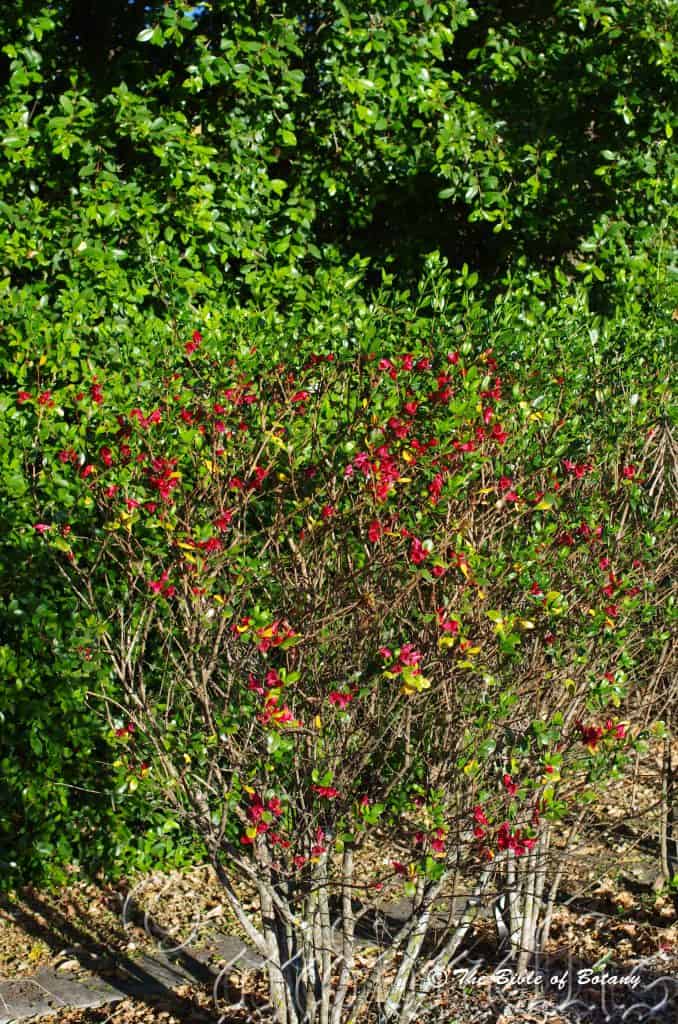
Greening Australia Norman Park Qld.
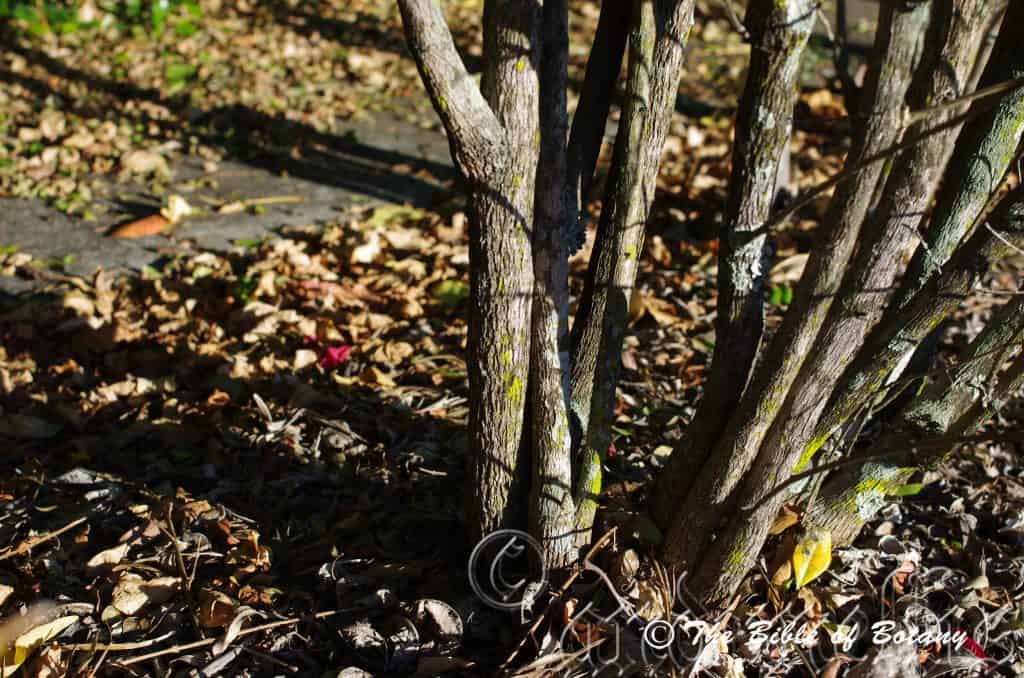
Greening Australia Norman Park Qld.

Greening Australia Norman Park Qld.

Greening Australia Norman Park Qld.

Greening Australia Norman Park Qld.
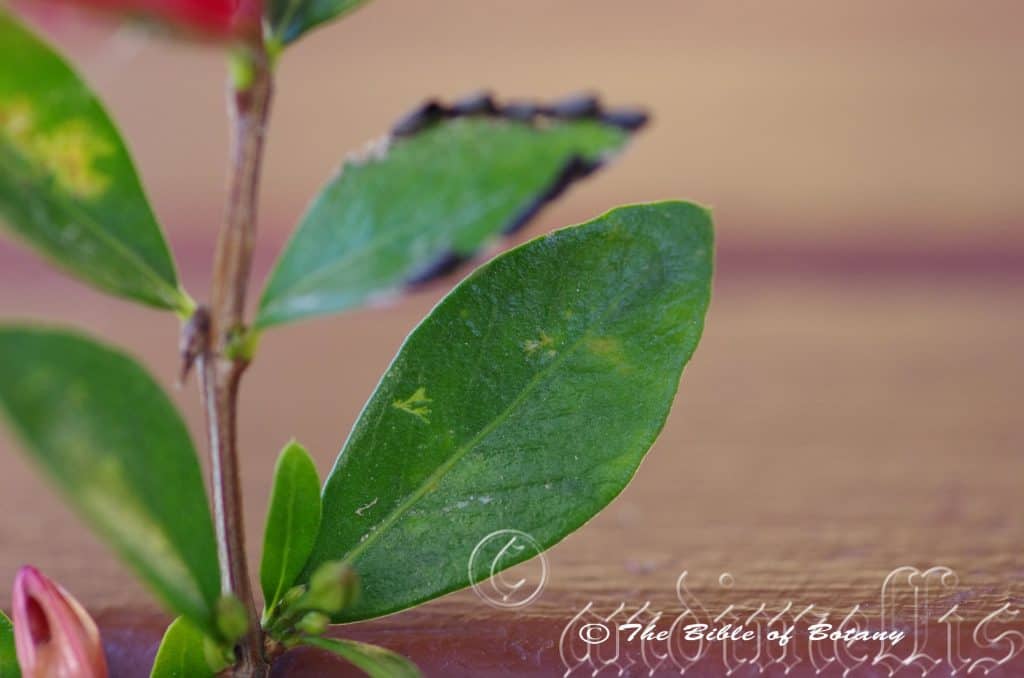
Mount Stuart Qld.
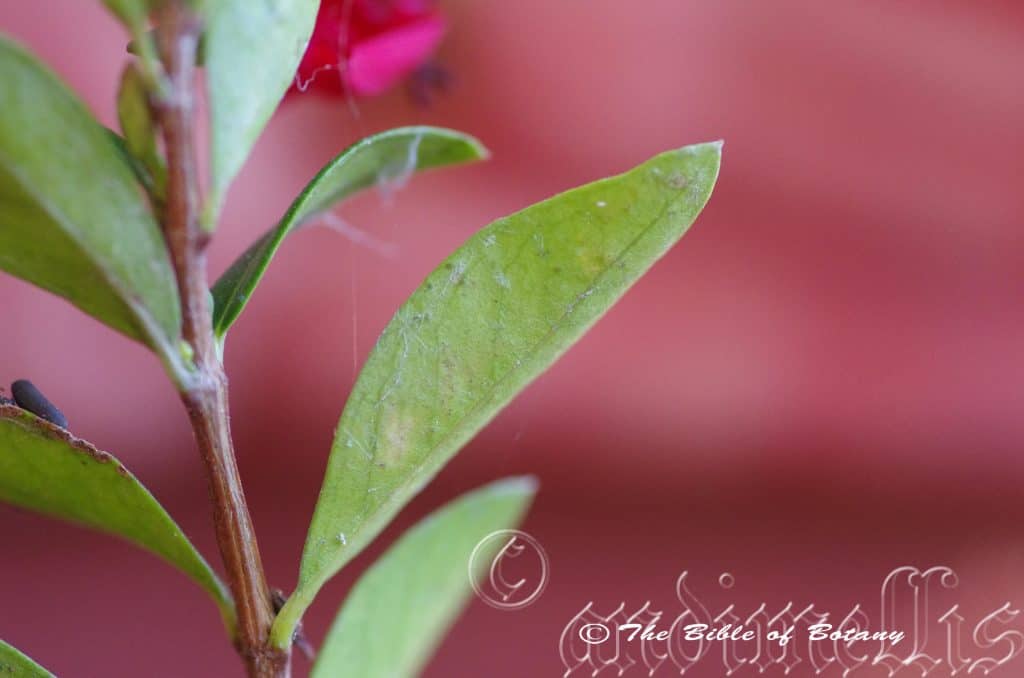
Mount Stuart Qld.
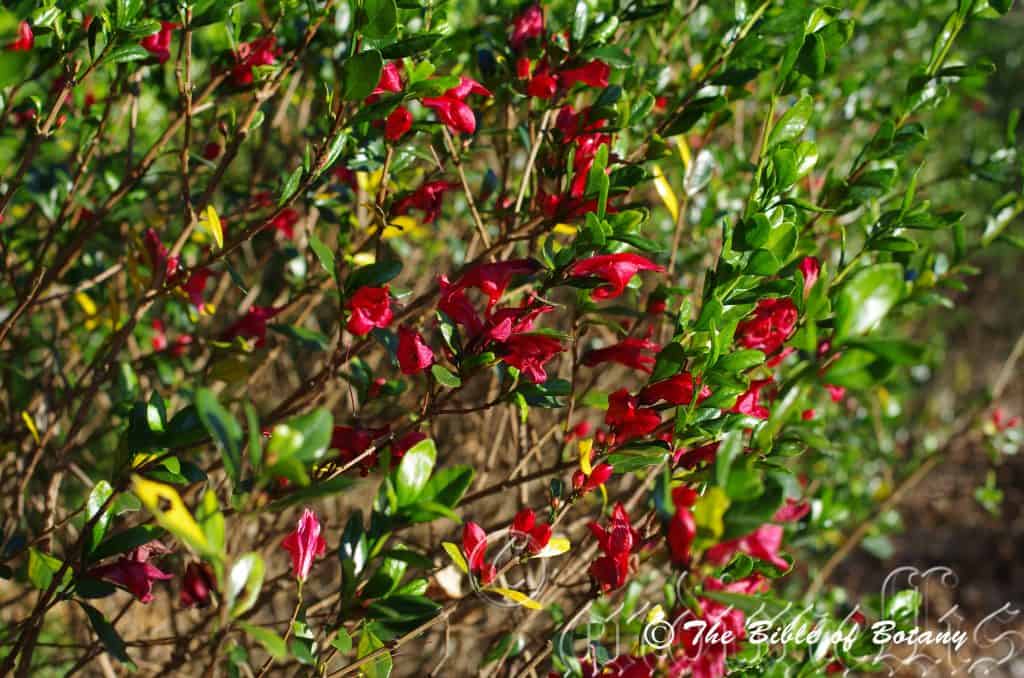
Greening Australia Norman Park Qld.
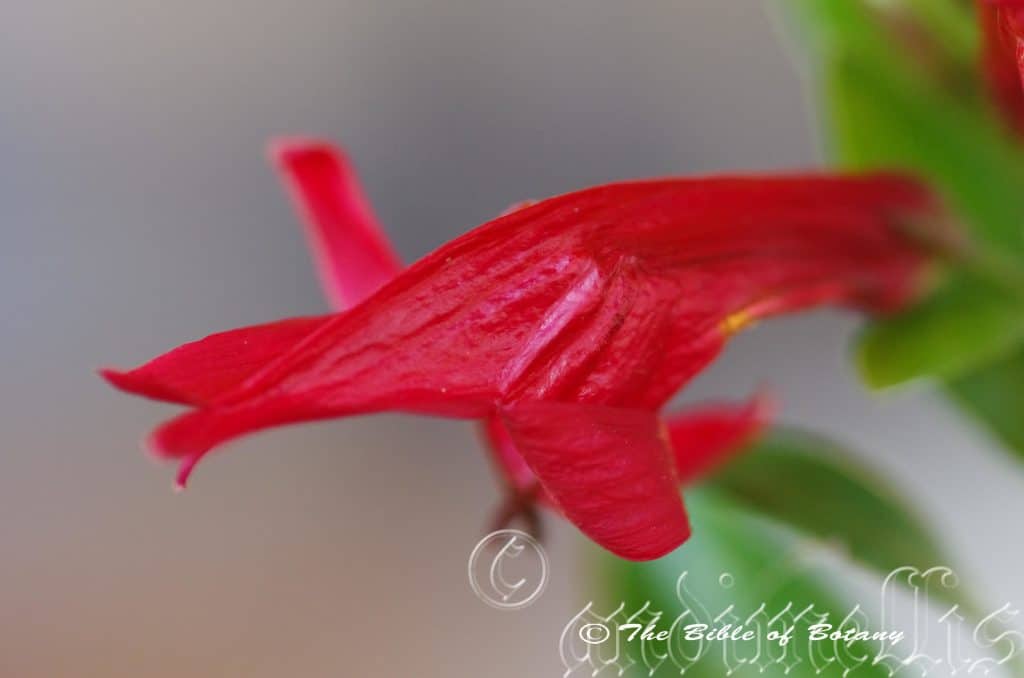
Mount Stuart Qld.
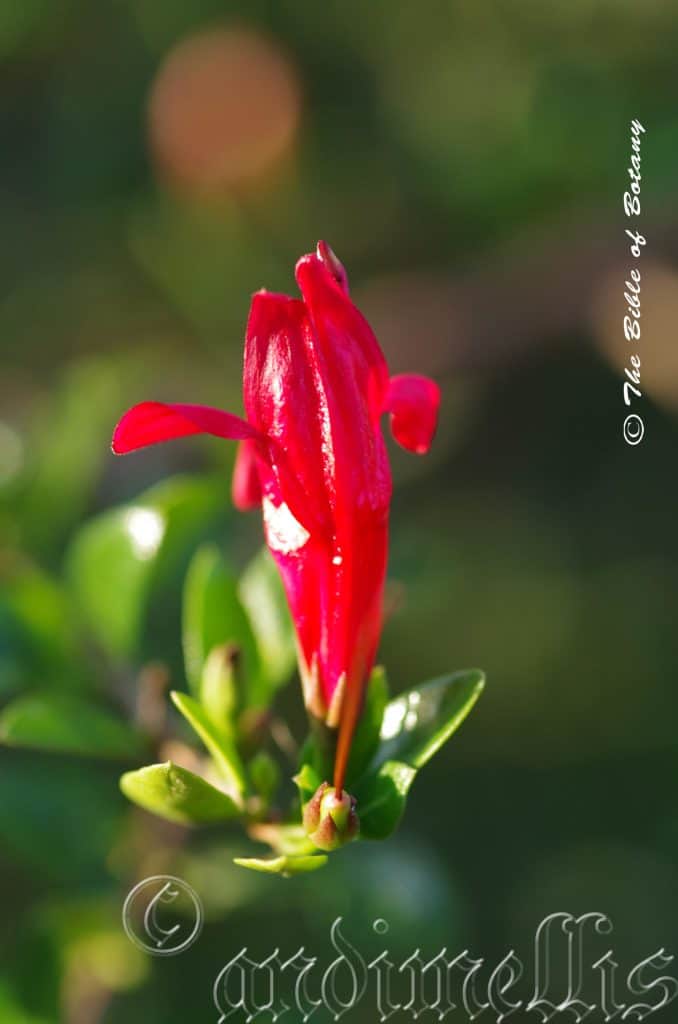
Mount Stuart Qld.
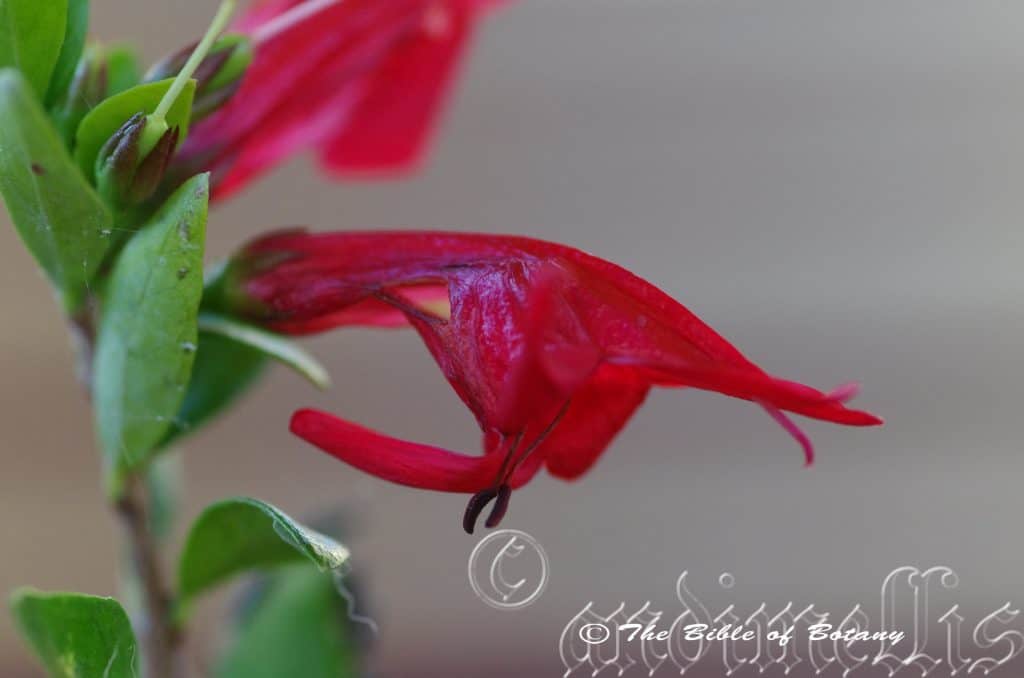
Mount Stuart Qld.
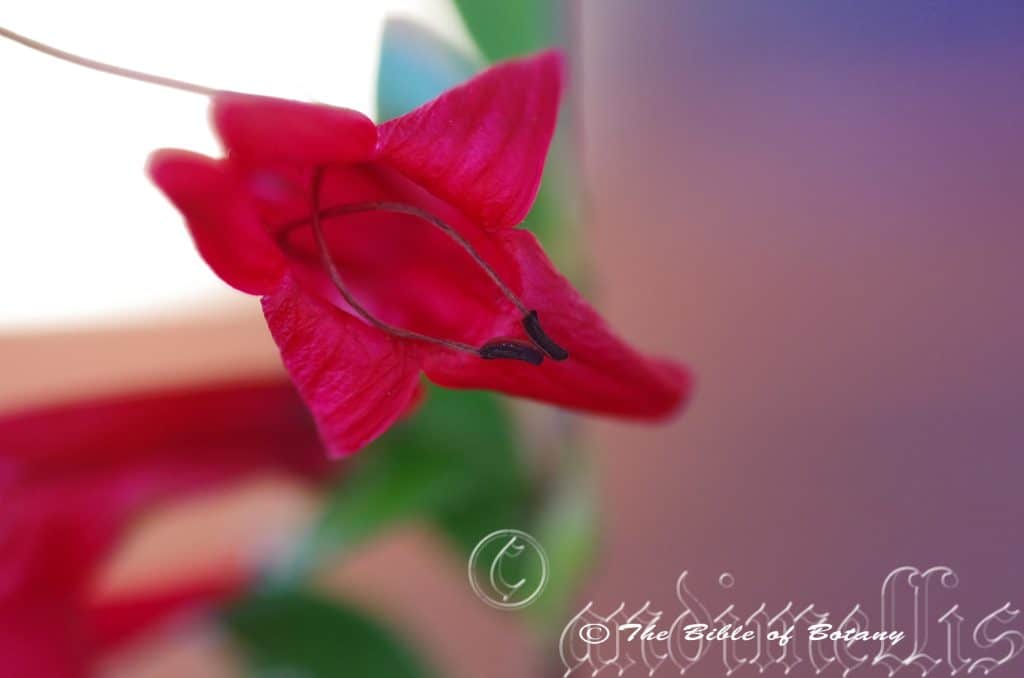
Mount Stuart Qld.

Mount Stuart Qld.
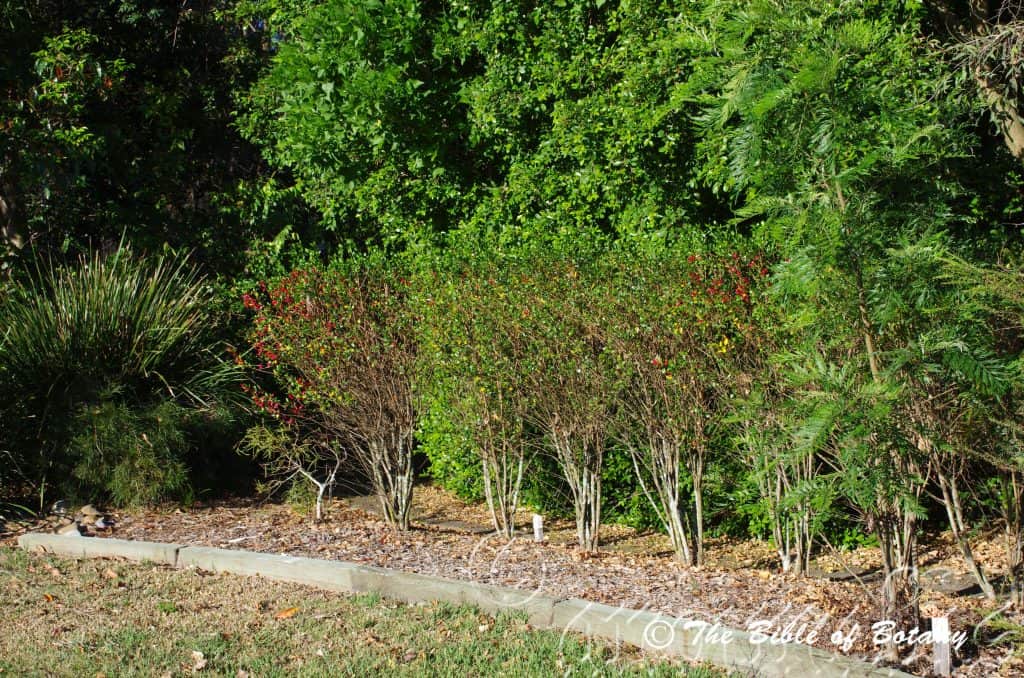
Greening Australia Norman Park Qld.
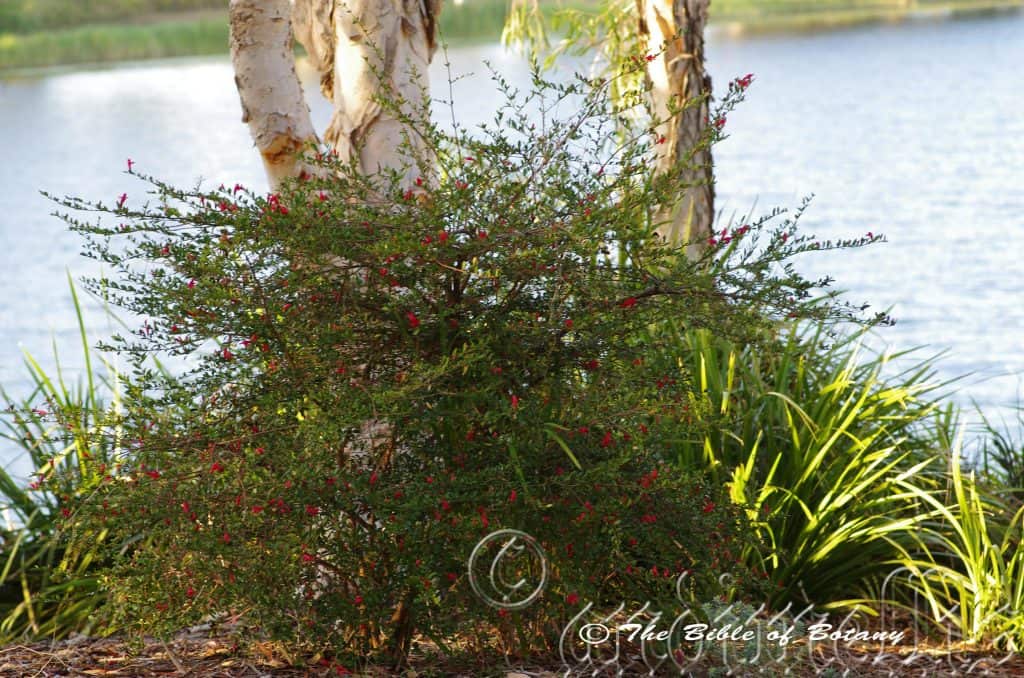
Ross River Townsville Qld.

Greening Australia Norman Park Qld.
Graptophyllum excelsum
Classification
Unranked: Eudicots
Class: Asterids
Order: Lamiales
Family: Acanthaceae
Genus: From Graphion, which is Ancient Greek for to write and Phullon/Phýllon, which is Ancient Greek for a leaf. It refers to some species, which have leaves with markings that appear to be scribbled on probably on most occasions due to the presence of leaf minor.
Specie: From Ex, which is Ancient Greek for out of the ordinary, outside or external and Celsum, which is Latin for high. It refers to plants, which are the tallest when compared to other species in the genus or exhibit exceptional beauty in their flowers or foliage.
Sub Species:
Common Name: Native Fuchsia or Scarlet Fuchsia.
Distribution:
Graptophyllum excelsum is endemic to Queensland. It is found south from the tip of Cape York Peninsular to Paluma National Park near Townsville and from Carmia to Rockhampton. It is also found on and east of the Great Dividing Range.
https://avh.ala.org.au/occurrences/search?taxa=Graptophyllum+excelsum#tab_mapView
Habitat Aspect Climate:
Graptophyllum excelsum prefers full sun to light dappled shade. It grows below medium size trees, low trees, or in low dry scrub lands and vine thickets to the edges of dry or moist Eucalyptus forests. The altitude ranges from 20 meters ASL to 850 meters ASL.
The temperatures range from minus 8 degrees in July to 36 degrees in January.
The rainfall ranges from lows of 1200mm to an average of 3200mm annually.
Soil Requirements:
Graptophyllum excelsum prefers poor to fairly fertile sandy loams, to light gritty clays, medium clays, alluvial flats, and moist podsolics and clay pans. The soils are usually derived from decomposed brown basalt, black basalt, sandstones, metamorphic rocks or shales. The soils pH ranges from 4.5PH to 7PH are preferred. It does not tolerate water logged soils. Non saline soils to slightly saline soils are tolerated.
Height & Spread:
Wild Plants: 3m to 8m by 2m to 4m.
Characteristics:
Graptophyllum excelsum’s grows as a small shrub with grey to mid grey-brown, scaly stems. The angulated branchlets are deep brown to deep reddish-brown, flaky and have 4.to 6 longitudinal deep grooves or furrows. The smaller stems are angulated dull and glabrous while the new growth is lime green and glabrous. The leaf scars are persistent on the branchlets.
Graptophyllum excelsum’s opposite leaves are oblong, narrow elliptical, lanceolate, oblanceolate, spathulate to narrow obovate and are clustered near the ends of the branchlets. The leaves measure 15mm to 30mm in length by 5mm to 12mm in width. The opposite leaves are symmetrical or asymmetrical. The base is cuneate to long tapering while the apex is obtuse to broadly acute. The margin is entire or with a few small teeth usually closer to the apex. It is recurved towards the apex, flat or curve upwards from the midvein. The concolourous grass green to lime green or deep grass green laminas are glabrous and glossy on the upper lamina and semi glossy on the lower lamina. The petioles are sessile to 0.5mm in length.
The inflorescence of Graptophyllum excelsum are born from erect pedicillate from the leaf axils. The calyx measures 6mm to 7.5mm in overall length while the 5 linear lobes measure 5mm to 6mm in length. The most prominent part of the flower is the deep red, deep scarlet red or deep purple red glabrous corolla. Individual corollas measure 25mm to 35mm in overall length. The corollas divide into 4.lobes. The upper is erect with an obtuse apex or is deeply emarginate. The 2 lateral lobes are broadly oblong, recurve backwards and have an obtuse apex.
The 2 stamens are slightly exserted, have red filaments and have large white to pale grey anthers. The anthers are connected along one side while the filaments are sparsely covered in white puberulent to hirtellous hairs near the base. The stamens measure 27mm to 37mm in length.
The deep pink to deep scarlet red or deep purple red stile measures 28mm to 38mm in length. The bifid style is deep reddish-brown. The flowers appear from late August to early December.
Graptophyllum excelsum’s fruits are an obovoidal to clavate woody capsules. The green capsules turn deep purple black to black when ripe are semi glossy and are covered in small farinaceous lumps and wrinkled. The style and calyx are persistent on the capsules which measure 17mm to 27mm in length. The capsules contain 2 round densely pitted and wrinkled seeds which measure 2.5mm to 4.5mm in diameter.
Wildlife:
The dense foliage and proliferation of small flowers is a great attraction and safe zone for smaller honeyeaters like the Silver Eyes, Zosterops lateralis Yellow Face Honeyeater, Lichenostomus chrysops Brown Honeyeater, Lichmera indistincta and the eastern Spinebill, Acanthorhynchus tenuirostris.
Cultivation:
Graptophyllum excelsum is a very beautiful small shrub which should be more widely grown in tropical, sub-tropical, semi-arid areas and temperate zones in Australia on both the east coast and west coast. It is most suitable for small to large gardens. Garden subjects usually grow 3 meters to 4.meters tall by 2meters to 3 meters wide. They can be pruned and with an upright habit are particularly good around sunny swimming pools and sunny courtyards, adding colour particularly in the winter months when the pool and surrounds are not all that attractive. In formal gardens they break up the foliage of English type gardens without being overpowering. They accept light pruning at the end of the flowering season and respond within a few weeks with new flushes of vivid glossy green leaves.
In Native gardens they can be used for bird attraction, borders or placed in a position to force a change of direction. A bend in a path can break up straight lines or they can be used in raised garden beds to force a change in direction. If it is surrounded by small shrubs with fine pale green leaves which flower at the same time of the year the deep red flowers would be a strong contrast set amongst similar style of flowers in yellow, white, lilacs or pinks. If plants with large flowers are used ensure the flowering times do not overlap as the larger flowers would be to overpowering.
Use them as a foreground plant with taller plants as the backdrop. Most red flowering Grevillea specie and this one is no exception look great when mixed with small Acacia specie. Try a prostrate Acacia specie surrounded by Grevillea acanthi folia for something different and strong.
Graptophyllum excelsum suckers under favourable conditions and hard pruning will induce suckering to occur. Plants will sucker quickly if the root zone is severed or comes into contact with the surface. This is a great attribute for fences and hedges which the plants are most suitable for.
If Lime is used in the soil to help promote flowering and health of the plants beware acid loving plants like Hakea specie and Grevillea specie as most of these plants detest even small amounts of lime and phosphorous.
It is ideal for growing in large urns along the veranda, in courtyards foyers or around swimming pools. It would also make a great bonsai plant for beginners and could even be tried in topiary sculptured gardens.
Propagation:
Seeds: Graptophyllum excelsum seeds can be planted directly into a seed raising mix. Cover fresh seeds with 5mm of fine sand and keep moist not wet. Place the tray in a warm sunny position.
When the seedlings are 25mm to 50mm tall, prick them out and plant them into 50mm native tubes using a good organic mix. The seedlings are easy to handle and very few losses will occur.
Once the seedlings reach 150mm to 200mm in height, nip the tips out before planting them out into their permanent position. For mass plantings plant them at of 1.5 meter to 3 meter centers.
Cuttings: Use 50mm to 60mm long half ripened material from the present season’s growth. Take them in mid-autumn or early spring. Remove half the leaves from the bottom section being careful not to tear the bark.
1 Prepare the cutting mix by adding one third sharp clean river sand, one third peat and one third perlite. These ingredients are sterilize,
2 Select good material from non diseased plants,
3 Select semi green stems for cuttings. Look for a stem with two or three nodes,
4 Place the cutting on a flat, hard surface, and make a clean cut down one side of the cutting at the base for 10mm with a sharp sterile knife or razor blade. – This scarification of the node will increase the chances of roots emerging from this spot. Now remove all but one or two the leaves, leaving the apex leaves in tact. If the leaves are very large in proportion to the stem, cut off the apical halves.
5 Fill a saucer with water, and place a little weak to medium rooting hormone into another container like a milk bottle top. Dip the node end of the cutting into the water and then into the rooting hormone. Tap off any excess hormone,
6 Use a small dipple stick or old pencil to poke a hole into the soilless potting mix. Ensure the hole is slightly larger than the stem diameter and be careful not to wipe the rooting hormone off the cuttings base, place the cuttings in a pattern ensuring the cuttings are not touching each other,
7 I like to place the pots in Plastic bags to help maintain temperature and moisture. Place in a semi shaded place like under 50mm shade cloth.
8 When the cuttings have struck, open the bag to allow air circulation for a few days to a week,
9 Once hardened off remove the cuttings from the bag and allow to further hardening for a few more days,
10 Transplant into a good potting mix to grow on.
Propagation is also very easy by severing suckers and transplanting them directly into 50mm native tubes or 200mm buckets for larger suckers.
Fertilize using seaweed, fish emulsion or organic chicken pellets soaked in water on an alternate basis. Fertilize every two months until the plants are established then twice annually in early September or March to maintain health, vitality and better flowering. The chicken pellets are particularly good as it is usually slightly alkaline.
Often older plants will send out root suckers especially following pruning. These can be severed, by digging down below the sucker and cutting either side of the mainroot. Dig a little further and sever the roots of the new plant. Repot into a 15omm or 250mm pot and water with seaweed solution. Once the sucker sends out new shoots and they harden off they can be treated as normal pot plants ready for transplanting out into the garden.
Further Comments from Readers:
“Hi reader, it seems you use The Bible of Botany a lot. That’s great as we have great pleasure in bringing it to you! It’s a little awkward for us to ask, but our first aim is to purchase land approximately 1,600 hectares to link several parcels of N.P. into one at The Pinnacles NSW Australia, but we need your help. We’re not salespeople. We’re amateur botanists who have dedicated over 30 years to saving the environment in a practical way. We depend on donations to reach our goal. If you donate just $5, the price of your coffee this Sunday, We can help to keep the planet alive in a real way and continue to bring you regular updates and features on Australian plants all in one Botanical Bible. Any support is greatly appreciated. Thank you.”
In the spirit of reconciliation we acknowledge the Bundjalung, Gumbaynggirr and Yaegl and all aboriginal nations throughout Australia and their connections to land, sea and community. We pay our respect to their Elders past, present and future for the pleasures we have gained.
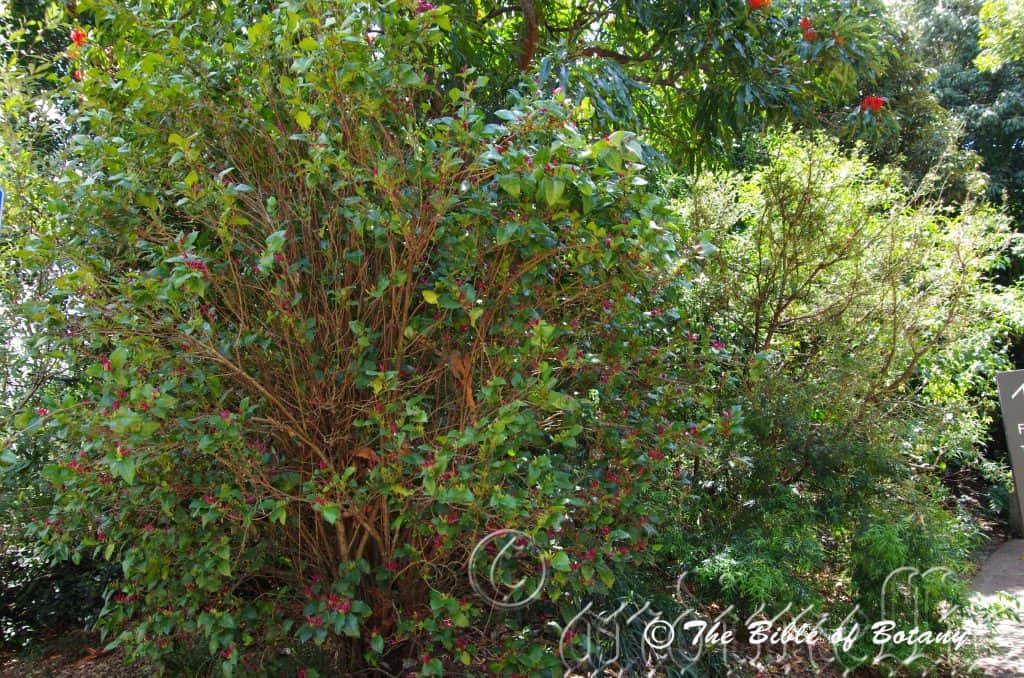
Roma Street Floral Gardens Qld.

Roma Street Floral Gardens Qld.
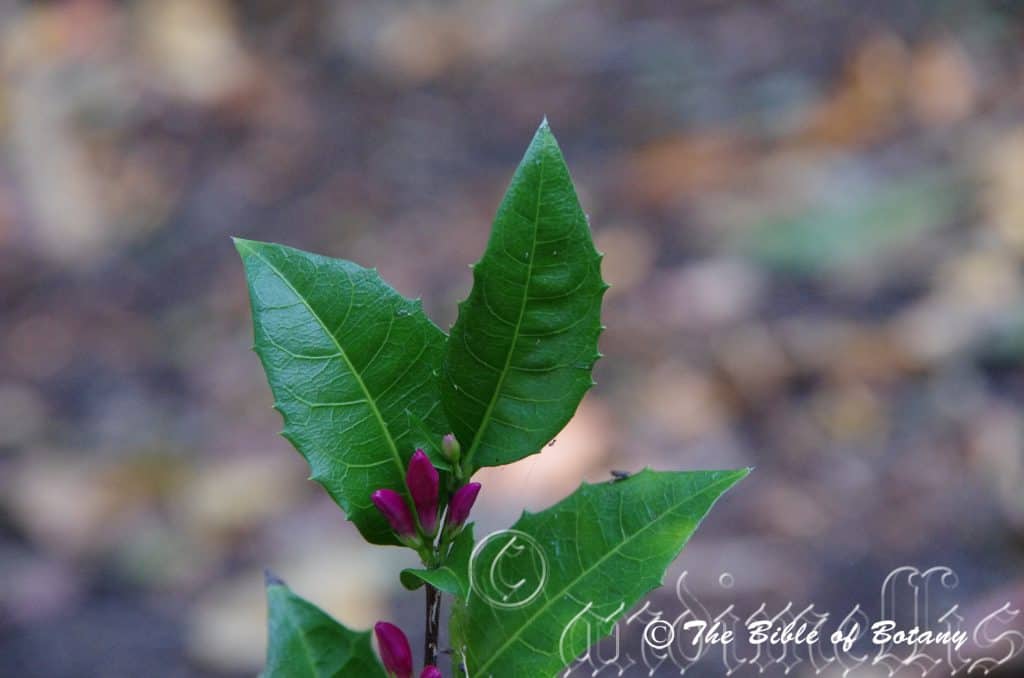
Mount Cootha Botanic Gardens Qld.
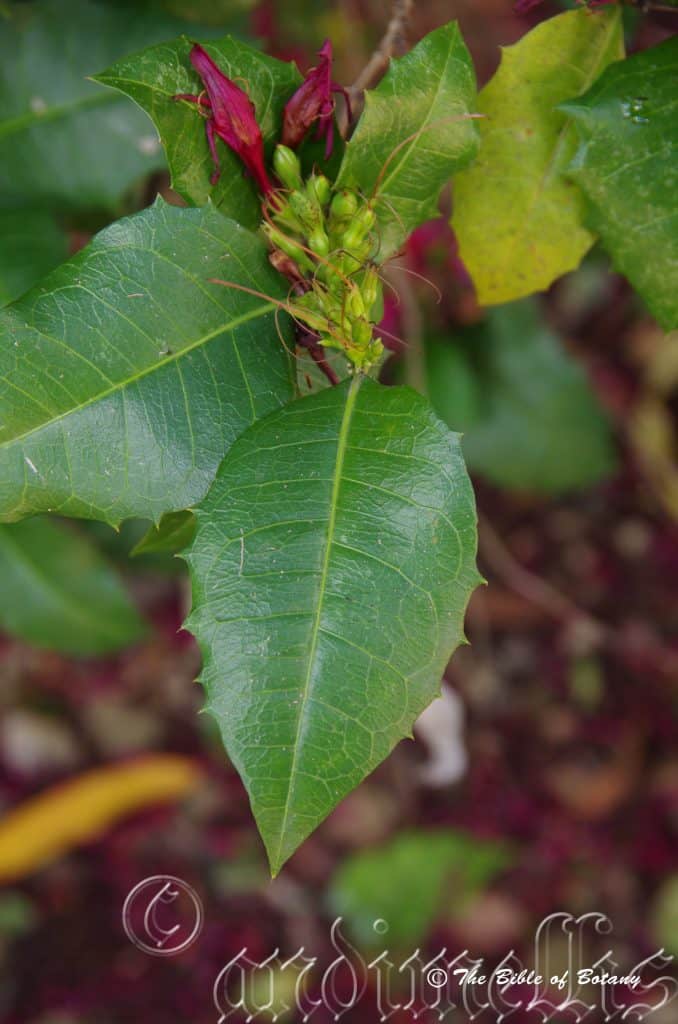
Roma Street Floral Gardens Qld.
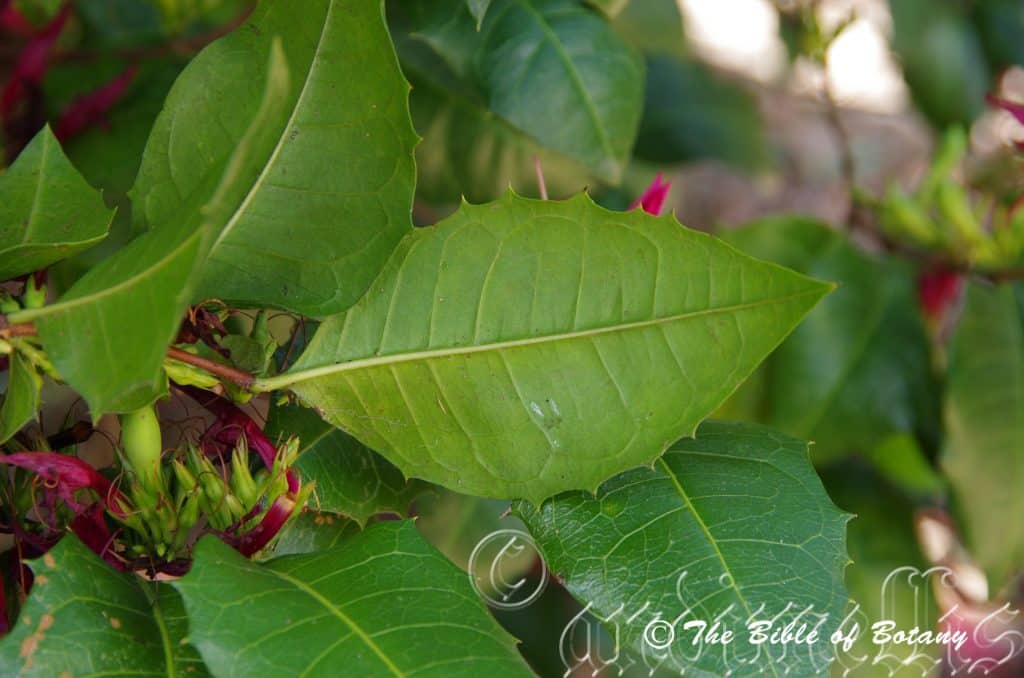
Roma Street Floral Gardens Qld.

Roma Street Floral Gardens Qld.
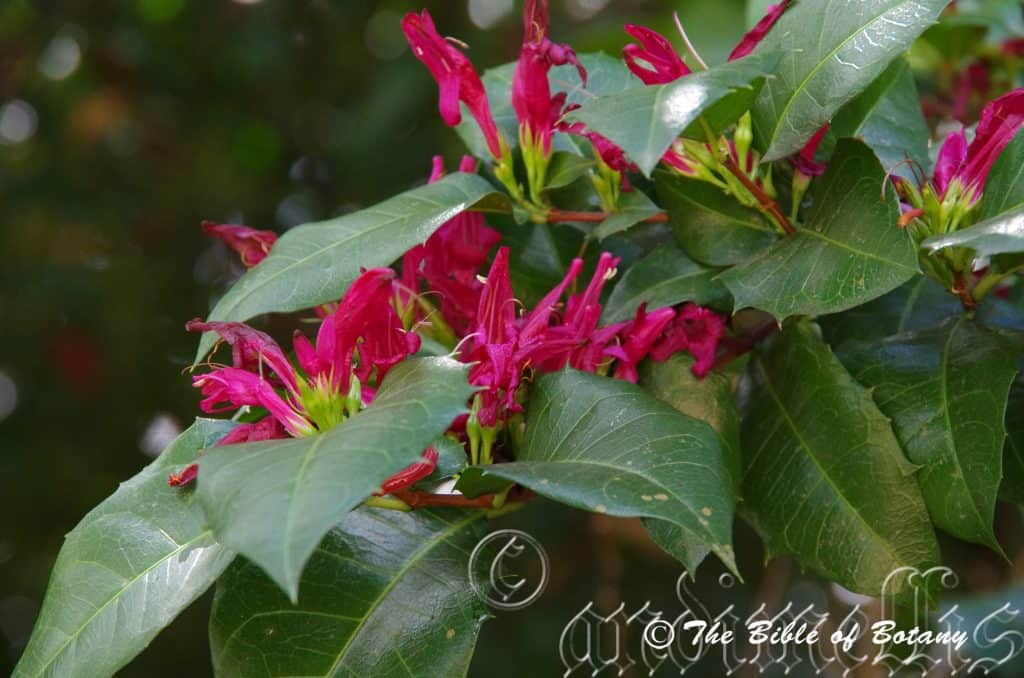
Roma Street Floral Gardens Qld.
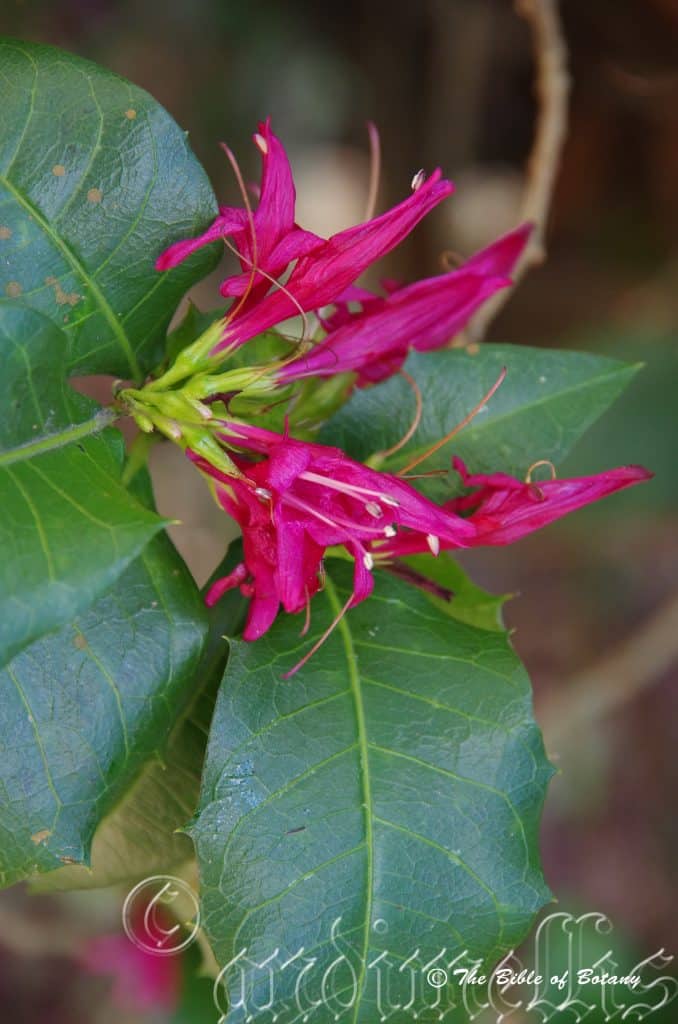
Roma Street Floral Gardens Qld.
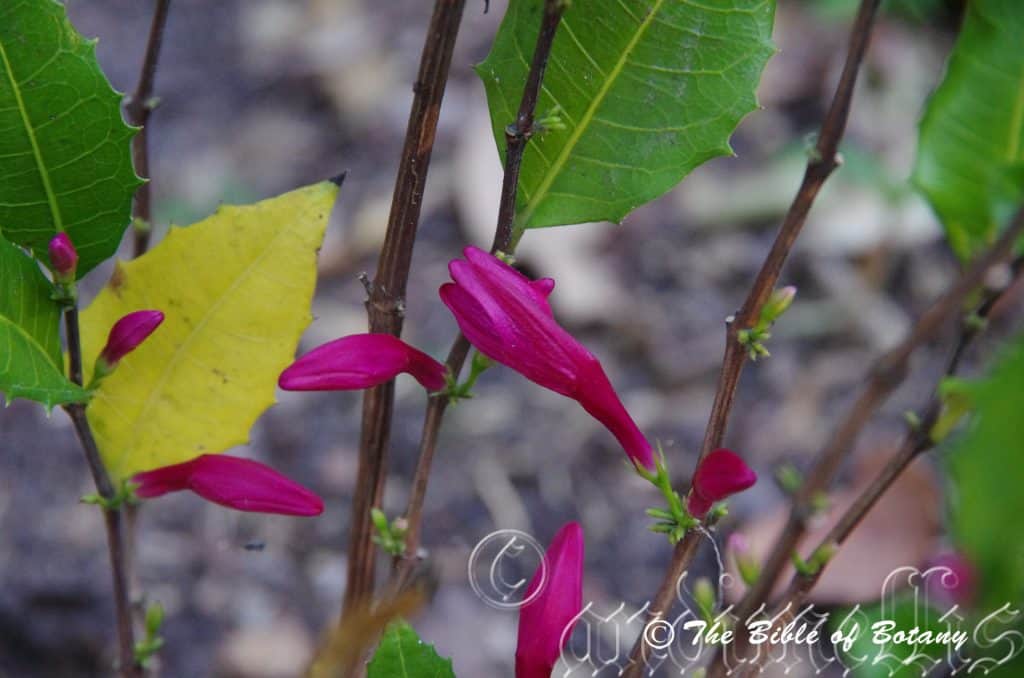
Roma Street Floral Gardens Qld.
Graptophyllum ilicifolium
Classification:
Unranked: Eudicots
Class: Asterids
Order: Lamiales
Family: Acanthaceae
Genus: From Graphion, which is Ancient Greek for to write and Phullon/Phýllon, which is Ancient Greek for a leaf. It refers to some species, which have leaves with markings that appear to be scribbled on probably on most occasions due to the presence of leaf minor.
Specie: From Ilex, which is Ancient Greek for holly oak and from Folium which is Latin for foliage. It refers to leaves, which resemble the European holly oak.
Sub Species:
Common Name: Holly Leaf Fuchsia.
Distribution:
Graptophyllum ilicifolium is endemic to Queensland except for a single isolated population on the Adelaide River in the Northern Territory. It is found south from Gregory Creek and Shute Harbour to Miriam Vale on the eastern side of the Great Dividing Range in central coastal Queensland.
https://avh.ala.org.au/occurrences/search?taxa=Graptophyllum+ilicifolium#tab_mapView
Habitat Aspect Climate:
Graptophyllum ilicifolium prefers light dappled shade. It grows below medium size trees, low trees in notophyll forests or in low dry scrub lands, to the edges of dry rainforests and dry riparian zones. The altitude ranges from 16 meters ASL to 200 meters ASL.
The temperatures range from 8 degrees in July to 36 degrees in January.
The rainfall ranges from lows of 1000mm to an average of 1600mm annually.
Soil Requirements:
Graptophyllum ilicifolium prefers better quality heavier sandy loams, to medium gritty clays. The soils are usually derived from various types of decomposed granites including meta-granites and at times meta-sedimentary rocks. The soils pH ranges from 4.5pH to 5.5pH are preferred. It does not tolerate water logged soils. Non saline soils to moderately saline soils are tolerated.
Height & Spread:
Wild Plants: 3m to 5m by 2m to 4m.
Characteristics:
Graptophyllum ilicifolium’s main stems are a grey to mid grey-brown and scaly. The angulated branchlets are deep brown to deep reddish-brown, flaky and have 7 to 8 longitudinal deep grooves or furrows. The smaller stems are angulated dull and glabrous while the new growth is lime green and glabrous. The leaf scars are persistent on the branchlets.
Graptophyllum ilicifolium’s alternate leaves are clustered near the apexes of the stems. The ovate to broad elliptical leaves measure 25mm to 50mm in length by 20mm to 30mm in width. The bases are cuneate while the apexes are broad acute to tapering acute ending in a sharp point. The discolourous mid green deep green laminas are glabrous and glossy on the upper lamina while the lower laminas are dull and much paler. The laminas are irregularly undulating and decurve downwards on the apical half while the margins are toothed and end in a short pungent spine. The mid vein and lateral veins are prominent on both laminas but more strongly prominent on the lower laminas. The reticulating secondary veins are prominent on the upper laminas. The bright grass-green petioles measure 2mm to 4mm in length.
The inflorescence of Graptophyllum ilicifolium are born as a cluster on the stem opposing the leaf. There is a leaf bract associated with the cluster which remains on the stem after the flower develops and resembles a leaf.
The grass-green calyx measures 7mm to 9mm in overall length while the 4.narrow triangular lobes measure 5mm to 6.5mm in length. The palate corolla is the most prominent part of the flower which is deep carmine-red, glossy and glabrous. The individual corollas measure 30mm to 36mm in overall length by 6mm to 7.5mm in diameter and divide into 4.dimorphic lobes. The upper lobes are erect and united with obtuse apexes and measure 14mm to 17mm in length including the non-divided apexes which measure 2mm to 4mm in length. The 2 lateral lobes are narrow oblong, curve strongly backwards and have a tapering obtuse apex. The lateral lobes measure 8mm to 10mm in length by 3mm to 5mm in width.
The 4.dimorphic stamens usually 2 short and 2 long or at times 1 short and 3 long are exserted from the corolla tube, have white, pink to carmine-red filaments and large white oblique anthers. The filiform filaments are sparsely covered in white puberulent hairs near the base. The shorter filaments measure 25mm to 29mm in length while the longer filaments measure 28mm to 33mm in length. The anthers measure 1.2mm to 1.8mm in length.
The deep carmine-red pistil measures 28mm to 38mm in length. The flowers appear from July to September.
Graptophyllum ilicifolium’s fruits are woody, clavate capsules. The green capsules turn deep purple black to black when ripe. The style and calyx are persistent on the capsules which measure 17mm to 27mm in length. The capsules contain 2 ovoidal seeds which measure 2.5mm to 4.5mm in diameter.
Wildlife:
The dense apical foliage of Graptophyllum ilicifolium and proliferation flowers are great attractions and safe zone for smaller honeyeaters like the Silver Eyes (Zosterops lateralis), Yellow Face Honeyeater (Lichenostomus chrysops), Brown Honeyeater (Lichmera indistincta) and the eastern Spinebill (Acanthorhynchus tenuirostris) which eat the fruit and nest in the trees.
Cultivation:
Graptophyllum ilicifolium is a very beautiful small shrub which should be more widely grown in tropical, sub-tropical, semi-arid areas and warm temperate zones in Australia on both the east coast and west coast. It is most suitable for small to large gardens. Garden subjects usually grow 3 meters to 4.5 meters in height by 2meters to 3 meters in diameter. They can be pruned to maintain a smaller bushier shrub. The upright growth habit is particularly good around sunny to semi shaded swimming pools and sunny courtyards, adding brilliant colour in the winter months when the pool and surrounds are not all that attractive.
In formal gardens they break up the foliage of English type gardens without. It accepts light pruning at the end of the flowering season and respond within a few weeks with new flushes of vivid glossy green leaves.
In Native gardens it can be used for bird attraction, hedges or placed in a position to force a change of direction. A bend in a path can break up straight lines or they can be used in raised garden beds to force a change in direction. If it is surrounded by small shrubs with fine pale green leaves which flower at the same time of the year the deep red flowers would be a strong contrast set amongst similar style of flowers in yellow, white, lilacs or pinks. If plants with large flowers are used ensure the flowering times do not overlap as the larger flowers would be to overpowering.
Use it as a midground plant with taller plants with large deep green leaves as the backdrop. Most yellow or orange flowering Grevillea specie medium Acacia like Acacia fimbriata make a good backdrop with strong contrasting flowers. Try prostrate Acacia like Acacia cultiformis prostrate form in the foreground or surround Graptophyllum excelsum with it in a garden bed to have a brilliant winter display of red and gold.
Graptophyllum excelsum suckers under favourable conditions and hard pruning will induce suckering to occur. Plants will sucker quickly if the root zone is severed or comes into contact with the surface. This is a great attribute for fences and hedges which the plants are most suitable for.
Hard pruning will induce suckering to occur. Plants will sucker quickly if the root zone is severed or comes into contact with the surface. This is a great attribute for fences and hedges which the plants are most suitable for.
If Lime is used in the soil to help promote flowering and health of the plants beware acid loving plants like Hakea specie and Grevillea specie as most of these plants detest even small amounts of lime and phosphorous.
It is ideal for growing in large urns along the veranda, in courtyards foyers or around swimming pools. It would also make a great bonsai plant for beginners and could even be tried in topiary sculptured gardens.
Propagation:
Seeds: Graptophyllum ilicifolium is easy to propagate from cuttings and seed also germinates well if the seed is fresh.
The seeds can be planted directly into a seed raising mix. Cover fresh seeds with 5mm of fine sand and keep moist not wet. Place the tray in a warm sunny position or beneath 30mm shade cloth. When the seedlings are 25mm to 50mm tall, prick them out and plant them into 50mm native tubes using a good organic mix. The seedlings are easy to handle and very few losses will occur.
Once the seedlings reach 150mm to 200mm in height, nip the tips out before planting them out into their permanent position. For mass plantings plant them at of 1.5 meter to 3 meter centers.
Cuttings: Use 50mm to 60mm long half ripened material from the present season’s growth. Take them in mid-autumn or early spring. Use 50mm to 60mm long half ripened material from the present season’s growth. Take them in mid-autumn or early spring. Remove half the leaves from the bottom section being careful not to tear the bark.
1 Prepare the cutting mix by adding one third sharp clean river sand, one third peat and one third perlite. These ingredients are sterilize,
2 Select good material from non diseased plants,
3 Select semi green stems for cuttings. Look for a stem with two or three nodes,
4 Place the cutting on a flat, hard surface, and make a clean cut down one side of the cutting at the base for 10mm with a sharp sterile knife or razor blade. – This scarification of the node will increase the chances of roots emerging from this spot. Now remove all but one or two the leaves, leaving the apex leaves in tact. If the leaves are very large in proportion to the stem, cut off the apical halves.
5 Fill a saucer with water, and place a little weak to medium rooting hormone into another container like a milk bottle top. Dip the node end of the cutting into the water and then into the rooting hormone. Tap off any excess hormone,
6 Use a small dipple stick or old pencil to poke a hole into the soilless potting mix. Ensure the hole is slightly larger than the stem diameter and be careful not to wipe the rooting hormone off the cuttings base, place the cuttings in a pattern ensuring the cuttings are not touching each other,
7 I like to place the pots in Plastic bags to help maintain temperature and moisture. Place in a semi shaded place like under 50mm shade cloth.
8 When the cuttings have struck, open the bag to allow air circulation for a few days to a week,
9 Once hardened off remove the cuttings from the bag and allow to further hardening for a few more days,
10 Transplant into a good potting mix to grow on.
Propagation is also very easy by severing suckers and transplanting them directly into 50mm native tubes or 200mm buckets for larger suckers.
Fertilize using seaweed, fish emulsion or organic chicken pellets soaked in water on an alternate basis. Fertilize every two months until the plants are established then twice annually in early September or March to maintain health, vitality and better flowering. The chicken pellets are particularly good as it is usually slightly alkaline.
Often older plants will send out root suckers especially following pruning. These can be severed, by digging down below the sucker and cutting either side of the mainroot. Dig a little further and sever the roots of the new plant. Repot into a 15omm or 250mm pot and water with seaweed solution. Once the sucker sends out new shoots and they harden off they can be treated as normal pot plants ready for transplanting out into the garden.
Fertilize using seaweed, fish emulsion or organic chicken pellets soaked in water on an alternate basis. Fertilize every two months until the plants are established then twice annually in early September or March to maintain health, vitality and better flowering. The chicken pellets are particularly good as it is usually slightly alkaline.
Further Comments from Readers:
“Hi reader, it seems you use The Bible of Botany a lot. That’s great as we have great pleasure in bringing it to you! It’s a little awkward for us to ask, but our first aim is to purchase land approximately 1,600 hectares to link several parcels of N.P. into one at The Pinnacles NSW Australia, but we need your help. We’re not salespeople. We’re amateur botanists who have dedicated over 30 years to saving the environment in a practical way. We depend on donations to reach our goal. If you donate just $5, the price of your coffee this Sunday, We can help to keep the planet alive in a real way and continue to bring you regular updates and features on Australian plants all in one Botanical Bible. Any support is greatly appreciated. Thank you.”
In the spirit of reconciliation we acknowledge the Bundjalung, Gumbaynggirr and Yaegl and all aboriginal nations throughout Australia and their connections to land, sea and community. We pay our respect to their Elders past, present and future for the pleasures we have gained.
Gratiola pedunculata
Classification:
Unranked: Eudicots
Class: Asterids
Order: Lamiales
Family: Acanthaceae
Genus: From Gr?tia, which is Latin for the grace of God or Gr?ti?sum which is Latin for pleasing and agreeable. It refers to the medicinal qualities of some ancient plants that had this given name.
Species: From Pous, which is Ancient Greek or Pes/Pedi, which is Latin for a foot or feet. It refers to flowers, which have a peduncle and pedicel. The primary or main stalk which all the pedicels are derived.
Sub Species:
Common Name:
Distribution:
Gratiola pedunculata is found in 4.disjunct populations in Western Australia south from the Swan Coastal Plain near Gin Gin in the north to Busselton in the south and near Cranbrooke and Cape Arid National Park.
In the east it is widely distributed down the eastern third of Queensland and New South Wales, south from Trinity Bay to Mount Gambier in the south eastern corner of South Australia. It is also found along the Murray River from the Victorian border south to Lake Alexandrina and Friedrichswalde Creek.
https://avh.ala.org.au/occurrences/search?taxa=Gratiola+pedunculata#tab_mapView
Habitat Aspect Climate:
Gratiola pedunculata prefers full sun to light dappled shade. It grows below medium size trees, low trees, or in low dry scrub lands and vine thickets, dry Eucalyptus forests, Eucalyptus forests in shallow ephemeral depressions, often growing in shallow water beside dams, table drains swamps and lagoons. The altitude ranges from 20 meters ASL to 850 meters ASL.
The temperatures range from minus 2 degrees in July to 36 degrees in January.
The rainfall ranges from lows of 800mm to an average of 3000mm annually.
Soil Requirements:
Gratiola pedunculata prefers poor to fairly fertile sandy loams, to light gritty clays, medium clays, alluvial flats or moist podsolics. The soils are usually derived from decomposed brown basalt, black basalt, sandstones, metamorphic rocks or shales. The soils pH ranges from 4.5PH to 7PH are preferred. It tolerates water logged soils. Non saline soils to moderately saline soils are tolerated.
Height & Spread:
Wild Plants: 0.3m to 0.5m by 0.1m to 0.2m.
Characteristics:
Gratiola pedunculata’s grows as an erect to decumbent perennial herb. The stems are glabrous and olive-green with fine reddish-purple striations. It is fleshy, terete and covered in minute yellow glands. It is moderately branched from near the base and will root from the nodes where they touch the soil.
The opposite, ovate to lanceolate leaves measure 8mm to 30mm in length by 3mm to 12mm in width. The bases are rounded and stem clasping while the apexes are tapering obtuse to acute. The concolourous green to olive-green laminas are dull and glabrous to covered in minute golden glands. The laminas recurve upwards slightly from the midvein to the margins while the margins are entire to toothed usually on the apical half.
The inflorescence are usually born singly or rarely in pairs from the leaf axils. The 4.or 5 leaf like dimorphic bracts are broad linear to narrow lanceolate and covered in minute golden glands. They measure 1.5mm to 3.5mm in length. The 5 to 7 mid green sepals are broad linear to narrow lanceolate and covered in minute golden glands. They measure 4mm to 4.5mm in length. The corolla tube white to pastel pink or pastel yellow with fine red longitudinal stripes externally and internally. The corolla tube is glabrous and covered in minute golden glands externally and is densely covered in pastel yellow hirsute to tomentose hairs near the mouth internally. The corollas measure 5mm to 9mm in overall length. The corollas divide into 4.contorted lobes. The upper 3 obtuse lobes measure 2.5mm to 4.5mm in length by 3mm to 5mm in width. The lower deeply emarginate lobe measures 3.5mm to 4mm in length by 5mm to 9mm in width. The pedicels measure 8mm to 26mm in length.
The 0 to 2 staminodes are inserted while the pistil measures 1.5mm to 2.5mm in length. The flowers appear from late August to early March.
The fruits are broad ovoidal capsules with a truncate base and an acute apex. The green capsules turn deep fawn to pale brown while the sepals are persistent at the base of the capsules when ripe. The sepals are resinous to scabrous externally and smooth and glabrous internally while the capsules are smooth and glabrous. The capsules measure 3.5mm to 5mm in length by 2.6mm to 2.9mm in diameter at the base. The capsules split into 4 equal follicles.
Wildlife:
Gratiola pedunculata’s support many small black beetles during the warmer months when it is in flower. It is well known frog habitat plant especially those frogs that inhabit marshy areas like the common Striped Rocket Frog (Litoria nasuta) and the Green Thighed Frog (Litoria brevipalmata) just to mention 2 found around our home.
Cultivation:
Gratiola pedunculata is an interesting addition for around fish ponds and frog ponds in sunny areas. It is best planted in pots for artificial small ponds or planted around the water’s edge for natural ponds and dams.
It is also a good plant for indoor aquariums provided there is plenty of light with some direct sunlight every day. The plants are easy to maintain and flower from an early stage. The flowers are an indication to the plants health when grown in marginal light areas.
Propagation:
Seeds: Gratiola pedunculata seeds can be planted directly into a seed raising mix. Cover fresh seeds with 5mm of fine sand and keep moist not wet. Place the tray in a warm sunny position. When the seedlings are 25mm to 50mm tall, prick them out and plant them into 50mm native tubes using a good organic mix. The seedlings are easy to handle and very few losses will occur.
Once the seedlings reach 150mm to 200mm in height, nip the tips out before planting them out into their permanent position. For mass plantings plant them at of 1.5 meter to 3 meter centers.
Cuttings: Use 50mm to 60mm long half ripened material from the present season’s growth. Take them in mid-autumn or early spring. Remove half the leaves from the bottom section being careful not to tear the bark. Take a 10mm slice off the bark from the bottom of the cutting on one side. Using a mild rooting hormone, dip the cutting in and place it in a moist sterile seed raising mix. When the cuttings have obviously struck and have developed good roots treat them as for seedlings.
Propagation is also very easy by severing suckers and transplanting them directly into 50mm native tubes.
Fertilize using seaweed, fish emulsion or organic chicken pellets soaked in water on an alternate basis. Fertilize every two months until the plants are established then twice annually in early September or March to maintain health, vitality and better flowering. The chicken pellets are particularly good as it is usually slightly alkaline.
Further Comments from Readers:
“Hi reader, it seems you use The Bible of Botany a lot. That’s great as we have great pleasure in bringing it to you! It’s a little awkward for us to ask, but our first aim is to purchase land approximately 1,600 hectares to link several parcels of N.P. into one at The Pinnacles NSW Australia, but we need your help. We’re not salespeople. We’re amateur botanists who have dedicated over 30 years to saving the environment in a practical way. We depend on donations to reach our goal. If you donate just $5, the price of your coffee this Sunday, We can help to keep the planet alive in a real way and continue to bring you regular updates and features on Australian plants all in one Botanical Bible. Any support is greatly appreciated. Thank you.”
In the spirit of reconciliation we acknowledge the Bundjalung, Gumbaynggirr and Yaegl and all aboriginal nations throughout Australia and their connections to land, sea and community. We pay our respect to their Elders past, present and future for the pleasures we have gained.
Grevillea acanthifolia
Classification:
Unranked: Eudicots
Class: Magnoliopsida
Order: Proteales
Family: Proteaceae
Genus: Is named in honour of C. F. Greville; 1749-1809, who was a British expert botanist on Algae, a foundation member of the London Horticultural Society and a collector of rare plants.
Species: From ákantha, which is Ancient Greek for to have a thorn or spine and Folium, which is Latin for foliage. It refers to leaves, which have thorns.
Sub species: Grevillea acanthifolia subsp. acanthifolia. From ákantha, which is Ancient Greek for to have a thorn or spine and Folium, which is Latin for foliage. It refers to leaves, which have thorns.
Sub species: Grevillea acanthifolia subsp. paludosa. From ákantha, which is Ancient Greek for to have a thorn or spine and Folium, which is Latin for foliage. It refers to leaves, which have thorns.
Sub species: Grevillea acanthifolia subsp. stenomera. From ákantha, which is Ancient Greek for to have a thorn or spine and Folium, which is Latin for foliage. It refers to leaves, which have thorns.
Common Name:
Distribution:
Grevillea acanthifolia is endemic to New South Wales except for a small outlying population on the Grampians in Victoria. It is found in 3 disjunct populations. Grevillea acanthifolia subsp. stenomera is found south from Tenterfield to Comboyne in the Gibraltar Range National Park above 700 meters ASL.
Grevillea acanthifolia subsp. acanthifolia is found south from Blaxland’s falls to Yarrandenie in the Blue Mountains above 450 meters ASL.
Grevillea acanthifolia subsp. paludosa is found south from inland from Eden to the border above 1000 meters ASL.
https://avh.ala.org.au/occurrences/search?taxa=Grevillea+acanthifolia#tab_mapView
Habitat Aspect Climate:
Grevillea acanthifolia prefer full sun to light dappled shade. It grows below medium size trees, low trees on edges of swamps and marsh lands or on rock shelves where water accumulates. The altitude ranges from 400 meters ASL to 1250 meters ASL.
The temperatures range from minus 6 degrees in July to 38 degrees in January.
The rainfall ranges from lows of 600mm to an average of 950mm annually.
Soil Requirements:
Grevillea acanthifolia prefers sandy loams, to light gritty fatty clays. The soils are usually derived from sandstones or granite. The soils pH ranges from 4.5pH to 6pH are preferred. It does not tolerate water logged soils. Non saline soils to moderately saline soils are tolerated.
Height & Spread:
Wild Plants:
Grevillea acanthifolia subsp. acanthifolia 1m to 2m by 1m to 2m
Grevillea acanthifolia subsp. paludosa 2m to 3m by 2m to 3m.
Grevillea acanthifolia subsp. stenomera 1m to 3m by 2m to 3m
Characteristics:
Grevillea acanthifolia’s stems are a deep grey turning a deep red-brown or deep maroon as they approach the apexes of the branchlets. It is glabrous and semi glossy on the branchlets. Grevillea acanthifolia subsp. paludosa branchlets are covered in white sericeous hairs.
Grevillea acanthifolia subsp. acanthifolia leaves are pinnate to pinnasect and measure 30mm to 70mm in length by 25mm to 55mm in width with 6 to 9 primary lobes. Ultimate lobes are triangular, ovate or linear and measure 10mm to 15mm in length by 4mm to 6mm in width near the base. The base of the primary lobes are truncate sessile while the apex is narrow acute ending in a sharp thorn. The margins are entire and strongly recurved and refracted. The mid vein is strongly prominent on the lower lamina and is visible from the upper lamina. The concolourous laminas are deep green and glabrous and coriaceous. The petioles and rachis are winged while the petiole measures 8mm to 12mm in length.
Grevillea acanthifolia subsp. paludosa leaves are pinnate to pinnatisect and measure 30mm to 70mm in length by 25mm to 55mm in width with 5 to 7 primary lobes. Ultimate lobes are linear and measure 10mm to 15mm in length by 2mm to 3mm in width near the base. The base of the primary lobes are truncate sessile while the apex is narrow acute ending in a sharp thorn. The margins are entire and strongly recurved and refracted. The mid vein is prominent on the lower lamina and is visible from the upper lamina. The concolourous laminas are deep blue-green, glabrous and coriaceous while the lower lamina is sparsely covered in white sericeous hairs. The petioles and rachis are winged while the petiole measures 8mm to 15mm in length.
Grevillea acanthifolia subsp. stenomera leaves are pinnate to pinnatisect and measure 40mm to 90mm in length by 30mm to 170mm in width with 6 to 14 primary lobes. The ultimate lobes are narrow triangular to linear and measure 12mm to 22mm in length by 3.5mm to 6mm in width. The base of the primary lobes are truncate sessile while the apex is narrow acute ending in a sharp thorn. The margins are entire and strongly recurved and refracted. The mid vein is prominent on the lower lamina and is visible from the upper lamina. The concolourous laminas are deep blue-green and glabrous and coriaceous. The petioles and rachis are winged while the petiole measures 8mm to 15mm in length.
The inflorescence of Grevillea acanthifolia subsp. acanthifolia are erect on a second raceme which is born terminally. The raceme measures 50mm to 100mm in length.
The inflorescence of Grevillea acanthifolia subsp. paludosa are erect on a second raceme which is born terminally. The raceme measures 65mm to 100mm in length.
The inflorescence of Grevillea acanthifolia subsp. stenomera are erect on a second raceme which is born terminally. The raceme measures 30mm to 70mm in length.
The style is the most prominent part of the flower and is red to pink. Individual perianth are 25mm to 30mm long including the style. The perianth is densely covered in white sericeous hairs especially in Grevillea acanthifolia subsp. paludosa Flowering occurs from October to February though some flowers appear throughout the year.
Grevillea acanthifolia fruits are an ellipsoidal follicle. The follicles are produced singularly radiating out from the central rachis. They measure 6mm to 8mm in length. The follicles ripen throughout the year with a peak period being in early to late spring. The follicle is red-brown and sparsely to densely covered in white sericeous hairs with deeper coloured stripes. The style is persistent on the follicle
Wildlife:
The dense thorny foliage and proliferation of flowers is a great attraction and safe zone for smaller honeyeaters like the Silver Eyes, Zosterops lateralis Yellow Face Honeyeater, Lichenostomus chrysops Brown Honeyeater Lichmera indistincta and the eastern Spinebill, Acanthorhynchus tenuirostris.
Cultivation:
Grevillea acanthifolia is a very beautiful small Grevillea specie which should be more widely grown. It is suitable for small to large gardens usually growing 1 meter to 2 meters in height by 2 meters to 3 meters in diameter. It is particularly good around swimming pools adding colour particularly in the winter months when the pool and surrounds are not all that attractive. In formal gardens they break up the foliage of English type gardens without being overpowering.
In Native gardens they can be used for bird attraction, borders or placed in a position to force a change of direction. A bend in a path can break up straight lines. Place smaller cultivars at the end of the path. This will lead the viewer’s eyes over to the background plants, yet they will walk the bend without noticing the change in direction.
Use them as a foreground plant with taller plants as the backdrop. Most red flowering Grevillea and this one is no exception look great when mixed with small Acacias. Try a prostrate Acacia surrounded by Grevillea acanthifolia or a taller Acacia like Acacia granitica or Acacia wardellii for something different and strong.
Propagation:
Seeds: Grevillea acanthifolia seeds can be sown directly into a seed raising mix. Cover them with 5mm of fine sand and keep moist not wet. Place the tray in a warm sunny position. When the seedlings are 25mm to 50mm tall, prick them out and plant them into 50mm native tubes using a good organic mix.
Once the seedlings reach 150mm to 200mm in height, nip the tips out before planting them out into their permanent position. For mass plantings, plant them at 2 meter to 3 meter centers.
Cuttings: Use 100mm long half ripened material when growing from cuttings from the present season’s growth. Take them in mid-autumn or early spring. Remove half the leaves from the bottom section being careful not to tear the bark. Take a 10mm slice off the bark from the bottom of the cutting on one side.
1 Prepare the cutting mix by adding one third sharp clean river sand, one third peat and one third perlite. These ingredients are sterilize,
2 Select good material from non diseased plants,
3 Select semi green stems for cuttings. Look for a stem with two or three nodes,
4 Place the cutting on a flat, hard surface, and make a clean cut down one side of the cutting at the base for 10mm with a sharp sterile knife or razor blade. – This scarification of the node will increase the chances of roots emerging from this spot. Now remove all but one or two the leaves, leaving the apex leaves in tact. If the leaves are very large in proportion to the stem, cut off the apical halves.
5 Fill a saucer with water, and place a little medium strength rooting hormone into another container like a milk bottle top. Dip the node end of the cutting into the water and then into the rooting hormone. Tap off any excess hormone,
6 Use a small dipple stick or old pencil to poke a hole into the soilless potting mix. Ensure the hole is slightly larger than the stem diameter and be careful not to wipe the rooting hormone off the cuttings base, place the cuttings in a pattern ensuring the cuttings are not touching each other,
7 I like to place the pots in Plastic bags to help maintain temperature and moisture. Place in a semi shaded place like under 50mm shade cloth.
8 When the cuttings have struck, open the bag to allow air circulation for a few days to a week,
9 Once hardened off remove the cuttings from the bag and allow to further hardening for a few more days,
10 Transplant into a good potting mix to grow on.
Fertilize using seaweed, fish emulsion or organic chicken pellets soaked in water on an alternate basis. Fertilize every two months until the plants are established then twice annually in early September or March to maintain health, vitality and better flowering. Avoid synthetic fertilizers as they will most likely contain calcium and phosphorous at levels, which are toxic to most Proteaceae.
Further Comments from Readers:
“Hi reader, it seems you use The Bible of Botany a lot. That’s great as we have great pleasure in bringing it to you! It’s a little awkward for us to ask, but our first aim is to purchase land approximately 1,600 hectares to link several parcels of N.P. into one at The Pinnacles NSW Australia, but we need your help. We’re not salespeople. We’re amateur botanists who have dedicated over 30 years to saving the environment in a practical way. We depend on donations to reach our goal. If you donate just $5, the price of your coffee this Sunday, We can help to keep the planet alive in a real way and continue to bring you regular updates and features on Australian plants all in one Botanical Bible. Any support is greatly appreciated. Thank you.”
In the spirit of reconciliation we acknowledge the Bundjalung, Gumbaynggirr and Yaegl and all aboriginal nations throughout Australia and their connections to land, sea and community. We pay our respect to their Elders past, present and future for the pleasures we have gained.
Grevillea acuaria
Classification:
Class: Magnoliopsida
Order: Proteales
Family: Proteaceae
Genus: Is named in honour of C. F. Greville; 1749-1809, who was a British expert botanist on Algae, a foundation member of the London Horticultural Society and a collector of rare plants.
Species: From Ac?le?tum, which is Latin for prickly or barbed. It refers to leaves, which have needle sharp apexes.
Sub Species:
Common Name:
Distribution:
Grevillea acuaria is an endemic species to the south west corner of Western Australia. It is found from east of Kalgoorlie in the east, west to Noertham, south from the Fitzgerald River National Park and north to Yalgoo.
https://avh.ala.org.au/occurrences/search?taxa=Grevillea+acuaria#tab_mapView
Habitat Aspect Climate:
Grevillea acuaria prefers full sun to dappled shade. It grows on plains and hills in open woodlands to semi enclosed Eucalyptus forests and scrublands. The altitude ranges from 50 meters ASL to 450 meters ASL.
The temperatures range from 3 degrees in August to 37 degrees in January and February.
The rainfall ranges from lows of 150mm to an average 750mm annually.
Soil Requirements:
Grevillea acuaria prefers white, grey or red sandy loams or light fatty clays or lateritic gravelly clays. The soils are usually derived from lateritic sandstones or granites. The soils pH ranges from 4.5pH to 6pH. It does not tolerate water logged soils. Non saline soils to moderately saline soils are tolerated.
Height & Spread:
Wild Plants: 0.3m to 1.5m by 0.5m to 1.5m.
Characteristics:
Grevillea acuaria’s larger branches are deep grey and flaky. The branchlets are red–brown to yellow khaki and are mainly glabrous and sparsely covered in white hirtellous to puberulent hairs.
Grevillea acuaria’s alternate simple leaves are linear, flat to subterete. They measure 10mm to 20mm in length by 0.5mm to 2mm in width. The concolourous laminas are dull pale grey-green, glaucous grey-green and sparsely to moderately covered in pale grey to white hirtellous to pubescent hairs. The mid vein is prominent on the lower lamina and is not visible on the upper lamina. The margins are entire and revolute covering most of the lower lamina. The base is sessile while the apex is obtuse with a short sharp thorn.
The inflorescence is a terminal or auxiliary raceme. The racemes bear 4 to 9 flowers. The raceme measures 2mm to 5mm in length. The perianth and style are the most prominent parts of the flower. The individual perianths are deep pink-red to red from the base through to the lobes. The lobes are free. The perianth is glabrous externally and glabrous internally. The perianth and lobes measure 10mm to 12mm in length.
The style is red at the base through to the stigma. The pollen presenter is khaki yellow. The pistils measure 14mm to 18mm in length. The lateral style is glabrous while the stigma hangs obliquely. The 1.1mm to 1.5mm ovary is glabrous. There are 4 stamens. The pedicels measure 0.5mm to 2mm in length. Flowers appear for a 4 to 6 weeks between May and October.
The fruit is an oblong or ovoid glabrous non viscid follicle. The style is persistent on the follicles when ripe. The follicles are dull green and turn deep grey to black externally and pale brown to fawn internally on ripening. It is colliculate, very finely pitted and rugose. They measure 8mm to 11mm in length by 3mm to 5mm in width. The flat elliptical seeds are pale purple-brown and measure 5mm to 6.3mm in length by 3.5mm in width.
Wildlife:
Grevillea acuaria is very attractive to a large number of small nectar eating honeyeaters and the western silver eye, Zosterops lateralis subsp. chloronotus.
Cultivation:
Grevillea acuaria is a beautiful small shrub for arid or drier gardens in a temperate zone. They make great garden subjects for small to medium gardens as they will grow 0.5 meters to 1.5 meters in height by 1 meter to 2 meters in diameter when cultivated. It is fast growing and always look fresh and clean even under the worst droughts.
In native gardens it can be used for attracting small birds like silver eyes or butterflies, native bees, native flies or native beetles. It is an ideal rockery plant. Here they can be used as a standalone plant for a harsh barren look with other arid plants. Do not use plants with large leaves as these will be too overpowering. Planted with a dense ground covering of smaller plants with mixed coloured flowers will ensure a great display during the winter months when in flower and for the rest of the year particularly if fine pale green and fine leaf plants are blended together in a mosaic pattern. This will give a strong uplifting of central height. Be sure to plant any plant exactly in the center for a formal look or well off to one side for an informal look. 2 or 3 shrubs close together on one side looks even more spectacular and 1 can be placed on the other side to give balance to the picture. It would not matter what colour the flowers are of the plants planted out below as Grevillea acuaria has enough flowers to dominate the scene when in flower and when not in flower their strong outline will give the contrast required for strength.
Another method would be to mass plant them below a small growing tree with broad leaf tree like Grevillea wickhamii. The foliage’s and the flowers would complement each other yet give a strong 3 dimensional feature with plenty of character in a small area. This is one area where they can be grown and look very formal or informal while at the same time removing the standard English looking plants from the scene.
Propagation:
Seeds: The seeds need to be treated before sowing. This can be done by placing the seeds into a small calico bag with sharp clean sand and gently rubbing them to scarify the surface or they can be nicked individually with a knife. Another method is to rub the individual seeds lightly over fine sandpaper. Sow the freshly treated seeds directly into a seed raising mix. Cover them with 5mm of fine sand and keep moist not wet. Place the tray in a warm sunny position. When the seedlings are 25mm to 50mm tall, prick them out and plant them into 50mm native tubes using a good organic mix.
Once the seedlings reach 150mm to 200mm in height, nip the tips out before planting them out into their permanent position.
Fertilize using Seaweed, fish emulsion or a half strength solution of organic chicken pellets soaked in water on an alternate basis. Fertilize every 3 months until the plants are well established then annually to assist in prolific blooming and good health.
Cuttings: Use 100mm long half ripened material when growing from cuttings from the present season’s growth. Take them in mid-autumn or early spring. Remove half the leaves from the bottom section being careful not to tear the bark. Take a 10mm slice off the bark from the bottom of the cutting on one side.
1 Prepare the cutting mix by adding one third sharp clean river sand, one third peat and one third perlite. These ingredients are sterilize,
2 Select good material from non diseased plants,
3 Select semi green stems for cuttings. Look for a stem with two or three nodes,
4 Place the cutting on a flat, hard surface, and make a clean cut down one side of the cutting at the base for 10mm with a sharp sterile knife or razor blade. – This scarification of the node will increase the chances of roots emerging from this spot. Now remove all but one or two the leaves, leaving the apex leaves in tact. If the leaves are very large in proportion to the stem, cut off the apical halves.
5 Fill a saucer with water, and place a little medium strength rooting hormone into another container like a milk bottle top. Dip the node end of the cutting into the water and then into the rooting hormone. Tap off any excess hormone,
6 Use a small dipple stick or old pencil to poke a hole into the soilless potting mix. Ensure the hole is slightly larger than the stem diameter and be careful not to wipe the rooting hormone off the cuttings base, place the cuttings in a pattern ensuring the cuttings are not touching each other,
7 I like to place the pots in Plastic bags to help maintain temperature and moisture. Place in a semi shaded place like under 50mm shade cloth.
8 When the cuttings have struck, open the bag to allow air circulation for a few days to a week,
9 Once hardened off remove the cuttings from the bag and allow to further hardening for a few more days,
10 Transplant into a good potting mix to grow on.
Fertilize using seaweed, fish emulsion or organic chicken pellets soaked in water on an alternate basis. Fertilize every two months until the plants are established then twice annually in early September or March to maintain health, vitality and better flowering. Avoid synthetic fertilizers as they will most likely contain calcium and phosphorous at levels, which are toxic to most Proteaceae.
Further Comments from Readers:
“Hi reader, it seems you use The Bible of Botany a lot. That’s great as we have great pleasure in bringing it to you! It’s a little awkward for us to ask, but our first aim is to purchase land approximately 1,600 hectares to link several parcels of N.P. into one at The Pinnacles NSW Australia, but we need your help. We’re not salespeople. We’re amateur botanists who have dedicated over 30 years to saving the environment in a practical way. We depend on donations to reach our goal. If you donate just $5, the price of your coffee this Sunday, We can help to keep the planet alive in a real way and continue to bring you regular updates and features on Australian plants all in one Botanical Bible. Any support is greatly appreciated. Thank you.”
In the spirit of reconciliation we acknowledge the Bundjalung, Gumbaynggirr and Yaegl and all aboriginal nations throughout Australia and their connections to land, sea and community. We pay our respect to their Elders past, present and future for the pleasures we have gained.
Grevillea agrifolia
Classification:
Class: Magnoliopsida
Order: Proteales
Family: Proteaceae
Genus: Is named in honour of C. F. Greville; 1749-1809, who was a British expert botanist on Algae, a foundation member of the London Horticultural Society and a collector of rare plants.
Species: From Agrós, which is Ancient Greek or later Agros, which is Latin for a field or pasture or ág?, which is Ancient Greek for to lead often by example and Folium which is Latin for foliage. It refers to plants which have much rougher leaves than other species in the genus as all farmers have rougher hands than their city counterparts.
Sub Species:
Common Name:
Distribution:
Grevillea agrifolia is an endemic species to the far northern section of Western Australia and the Northern Territory. It is found south from along the Victoria River in the Northern Territory to Beagle Bay on Dampier Peninsular and east to upper catchments of the Ord River and Margaret River. There is also a small population south of Darwin.
https://avh.ala.org.au/occurrences/search?taxa=Grevillea+agrifolia#tab_mapView
Habitat Aspect Climate:
Grevillea agrifolia prefers full sun to dappled shade. It grows on rocky outcrops, rocky gorges and along rocky river banks adjacent to or close to permanent water. The predominant vegetation consists of open Eucalyptus woodlands, open Acacia woodlands, savannah woodlands or dry tropical woodlands. The altitude ranges from 10 meters ASL to 820 meters ASL.
The temperatures range from 15 degrees in August to 42 degrees in January and February.
The rainfalls range from lows of 1500mm to an average 3000mm annually.
Soil Requirements:
Grevillea agrifolia prefers to grow on rocky terrains where quartzite, sandstone, laterites or hematite gravels prevail. The soils are derived from sandstones or granites. The soils pH ranges from 4.5pH to 6pH are preferred. It does not tolerate water logged soils. Non saline soils to moderately saline soils are tolerated.
Height & Spread:
Wild Plants: 1m to 6m by 1m to 4m.
Characteristics:
The larger branches are a dull grey to grey-brown and scabrous. The branchlets are a dull grey-green to dull green-brown turning to a dull grey olive green close to the apex. It is glabrous or sparsely covered in white hirtellous or puberulent hairs.
The alternate simple leaves are broad oblong to broad elliptical or broad obovate. They measure 60mm to 155mm in length by 20mm to 75mm in width. The concolourous laminas are dull mid grey olive-green, glaucous and glabrous or sparsely covered in white hirsute to puberulent hairs when they first appear. The mid vein is slightly prominent on both laminas. The margins are entire with 3 to 9 unevenly spaced prickles. The prickles are broad triangular at the base and measure 1mm to 5mm in length. The base is tapering attenuate while the apex is broadly acute and ends in a sharp prickle. The petiole measures 12mm to 30mm in length.
The inflorescence is a terminal or auxiliary raceme. The racemes bear 30 to 48 flowers. The raceme measures 30mm to 45mm in length.
The perianth and style are the most prominent parts of the flower. The individual perianths are pale lemon-green, white or cream from the base through to the lobes. The lobes are divided. The perianth is glabrous externally and glabrous internally. The perianth and lobes measure 6mm to 8mm in length.
The style is white to lime green at the base through to the stigma. The oblique stigma presenter is a deeper green than the style. The pistils measure 14mm to 20mm in length. The lateral style is sparsely covered in white hirsute hairs and bends like a crook. The ovary is covered in white hirtellous hairs. The perianths pedicels measure 2mm to 4mm long. Flowers appear From May to September.
The fruit is an ellipsoidal or sub globose non viscid follicle. The style is persistent. The follicles are dull green and turn deep grey to black externally and pale brown to fawn internally on ripening. It is glabrous yet rugose. They measure 18mm to 24mm in length by 16mm to 19mm in width. The 2 flat elliptical winged seeds are pale grey and measure 16mm to 18mm in length by 10mm to 14mm in width including the wing. The seeds measure 9mm in length by 5mm to 6mm in width.
Wildlife:
Grevillea agrifolia is very attractive to a large number of small and medium size nectar eating honeyeaters.
Cultivation:
Grevillea agrifolia is a beautifully shaped small tree for arid or drier gardens in tropical and sub-tropical zones. I would be very tempted to try it as far south as Sydney on the east coast in frost free areas. It has a very appealing shape and would suit small areas. As garden subjects they will grow 5 meters to 7 meters in height by 2.5 meter to 3 meters in diameter. It is fast growing and always look strong and bold. The flowers are not as spectacular as many other Grevillea though the flowers appear over a long period and are very attractive to smaller and medium size non aggressive honeyeaters.
It can be utilized on the sunny side of sheds to help cool them down. Grevillea agrifolia make good hedges and safe wildlife corridors for birds to travel along especially in monsoonal areas where it is very low maintenance plants and give a dense shade very soon after planting.
It is best used adjacent to small areas of bush close to paths or the house so their flowers can be viewed regularly. It is an ideal large rockery feature plant. Here they can be used to create a harsh barren look with other arid plants. Because of the unusual colour of the leaves they will blend with almost every colour of green and blue-green foliage.
Planted with a dense ground covering of smaller plants with mixed coloured flowers and foliage will ensure a great silhouette in the middle for the entire year particularly if a mixture of different foliages are incorporated together. This will give a strong uplifting of central height. Be sure to plant any plant well off to one side for an informal look as it is not suited for formal gardens. 2 or 3 shrubs close together on one side looks more spectacular and 1 can be placed on the other side to give balance to the picture. It would not matter what colour the flowers are of the plants planted out below as Grevillea agrifolia has broad leaves and large enough flowers to dominate the scene when in flower and when not in flower their strong outline will give the contrast required for strength.
Propagation:
Seeds: The fresh seeds can be sown directly into a seed raising mix. Cover them with 5mm of fine sand and keep moist not wet. Place the tray in a warm sunny position. When the seedlings are 25mm to 50mm tall, prick them out and plant them into 50mm native tubes using a good organic mix.
Once the seedlings reach 150mm to 200mm in height, nip the tips out before planting them out into their permanent position.
Cuttings: Use 100mm long half ripened material when growing from cuttings from the present season’s growth. Take them in mid-autumn or early spring. Remove half the leaves from the bottom section being careful not to tear the bark.
1 Prepare the cutting mix by adding one third sharp clean river sand, one third peat and one third perlite. These ingredients are sterilize,
2 Select good material from non diseased plants,
3 Select semi green stems for cuttings. Look for a stem with two or three nodes,
4 Place the cutting on a flat, hard surface, and make a clean cut down one side of the cutting at the base for 10mm with a sharp sterile knife or razor blade. – This scarification of the node will increase the chances of roots emerging from this spot. Now remove all but one or two the leaves, leaving the apex leaves in tact. If the leaves are very large in proportion to the stem, cut off the apical halves.
5 Fill a saucer with water, and place a little medium strength rooting hormone into another container like a milk bottle top. Dip the node end of the cutting into the water and then into the rooting hormone. Tap off any excess hormone,
6 Use a small dipple stick or old pencil to poke a hole into the soilless potting mix. Ensure the hole is slightly larger than the stem diameter and be careful not to wipe the rooting hormone off the cuttings base, place the cuttings in a pattern ensuring the cuttings are not touching each other,
7 I like to place the pots in Plastic bags to help maintain temperature and moisture. Place in a semi shaded place like under 50mm shade cloth.
8 When the cuttings have struck, open the bag to allow air circulation for a few days to a week,
9 Once hardened off remove the cuttings from the bag and allow to further hardening for a few more days,
10 Transplant into a good potting mix to grow on.
Fertilize using seaweed, fish emulsion or organic chicken pellets soaked in water on an alternate basis. Fertilize every two months until the plants are established then twice annually in early September or March to maintain health, vitality and better flowering. Avoid synthetic fertilizers as they will most likely contain calcium and phosphorous at levels, which are toxic to most Proteaceae.
Further Comments from Readers:
“Hi reader, it seems you use The Bible of Botany a lot. That’s great as we have great pleasure in bringing it to you! It’s a little awkward for us to ask, but our first aim is to purchase land approximately 1,600 hectares to link several parcels of N.P. into one at The Pinnacles NSW Australia, but we need your help. We’re not salespeople. We’re amateur botanists who have dedicated over 30 years to saving the environment in a practical way. We depend on donations to reach our goal. If you donate just $5, the price of your coffee this Sunday, We can help to keep the planet alive in a real way and continue to bring you regular updates and features on Australian plants all in one Botanical Bible. Any support is greatly appreciated. Thank you.”
In the spirit of reconciliation we acknowledge the Bundjalung, Gumbaynggirr and Yaegl and all aboriginal nations throughout Australia and their connections to land, sea and community. We pay our respect to their Elders past, present and future for the pleasures we have gained.
Grevillea albiflora
Classification:
Class: Magnoliopsida
Order: Proteales
Family: Proteaceae
Genus: Is named in honour of C. F. Greville; 1749-1809, who was a British expert botanist on Algae, a foundation member of the London Horticultural Society and a collector of rare plants.
Species: From Albus, which is Latin for white and Fl?ris which is Latin for a flower or Fl?s which is the Roman goddess for spring and flowers. It refers to flowers, which are pure white.
Sub Species:
Common Name: White Spider Flower.
Distribution:
Grevillea albiflora is probably far more widely distributed in central Australia than has been reported.
Western Australian authorities claim the specie does not exist there however the Friends of the Great Victoria Desert claim that it is found in their area. I have used this as the basis for my inclusion of the species being found in Western Australia.
The Northern Territory distribution is from an Aboriginal report by the people of Rainbow Valley Conservation area with normal photographic proof. It is found east from the MacDonald ranges to the Todd River and south to the Alberga River and Neales River.
www.nt.gov.au/nreta/parks/manage/plan
In the east it is found intermittently along the Warrego Darling river systems
https://avh.ala.org.au/occurrences/search?taxa=Grevillea+albiflora#tab_mapView
Habitat Aspect Climate:
Grevillea albiflora prefers full sun. It grows in various spinifex (Triodia) woodlands in sparse open woodlands and savannah grasslands. The altitude ranges from 100 meters ASL to 600 meters ASL
The temperatures range from 4 degrees in August to 42 degrees in January and February.
The rainfalls range from lows of 150mm to an average 400mm annually.
Soil Requirements:
Grevillea albiflora prefer prefers sandy loams, to light gritty clay loams with or without laterites and or hematite. The soils are usually derived from decomposed sandstones or brown basalt. The soils pH ranges from 4.5pH to 6pH are preferred. It does not tolerate water logged soils. Non saline soils to moderately saline soils are tolerated.
Height & Spread:
Wild Plants: 2.5m to 8m by 2m to 5m.
Characteristics:
The larger branches are a dull deep grey to grey-brown, glabrous with shallow furrows close to the ground. The branchlets are a dull grey-green to dull pale grey blue-green. It is densely covered in short white pulverulent to canescent hairs close to the apex.
The alternate pinnatisect divided leaves measure 80mm to 300mm in length. The 3 to 9 linear lobes measure 80mm to 300mm in length by 1mm to 3mm in width. The lower 2 or 3 lobes are often divided again. The petiole measures 12mm to 30mm in length. The bases are cuneate while the apexes taper to a point. The concolourous laminas are pale dull grey-green to pale dull blue-green, glaucous and glabrous. The mid vein is prominent on the lower lamina. The margins are entire and strongly revolute to the mid vein.
The inflorescence of Grevillea albiflora is a terminal cylindrical raceme. The 1 to 5 branched racemes are densely covered in white hirsute and villose hairs. They measure 80mm to 250mm in length.
The perianth and style are the most prominent parts of the flower. The individual perianths are creamy green, white or cream from the base through to the limbs. The perianth is densely covered in white pulverulent hairs while the limbs are covered in white villose hairs externally and are covered in pilose hairs internally. The perianth and lobes measure 8mm to 10mm in length.
The style is creamy green, white or cream at the base through to the stigma. The stigma presenter is creamy green, white or cream. The pistils measure 15mm to 22mm long. The lateral style is sparsely covered in white villose hairs on the third closest to the base. The ovary is covered in white villose hairs. The perianths are sessile. The fragrant flowers appear From August to early December though isolated flowers may appear outside this period.
The fruit is an ellipsoidal to oval follicle. The style is persistent. The follicles are dull blue-green and turn fawn on ripening. It is glabrous and are densely covered in fawn velutinous hairs. They measure 20mm to 25mm by 9mm to 16mm wide. The flat elliptical winged seeds are pale grey and measure 16mm to 18mm in length by 7mm to 12mm in width. The seeds measure 5mm to 6.3mm long by 3.5mm wide.
Wildlife:
Grevillea albiflora is very attractive to a large number of small and medium size nectar eating honeyeaters.
Cultivation:
Grevillea albiflora is a magnificent small tree for arid or drier gardens in arid, semi-arid, temperate and sub-tropical zones. If there is one
white flowering small tree that is needed in the garden, then this must be the plant. It is spectacular in flower and flowers from late August through to late November.
I would be very tempted to try it as far south as Melbourne and Adelaide on the east coast and Perth on the west coast where frosts do not occur. It has a very appealing light open shape with a pendulant look due to the long pendulant leaves and would suit small areas. As a garden subject it grows 5 meters to 7 meters tall by 3 meter to 4 meters wide when cultivated. It is fast growing and always look clean and tidy even is the worst droughts. The flowers are spectacular and are very attractive to the larger more aggressive feeding honeyeaters. It can be utilized on the sunny side of sheds or placed against western walls without windows to help cool them down.
A bend in a path can be broken up by placing them at the back of the bend. Place them in the background with medium and smaller plants in front. Plants with either red flowers can be used in the midground while the prostrate or smaller shrubs are best with red or white flowers in the front. This will lead the viewer’s eyes down and over to the back ground. Whether it is in flower or not these trees will catch your attention because of their long pendulant leaves. The viewer will be transfixed on the display of flowers or shape rather than watching the path. Small Acacia specie should not be used as their flowers and foliage would be too powerful and steal all the attention whereas reds and pinks would help highlight the differences.
Propagation:
Seeds: Grevillea albiflora seeds can be sown directly into a seed raising mix. Cover them with 5mm of fine sand and keep moist not wet. Place the tray in a warm sunny position. When the seedlings are 25mm to 50mm tall, prick them out and plant them into 50mm native tubes using a good organic mix.
Once the seedlings reach 150mm to 200mm in height, nip the tips out before planting them out into their permanent position.
Fertilize using Seaweed, fish emulsion or a half strength solution of organic chicken pellets soaked in water on an alternate basis. Fertilize every 3 months until the plants are well established then annually to assist in prolific blooming and good health.
Cuttings: Use 70mm to 100mm long half ripened material when growing from cuttings from the present season’s growth. Take them in mid-autumn or early spring. Remove half the leaves from the bottom section being careful not to tear the bark.
1 Prepare the cutting mix by adding one third sharp clean river sand, one third peat and one third perlite. These ingredients are sterilize,
2 Select good material from non diseased plants,
3 Select semi green stems for cuttings. Look for a stem with two or three nodes,
4 Place the cutting on a flat, hard surface, and make a clean cut down one side of the cutting at the base for 10mm with a sharp sterile knife or razor blade. – This scarification of the node will increase the chances of roots emerging from this spot. Now remove all but one or two the leaves, leaving the apex leaves in tact. If the leaves are very large in proportion to the stem, cut off the apical halves.
5 Fill a saucer with water, and place a little medium strength rooting hormone into another container like a milk bottle top. Dip the node end of the cutting into the water and then into the rooting hormone. Tap off any excess hormone,
6 Use a small dipple stick or old pencil to poke a hole into the soilless potting mix. Ensure the hole is slightly larger than the stem diameter and be careful not to wipe the rooting hormone off the cuttings base, place the cuttings in a pattern ensuring the cuttings are not touching each other,
7 I like to place the pots in Plastic bags to help maintain temperature and moisture. Place in a semi shaded place like under 50mm shade cloth.
8 When the cuttings have struck, open the bag to allow air circulation for a few days to a week,
9 Once hardened off remove the cuttings from the bag and allow to further hardening for a few more days,
10 Transplant into a good potting mix to grow on.
Fertilize using seaweed, fish emulsion or organic chicken pellets soaked in water on an alternate basis. Fertilize every two months until the plants are established then twice annually in early September or March to maintain health, vitality and better flowering. Avoid synthetic fertilizers as they will most likely contain calcium and phosphorous at levels, which are toxic to most Proteaceae.
Further Comments from Readers:
“Hi reader, it seems you use The Bible of Botany a lot. That’s great as we have great pleasure in bringing it to you! It’s a little awkward for us to ask, but our first aim is to purchase land approximately 1,600 hectares to link several parcels of N.P. into one at The Pinnacles NSW Australia, but we need your help. We’re not salespeople. We’re amateur botanists who have dedicated over 30 years to saving the environment in a practical way. We depend on donations to reach our goal. If you donate just $5, the price of your coffee this Sunday, We can help to keep the planet alive in a real way and continue to bring you regular updates and features on Australian plants all in one Botanical Bible. Any support is greatly appreciated. Thank you.”
In the spirit of reconciliation we acknowledge the Bundjalung, Gumbaynggirr and Yaegl and all aboriginal nations throughout Australia and their connections to land, sea and community. We pay our respect to their Elders past, present and future for the pleasures we have gained.
Grevillea alpina
Classification:
Class: Magnoliopsida
Order: Proteales
Family: Proteaceae
Genus: Is named in honour of C. F. Greville; 1749-1809, who was a British expert botanist on Algae, a foundation member of the London Horticultural Society and a collector of rare plants.
Species: From Alpestis, which is Latin for the Alps. It refers to plants, which have their environments in subalpine areas of mountains below the permanent snow.
Sub Species:
Common Name: Mountain Grevillea.
Distribution:
Grevillea alpina is found south from the Blue Mountains in central eastern New South Wales to the Grampians in western Victoria. It is mainly found along the Great Dividing Range then westward at higher altitudes.
https://avh.ala.org.au/occurrences/search?taxa=Grevillea+alpina#tab_mapView
Habitat Aspect Climate:
Grevillea alpina prefers full sun to light dappled shade. It grows below medium size trees, low trees, or in low dry scrub lands or dry Eucalyptus woodlands on the higher peaks of the Great Dividing Range. It is found below the snow lines and not as its name suggests. The altitude ranges from 80 meters ASL to 1350 meters ASL
The temperatures range from minus 8 degrees in July to 32 degrees in January.
The rainfall ranges from lows of 250mm to an average of 1250mm annually.
Soil Requirements:
Grevillea alpina prefers skeletal rocky or stony soils, sandy loams, to light gravelly clay loams. The soils are usually derived from sandstones or granites. The soils pH ranges from 4.5pH to 6pH are preferred. It does not tolerate water logged soils. Non saline soils to moderately saline soils are tolerated.
Height & Spread:
Wild Plants: 0.3m to 2m by 0.3m to 2m.
Characteristics:
The larger stems are a grey while the smaller stems and branchlets are grey-brown. The branchlets are pale green and densely covered in white villose to sub sericeous hairs.
Grevillea alpina’s alternate, simple oblong to elliptical, narrow elliptical, oblanceolate to linear, nearly orbicular leaves measure 0.5mm to 20mm in length by 1.5mm to 10mm in width. The petioles are 0.5mm to 2mm in length. The bases are rounded to slightly cuneate while the apexes are obtuse with a small mucronate tip. The concolourous laminas are pale green to deep green and are glabrous to densely covered in white villous to sub sericeous hairs on the upper lamina while the lower lamina is glabrous to sparsely covered in white villose to sub sericeous hairs. The margins are entire, recurved or strongly revolute.
The inflorescence of Grevillea alpina are decurve conflorescences born terminally or on short lateral branches. There are 2 to 14 flowers on a inflorescences. The style and perianth are the most prominent part of the flower. The perianth corolla is red with green, yellow or cream lobes, rarely just red, orange or yellow. Individual perianths are 12mm to 18mm in length and are strong recoiled. The perianth and lobes are densely covered in puberulent to villous hairs externally and hirsute hairs internally to the perianth tube.
The red, yellow, orange or green styles measure 10mm to 21mm in length. Flowering occurs from June to November though some flowers appear throughout the year.
The fruits are an ellipsoidal follicle. The follicles are produced singularly radiating out from the leaf axils and are densely covered in short villous. It is 4mm to 6mm long. The follicles are a deep brown to black when ripe. The style is persistent on the follicle.
Wildlife:
The dense foliage and flowers on Grevillea alpina be make great food sources and corridors for smaller honeyeaters like the Silver Eyes, Zosterops lateralis Yellow Face Honeyeater, Lichenostomus chrysops Brown Honeyeater, Lichmera indistincta and the eastern Spinebill, Acanthorhynchus tenuirostris.
Cultivation:
As a garden subject Grevillea alpina will grow 1 meter to 2 meters in height by 1 meter to 2.5 meters in diameter.
Grevillea alpine is strictly for temperate areas and offer a wide range of variety so can be used in Courtyards, around swimming pools, native gardens and the smaller ones do really come to the fore in rockeries. Be careful when using the smaller forms in rockeries that they don’t get overpowered by rocks or other plants that are too large or with large bold foliage. The red and yellow multi-coloured flowers look great but can be swamped by other single coloured species of red or yellow flowering plants. Pinks are another colour that will swallow the smaller multi colours up so be very careful in matching them up.
I would have a tendency to try vertical leaf plants that also have multi-coloured flowers that flower at a different time of the year. Blandfordia is a good choice but soil moisture requirements are totally different and would need careful blending with good soil preparation. Some of the small flaxes and blue bells would also look great mixed with them. Wahlenbergia gloriosus, Thysanotus multiflorus and Pattersonia specie are 3 that come to mind. Thysanotus species will grow in the same conditions as Grevillea alpina so it would probably be a very good companion plant but make sure the blue forms are grown and not the pink.
In native gardens it can be used for bird attraction, borders or placed in a position to force a change of direction. A bend in a path can break up straight lines. Place a smaller cultivar at the end of the path. This will lead the viewer’s eyes over to the background plants, yet they will walk the bend without noticing the change in direction.
Use them as a foreground plant with taller plants as the backdrop. Most red flowering Grevillea specie and this one is no exception look great when mixed with small Acacia specie.
Propagation:
Seeds: Grevillea alpina seeds can be sown directly into a seed raising mix. Cover them with 5mm of fine sand and keep moist not wet. Place the tray in a warm sunny position. When the seedlings are 25mm to 50mm tall, prick them out and plant them into 50mm native tubes using a good organic mix.
Once the seedlings reach 150mm to 200mm in height, nip the tips out before planting them out into their permanent position. For mass plantings plant them at 2 meter to 3 meter centers.
Fertilize using Seaweed, fish emulsion or a half strength solution of organic chicken pellets soaked in water on an alternate basis. Fertilize every 3 months until the plants are well established then annually to assist in prolific blooming and good health.
Cuttings: Use 70mm to 100mm long half ripened material when growing from cuttings from the present season’s growth. Take them in mid-autumn or early spring. Remove half the leaves from the bottom section being careful not to tear the bark.
1 Prepare the cutting mix by adding one third sharp clean river sand, one third peat and one third perlite. These ingredients are sterilize,
2 Select good material from non diseased plants,
3 Select semi green stems for cuttings. Look for a stem with two or three nodes,
4 Place the cutting on a flat, hard surface, and make a clean cut down one side of the cutting at the base for 10mm with a sharp sterile knife or razor blade. – This scarification of the node will increase the chances of roots emerging from this spot. Now remove all but one or two the leaves, leaving the apex leaves in tact. If the leaves are very large in proportion to the stem, cut off the apical halves.
5 Fill a saucer with water, and place a little medium strength rooting hormone into another container like a milk bottle top. Dip the node end of the cutting into the water and then into the rooting hormone. Tap off any excess hormone,
6 Use a small dipple stick or old pencil to poke a hole into the soilless potting mix. Ensure the hole is slightly larger than the stem diameter and be careful not to wipe the rooting hormone off the cuttings base, place the cuttings in a pattern ensuring the cuttings are not touching each other,
7 I like to place the pots in Plastic bags to help maintain temperature and moisture. Place in a semi shaded place like under 50mm shade cloth.
8 When the cuttings have struck, open the bag to allow air circulation for a few days to a week,
9 Once hardened off remove the cuttings from the bag and allow to further hardening for a few more days,
10 Transplant into a good potting mix to grow on.
Fertilize using seaweed, fish emulsion or organic chicken pellets soaked in water on an alternate basis. Fertilize every two months until the plants are established then twice annually in early September or March to maintain health, vitality and better flowering. Avoid synthetic fertilizers as they will most likely contain calcium and phosphorous at levels, which are toxic to most Proteaceae.
Further Comments from Readers:
“Hi reader, it seems you use The Bible of Botany a lot. That’s great as we have great pleasure in bringing it to you! It’s a little awkward for us to ask, but our first aim is to purchase land approximately 1,600 hectares to link several parcels of N.P. into one at The Pinnacles NSW Australia, but we need your help. We’re not salespeople. We’re amateur botanists who have dedicated over 30 years to saving the environment in a practical way. We depend on donations to reach our goal. If you donate just $5, the price of your coffee this Sunday, We can help to keep the planet alive in a real way and continue to bring you regular updates and features on Australian plants all in one Botanical Bible. Any support is greatly appreciated. Thank you.”
In the spirit of reconciliation we acknowledge the Bundjalung, Gumbaynggirr and Yaegl and all aboriginal nations throughout Australia and their connections to land, sea and community. We pay our respect to their Elders past, present and future for the pleasures we have gained.
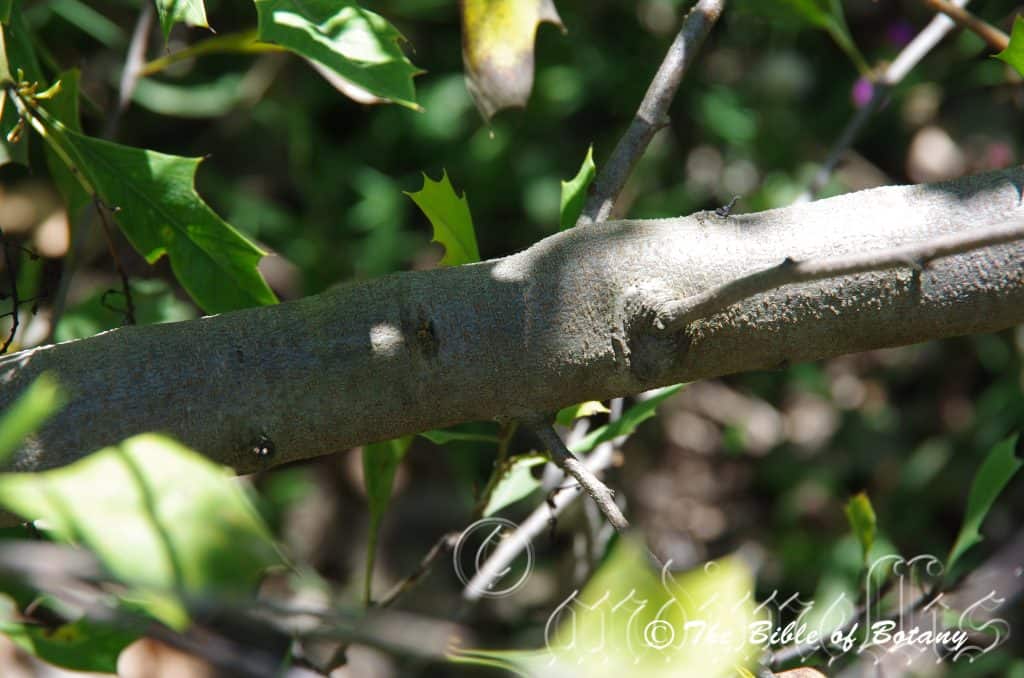
Mount Cootha Botanical Gardens Qld.

Mount Cootha Botanical Gardens Qld.

Mount Cootha Botanical Gardens Qld.
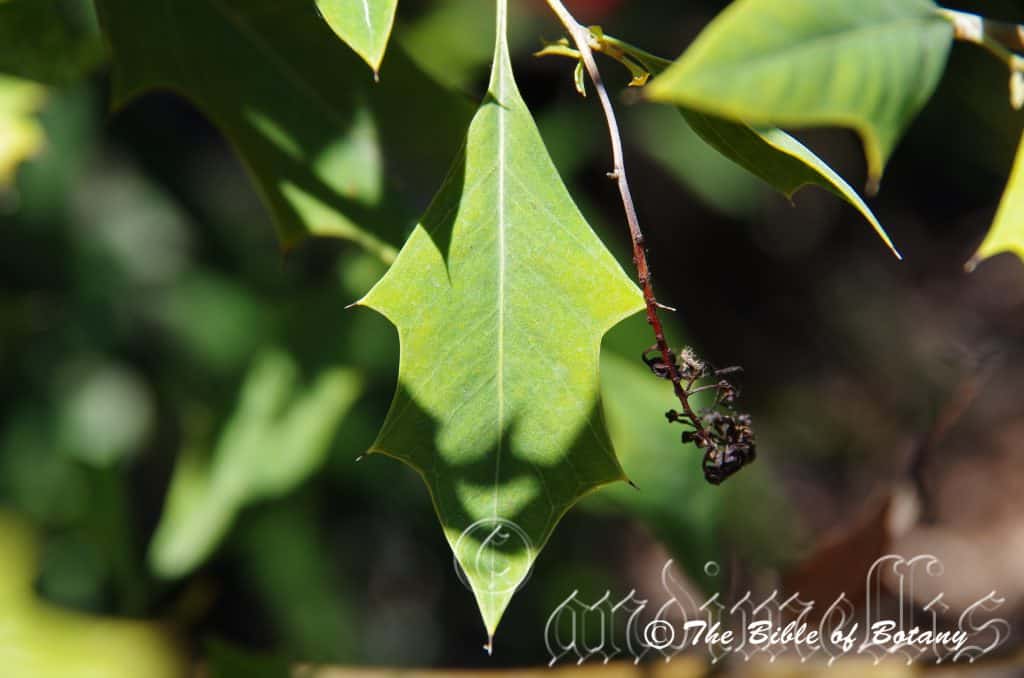
Mount Cootha Botanical Gardens Qld.
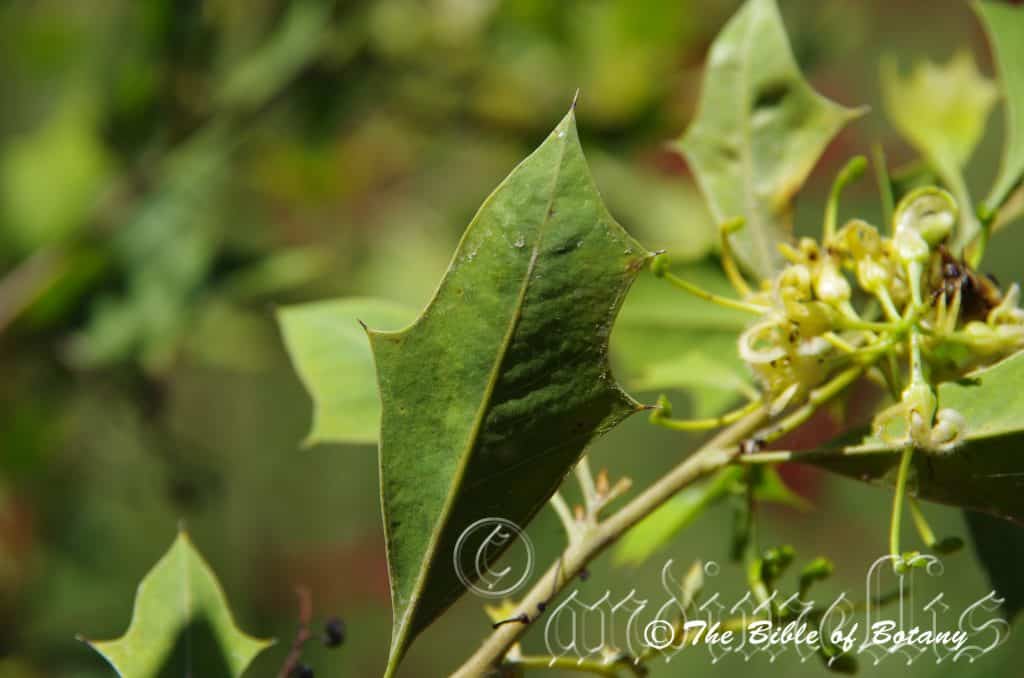
Mount Cootha Botanical Gardens Qld.

Mount Cootha Botanical Gardens Qld.
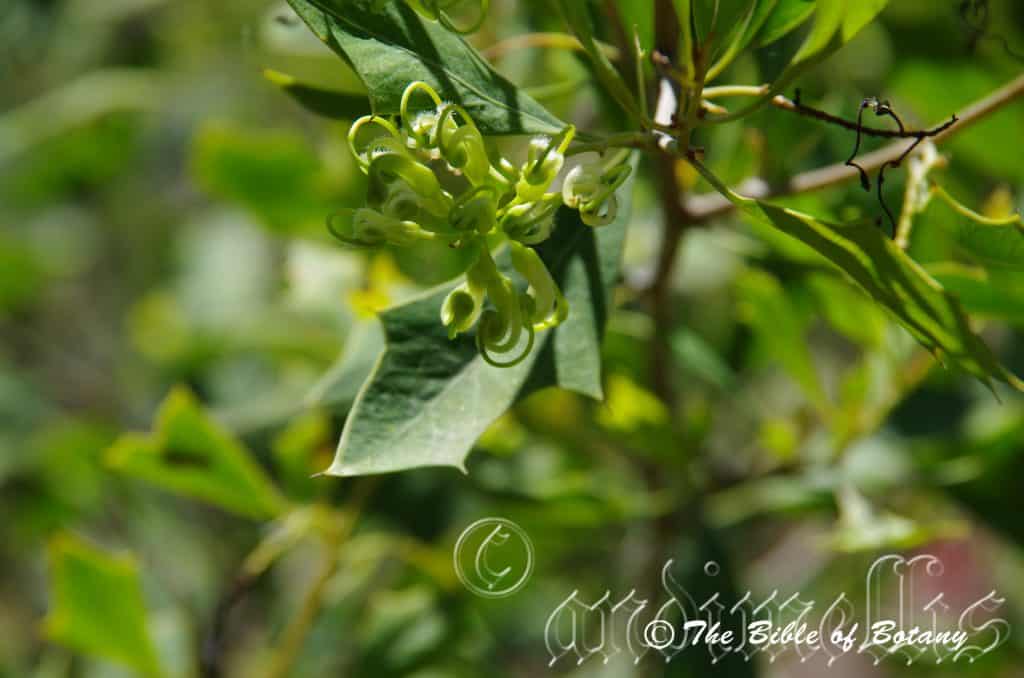
Mount Cootha Botanical Gardens Qld.
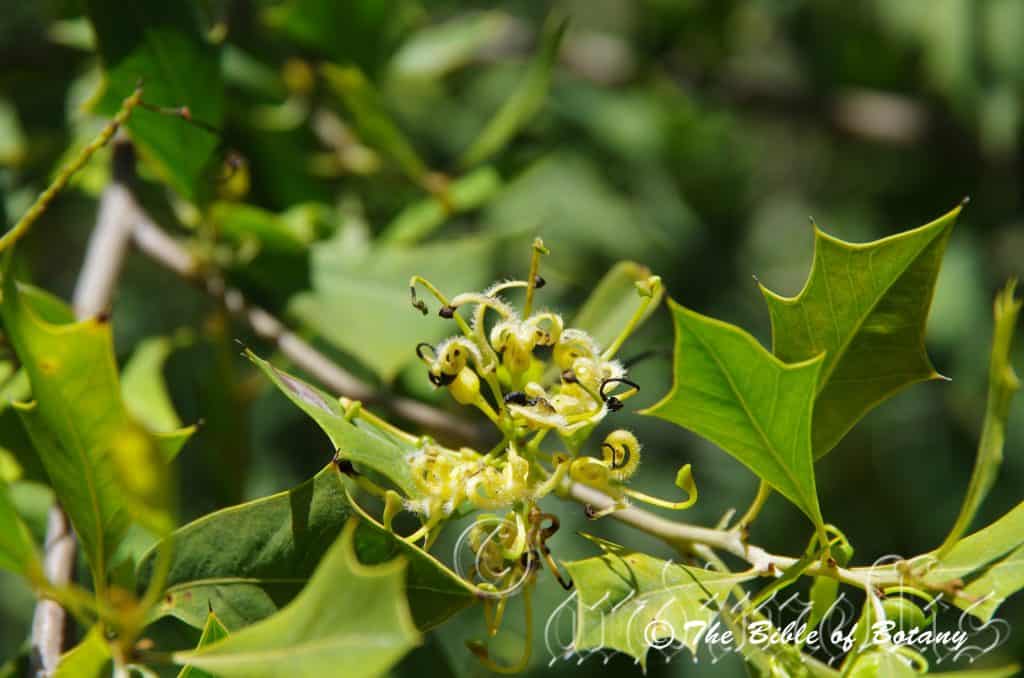
Mount Cootha Botanical Gardens Qld.
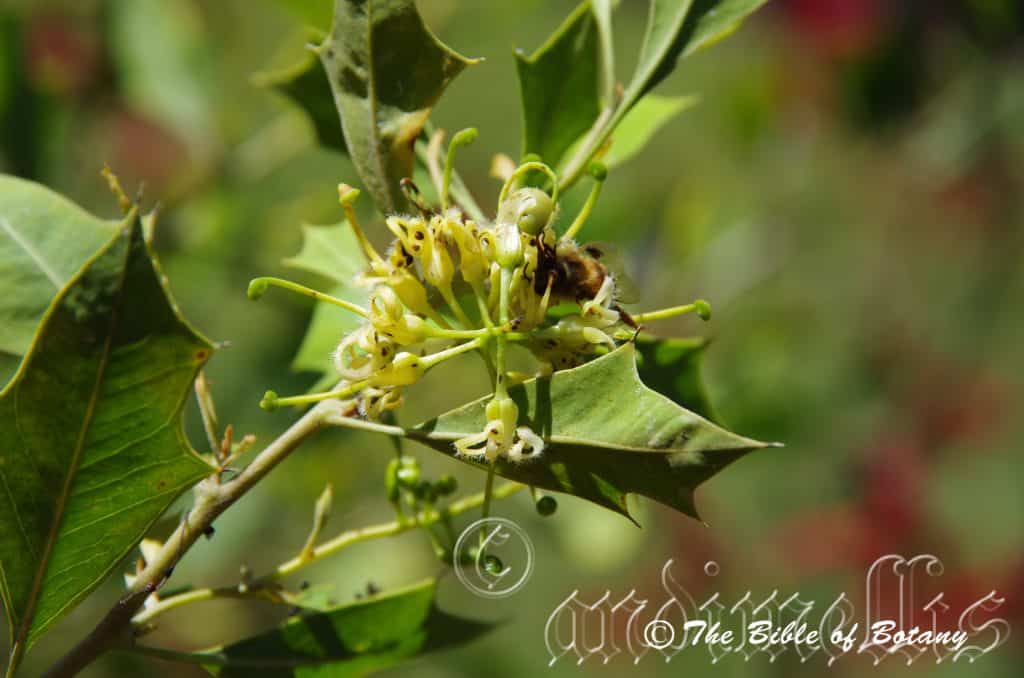
Mount Cootha Botanical Gardens Qld.

Mount Cootha Botanical Gardens Qld.
Grevillea angulata
Classification:
Class: Magnoliopsida
Order: Proteales
Family: Proteaceae
Genus: Is named in honour of C. F. Greville; 1749-1809, who was a British expert botanist on Algae, a foundation member of the London Horticultural Society and a collector of rare plants.
Species: From Angular, which is Ancient Greek for to have angles. It refers to structures or organs, which have distinct angles.
Sub Species:
Common Name: Holly Leaf Grevillea.
Distribution:
Grevillea angulata is endemic to the Northern Territory except for a small population in north eastern Western Australia north east of Kununurra and along the Ord River. It is found between Darwin, Oenpelli to Nabarlek in Kakadu National Park to Sims Island and Goulbourn Island in the north and the Wickham River.
https://avh.ala.org.au/occurrences/search?taxa=Grevillea+angulata#tab_mapView
Habitat:
Grevillea angulata prefers full sun to light dappled shade. It grows below medium size trees, low trees, or in low dry scrub lands to moist open Eucalyptus woodlands, vine forests or open monsoonal rainforests. It grows in riparian zones of seasonal and permanent creeks, on rocky ledges, low rocky ridges and rocky slopes. The altitude ranges from 5 meters ASL to 450 meters ASL.
The temperatures range from 12 degrees in July to 39 degrees in January.
The rainfall ranges from lows of 600mm to an average of 1650mm annually.
Soil Requirements:
Grevillea angulata prefers to grow on skeletal to rocky or stony soils, sandy loams, to fatty sands. The soils are usually derived from sandstone or at times granite. The soils pH ranges from 5pH to 6pH. It does not tolerate water logged soils. Non saline soils to moderately saline soils are tolerated.
Height & Spread:
Wild Plants: 0.3m to 2.5m by 01.5m to 3m.
Characteristics:
Grevillea angulata varies greatly with plants from the southern populations tending to be taller shrubs and those at the northern extremities growing as smaller shrubs and those along the coastal strips grow as prostrate ground covers. The larger stems or trunk are a grey to mid reddish-brown and scabrous while the smaller branches are grey-brown and covered in horizontal lenticels. The branchlets or stems turn yellow-green and covered in pale brown horizontal lenticels while the new growth is lime-green and covered in white horizontal lenticels.
Grevillea angulata’s alternate leaves are usually oblong or at times rhomboidal in outline and measure 35mm to 150mm in length by 15mm to 50mm in width. The petioles are 0.5mm to 22mm in length. The bases are tapering or broad cuneate to almost truncate and maybe shortly attenuate while the apexes are tapering acute to broad acute with a rigid, pungent spine. The discolourous laminas are yellow-green to yellow-lime green, with a dense but open inconspicuous appressed white indumentums or rarely almost glabrous with minute yellow dot like glands on the upper laminas while the lower laminas are sparsely covered in an open inconspicuous appressed white indumentums and are almost glabrous with minute yellow dot like glands. The laminas are flat or recurve slightly upwards from the mid vein to the margins or decurve downwards on the apical half. The margins are pinnatifid or coarsely dentate, usually with 2 to 4 or at times 7 to 29 evenly distributed triangular teeth or lobes with rigid, pungent spines. The margins are also thickened along the edges.
The conflorescences of Grevillea angulata are simple or basally branched 2 or 3 times and are born terminally or on short lateral branches. There are 12 to 30 individual flowers on the ovoidal to sub cylindrical conflorescences. The lime-green rachises are glabrous and measure 15mm to 60mm in length while the petioles are swollen at the base and enlarge at the base of the corolla. The petioles and ovaries measure 5mm to 7mm in length. The style and perianth are the most prominent part of the flower. The perianth is first green turning pastel yellow or white at anthesis and finally yellow after anthesis. The lobes are similar to the perianth tube in colour. The perianth and lobes are glabrous externally and densely covered in long, white, villous hairs internally becoming glabrous at the auricle apexes. The individual perianths measure 1.5mm to 2mm in length while the lobes measure 12mm to 17mmin length.
The pale lime-green, glabrous ovary is oblong and measures 4mm to 5mm in length by 1.8mm to 2mm in diameter. The style curves 100 to 120 degrees near the apex and is lime-green when it first emerges turning yellow-green at anthesis and finally black after anthesis. The style is glabrous except for a 1mm to 2mm fawnish, papillate ring around the apex, which extends onto the back of the stigma. The style measures 14mm to 19mm in length. The broad conical, oblique pollen presenter is lime-green and measures 2.5mm to 3mm in diameter. The flowers appear from March to September.
Grevillea angulata’s fruits are oblique-ovoidal to ellipsoidal follicles. The follicles are produced singularly radiating out from the rachises. And measure 10mm to 14mm in length by 3.5mm to 5mm in diameter. The follicles are a deep brown to black and glabrous when ripe. The style is persistent on the follicle.
Wildlife:
The dense foliage and proliferation of small flowers of Grevillea angulata is a great attraction and safe zone for smaller honeyeaters like the Western Silver Eyes, Zosterops lateralis subsp. chloronotus.
Cultivation:
As a garden subject Grevillea angulata will grow 1 meter to 2 meters in height by 1.5 meter to 4 meters in diameter.
Grevillea angulata is strictly for tropical and subtropical areas and offers the gardener a wide range of uses especially on skeletal soils. Be careful when using it in rockeries that they don’t overcrowd smaller less vigorous plants either side. The green, yellow and white flowers on the same plant are unusual look good but can be swamped by specie with red or orange flowers so use pinks and lilacs. In saying that Grevillea banksii offers a complete contrast to the more prostrate forms in growth habit and foliage where by the viewer’s eyes tend to move up and down and not focus on the area where the 2 plants merge.
In Native gardens they can be used for bird attraction and safe corridor when planted as hedges along boundaries where they will detract children and neighbours pets because of the spines on the leaves.
Propagation:
Seeds: Grevillea angulata seeds can be sown directly into a seed raising mix. Cover them with 5mm of fine sand and keep moist not wet. Place the tray in a warm sunny position. When the seedlings are 25mm to 50mm tall, prick them out and plant them into 50mm native tubes using a good organic mix.
Once the seedlings reach 150mm to 200mm in height, nip the tips out before planting them out into their permanent position. For mass plantings plant them at 2 meter to 3 meter centers.
Cuttings: Use 70mm to 100mm long half ripened material when growing from cuttings from the present season’s growth. Take them in mid-autumn or early spring. Remove half the leaves from the bottom section being careful not to tear the bark.
1 Prepare the cutting mix by adding one third sharp clean river sand, one third peat and one third perlite. These ingredients are sterilize,
2 Select good material from non diseased plants,
3 Select semi green stems for cuttings. Look for a stem with two or three nodes,
4 Place the cutting on a flat, hard surface, and make a clean cut down one side of the cutting at the base for 10mm with a sharp sterile knife or razor blade. – This scarification of the node will increase the chances of roots emerging from this spot. Now remove all but one or two the leaves, leaving the apex leaves in tact. If the leaves are very large in proportion to the stem, cut off the apical halves.
5 Fill a saucer with water, and place a little medium strength rooting hormone into another container like a milk bottle top. Dip the node end of the cutting into the water and then into the rooting hormone. Tap off any excess hormone,
6 Use a small dipple stick or old pencil to poke a hole into the soilless potting mix. Ensure the hole is slightly larger than the stem diameter and be careful not to wipe the rooting hormone off the cuttings base, place the cuttings in a pattern ensuring the cuttings are not touching each other,
7 I like to place the pots in Plastic bags to help maintain temperature and moisture. Place in a semi shaded place like under 50mm shade cloth.
8 When the cuttings have struck, open the bag to allow air circulation for a few days to a week,
9 Once hardened off remove the cuttings from the bag and allow to further hardening for a few more days,
10 Transplant into a good potting mix to grow on.
Fertilize using seaweed, fish emulsion or organic chicken pellets soaked in water on an alternate basis. Fertilize every two months until the plants are established then twice annually in early September or March to maintain health, vitality and better flowering. Avoid synthetic fertilizers as they will most likely contain calcium and phosphorous at levels, which are toxic to most Proteaceae.
Further Comments from Readers:
“Hi reader, it seems you use The Bible of Botany a lot. That’s great as we have great pleasure in bringing it to you! It’s a little awkward for us to ask, but our first aim is to purchase land approximately 1,600 hectares to link several parcels of N.P. into one at The Pinnacles NSW Australia, but we need your help. We’re not salespeople. We’re amateur botanists who have dedicated over 30 years to saving the environment in a practical way. We depend on donations to reach our goal. If you donate just $5, the price of your coffee this Sunday, We can help to keep the planet alive in a real way and continue to bring you regular updates and features on Australian plants all in one Botanical Bible. Any support is greatly appreciated. Thank you.”
In the spirit of reconciliation we acknowledge the Bundjalung, Gumbaynggirr and Yaegl and all aboriginal nations throughout Australia and their connections to land, sea and community. We pay our respect to their Elders past, present and future for the pleasures we have gained.
Grevillea arenaria
Classification:
Class: Magnoliopsida
Order: Proteales
Family: Proteaceae
Genus: Is named in honour of C. F. Greville; 1749-1809, who was a British expert botanist on Algae, a foundation member of the London Horticultural Society and a collector of rare plants.
Species: From Arena, which is Latin for sand. It refers to species, which prefer growing in sandy environments.
Sub species: Grevillea arenaria subsp. arenaria. From Arena, which is Latin for sand. It refers to species, which prefer growing in sandy environments.
Sub species: Grevillea arenaria subsp. canescens. From Cascus, which old Latin or C?num, which is Latin for grey and hoary, to become old and grey.
Common Name: Mountain Grevillea.
Distribution:
Grevillea arenaria subsp. arenaria is found south from the New England district to Walwa on the Murray River. It is mainly found on the Great Dividing Range to the coast.
Grevillea arenaria subsp. canescens is mainly found at lower altitudes on the Western Slopes of the Great Dividing Range.
https://avh.ala.org.au/occurrences/search?taxa=Grevillea+arenaria#tab_mapView
Habitat Aspect Climate:
Grevillea arenaria prefers full sun to light dappled shade. It grows below medium size trees, low trees, or in low dry scrubby woodlands or dry Eucalyptus forests on ridges, dry creek bed banks and steep hill sides and is particularly common on rocky outcrops with a skeletal soil. The altitude ranges from 5 meters ASL to 850 meters ASL.
The temperatures range from minus 8 degrees in July to 36 degrees in January.
The rainfall ranges from lows of 320mm to an average of 1400mm annually.
Soil Requirements:
Grevillea arenaria prefers to grow on skeletal rocky or stony soils, sandy loams, to light gravelly clay loams. The soils are usually derived from sandstones or granite. The soils pH ranges from 4.5pH to 6pH are preferred. It does not tolerate water logged soils. Non saline soils to moderately saline soils are tolerated.
Height & Spread:
Wild Plants:
Grevillea arenaria subsp. arenaria 1.5m to 4m by 1m to 2m.
Grevillea arenaria subsp. canescens 0.3m to 3m by 1.5m to 2.5m.
Characteristics:
The larger stems are a deep red-brown and slightly flaky. The branches are reddish-brown while the branchlets are covered in short white to pale grey villous, sub sericeous or tomentose hairs becoming glabrous on Grevillea arenaria subsp. arenaria while the branchlets on Grevillea arenaria subsp. canescens are covered in white to pale grey canescens to sericeous hairs.
Grevillea arenaria subsp. arenaria simple oblong-elliptical to narrowly obovate or rarely obovate or sub-linear leaves measure 10mm to 70mm in length by 4mm to 14mm in width and are 3 to 5 times as long as wide. The petioles measure 0.5mm to 5mm in length. The bases are cuneate while the apexes are obtuse with a mucronate tip. The discolourous laminas are green to glaucous-green or pale grey-green and are glabrous, granulose to covered in white to pale grey sub sericeous hairs on the upper lamina while the lower lamina is covered in white to pale grey tomentose to villous hairs. The margins are entire, recurved to slightly revolute.
Grevillea arenaria subsp. canescens simple elliptical to obovate, narrowly obovate or rarely linear or orbicular leaves measure 15mm to 75mm in length by 3mm to 15mm in width and are 2 to 3 times as long as wide. The petioles measure 0.5mm to 5mm in length. The bases are cuneate while the apexes are obtuse with a mucronate tip. The discolourous laminas are green to glaucous green or pale grey green and are glabrous to granulose on the upper lamina while the lower lamina is covered in long white to pale grey canescent to villous hairs. The margins are entire, recurved to revolute.
The inflorescences of Grevillea arenaria subsp. arenaria are short conflorescences born from the leaf axils. It is 2 to 5 flowered. The peduncle is covered in white to pale grey sericeous hairs and measures 6mm to 30mm in length. The 2mm to 8mm long pedicels are covered in white to pale grey sericeous to villous hairs. The style and perianth are the most prominent part of the flower. The perianth’s corolla is green, yellow or rarely red at the base with red, pink or orange lobes. The bracts measure 1mm to 2mm in length. The perianth is covered in white to pale grey puberulent hairs. Individual perianths measure 8mm to 11mm in length.
The straight styles are red or green at the base turning green towards the stigma. The white stigma or pollen presenter is distinctly large, orbicular and measures 2mm to 3mm in length. The style and ovary measure 22mm to 27mm in length. The style is covered in white puberulent to short villous hairs. There are odd flowers throughout the year with a peak flowering from July to November.
The inflorescences of Grevillea arenaria subsp. canescens are short conflorescences born from the leaf axils. It is 2 to 10 flowered. The style and perianth are the most prominent part of the flower. The perianth corolla is green, yellow or rarely red at the base with red, pink or orange lobes. The perianth is covered in white to pale grey puberulent to short villous hairs externally while internally it is covered in white hirsute hairs above the center. Individual perianths measure 11mm to 14mm in length.
The styles are red at the base turning green towards the stigma. The stigma is distinctly large and orbicular. The pistils measure 24mm to 32mm in length. The style and ovary are densely covered in white puberulent hairs. Flowering occurs throughout the year with a peak from September to November.
Grevillea arenaria fruits are obovoidal to ellipsoidal follicles. The follicles are produced singularly radiating out from the rachises and are sparsely covered in off white tomentose hairs and are longitudinally ridged. They measure 12mm to 22mm length by 8mm to 14mm in depth. The follicles are a deep brown to black when ripe. The style is persistent on the follicle.
Wildlife:
The dense foliage and proliferation of small flowers is a great attraction and safe zone for smaller honeyeaters like the Silver Eyes (Zosterops lateralis), Yellow Face Honeyeater (Lichenostomus chrysops), Brown Honeyeater (Lichmera indistincta) and the eastern Spinebill. (Acanthorhynchus tenuirostris).
Cultivation:
Grevillea arenaria is strictly for temperate and cool tropical areas and offer a wide range of variety so can be used around swimming pools, native gardens for formal English gardens. It is an upright shrub or upright small tree of neat appearance so would look great in a formal setting or English style gardens. In cultivation plants will grow from 3 meters to 5 meters in height by 2 meters to 2.5 meters in diameter forGrevillea arenaria subsp. arenaria and from 2 meters to 3 meters in height by 2 meters to 2.5 meters in diameter forGrevillea arenaria sub sp. canescens.
It is best used adjacent to small areas of bush close to paths so their deep red flowers can be viewed regularly. It is great in large rockeries as a fill in plant. Here they can be planted in small groups of 2 or 3 as a standalone plant to create a harsh barren look with other arid plants. It is are surrounded by shorter plants with fine foliages and white or cream flowers they will dominate at the center giving height and strength to the bed especially when it is in flower. Do not use plants with large leaves as these will be too overpowering and they will blend into each other. Planted with a mass of smaller plants and ground covers with mixed coloured flowers and foliages will ensure a great display during the winter and spring months and for the rest of the year. This would be particularly strong, if a mixture of different finer foliages of different colours and textures are incorporated together. This will give a strong uplifting of central height.
Be sure to plant any plant exactly in the center for a formal look or well off to one side for an informal look. 2 or 3 shrubs close together on one side looks even more spectacular when just a single plant is placed on the other side to give balance to the picture.
Propagation:
Seeds: Grevillea arenaria seeds can be sown directly into a seed raising mix. Cover them with 5mm of fine sand and keep moist not wet. Place the tray in a warm sunny position. When the seedlings are 25mm to 50mm tall, prick them out and plant them into 50mm native tubes using a good organic mix.
Once the seedlings reach 150mm to 200mm in height, nip the tips out before planting them out into their permanent position. For mass plantings or making hedges try planting them at 2 meter to 3 meter centers.
Cuttings: Use 70mm to 100mm long half ripened material when growing from cuttings from the present season’s growth. Take them in mid-autumn or early spring. Remove half the leaves from the bottom section being careful not to tear the bark.
1 Prepare the cutting mix by adding one third sharp clean river sand, one third peat and one third perlite. These ingredients are sterilize,
2 Select good material from non diseased plants,
3 Select semi green stems for cuttings. Look for a stem with two or three nodes,
4 Place the cutting on a flat, hard surface, and make a clean cut down one side of the cutting at the base for 10mm with a sharp sterile knife or razor blade. – This scarification of the node will increase the chances of roots emerging from this spot. Now remove all but one or two the leaves, leaving the apex leaves in tact. If the leaves are very large in proportion to the stem, cut off the apical halves.
5 Fill a saucer with water, and place a little medium strength rooting hormone into another container like a milk bottle top. Dip the node end of the cutting into the water and then into the rooting hormone. Tap off any excess hormone,
6 Use a small dipple stick or old pencil to poke a hole into the soilless potting mix. Ensure the hole is slightly larger than the stem diameter and be careful not to wipe the rooting hormone off the cuttings base, place the cuttings in a pattern ensuring the cuttings are not touching each other,
7 I like to place the pots in Plastic bags to help maintain temperature and moisture. Place in a semi shaded place like under 50mm shade cloth.
8 When the cuttings have struck, open the bag to allow air circulation for a few days to a week,
9 Once hardened off remove the cuttings from the bag and allow to further hardening for a few more days,
10 Transplant into a good potting mix to grow on.
Fertilize using seaweed, fish emulsion or organic chicken pellets soaked in water on an alternate basis. Fertilize every two months until the plants are established then twice annually in early September or March to maintain health, vitality and better flowering. Avoid synthetic fertilizers as they will most likely contain calcium and phosphorous at levels, which are toxic to most Proteaceae.
Further Comments from Readers:
“Hi reader, it seems you use The Bible of Botany a lot. That’s great as we have great pleasure in bringing it to you! It’s a little awkward for us to ask, but our first aim is to purchase land approximately 1,600 hectares to link several parcels of N.P. into one at The Pinnacles NSW Australia, but we need your help. We’re not salespeople. We’re amateur botanists who have dedicated over 30 years to saving the environment in a practical way. We depend on donations to reach our goal. If you donate just $5, the price of your coffee this Sunday, We can help to keep the planet alive in a real way and continue to bring you regular updates and features on Australian plants all in one Botanical Bible. Any support is greatly appreciated. Thank you.”
In the spirit of reconciliation we acknowledge the Bundjalung, Gumbaynggirr and Yaegl and all aboriginal nations throughout Australia and their connections to land, sea and community. We pay our respect to their Elders past, present and future for the pleasures we have gained.
Grevillea armigera
Class: Magnoliopsida
Order: Proteales
Family: Proteaceae
Genus: Is named in honour of C. F. Greville; 1749-1809, who was a British expert botanist on Algae, a foundation member of the London Horticultural Society and a collector of rare plants.
Species: From Armarta, which is Latin for well-armed. It refers to plants, which are generally well protected with thorns, spines or needle sharp leaves or at times stinging hairs.
Sub Species:
Common Name: Man of War Grevillea.
Distribution:
Grevillea armigera is found in the south west corner of Western Australia south from Northham to near Carnamash.
https://avh.ala.org.au/occurrences/search?taxa=Grevillea+armigera#tab_mapView
Habitat:
Grevillea armigera prefers full sunlight. It grows with other low growing trees and shrubs in tall open heaths, open Acacia woodlands open Eucalyptus forests or on wind swept plains and open heaths. The altitude ranges from 100 meters ASL to 450 meters ASL.
The temperatures range from 4 degrees in August to 38 degrees in January and February.
The rainfalls range from lows of 250mm to an average 500mm annually.
Soil Requirements:
Grevillea armigera prefers deep white or cream sands to light gravelly clay loams or skeletal rocky sands, stony sandy loams. The soils are usually derived from sandstones or granite. The soils pH ranges from 4.5pH to 6pH are preferred. It does not tolerate water logged soils. Non saline soils to moderately saline soils are tolerated.
Height & Spread:
Wild Plants: 0.6m to 3.5m by 1m to 2.5m.
Characteristics:
The larger branches and stems are dull grey and glabrous. The branchlets are a dull pale grey to dull pale grey-green almost white and glabrous. The new growth is sparsely covered in white hirsute hairs.
The opposite rigid, bipinnatisectus leaves divided 2 or 3 times and measure 20mm to 30mm in length by 30mm to 40mm in width. The linear divaricate lobes measure 8mm to 15mm in length by 0.5mm to 1.6mm in width. The concolourous laminas are dull pale grey-green and glabrous. The lower lamina is sparsely covered in short soft white hirsute hairs. The mid vein is prominent on the lower lamina and is not visible from the upper lamina. The margins are entire and strongly revolute enclosing the lower lamina and forming 2 grooves with the mid vein. The base is sessile while the apex tapers to a sharp simple thorn. The rachis measures 8mm to 12mm in length.
The inflorescence is a terminal single sided raceme. The racemes measure 40mm to 50mm in length. The perianth and style are the most prominent parts of the flower. The individual perianths are pale lemon-green or pale yellow from the base through to the lobes. The perianth is sparsely covered in short white hirsute hairs externally and glabrous internally. The perianth and lobes measure 8mm to 9mm in length. The lobes are very irregular and free. The pedicel measures 1mm to 2mm in length.
The glabrous style is deep purple-black to black at the base through to the stigma. The stigma presenter is oblique and maroon. The pistils measure 16mm to 20mm long. The erect style is glabrous. The ovary is sparsely covered in short soft white hirsute hairs. There are 4 inserted stamens. The perianths are sessile. The flowers appear from June to February.
Grevillea armigera’s fruit is an ellipsoidal follicle. The style is persistent on the follicles which are dull pale green and turn brown on ripening. It is glabrous, non-viscid and densely covered in white hirsute hairs. They measure 12mm to 14mm by 8mm to 10mm wide. The flat elliptical seeds are pale grey with 2 wings on the long sides. They measure 7.5mm to 8mm in length by 4mm to 5mm in width.
Wildlife:
Grevillea armigera is very attractive to a large number of small and medium size nectar eating honeyeaters.
Cultivation:
Grevillea armigera is a magnificent small unusual flowering shrub for arid or drier gardens in arid and temperate zones. I would be very tempted to try them as far north as Grafton on the east coast where only mild frosts occur. It has a very strong open upright or spreading shape. As garden subjects they will grow 2 meters to 3 meters in height by 2 meters to 2.5 meters in diameter. It is fast growing but unfortunately only keep their leaves on the present season’s growth. It is very drought tolerant. The flowers are spectacular and are very attractive to all nectar feeding honeyeaters.
Grevillea armigera make good barrier hedges and safe wildlife corridors for birds to travel along but beware of the leaves. The leaves form a nasty barrier on the plant or once they fall to the ground, form a pungent layer there. This is another one of my favourites for its unattractiveness to feral dogs and cats, while at the same time offers a safe corridor for small native wildlife including small birds. Because of this they should be planted back from paths and edges to avoid scratching and standing on the leaves, which can penetrate thongs.
A bend in a path can be broken up by placing them at the bend. Place them in the midground with ground covers, smaller shrubs in front or annuals in front and larger plants behind. Plants with either small red flowers or white flowers can be used in the foreground while large flowering specie can be placed in the background. This will lead the viewer’s eyes down and over to the mid ground. Use plants with deep green leaves and larger leaves to the rear and in the foreground use prostrate plants with soft foliages to increase the contrast between the specie planted when the plants are not in flower. Ensure that the other plants cover the ground and the bare lower stems. Mass plantings, group plantings or the use of annuals close to the stems can help overcome the bareness
For a desert scene place it near old stumps and roots to make the stumps or roots look larger. Select an area of ground and let your hair down and be imaginative. This is the plant that may just change your life. Remember this plant is rather large for this type of garden setting, so be sparingly with the other plants and use very small shrubs procumbent plants or annuals when planting and remember that deserts are rolling flat plains not steep hills so it is best to use a gentle slope or a basin with a small pool at the bottom. A billabong affect is the go, not a waterfall or cascades.
Another method is to achieve the headland setting. Heaths are a crowded landscape with small annuals, procumbent, ascending and repent plants all intermingling with each other forming a mosaic of foliages of different colours and patterns below your visual line. A few scattered Grevillea armigera will break the flatness of the other plants and suddenly give you height and depth. The rest of the bed should have no plants that are over 0.6 meters in height. Make sure the plants immediately adjacent to the Grevillea armigera have fine pale green to fine mid green foliages for the greatest impact. Further out begin to mix fine leaf shrubs with broad leaf shrubs and use the different colour foliages for contrast, the flowers are a bonus.
Propagation:
Seeds: The seeds need to be treated before sowing. This can be done by placing the seeds into a small calico bag with sharp clean sand and rubbing them to scarify the surface or they can be nicked individually with a knife. Another method is to rub the individual seeds lightly over fine sandpaper. Sow the freshly treated seeds directly into a seed raising mix. Cover them with 5mm of fine sand and keep moist not wet. Place the tray in a warm sunny position. When the seedlings are 25mm to 50mm tall, prick them out and plant them into 50mm native tubes using a good organic mix.
Once the seedlings reach 150mm to 200mm in height, nip the tips out before planting them out into their permanent position.
Cuttings: Use 100mm long half ripened material when growing from cuttings from the present season’s growth. Take them in mid-autumn or early spring. Remove half the leaves from the bottom section being careful not to tear the bark. Remove any flowers and buds. Take a 10mm slice off the bark from the bottom of the cutting on one side. Using an appropriate rooting hormone, dip the cutting in and place it in a moist sterile seed raising mix. Place the trays under 30mm shade and keep the trays warm. Bottom heat is beneficial when striking the cuttings. Ideally temperatures should be maintained at between 22 to 24 degrees.
When the cuttings have obviously struck and have developed good roots treat them as for seedlings.
Fertilize using seaweed, fish emulsion or organic chicken pellets soaked in water on an alternate basis. Fertilize every two months until the plants are established then twice annually in early September or March to maintain health, vitality and better flowering. Avoid synthetic fertilizers as they will most likely contain calcium and phosphorous which are toxic to most Proteacea
Further Comments from Readers:
“Hi reader, it seems you use The Bible of Botany a lot. That’s great as we have great pleasure in bringing it to you! It’s a little awkward for us to ask, but our first aim is to purchase land approximately 1,600 hectares to link several parcels of N.P. into one at The Pinnacles NSW Australia, but we need your help. We’re not salespeople. We’re amateur botanists who have dedicated over 30 years to saving the environment in a practical way. We depend on donations to reach our goal. If you donate just $5, the price of your coffee this Sunday, We can help to keep the planet alive in a real way and continue to bring you regular updates and features on Australian plants all in one Botanical Bible. Any support is greatly appreciated. Thank you.”
In the spirit of reconciliation we acknowledge the Bundjalung, Gumbaynggirr and Yaegl and all aboriginal nations throughout Australia and their connections to land, sea and community. We pay our respect to their Elders past, present and future for the pleasures we have gained.
Grevillea asparagoides
Classification:
Class: Magnoliopsida
Order: Proteales
Family: Proteaceae
Genus: Is named in honour of C. F. Greville; 1749-1809, who was a British expert botanist on Algae, a foundation member of the London Horticultural Society and a collector of rare plants.
Species: From Asparagos, which is Ancient Greek or Asparagus, which is Latin for the Asparagus genus and Eîdos/Oides, which is Ancient Greek for alike or similar to. It refers to plants, which resemble the original Asparagus genus which was named by Theophrasus. The etymology of the word is unknown.
Sub Species:
Common Name: Prickly Grevillea.
Distribution:
Grevillea asparagoides is found in the south west corner of Western Australia south from Greenough to Calingri and Wongan.
https://avh.ala.org.au/occurrences/search?taxa=Grevillea+asparagoides#tab_mapView
Habitat Aspect Climate:
Grevillea asparagoides prefers full sunlight. It grows low scrubby woodlands or low open mallee forests on wind swept plains and open heaths. The altitude ranges from 130 meters ASL to 300 meters ASL.
The temperatures range from 4 degrees in August to 38 degrees in January and February.
The rainfalls range from lows of 250mm to an average 500mm annually.
Soil Requirements:
Grevillea asparagoides prefers white or yellow sands to light sandy clays and gravelly loams. The soils are usually derived from sandstones or granites. The soils pH ranges from 4.5pH to 6pH. It does not tolerate water logged soils. Non saline soils to moderately saline soils are tolerated.
Height & Spread:
Wild Plants: 0.5m to 2m by 0.5m to 2m.
Characteristics:
The larger branches and stems are a dull deep grey and glabrous. The branchlets are a semi glossy olive green and glabrous to being sparsely covered in short, soft, white hirsute hairs on the new shoots.
The alternate rigid and deeply divided tripartite leaves are divided twice and measure 20mm to 35mm in length. The linear divaricate lobes are divided to the mid vein and measure 5mm to 15mm in length by 0.7mm to 1mm in width. The petiole measures 6mm to 12mm in length. The bases of the lobes are sessile while the apexes taper to a sharp rigid thorn. The concolourous laminas are dull pale olive green or dull and glabrous or sparsely covered in short soft white puberulent hairs. The mid vein is faintly prominent on the lower lamina. The margins are entire and strongly revolute to the mid vein.
The inflorescence of Grevillea asparagoides is a terminal raceme or is born on short auxiliary shoots. The racemes measure 40mm to 50mm in length. The perianth and style are the most prominent parts of the flower. The individual perianths are pink to scarlet-red from the base through to the lobes with the lobes being yellow to orange. The perianth is sparsely covered in short, soft, white hirsute hairs externally and glabrous internally. The perianth and lobes measure 8mm to 12mm in length. The lobes are very irregular and free. The pedicel measures 7mm to 10mm in length.
The glabrous style is deep purple-black to black at the base through to the stigma. The red, orange or yellow stigma presenter is oblique. The pistils measure 30mm to 37mm long. The erect, red style is glabrous. The ovary is covered in short soft white hirsute hairs. There are 4 inserted stamens. The perianths are sessile. The flowers appear from July to December.
The fruit is an oblong or ovoid follicle. The style is persistent on the follicles which are grass green and turn brown on ripening. It is non-viscid and densely covered in long, white and maroon-red hirsute to glandular hairs which measure 4mm to 5.5mm in length. They measure 10mm to 17mm in length by 6mm in to 10mm in width. The flat elliptical seeds are pale grey with 2 wings on the long sides. They measure 7.5mm to 8mm in length by 4mm to 5mm in width.
Wildlife:
Grevillea asparagoides is very attractive to a large number of small and medium size nectar eating honeyeaters like the singing Honeyeater, Lichenostomus virescens.
Cultivation:
Grevillea asparagoides is a magnificent small unusual flowering shrub for arid or drier gardens in arid and temperate zones. I would be very tempted to try them as far north as Grafton on the east coast where only mild frosts occur. They have a very strong open upright or spreading shape. As garden subjects they will grow 1 meter to 1.5 meters in height by 1 meter to 1.5 meters in diameter. It is fast growing but unfortunately only keep their leaves on the present season’s growth. It is extremely drought tolerant. The flowers are spectacular and are very attractive to all nectar feeding honeyeaters.
It makes great barrier hedges and safe wildlife corridors for birds to travel along but beware of the leaves. The leaves form a nasty barrier on the plant or once they fall to the ground, form a pungent layer there. This is another one of my favourites for its unattractiveness to feral dogs and cats, while at the same time offers a safe corridor for small native wildlife including small birds. Because of this they should be planted back from paths and edges to avoid scratching and standing on the leaves, which can penetrate thongs.
A bend in a path can be broken up by placing them at the bend. Place them in the midground with ground covers, smaller shrubs in front or annuals in front and larger plants behind. Plants with either small red flowers or white flowers can be used in the foreground while large flowering specie can be placed in the background. This will lead the viewer’s eyes down and over to the mid ground. Use plants with deep green leaves and larger leaves to the rear and in the foreground use prostrate plants with soft foliages to increase the contrast between the specie planted when the plants are not in flower. Ensure that the other plants cover the ground and the bare lower stems. Mass plantings, group plantings or the use of annuals close to the stems can help overcome the bareness
For a desert scene place it near old stumps and roots to make the stumps or roots look larger. Select an area of ground and let your hair down and be imaginative. This is the plant that may just change your life. Remember this plant is rather large for this type of garden setting, so be sparingly with the other plants and use very small shrubs procumbent plants or annuals when planting and remember that deserts are rolling flat plains not steep hills so it is best to use a gentle slope or a basin with a small pool at the bottom. A billabong affect is the go, not a waterfall or cascades.
Another method is to achieve the headland setting. Heaths are a crowded landscape with small annuals, procumbent, ascending and repent plants all intermingling with each other forming a mosaic of foliages of different colours and patterns below your visual line. A few scattered Grevillea asparagoides will break the flatness of the other plants and suddenly give you height and depth. The rest of the bed should have no plants that are over 0.6 meters in height. Make sure the plants immediately adjacent to the Grevillea asparagoides have fine pale green to fine blue-green foliages for the greatest impact. Further out begin to mix fine leaf shrubs with broad leaf shrubs and use the different colour foliages for contrast, the flowers are a bonus.
Propagation:
Seeds: The seeds need to be treated before sowing. This can be done by placing the seeds into a small calico bag with sharp clean sand and rubbing them to scarify the surface or they can be nicked individually with a knife. Another method is to rub the individual seeds lightly over fine sandpaper. Sow the freshly treated seeds directly into a seed raising mix. Cover them with 5mm of fine sand and keep moist not wet. Place the tray in a warm sunny position. When the seedlings are 25mm to 50mm tall, prick them out and plant them into 50mm native tubes using a good organic mix.
Once the seedlings reach 150mm to 200mm in height, nip the tips out before planting them out into their permanent position.
Cuttings: Use 70mm to 100mm long half ripened material when growing from cuttings from the present season’s growth. Take them in mid-autumn or early spring. Remove half the leaves from the bottom section being careful not to tear the bark.
1 Prepare the cutting mix by adding one third sharp clean river sand, one third peat and one third perlite. These ingredients are sterilize,
2 Select good material from non diseased plants,
3 Select semi green stems for cuttings. Look for a stem with two or three nodes,
4 Place the cutting on a flat, hard surface, and make a clean cut down one side of the cutting at the base for 10mm with a sharp sterile knife or razor blade. – This scarification of the node will increase the chances of roots emerging from this spot. Now remove all but one or two the leaves, leaving the apex leaves in tact. If the leaves are very large in proportion to the stem, cut off the apical halves.
5 Fill a saucer with water, and place a little medium strength rooting hormone into another container like a milk bottle top. Dip the node end of the cutting into the water and then into the rooting hormone. Tap off any excess hormone,
6 Use a small dipple stick or old pencil to poke a hole into the soilless potting mix. Ensure the hole is slightly larger than the stem diameter and be careful not to wipe the rooting hormone off the cuttings base, place the cuttings in a pattern ensuring the cuttings are not touching each other,
7 I like to place the pots in Plastic bags to help maintain temperature and moisture. Place in a semi shaded place like under 50mm shade cloth.
8 When the cuttings have struck, open the bag to allow air circulation for a few days to a week,
9 Once hardened off remove the cuttings from the bag and allow to further hardening for a few more days,
10 Transplant into a good potting mix to grow on.
Fertilize using seaweed, fish emulsion or organic chicken pellets soaked in water on an alternate basis. Fertilize every two months until the plants are established then twice annually in early September or March to maintain health, vitality and better flowering. Avoid synthetic fertilizers as they will most likely contain calcium and phosphorous at levels, which are toxic to most Proteaceae.
Further Comments from Readers:
“Hi reader, it seems you use The Bible of Botany a lot. That’s great as we have great pleasure in bringing it to you! It’s a little awkward for us to ask, but our first aim is to purchase land approximately 1,600 hectares to link several parcels of N.P. into one at The Pinnacles NSW Australia, but we need your help. We’re not salespeople. We’re amateur botanists who have dedicated over 30 years to saving the environment in a practical way. We depend on donations to reach our goal. If you donate just $5, the price of your coffee this Sunday, We can help to keep the planet alive in a real way and continue to bring you regular updates and features on Australian plants all in one Botanical Bible. Any support is greatly appreciated. Thank you.”
In the spirit of reconciliation we acknowledge the Bundjalung, Gumbaynggirr and Yaegl and all aboriginal nations throughout Australia and their connections to land, sea and community. We pay our respect to their Elders past, present and future for the pleasures we have gained.
Grevillea asplenifolia
Classification:
Class: Magnoliopsida
Order: Proteales
Family: Proteaceae
Genus: Is named in honour of C. F. Greville; 1749-1809, who was a British expert botanist on Algae, a foundation member of the London Horticultural Society and a collector of rare plants.
Species: From A, which is Greek/Latin for without or not having, Splenon, which is Ancient Greek or Splenum, which is Latin for the spleen and Folium, which is Latin for foliage. It refers to leaves, which resemble the fronds in some of the ferns in the Asplenium genus.
Sub Species:
Common Name: Aspen Leaf Grevillea or Fern Leaf Grevillea.
Distribution:
Grevillea asplenifolia is endemic to New South Wales south from Warragamba Dam to Jervis Bay on the southern Coast of New South Wales and west to Canberra in the ACT.
https://avh.ala.org.au/occurrences/search?taxa=Grevillea+asplenifolia#tab_mapView
Habitat Aspect Climate:
Grevillea asplenifolia prefers full sun to light dappled shade. It grows on moist patches below medium size trees, low trees, or in low dry scrub lands in dry open Eucalyptus forests or open mixed woodlands. The altitude ranges from 10 meters ASL to 500 meters ASL.
The temperatures range from minus 5 degrees in August to 32 degrees in January.
The rainfalls range from lows of 600mm to an average of 1200mm annually.
Soil Requirements:
Grevillea asplenifolia prefers skeletal rocky or stony sandy loams, to light gravelly clay loams. The soils are usually derived from sandstones or granites. The soils pH ranges from 4.5pH to 6pH are preferred. It does not tolerate water logged soils. Non saline soils to moderately saline soils are tolerated.
Height & Spread:
Wild Plants: 1m to 5m by 1m to 4m.
Characteristics:
Grevillea asplenifolia’s larger stems are a deep red-brown. The smaller stems are pale pink-brown covered in a white waxy film while the branchlets are a pale silvery grey or white and covered in short white to pale fawn pannate hairs.
Grevillea asplenifolia’s alternate, linear to narrow lanceolate leaves measure 140mm to 250mm in length by 3mm to 20mm in width. The petioles measure 6mm to 12mm in length. The bases are cuneate while the apexes are acute to narrow acute. The discolourous laminas are pale olive grey-green to mid grey-green or deep green and glabrous while the lower laminas are paler and densely covered in white to fawn or pale pinkish cannate hairs. The margin is entire or with course teeth which measure 8mm to 20mm apart. The teeth measure 3mm to 10mm in length. The new foliage is pale green with a bronze tinge to pale bronze.
The inflorescence of Grevillea asplenifolia are born on short racemes from the leaf axils. The rachis measures 30mm to 85mm in length. The style is the most prominent part of the flower. The perianth corolla is pale grey to pale greyish-pink at the base with pale grey-pink lobes. The perianth is densely covered in short pale greyish-pink villous hairs externally and is glabrous internally. Individual perianths measure 5mm to 9mm long. The styles are red at the base with a yellow or green stigma. The pistils measure 12mm to 25mm long. The crimson style is glabrous with a yellow to lime green oblique stigma presenter. Flowering occurs from July to November.
Grevillea asplenifolia fruits are an ellipsoidal follicles. The follicles are produced singularly radiating out from rachis and are covered in pale grey or fawnish-grey sericeous hairs. The green follicles turn brown when ripe. They measure 11mm to 12mm in length by 7mm to 8mm in width. The style is persistent on the follicle.
Wildlife:
The dense foliage and proliferation of smaller flowers of Grevillea asplenifolia are great attraction and safe zone for smaller honeyeaters like the Silver Eyes (Zosterops lateralis), Yellow Face Honeyeater (Lichenostomus chrysops), Brown Honeyeater (Lichmera indistincta) and the eastern Spinebill. (Acanthorhynchus tenuirostris).
Cultivation:
Grevillea asplenifolia is strictly for temperate and cool tropical areas and offer a wide range of variety so can be used in native gardens or in formal English gardens. It is a hemispherical shrub with an open neat appearance so would look great in a formal setting or English style gardens. The branchlets can be regularly tip pruned ensuring the bushiness and to promote the bronze coloured new growth. This makes them ideal for larger borders, screens, hedges or mid ground plants. In cultivation they will generally grow from 3 meters to 4 meters in height by 3 meters to 4 meters in width.
It is also a good supply of nectar for birds over a long period. In Native gardens they can be used for bird attraction. A bend in a path can break hide what is around the corner due to their bushiness and height. Place small plants at the end of the path with Grevillea asplenifolia behind. This will lead the viewer’s eyes over to the midground plants or to down to the foreground plants when it is not in flower, or at them from July to November, yet they will walk the bend without noticing the change in direction.
Whether it is in flower or not Grevillea asplenifolia will catch your attention and the viewer will be transfixed on the display rather than watching the path. When it is not in flower you need the other plants to become the main focal point in the garden so try and select plants that flower during different seasons. Small prostrate Acacias with cream, white or yellow flowers can be used to great effect as their flowering will compliment those from Grevillea asplenifolia. The large deep pink or red flowers will offset the abundance of flowers from the Acacias and in fact would be a very strong complementary contrast if the prostrate or smaller Acacia specie were to flower at the same time. This is one plant that benefits the gardener if surrounded either by shorter or taller growing plants. If taller growing plants are used make sure there is an appreciable difference in height and that the Grevillea is not crowded out. To ensure the non-crowding give Greville asplenifolia an extra meter so the foliages do not overlap. Also make sure both the Acacia specie and Grevillea specie are in full sun as dappled light would affect the growing habits and flowering in such a situation.
Propagation:
Seeds: Grevillea asplenifolia seeds can be sown directly into a seed raising mix. Cover them with 5mm of fine sand and keep moist not wet. Place the tray in a warm sunny position. When the seedlings are 25mm to 50mm tall, prick them out and plant them into 50mm native tubes using a good organic mix.
Once the seedlings reach 150mm to 200mm in height, nip the tips out before planting them out into their permanent position. When mass planting or growing for a hedge, plant them at 3.5 meters to 4.5 meter centers.
Cuttings: Use 70mm to 100mm long half ripened material when growing from cuttings from the present season’s growth. Take them in mid-autumn or early spring. Remove half the leaves from the bottom section being careful not to tear the bark.
1 Prepare the cutting mix by adding one third sharp clean river sand, one third peat and one third perlite. These ingredients are sterilize,
2 Select good material from non diseased plants,
3 Select semi green stems for cuttings. Look for a stem with two or three nodes,
4 Place the cutting on a flat, hard surface, and make a clean cut down one side of the cutting at the base for 10mm with a sharp sterile knife or razor blade. – This scarification of the node will increase the chances of roots emerging from this spot. Now remove all but one or two the leaves, leaving the apex leaves in tact. If the leaves are very large in proportion to the stem, cut off the apical halves.
5 Fill a saucer with water, and place a little medium strength rooting hormone into another container like a milk bottle top. Dip the node end of the cutting into the water and then into the rooting hormone. Tap off any excess hormone,
6 Use a small dipple stick or old pencil to poke a hole into the soilless potting mix. Ensure the hole is slightly larger than the stem diameter and be careful not to wipe the rooting hormone off the cuttings base, place the cuttings in a pattern ensuring the cuttings are not touching each other,
7 I like to place the pots in Plastic bags to help maintain temperature and moisture. Place in a semi shaded place like under 50mm shade cloth.
8 When the cuttings have struck, open the bag to allow air circulation for a few days to a week,
9 Once hardened off remove the cuttings from the bag and allow to further hardening for a few more days,
10 Transplant into a good potting mix to grow on.
Fertilize using seaweed, fish emulsion or organic chicken pellets soaked in water on an alternate basis. Fertilize every two months until the plants are established then twice annually in early September or March to maintain health, vitality and better flowering. Avoid synthetic fertilizers as they will most likely contain calcium and phosphorous at levels, which are toxic to most Proteaceae.
Further Comments from Readers:
“Hi reader, it seems you use The Bible of Botany a lot. That’s great as we have great pleasure in bringing it to you! It’s a little awkward for us to ask, but our first aim is to purchase land approximately 1,600 hectares to link several parcels of N.P. into one at The Pinnacles NSW Australia, but we need your help. We’re not salespeople. We’re amateur botanists who have dedicated over 30 years to saving the environment in a practical way. We depend on donations to reach our goal. If you donate just $5, the price of your coffee this Sunday, We can help to keep the planet alive in a real way and continue to bring you regular updates and features on Australian plants all in one Botanical Bible. Any support is greatly appreciated. Thank you.”
In the spirit of reconciliation we acknowledge the Bundjalung, Gumbaynggirr and Yaegl and all aboriginal nations throughout Australia and their connections to land, sea and community. We pay our respect to their Elders past, present and future for the pleasures we have gained.
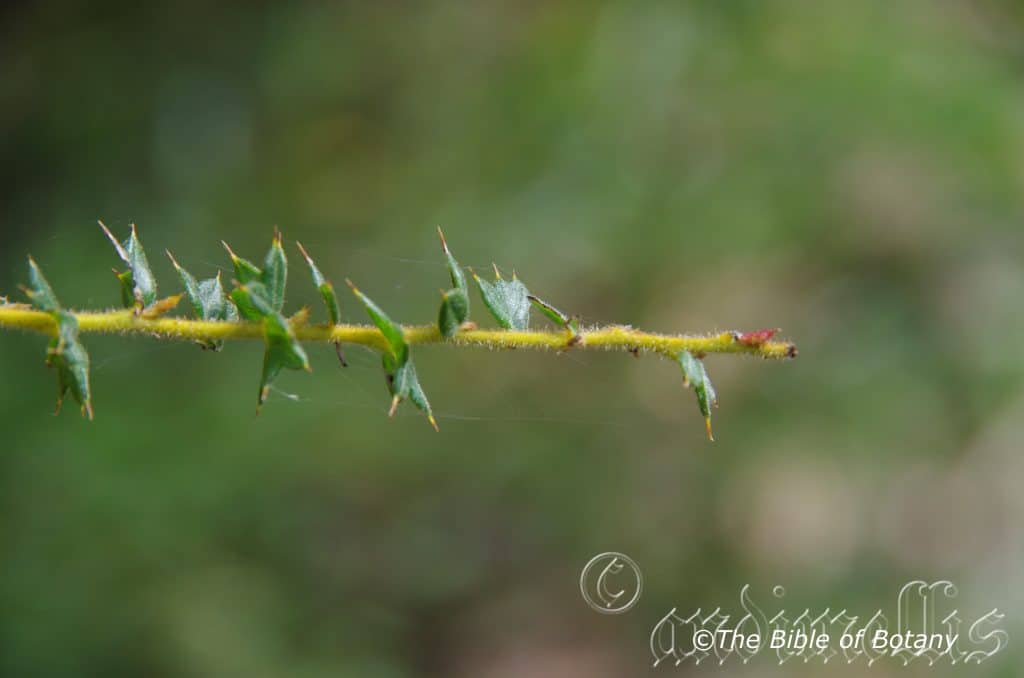
Rosser Gardens Benowa Qld.
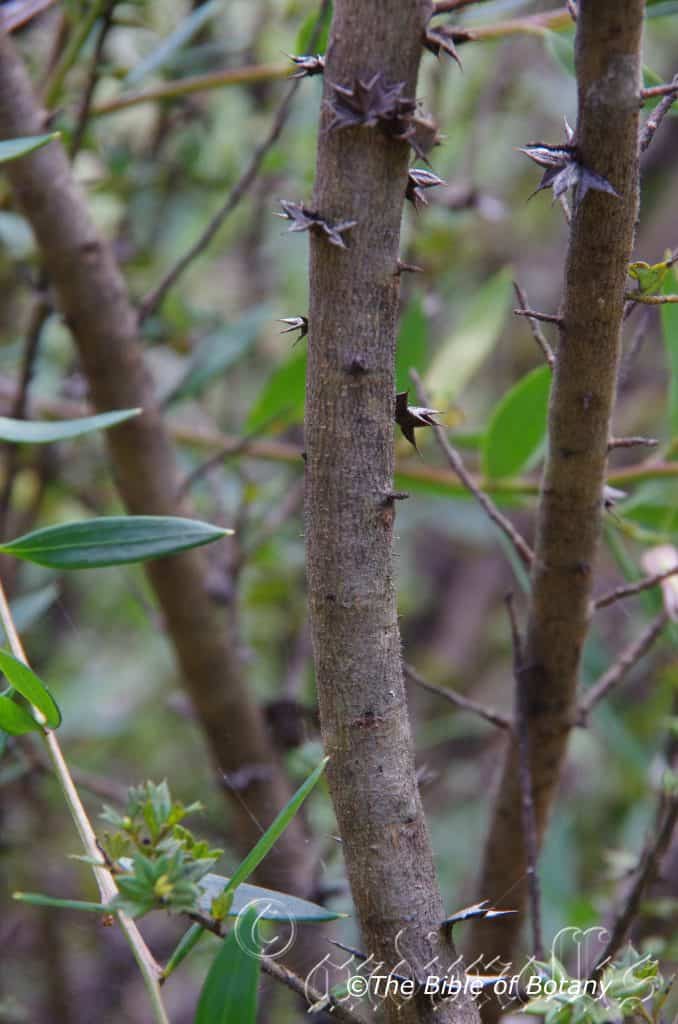
Rosser Gardens Benowa Qld.

Rosser Gardens Benowa Qld.

Rosser Gardens Benowa Qld.

Rosser Gardens Benowa Qld.

Rosser Gardens Benowa Qld.
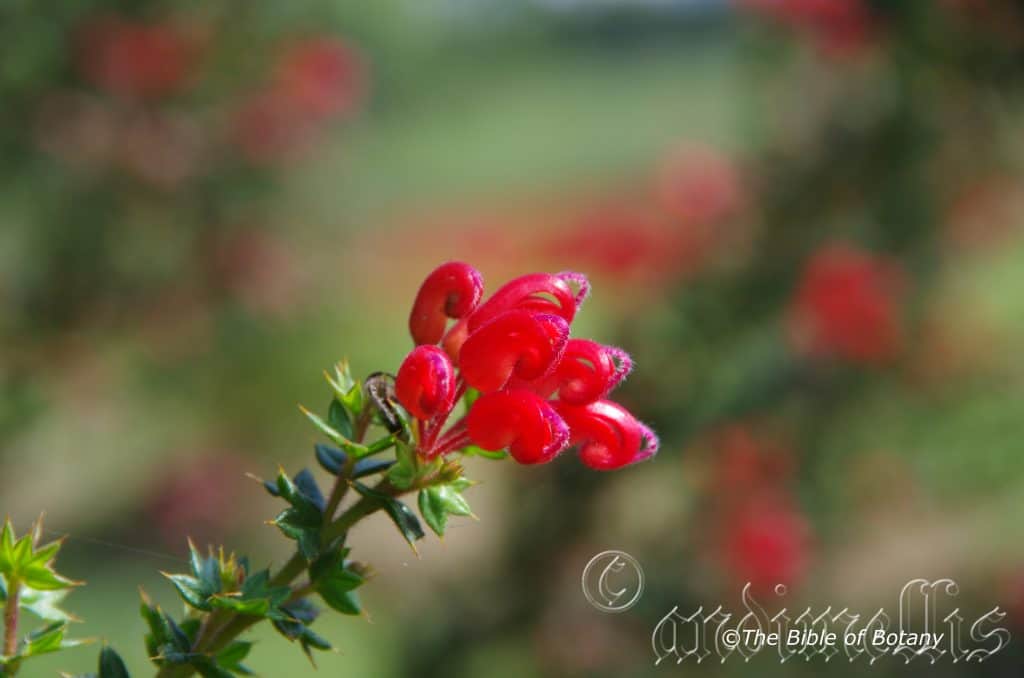
Rosser Gardens Benowa Qld.
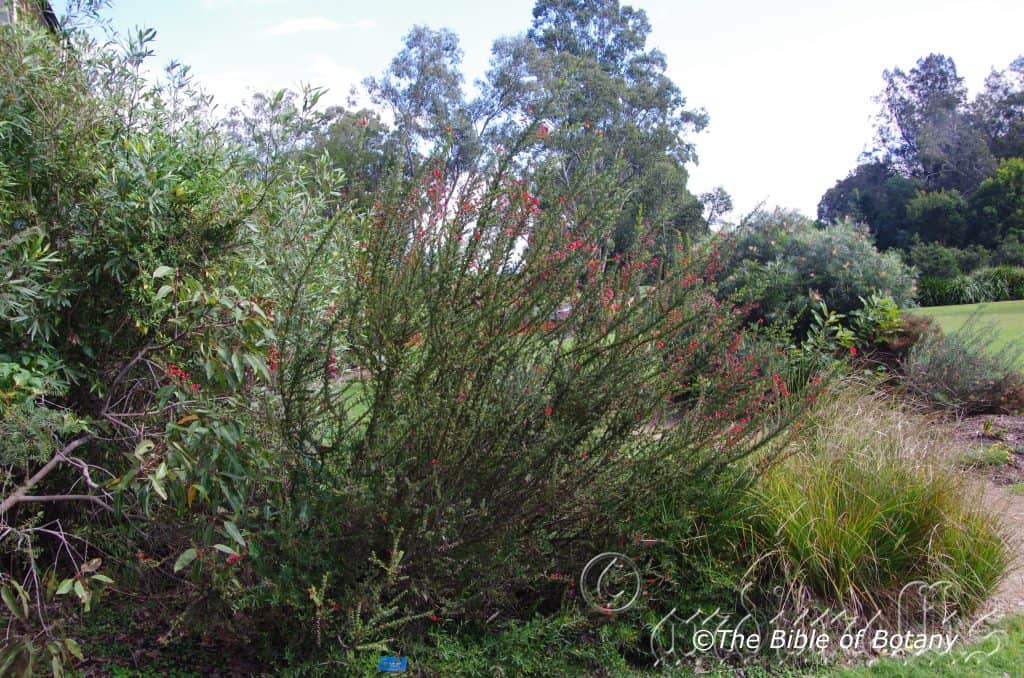
Rosser Gardens Benowa Qld.
Grevillea asteriscosa
Classification:
Class: Magnoliopsida
Order: Proteales
Family: Proteaceae
Genus: Is named in honour of C. F. Greville; 1749-1809, who was a British expert botanist on Algae, a foundation member of the London Horticultural Society and a collector of rare plants.
Species: From Aster, which is Greek/Latin for a star and Cosa, which is Latin for to cover. It usually refers to structures, or organs, which are covered in stellate hairs.
Sub Species:
Common Name: Star Leafed Grevillea.
Distribution:
Grevillea asteriscosa is found in the south west corner of Western Australia south from Muntadgin to Nyabing and west to Narembeen.
https://avh.ala.org.au/occurrences/search?taxa=Grevillea+asteriscosa#tab_mapView
Habitat Aspect Climate:
Grevillea asteriscosa prefers full sun. It grows with other low growing trees and shrubs in open woodlands ridges, outcrops or plains. The altitude ranges from 250 meters ASL to 450 meters ASL.
The temperatures range from 4 degrees in August to 38 degrees in January and February.
The rainfalls range from lows of 240mm to an average 400mm annually.
Soil Requirements:
Grevillea asteriscosa prefers skeletal white sands, loams, light gravely clays, gravels or boulders. The soils are usually derived from granites or at times sandstone. The soils pH ranges from 4.5pH to 6pH. It does not tolerate water logged soils. Non saline soils to moderately saline soils are tolerated.
Height & Spread:
Wild Plants: 0.3m to 1.8m by 0.5m to 2m.
Characteristics:
The larger branches and stems are a deep brown to deep grey brown glabrous. The branchlets are semi glossy khaki to pale yellow-green or pale khaki-yellow near the apexes. It is densely covered in long white hirsute to pilose hairs
The alternate palmate leaves have 3 to 9 spreading lobes. The lobes measure 5mm to 11mm in length by 8mm to 18mm in width over all. The individual narrow triangular lobes are rigid and measure 5mm to 8mm in length by 1.5mm to 3mm in width. The petiole measures 0.5mm to 1mm in length. The bases are cuneate while the apexes are tapering or acute with a rigid, pungent spine. The discolourous laminas are mid grey-green to deep grey-green and glabrous to sparsely covered in white pilose hairs on the upper laminas while the lower laminas are paler and sparsely covered in white pilose hair. The laminas are flat to decurve slightly downwards at the margins while the margins are entire. The mid vein is prominent on the lower lamina while the lateral veins are faintly prominent and are covered in white, hirsute and glandular hairs. The main vein is distinctly visible on the upper lamina.
The acroscopic conflorescences of Grevillea asteriscosa are born in small clusters or on short racemes from terminals or on special short auxiliary shoots. The racemes measure 1mm to34mm in length and bear 4 to 10 individual flowers. The perianth and style are the most prominent parts of the flower. The individual perianths are scarlet red to deep pink-red from the base through to the lobes. The perianth is covered in short, white, puberulent hairs externally and is covered in glandular hairs internally or is hirtellous just above the ovary. The perianth and lobes measure 15mm to 20mm in length. The lobes are very irregular and free.
The style is scarlet red at the base through to the stigma or turns deep pink as it nears the stigma. The lateral pollen presenter is scarlet-red to deep carmine. The pistil measures 15.5mm to 19.5mm in length. The style is sparsely covered in long, white pilose or sub sericeous hairs while the ovary is covered in white appressed villous hairs. The pedicles measure 7mm to 10mm in length. There are 4 elliptical stipules at base of the pedicels measure 5mm to 10mm in length. There are 4 inserted stamens. The flowers appear from May to November.
The fruit is an obovoidal to ellipsoidal follicle. The style is persistent. The green follicles turn brown when ripe. It is non-viscid and sparsely covered in tomentose hairs. They measure 9mm to 12mm in length by 6mm to 7mm in width.
Wildlife:
Grevillea asteriscosa is very attractive to small and medium size nectar eating honeyeaters like the Brown Honeyeater, Lichenostomus chrysops Yellow honeyeater, Lichmera indistincta Red headed honeyeater, Myzomela erythrocephala and butterflies.
Cultivation:
Grevillea asteriscosa is a very beautiful small shrub for arid or drier gardens in arid and temperate zones. I would be very tempted to try them as far north as Grafton on the east coast. They have an open spreading shape which from a distance looks similar to a small bramble. As garden subjects they will grow 1.5 meter to 2 meters in height by 1meter to 2 meters in diameter.
It makes a good hedges and safe wildlife corridors for birds to travel along. It can be regularly tip pruned to increase bushiness and maintain a smaller shrub.
It has a tendency to look unkempt and in need of a good pruning especially from a distance. Its upside is the small leaves packed closely to the stems makes it look like a fire ball when in flower from a distance as the flowers are born in proliferation and born over a long period. This means it is best planted in the centre of a garden bed or adjacent to a small forest where they can blend in with other stronger foliage plants when it is not in flower. Use plants with deep green leaves and larger pinnate leaves to the rear and in the foreground use prostrate or low growing natives with finer leaves only. This will ensure that the whole plant blends into the background when not in flower or at least most of it. When mass planting, plant them sparingly throughout the block to get the best effect or close to together to reduce the sparseness of the plants. One here and one there will be far better noticed in flower and forgotten about when void of flowers in a bush scene. For mass plantings or hedges plant them at 1 meter centres.
Propagation:
Seeds: The seeds can be sown directly into a seed raising mix. Cover them with 5mm of fine sand and keep moist not wet. Place the tray in a warm sunny position and keep moist not wet. When the seedlings are 25mm to 50mm tall, prick them out and plant them into 50mm native tubes using a good organic mix.
Once the seedlings reach 150mm to 200mm in height, nip the tips out before planting them out into their permanent position.
Cuttings: Use 70mm to 100mm long half ripened material when growing from cuttings from the present season’s growth. Take them in mid-autumn or early spring. Remove half the leaves from the bottom section being careful not to tear the bark.
1 Prepare the cutting mix by adding one third sharp clean river sand, one third peat and one third perlite. These ingredients are sterilize,
2 Select good material from non diseased plants,
3 Select semi green stems for cuttings. Look for a stem with two or three nodes,
4 Place the cutting on a flat, hard surface, and make a clean cut down one side of the cutting at the base for 10mm with a sharp sterile knife or razor blade. – This scarification of the node will increase the chances of roots emerging from this spot. Now remove all but one or two the leaves, leaving the apex leaves in tact. If the leaves are very large in proportion to the stem, cut off the apical halves.
5 Fill a saucer with water, and place a little medium strength rooting hormone into another container like a milk bottle top. Dip the node end of the cutting into the water and then into the rooting hormone. Tap off any excess hormone,
6 Use a small dipple stick or old pencil to poke a hole into the soilless potting mix. Ensure the hole is slightly larger than the stem diameter and be careful not to wipe the rooting hormone off the cuttings base, place the cuttings in a pattern ensuring the cuttings are not touching each other,
7 I like to place the pots in Plastic bags to help maintain temperature and moisture. Place in a semi shaded place like under 50mm shade cloth.
8 When the cuttings have struck, open the bag to allow air circulation for a few days to a week,
9 Once hardened off remove the cuttings from the bag and allow to further hardening for a few more days,
10 Transplant into a good potting mix to grow on.
Fertilize using seaweed, fish emulsion or organic chicken pellets soaked in water on an alternate basis. Fertilize every two months until the plants are established then twice annually in early September or March to maintain health, vitality and better flowering. Avoid synthetic fertilizers as they will most likely contain calcium and phosphorous at levels, which are toxic to most Proteaceae.
Further Comments from Readers:
“Hi reader, it seems you use The Bible of Botany a lot. That’s great as we have great pleasure in bringing it to you! It’s a little awkward for us to ask, but our first aim is to purchase land approximately 1,600 hectares to link several parcels of N.P. into one at The Pinnacles NSW Australia, but we need your help. We’re not salespeople. We’re amateur botanists who have dedicated over 30 years to saving the environment in a practical way. We depend on donations to reach our goal. If you donate just $5, the price of your coffee this Sunday, We can help to keep the planet alive in a real way and continue to bring you regular updates and features on Australian plants all in one Botanical Bible. Any support is greatly appreciated. Thank you.”
In the spirit of reconciliation we acknowledge the Bundjalung, Gumbaynggirr and Yaegl and all aboriginal nations throughout Australia and their connections to land, sea and community. We pay our respect to their Elders past, present and future for the pleasures we have gained.
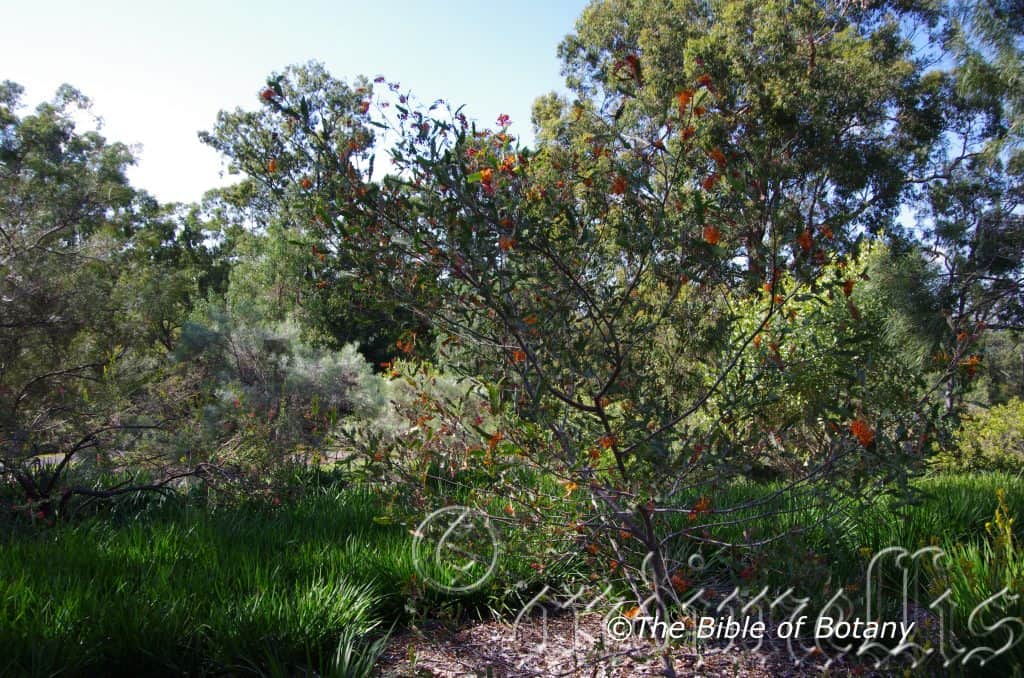
Mount Cootha Botanic Gardens Qld.

Mount Cootha Botanic Gardens Qld.
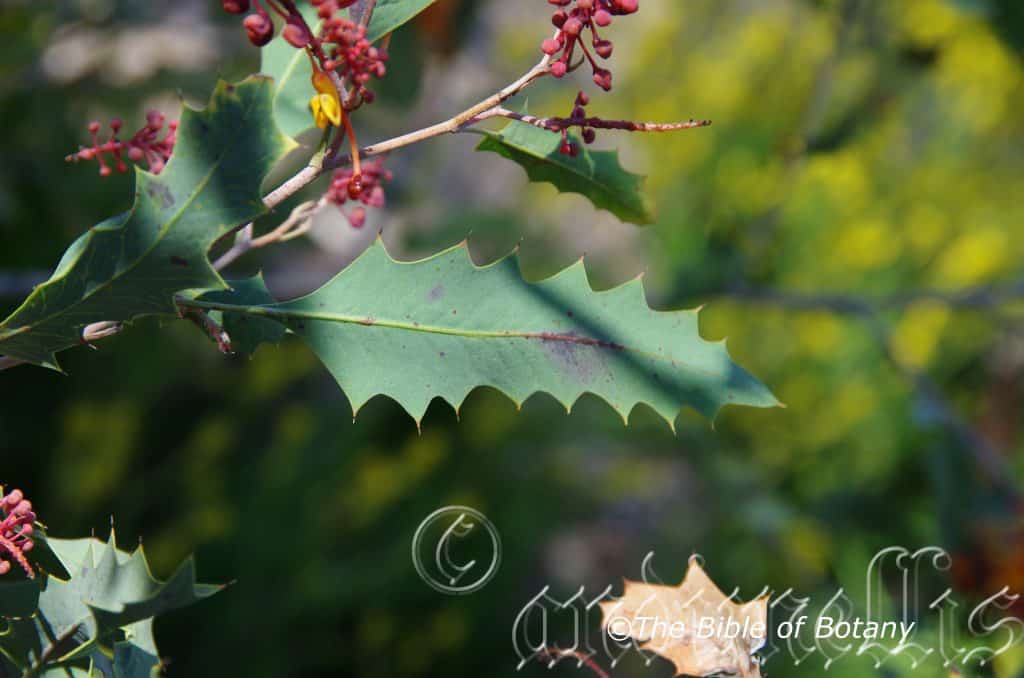
Mount Cootha Botanic Gardens Qld.
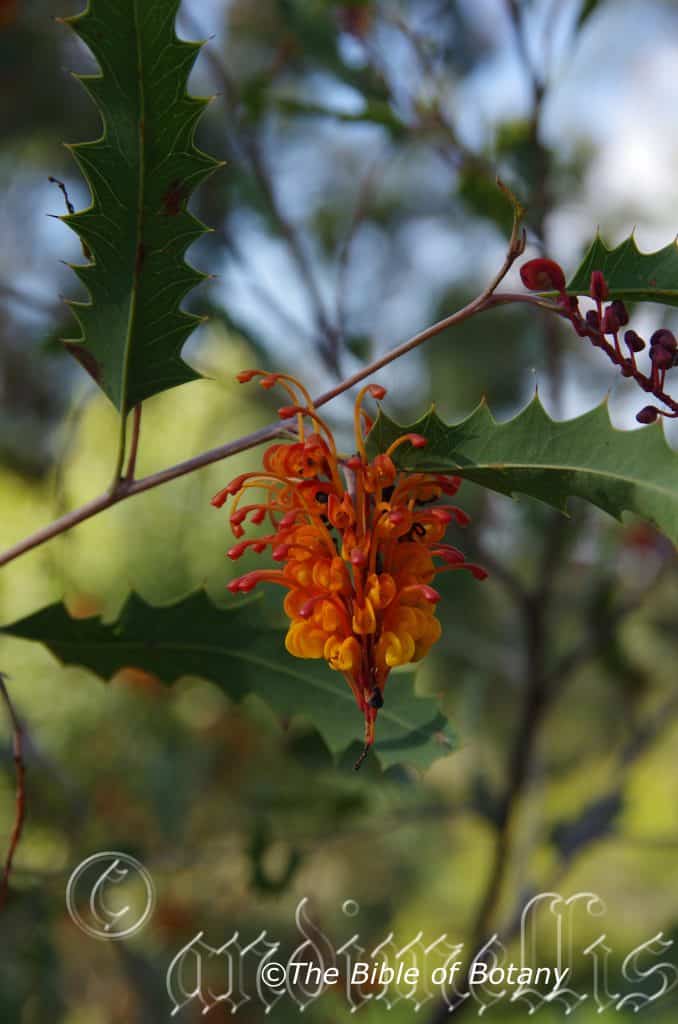
Mount Cootha Botanic Gardens Qld.

Mount Cootha Botanic Gardens Qld.
Grevillea aurea
Class: Magnoliopsida
Order: Proteales
Family: Proteaceae
Genus: Is named in honour of C. F. Greville; 1749-1809, who was a British expert botanist on Algae, a foundation member of the London Horticultural Society and a collector of rare plants.
Species: From Aurea, which is Latin for yellow-orange or golden-yellow. It refers to structures or organs, which are yellow-orange or golden-yellow in colour.
Sub Species:
Common Name: Golden Grevillea.
Distribution:
Grevillea aurea is endemic to the top end of the Northern Territory east from the Darwin Coastal Plains to the northern regions of Kakadu National Park.
https://avh.ala.org.au/occurrences/search?taxa=Grevillea+aurea#tab_mapView
Habitat Aspect Climate:
Grevillea aurea prefers full sun. It grows open Eucalyptus woodlands, open vine thickets and open monsoonal forests on ridges, cliffs or escarpments. The altitude ranges from 50 meters ASL to 350 meters ASL.
The temperatures range from 10 degrees in August to 40 degrees in January and February.
The rainfalls range from lows of 950mm to an average 1650mm annually.
Soil Requirements:
Grevillea aurea prefers red skeletal sandy loams, light clays or skeletal loams over sandstone. The soils are usually derived from sandstones. The soils pH ranges from 5pH to 6.5pH. It does not tolerate water logged soils. Non saline soils to moderately saline soils are tolerated.
Height & Spread:
Wild Plants: 2m to 5m by 2m to 4m.
Characteristics:
The larger branches and stems are brown to grey-brown and glabrous. The branches are dull, brown to grey-brown glabrous while the juvenile growth is pale blue green and glabrous.
The alternate oblong leaves measure 70mm to 160mm in length by 15mm to 45mm in width. The bases are slightly to strongly oblique and vary from cuneate to almost truncate while the apexes are broad acute with a long rigid, sharp spine. The discolourous laminas are dull mid blue-green and glabrous on the upper lamina while the lower laminas are paler to glaucous. The laminas are flat or slightly undulating to moderately undulating while the margins are dentate to shallowly lobed with 4 to 13 teeth on each margin. The teeth measure 5mm to 10mm in length including the rigid sharp spine. The mid vein is strongly prominent on the lower lamina and slightly prominent on the upper lamina on the base third to half. It is distinctly visible on the remainder of the lamina Juvenile growth and new leaves are covered in fine white, caduceous sericeous hairs.
The conflorescence of Grevillea aurea is an auxiliary or terminal decurve, simple or branched 2 or 3 times from the base. The racemes measure 40mm to 160mm in length and bears 40 to 80 flowers. The perianth and style are the most prominent parts of the flower. The individual perianths are a coppery red turning yellow, pale pink, deep pink and scarlet red from the base through to the lobes. The perianth is glabrous externally with white hirtellous hairs internally. The perianth and lobes measure 14mm to 20mm in length. The lobes are free and joined.
The style is golden yellow, scarlet red or deep red at the base while the pollen presenter is golden yellow. The pistils measure 17mm to 23mm in length. The style is glabrous. The perianths peduncles measure 6mm to 10mm in length. The pedicels measure 7mm to 8.5mm in length. The ovary is glabrous while the style is sparsely covered in pappilate or short, white hirsute hairs on the apical half. The flowers appear from March to August however some flowers may appear throughout year in favourable seasons.
The fruits are ellipsoidal follicles. The style is persistent on the dull, green glabrous follicles that turn brown when ripe. They measure 10mm to 17mm by 4mm to 8mm in diameter. The ellipsoidal brown seeds measure 5mm to 6.3mmin length by 3.5mm in diameter.
Wildlife:
Grevillea aurea is very attractive to a small and medium size nectar eating honeyeaters like the White lined Honeyeater, Meliphaga albilineata and the Blue face Honeyeater Entomyzon cyanotis.
Cultivation:
Grevillea aurea is a very beautiful small shrub for arid or drier gardens in arid and tropical to sub-tropical zones. It has very unusual pendent flowers for a Grevillea which are well displayed through the open growth habit of the branches and leaves. I would be very tempted to try them as far south as Marybough on the east coast where sandstone soils prevail and frosts are not encountered. They have an open upright or spreading habit. As garden subjects they will grow 4 meters to 5 meters in height by 2 meters to 2.5 meters in diameter when cultivated. It is fast growing and drought tolerant but are very cold sensitive. The flowers are spectacular and are very attractive to all nectar feeding honeyeaters.
They have a tendency to look unkempt and in need of a good pruning especially from a distance if planted in isolation. Their upside is the sparseness of foliage along the stems makes the flowers look more spectacular. This means it is best planted in the center of a garden bed or adjacent to a small forest where they can blend in with other stronger foliage plants when it is not in flower. Use plants with deep green leaves or fine pale green leaves that will contrast with the blue green. Larger leaf plants to the rear and in the foreground can make the blend into much during periods when there are no or few flowers. When mass planting, plant them sparingly throughout the block to get the best effect. One here and one there will be far better noticed in flower and forgotten about when void of flowers. If the foliage is required as a feature in the garden plant 2 or 3 very close together in an attempt to make them appear bushier. Light tip pruning may also be advantageous when the plants are at the juvenile stage of development.
They should be replanted every 3 to 5 years as they have a relative short life span. This is best done by planting tube stock out below the parent plant as the shrubs attain their maximum height in the garden.
They have been successfully grafted onto Grevillea robusta rootstock which makes them a great standard plant in court yards and on verandas.
Propagation:
Seeds: The seeds need to be treated before sowing. This can be done by placing the seeds into a small calico bag with sharp clean sand and rubbing them to scarify the outer surface or they can be nicked individually with a knife. Another method is to rub the individual seeds lightly over fine sandpaper. Sow the freshly treated seeds directly into a seed raising mix. Cover them with 5mm of fine sand and keep moist not wet. Place the tray in a warm sunny position. When the seedlings are 25mm to 50mm tall, prick them out and plant them into 50mm native tubes using a good organic mix.
Once the seedlings reach 150mm to 200mm in height, nip the tips out before planting them out into their permanent position. Use spacings of 1.5 meters to 2.5 meters.
Cuttings: Use 70mm to 100mm long half ripened material when growing from cuttings from the present season’s growth. Take them in mid-autumn or early spring. Remove half the leaves from the bottom section being careful not to tear the bark.
1 Prepare the cutting mix by adding one third sharp clean river sand, one third peat and one third perlite. These ingredients are sterilize,
2 Select good material from non diseased plants,
3 Select semi green stems for cuttings. Look for a stem with two or three nodes,
4 Place the cutting on a flat, hard surface, and make a clean cut down one side of the cutting at the base for 10mm with a sharp sterile knife or razor blade. – This scarification of the node will increase the chances of roots emerging from this spot. Now remove all but one or two the leaves, leaving the apex leaves in tact. If the leaves are very large in proportion to the stem, cut off the apical halves.
5 Fill a saucer with water, and place a little medium strength rooting hormone into another container like a milk bottle top. Dip the node end of the cutting into the water and then into the rooting hormone. Tap off any excess hormone,
6 Use a small dipple stick or old pencil to poke a hole into the soilless potting mix. Ensure the hole is slightly larger than the stem diameter and be careful not to wipe the rooting hormone off the cuttings base, place the cuttings in a pattern ensuring the cuttings are not touching each other,
7 I like to place the pots in Plastic bags to help maintain temperature and moisture. Place in a semi shaded place like under 50mm shade cloth.
8 When the cuttings have struck, open the bag to allow air circulation for a few days to a week,
9 Once hardened off remove the cuttings from the bag and allow to further hardening for a few more days,
10 Transplant into a good potting mix to grow on.
Fertilize using seaweed, fish emulsion or organic chicken pellets soaked in water on an alternate basis. Fertilize every two months until the plants are established then twice annually in early September or March to maintain health, vitality and better flowering. Avoid synthetic fertilizers as they will most likely contain calcium and phosphorous at levels, which are toxic to most Proteaceae.
Further Comments from Readers:
“Hi reader, it seems you use The Bible of Botany a lot. That’s great as we have great pleasure in bringing it to you! It’s a little awkward for us to ask, but our first aim is to purchase land approximately 1,600 hectares to link several parcels of N.P. into one at The Pinnacles NSW Australia, but we need your help. We’re not salespeople. We’re amateur botanists who have dedicated over 30 years to saving the environment in a practical way. We depend on donations to reach our goal. If you donate just $5, the price of your coffee this Sunday, We can help to keep the planet alive in a real way and continue to bring you regular updates and features on Australian plants all in one Botanical Bible. Any support is greatly appreciated. Thank you.”
In the spirit of reconciliation we acknowledge the Bundjalung, Gumbaynggirr and Yaegl and all aboriginal nations throughout Australia and their connections to land, sea and community. We pay our respect to their Elders past, present and future for the pleasures we have gained.
Grevillea baileyana
Classification:
Class: Magnoliopsida
Order: Proteales
Family: Proteaceae
Genus: Is named in honour of C. F. Greville; 1749-1809, who was a British expert botanist on Algae, a foundation member of the London Horticultural Society and a collector of rare plants.
Species: Is named in honour of Frederick Mason Bailey; 1827-1915, who was an English born Australian seed collector and curator of the Queensland Museum.
Sub Species:
Common Name: Brown Silky Oak or Northern Oak.
Distribution:
Grevillea baileyana is endemic to far north coastal Queensland south from the Torres Straight Islands and the Lockhart River to Atherton and Ingham. It is found on and east of the Great Dividing Range to the coast.
https://avh.ala.org.au/occurrences/search?taxa=Grevillea+baileyana#tab_mapView
Habitat Aspect Climate:
Grevillea baileyana prefer full sun dappled shade to heavy shade. It grows in well-developed rainforests in riverine rainforests, riparian rainforests, gallery forests and ridge top rainforests. The altitude ranges from sea level to 1350 meters ASL.
The temperatures range from 10 degrees in August to 36 degrees in February.
The rainfalls range from lows of 1400mm to an average 2800mm annually.
Soil Requirements:
Grevillea baileyana prefers better quality red loams to medium clays. The soils are derived from sandstones, granites or black basalts. The soils pH ranges from 5pH to 7PH. It does not tolerate water logged soils. Non saline soils to moderately saline soils are tolerated.
Height & Spread:
Wild Plants: 20m to 30m by 8m to 12m.
Characteristics:
The trunk is hard grey to deep grey-brown and scabrous while the larger branches are brown to grey brown glabrous and slightly scabrous. The branchlets are semi glossy, brown to red-brown and square to angulated and densely covered in rusty-brown sericeous hairs.
The alternate juvenile leaves are parapinnate. The oblong-ovate to lanceolate leaves have 5 to 9 lobes. They measure 30mm to 110mm long by 15mm to 30mm wide. The adult leaves are narrow elliptical or lanceolate and measure 90mm to 220mm in length by 10mm to 55mm in width. The bases are tapering to cuneate while the apexes are narrow acute.
The discolourous laminas are mid green and glabrous on the upper laminas while the lower laminas are a paler green and densely covered in short rusty-brown to golden brown sericeous hairs. The mid vein and lateral veins are prominent on the lower laminas and are distinctly visible on the upper laminas being a paler green than the lamina. The laminas are undulating and recurve upwards from the mid vein to the margins while the margins are entire. The petioles measure 6mm to 15mm in length.
The inflorescence is a paniculate terminal raceme with 5 to 16 branches. The racemes maybe born singularly or branched 2 or 3 times. The rachis is densely covered in fawn to white sericeous hairs and measures 110mm to 160mm in length. The perianth and style are the most prominent parts of the flower. The individual perianths are green at the bud stage turning white to cream from the base through to the variable lobes. The perianth is sparsely covered in white sericeous hairs externally and sparsely covered in white sericeous hairs internally. The perianth and lobes measure 2.5mm to 5mm in length. The lobes are free and regular.
The style is white at the base while the stigma presenter is white or very pale green. The pistils measure 17mm to 21mm long. The style is glabrous. The ovary is covered in white sericeous hairs. The perianths peduncles measure 3mm to 5mm in length. The honey scented flowers appear from mid-September to late October.
Grevillea baileyana’s fruit is a flattened ovoid to oblong follicle. The style is persistent though usually broken once the fruit ripens. The follicles are dull green and turn deep grey-brown to black on ripening. It is glabrous and heavily finely streaked. The follicles measure 12mm to 14mm in length by 7mm to 9mm in width. The flat glossy black seeds measure 11mm to 12mm in length by 6mm to 7mm in width. The seeds are completely surrounded with a 1.5mm to 2mm fawn papery wing.
Wildlife:
Grevillea baileyana is very attractive larger nectar eating honeyeaters like the Blue face Honeyeater Entomyzon cyanotis, lorikeets like the Rainbow lorikeet, Trichoglossus moluccanus as well as a host of butterflies, native beetles, native flies and bees.
Cultivation:
Grevillea baileyana is a very beautiful tall growing tree for larger gardens in tropical to semi tropical zones. It is a very prolific in flower which contrasts the rusty brown lower laminas. As garden subjects it will grow 16 meters to 25 meters tall by 8 meters to 10 meters in diameter when grown in the open. It is fast growing and drought tolerant but is cold sensitive so all frosts should be avoided. The flowers are spectacular and are very attractive to all nectar feeding fauna. It can be utilized on the sunny side of sheds to help cool them down or as feature trees.
It can be used as shade trees in semi protected areas. Strong winds can cause limbs to break on isolated trees planted in the open but planting in groups or with other trees can alleviate this problem. It is an excellent tree for starting a rainforest garden and are often found decolonizing cleared rainforests in the natural habitat. When planting the trees in a rainforest try to place them near the edge so the proliferation of flowers can be fully enjoyed.
Propagation:
Seeds: Grevillea baileyana seeds can be sown directly into a seed raising mix. Cover them with 5mm of fine sand and keep moist not wet. Place the tray in a warm sunny position. When the seedlings are 25mm to 50mm tall, prick them out and plant them into 50mm native tubes using a good organic mix.
Once the seedlings reach 150mm to 200mm in height, nip the tips out before planting them out into their permanent position. Use spacings of 1.5 meters to 2.5 meters
Cuttings: Use 70mm to 100mm long half ripened material when growing from cuttings from the present season’s growth. Take them in mid-autumn or early spring. Remove half the leaves from the bottom section being careful not to tear the bark.
1 Prepare the cutting mix by adding one third sharp clean river sand, one third peat and one third perlite. These ingredients are sterilize,
2 Select good material from non diseased plants,
3 Select semi green stems for cuttings. Look for a stem with two or three nodes,
4 Place the cutting on a flat, hard surface, and make a clean cut down one side of the cutting at the base for 10mm with a sharp sterile knife or razor blade. – This scarification of the node will increase the chances of roots emerging from this spot. Now remove all but one or two the leaves, leaving the apex leaves in tact. If the leaves are very large in proportion to the stem, cut off the apical halves.
5 Fill a saucer with water, and place a little medium strength rooting hormone into another container like a milk bottle top. Dip the node end of the cutting into the water and then into the rooting hormone. Tap off any excess hormone,
6 Use a small dipple stick or old pencil to poke a hole into the soilless potting mix. Ensure the hole is slightly larger than the stem diameter and be careful not to wipe the rooting hormone off the cuttings base, place the cuttings in a pattern ensuring the cuttings are not touching each other,
7 I like to place the pots in Plastic bags to help maintain temperature and moisture. Place in a semi shaded place like under 50mm shade cloth.
8 When the cuttings have struck, open the bag to allow air circulation for a few days to a week,
9 Once hardened off remove the cuttings from the bag and allow to further hardening for a few more days,
10 Transplant into a good potting mix to grow on.
Fertilize using seaweed, fish emulsion or organic chicken pellets soaked in water on an alternate basis. Fertilize every two months until the plants are established then twice annually in early September or March to maintain health, vitality and better flowering. Avoid synthetic fertilizers as they will most likely contain calcium and phosphorous at levels, which are toxic to most Proteaceae.
Further Comments from Readers:
“Hi reader, it seems you use The Bible of Botany a lot. That’s great as we have great pleasure in bringing it to you! It’s a little awkward for us to ask, but our first aim is to purchase land approximately 1,600 hectares to link several parcels of N.P. into one at The Pinnacles NSW Australia, but we need your help. We’re not salespeople. We’re amateur botanists who have dedicated over 30 years to saving the environment in a practical way. We depend on donations to reach our goal. If you donate just $5, the price of your coffee this Sunday, We can help to keep the planet alive in a real way and continue to bring you regular updates and features on Australian plants all in one Botanical Bible. Any support is greatly appreciated. Thank you.”
In the spirit of reconciliation we acknowledge the Bundjalung, Gumbaynggirr and Yaegl and all aboriginal nations throughout Australia and their connections to land, sea and community. We pay our respect to their Elders past, present and future for the pleasures we have gained.
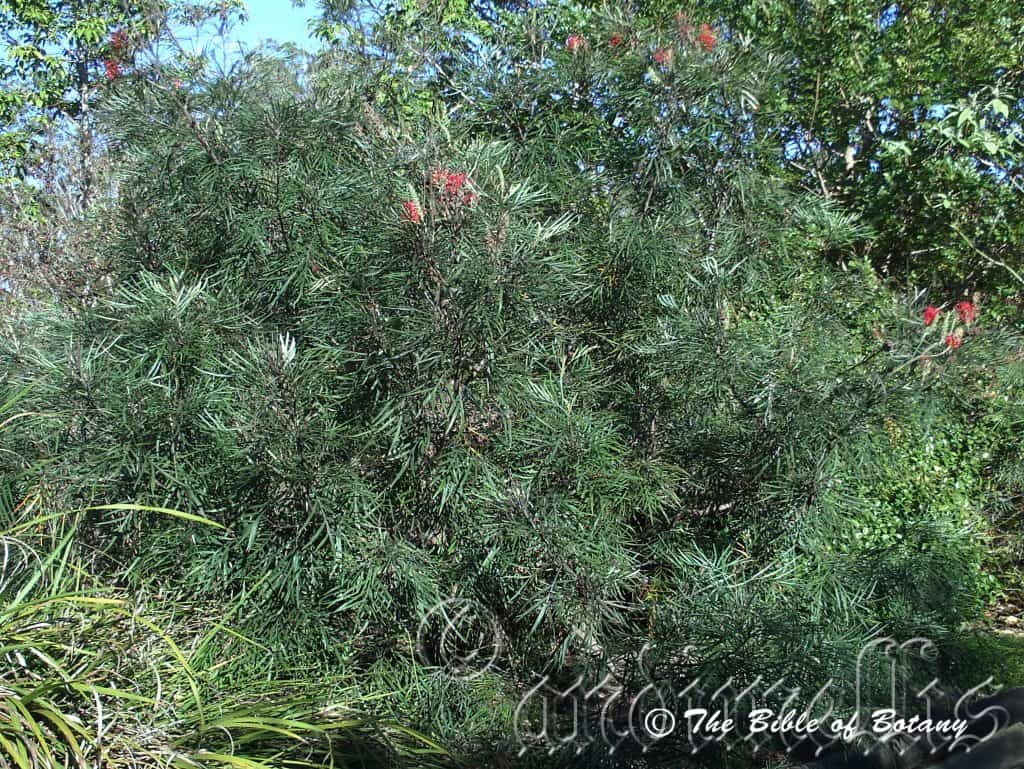
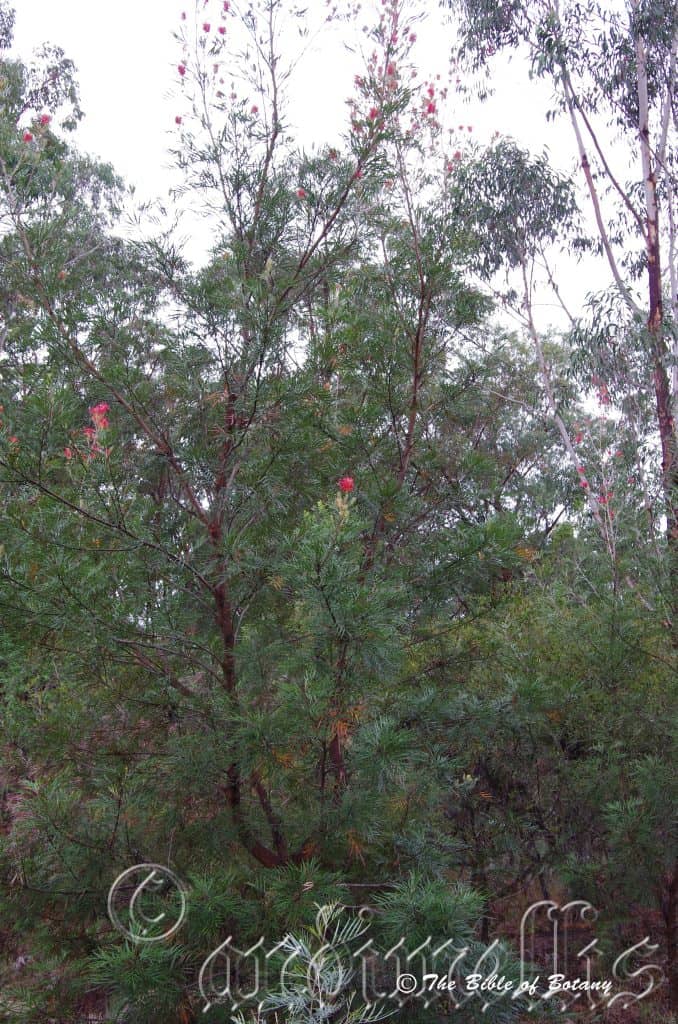
Author’s Garden The Pinnacles NSW
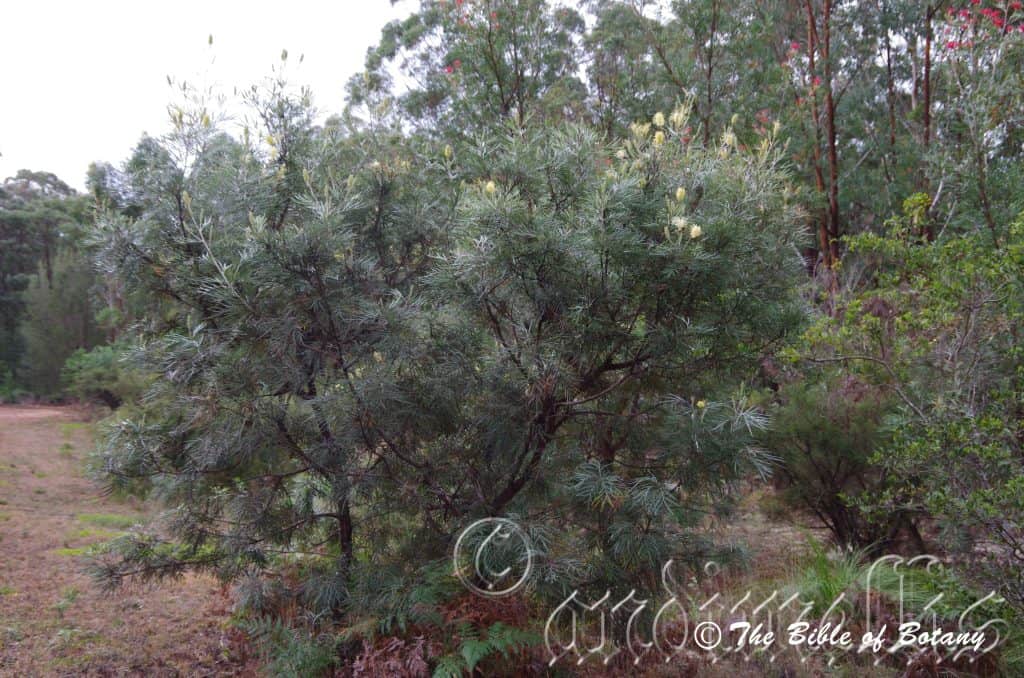
Author’s Garden The Pinnacles NSW

Rosser Gardens Benowa Qld.
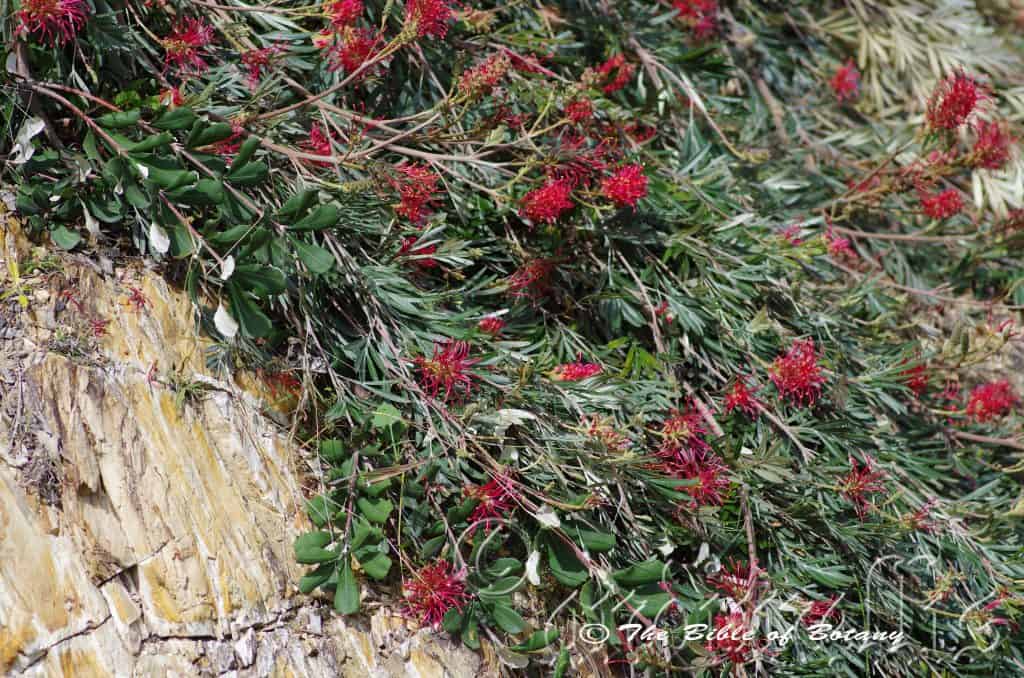
Rosser Gardens Benowa Qld.
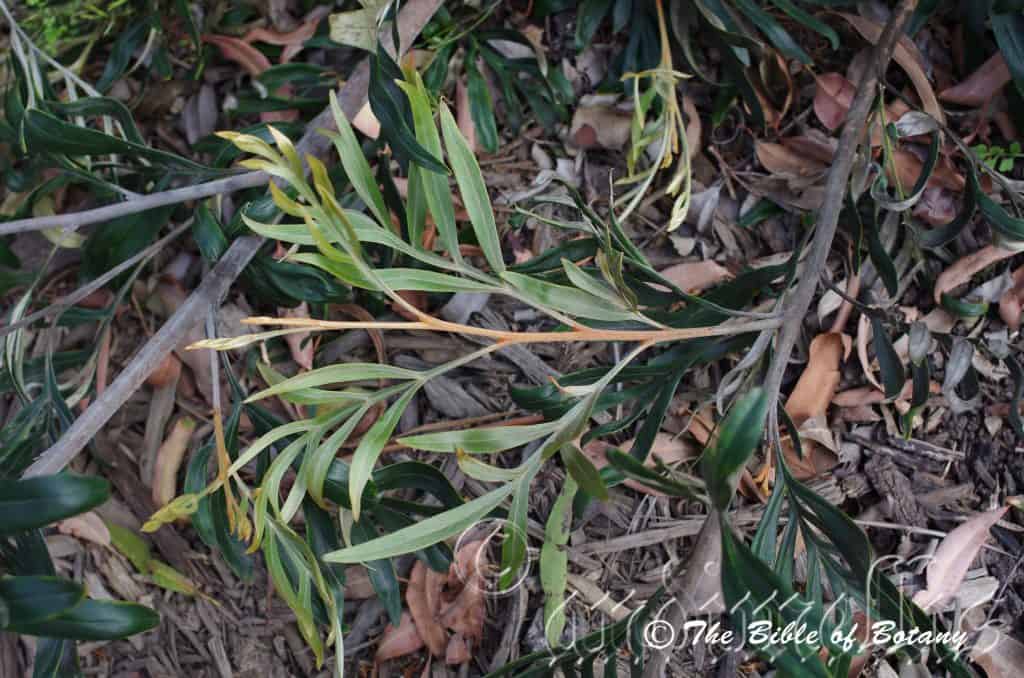
Mount Cootha Botanic Gardens Qld.
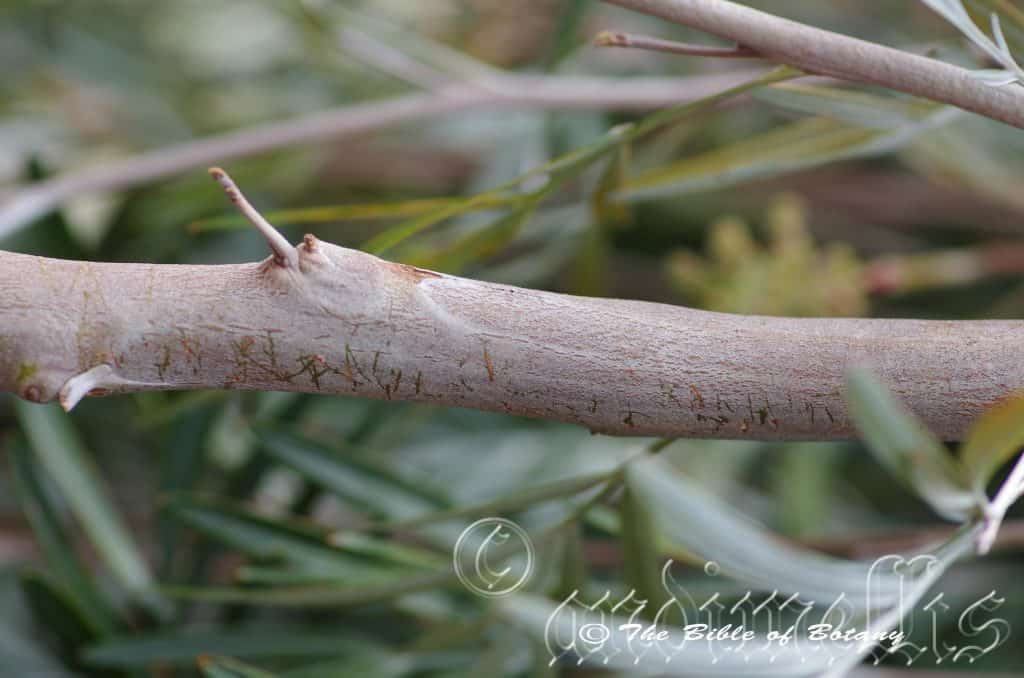
Rosser Gardens Benowa Qld.

Mount Cootha Botanic Gardens Qld.
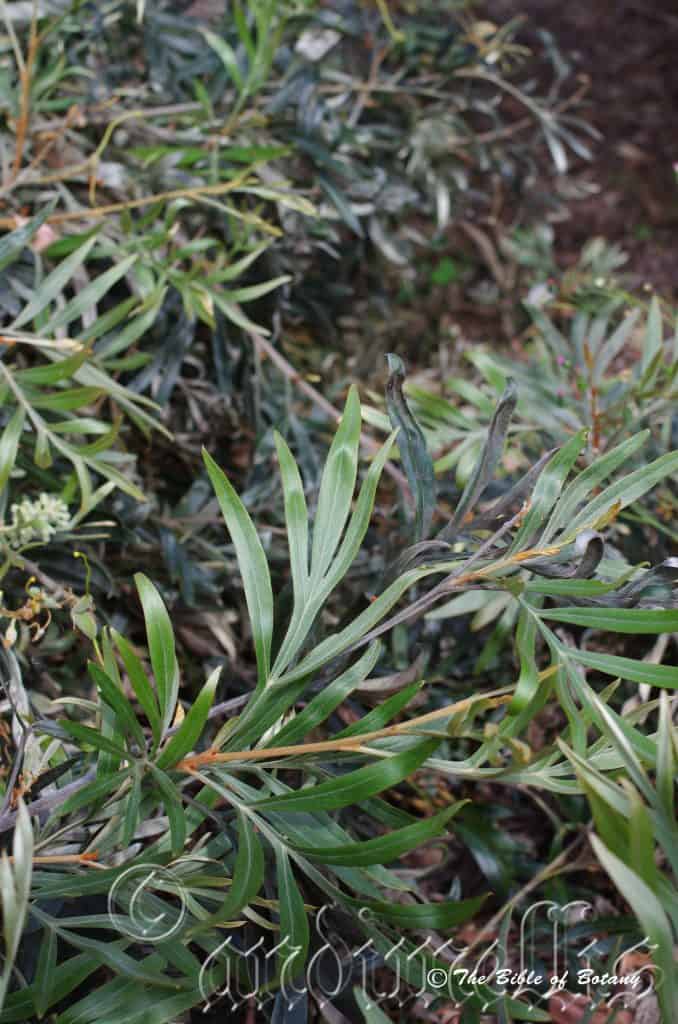
Mount Cootha Botanic Gardens Qld.
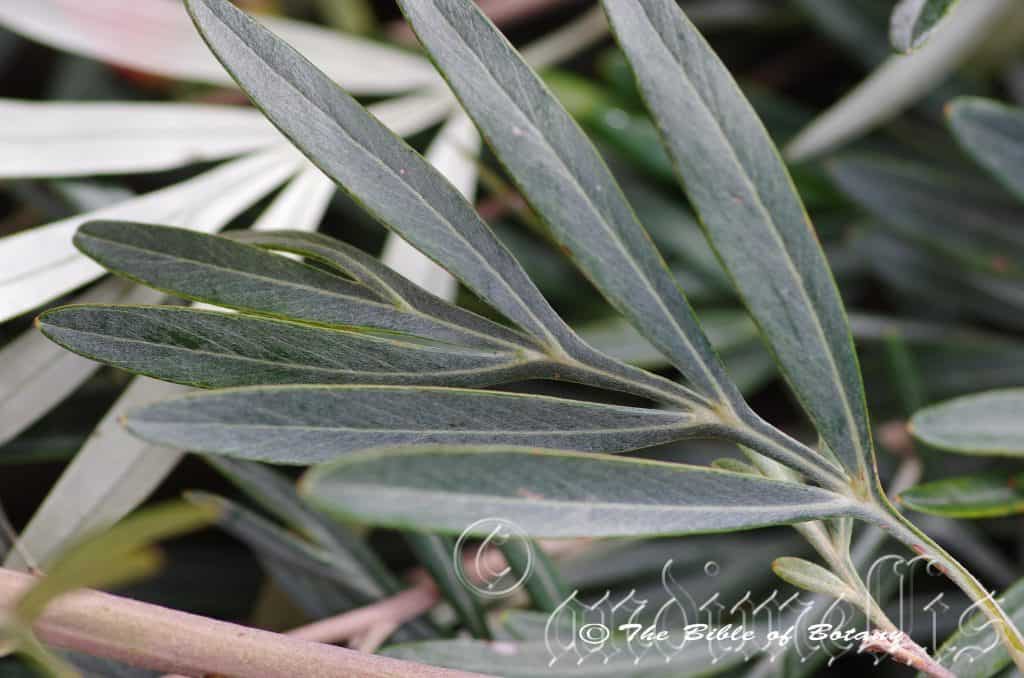
Rosser Gardens Benowa Qld.

Rosser Gardens Benowa Qld.
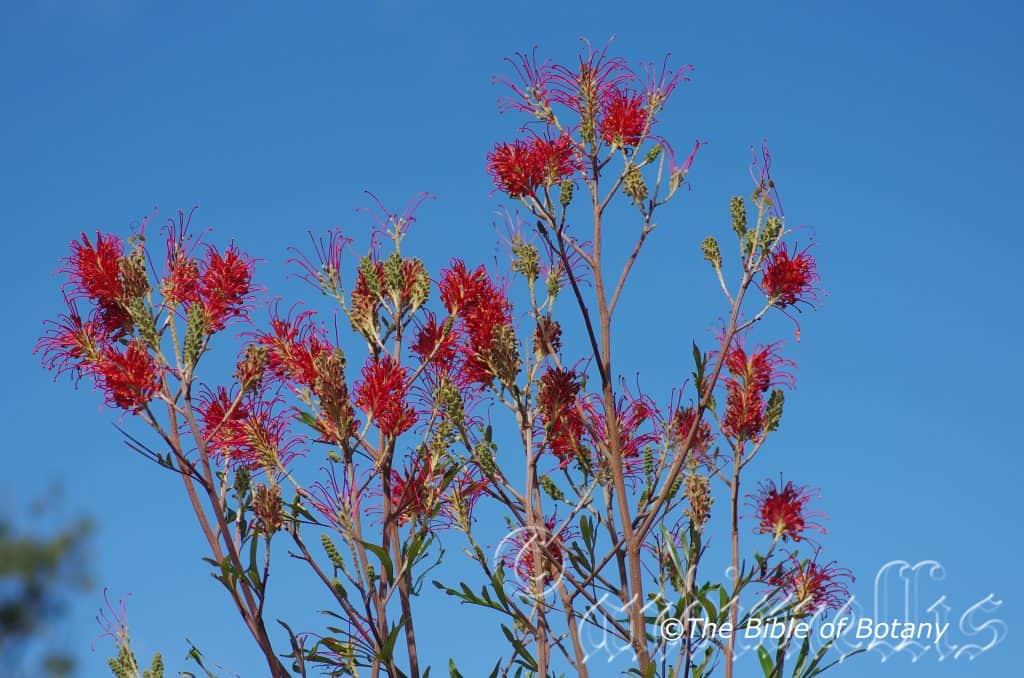
Author’s Garden The Pinnacles NSW

Author’s Garden The Pinnacles NSW
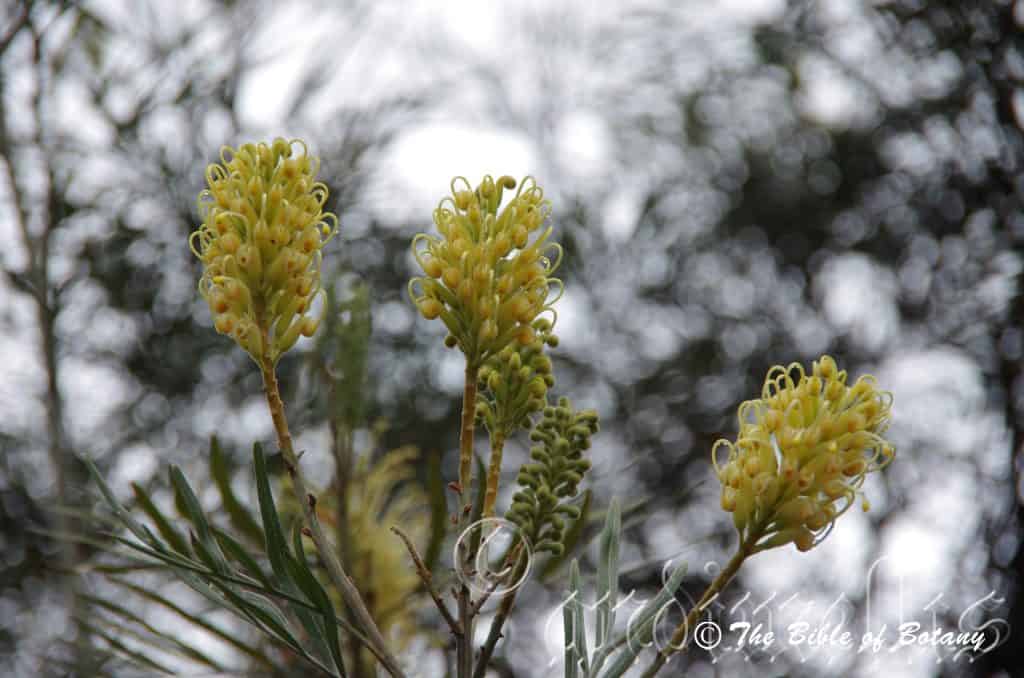
Author’s Garden The Pinnacles NSW

Author’s Garden The Pinnacles NSW

Author’s Garden The Pinnacles NSW
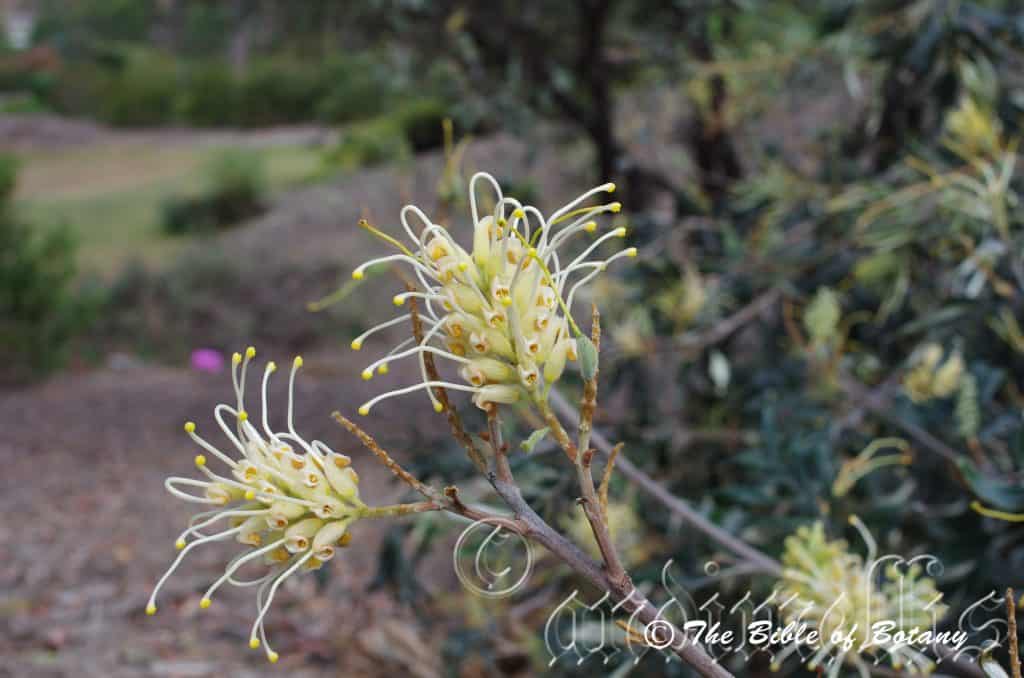
Mount Cootha Botanic Gardens Qld.
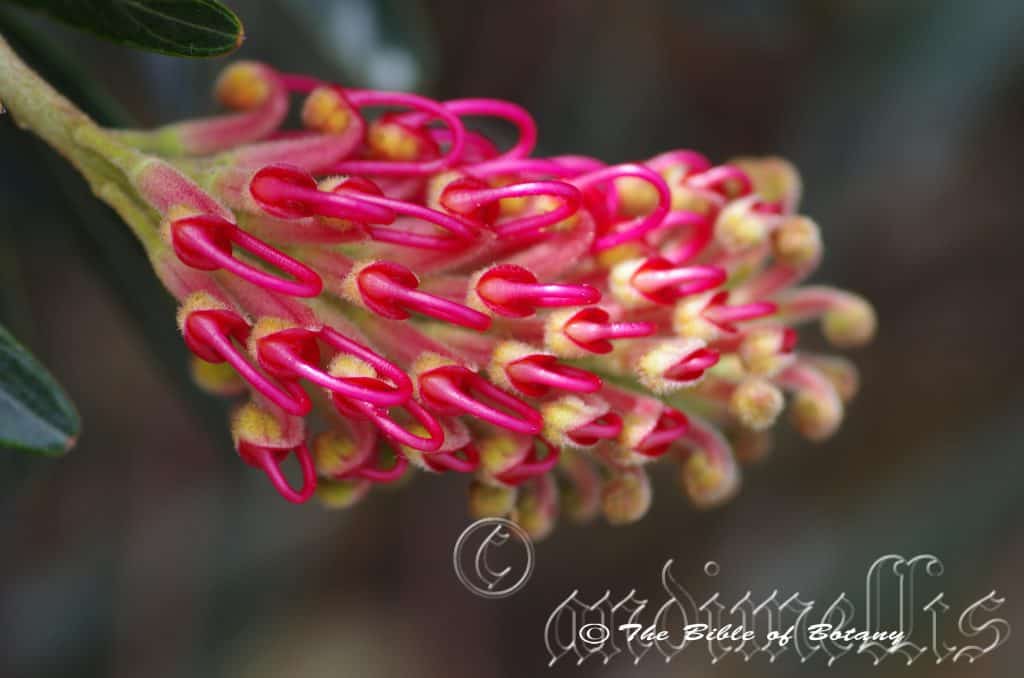
Mount Cootha Botanic Gardens Qld.
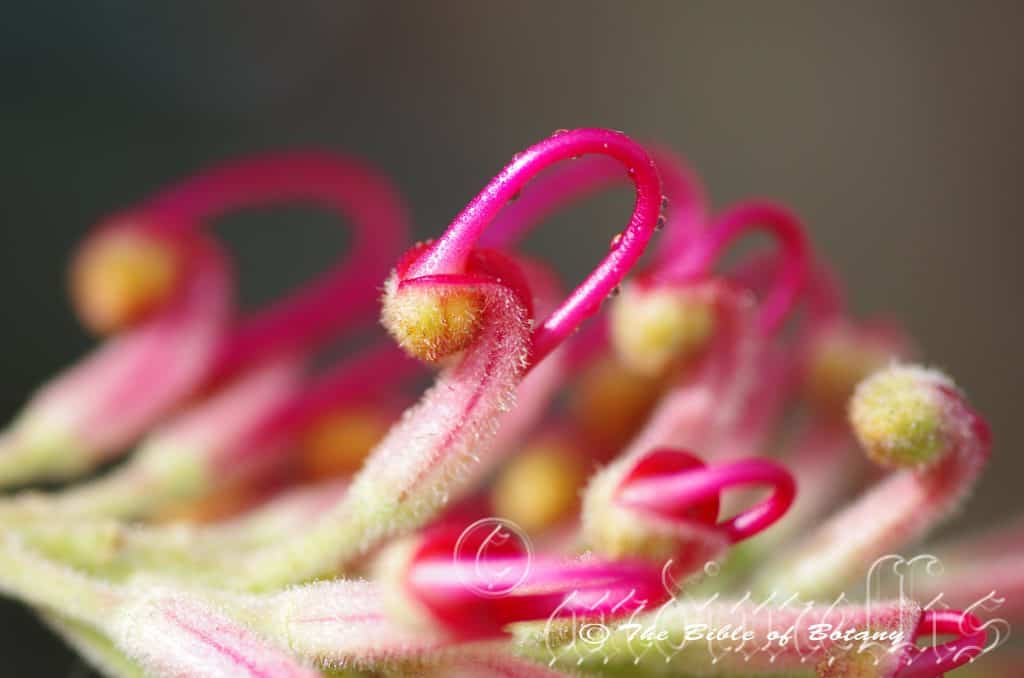
Mount Cootha Botanic Gardens Qld.
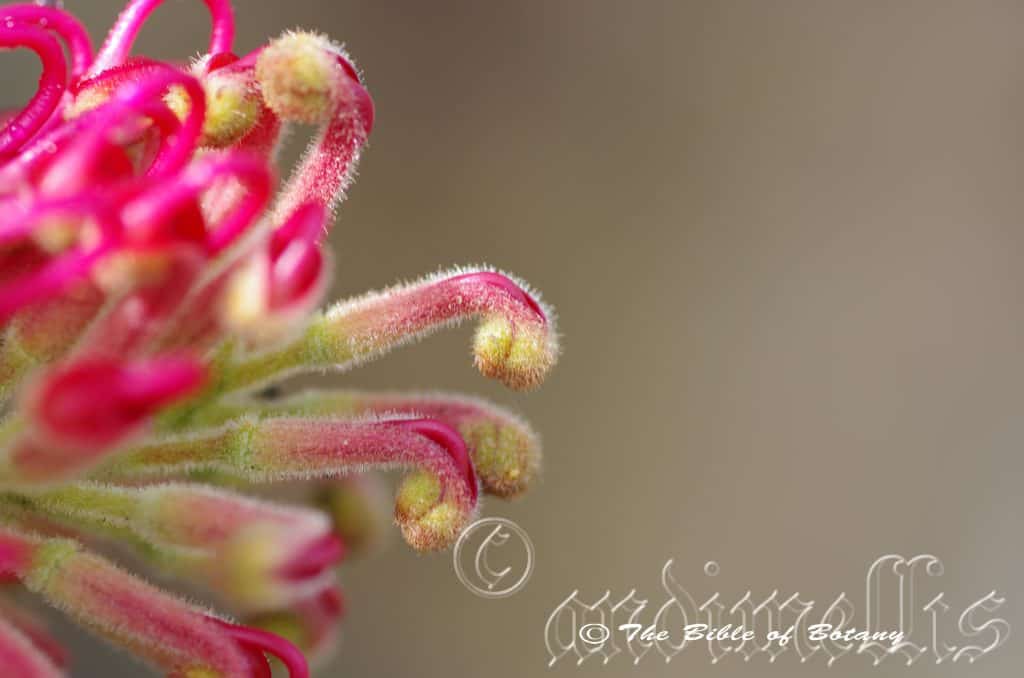
Mount Cootha Botanic Gardens Qld.
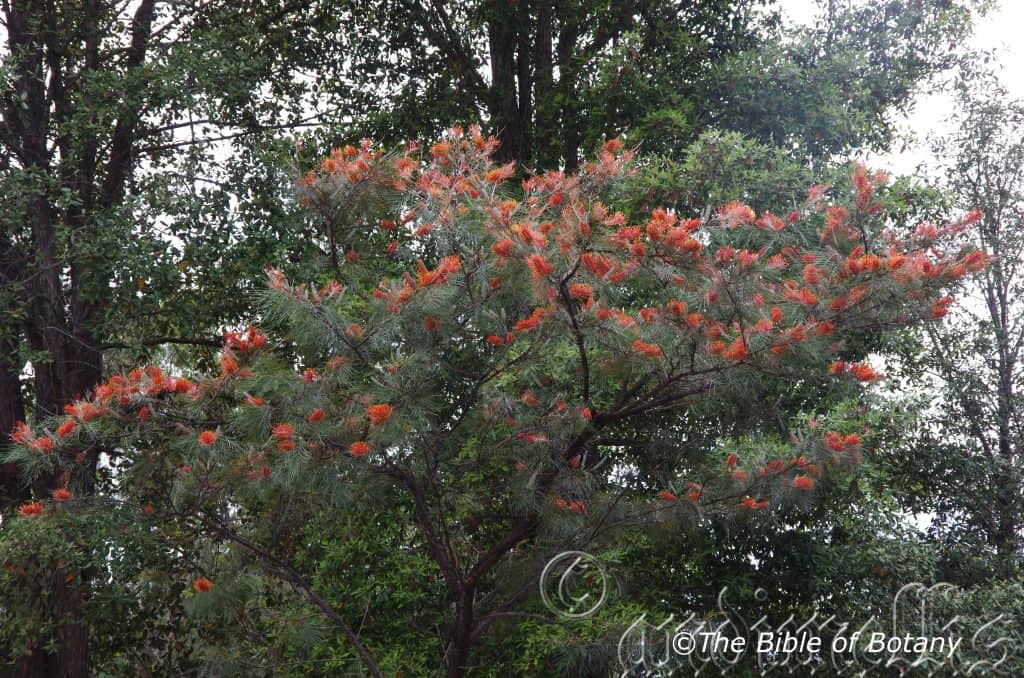
Author’s Garden The Pinnacles NSW
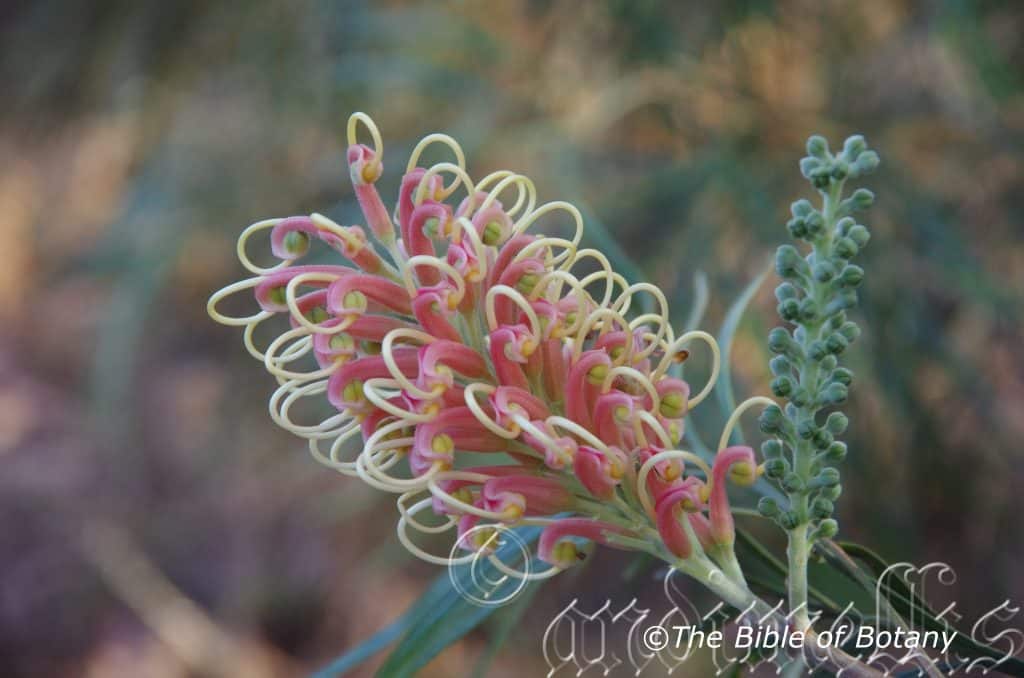
The Pinnacles NSW

Author’s Garden The Pinnacles NSW

Author’s Garden The Pinnacles NSW

Author’s Garden The Pinnacles NSW

Author’s Garden The Pinnacles NSW
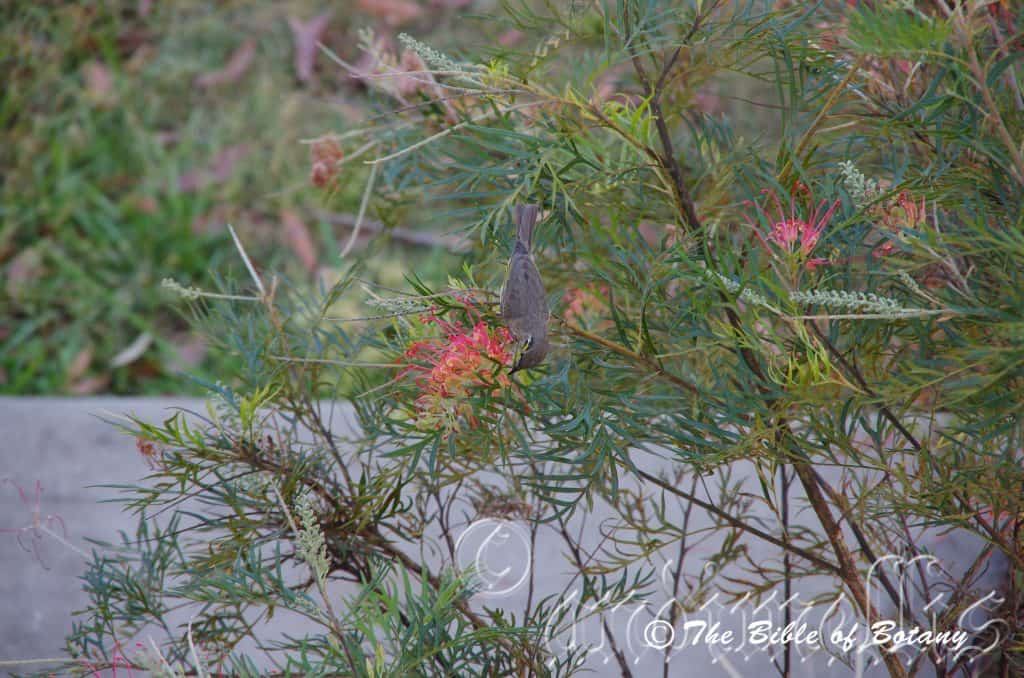
Author’s Garden The Pinnacles NSW
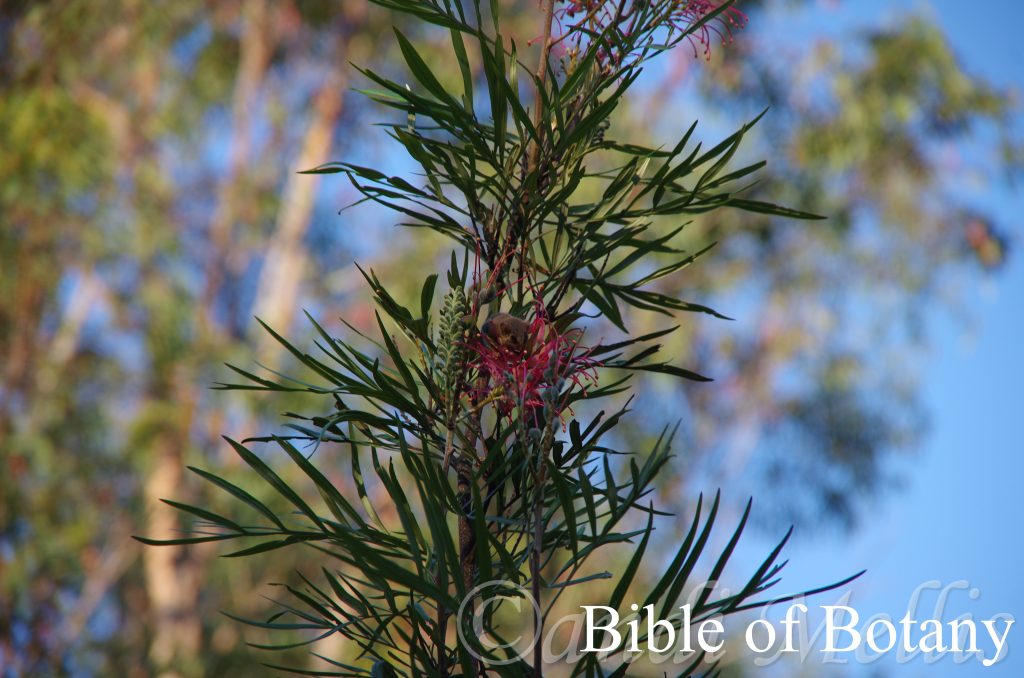
Author’s Garden The Pinnacles NSW

Author’s Garden The Pinnacles NSW
Grevillea banksii
Classification:
Class: Magnoliopsida
Order: Proteales
Family: Proteaceae
Genus: Is named in honour of C. F. Greville; 1749-1809, who was a British expert botanist on Algae, a foundation member of the London Horticultural Society and a collector of rare plants.
Species: Is named in honour of Sir Joseph Banks; 1743-1820, who was an English Naturalist and patron of botany who travelled with Captain Cook on the Endeavour to explore the east coast of Australia.
Common Name: Red silky Oak.
Distribution:
Grevillea banksii is endemic to the eastern side of the Great Dividing Range in Queensland. It is found south from Townsville to Brisbane. There is an outlying population near Cooktown which I have noted but could prove to be garden escapees as are the few plants found around The Pinnacles in Northern New South Wales.
https://avh.ala.org.au/occurrences/search?taxa=Grevillea+banksii#tab_mapView
Habitat Aspect Climate:
Grevillea banksii prefers full sun to very light dappled light. It grows below medium size trees or low trees or adjacent to heaths and wallums in open eucalyptus woodlands or open dry schlerophyll forests in low dry scrub lands. The altitude ranges from 20 meters ASL to 700 meters ASL.
The temperatures range from 2 degrees in July to 38 degrees in January.
The rainfalls range from lows of 600mm to an average of 1250mm annually.
Soil Requirements:
Grevillea banksii prefers skeletal to deep rocky or stony soils, sandy loams, light gravelly clay loams and podsolic soils. The soils are usually derived from sandstones, granites metamorphic rocks, brown basalts or at times accumulated beach sands back from the coast. The soils pH ranges from 5.5pH to 6.5pH are preferred. It does not tolerate water logged soils. Non saline soils to very saline soils are tolerated.
Height & Spread:
Wild Plants: 0.5m to 12m by 3m to 8m.
Characteristics:
Grevillea banksii grows as a prostrate ground cover to a bushy shrub of 3 meters to 5 meters or a small tree to 20 meters in height. Grevillea banksii’s bark is a pale to deep grey and furrowed near the base particularly on older plants. Older branches are glabrous and dull grey green while the branchlets are a grey green and are sparsely to densely covered in short grey sericeous hairs. Branches are brittle and are susceptible to wind damage.
Grevillea banksii leaves are entire or pinnate but are usually pinnate. They measure 80mm to 150mm in length. The lobes number 4 to 12 and are narrow elliptical to linear and measure 50mm to 180mm in length by 5mm to 15mm in width. The petioles measure 18mm to 40mm in length. The bases are cuneate while the apexes are narrow acute. The lobe margins are slightly recurved or revolute. The discolourous laminas are grey green and glabrous on the upper lamina while the lower laminas are paler to slightly glaucous and covered in pale grey sericeous hairs. The mid vein is prominent below and concave from above.
The conflorescence of Grevillea banksii is erect and cylindrical. The flowers measure 50mm to 120mm in length by 45mm to 90mm in diameter when the styles are fully extended. The perianth and style are the most prominent parts of the flower and are cream, pink, scarlet red through to crimson. The individual perianths measure 12mm to 15mm in length.
The cream, pink, scarlet red through to crimson measure style measures 45mm to 50mm in length. The lateral stigma is swollen, flat at the apex while the pollen presenter is deep yellow. The perianth is glabrous to having a few scattered biramous hairs externally and on the limb. Peak flowering occurs in late July to early August though flowers appear throughout the year declining in late autumn.
Grevillea banksii fruit is a flattened ovoid to oblong follicle. The style is persistent though usually broken once the fruit ripens. The dull, blue-green viscous follicles turn deep grey to deep grey-brown and glabrous to moderately covered in pale grey sericeous hairs when ripe. The follicles measure 9mm to 12mm in length by 4mm to 6mm in width. The compressed ovate semi glossy deep grey seeds measure 4mm to 6mm in length by 3mm to 4mm in width. The seeds are completely surrounded by a 1.5mm to 2mm fawn papery wing.
Wildlife:
During the drought of 2019/20 this was one of the few trees that still produced a lot of flowers to feed the local fauna. The beautiful foliage and consistent all year round flowers is a great attraction and safe haven for medium size honeyeaters like the Silver eye Zosterops lateralis, Brown Honeyeater Lichenostomus chrysops, Yellow honeyeater Lichmera indistincta, Red headed honeyeater Myzomela erythrocephala, Blue face Honeyeater Entomyzon cyanotis, Rainbow lorikeet, Trichoglossus moluccanus.
The Eastern pygmy possum, Cercartetus nanus has been seen visiting the flowers.
The larvae of the moth Metura elongatus have been observed on the shrubs.
Cultivation:
Grevillea banksii is a good colourful shrub for tropical, sub-tropical warm temperate and semi-arid areas that only suffer light frosts. Garden subjects of the popular Grevillea banksii variety fosteri grow 3 meters to 4 meters in height by 2 meters to 3 meters in diameter. There are now several cultivars and hybrids around to select from which will suit every sunny position in the garden. The prostrate form usually has white or cream flowers but there are reds around which are extremely beautiful and fast growing. Sandra Gordon and Pink Surprise are another two hybrids which are taller and have Grevillea pteridifolia and probably sessilis as the other parent. Grevillea Robin Gordon (2 meters to 4 meters) is a dwarf shrub like Ned Kelly (2 meters to 4 meters) so a whole section could be devoted to this very popular species.
Grevillea banksii is a very beautiful small tree or medium shrub for bush gardens or rainforest margins. It is particularly useful on sandy loams in higher rainfall areas. This Grevillea should be more widely grown as a starter plant because of its ease and bird attractive qualities. Grevillea banksii is a very attractive medium size shrub when used in the center of a large garden bed or stuck in the corner against a fence with smaller plants in the foreground. It is particularly good as backdrops adding a lot colour in the winter months. They have adapted well to cultivation growing on most soils that are well drained.
In Native gardens it can be used for bird attraction, borders or placed in a position to lure friends deeper into the garden at times when little else is in flower. I have used this technique at The Pinnacles to good effect. Friends always want to head straight to the corner where they see the flowers in the bush from other vantage points.
A bend in a path can break up straight lines. Place smaller cultivars at the end of the path. This will lead the viewer’s eyes over to the background plants, yet they will walk the bend without noticing the change in direction. Use them as a foreground plant with taller plants as the backdrop. Most red flowering Grevillea and this one is no exception look great when mixed with smaller Acacias. Try a prostrate or procumbent growing Acacias surrounded by Grevillea robin Gordon or Ned Kelly for something different and strong. Do not try this in reverse as the isolated red flowers will be lost with the over powering brilliance of the Acacias.
Propagation:
Seeds: An oddity with Grevillea banksii is that most the seeds from one parent will come true to form within its own species. That is fosteri will give mainly fosteri off spring as will the taller types and the prostrate forms however flower colour may vary greatly. I am always amazed that when I grow Grevillea banksii fosteri from seed here I get 75mm cream flowers and everyone else in the district gets red. 75mm is usually a good guide to the production of the off spring being true to form. In saying that here at The Pinnacles many colour variations are beginnn=ing to appear naturally along the road side.
Sow fresh Grevillea banksii seeds directly into a seed raising mix. Keep moist not wet as the seeds will rot or seedlings will damp off. Ensure that there is adequate air flow around the seedlings at all times. When the seedlings are 25mm to 40mm tall, prick them out and plant them into 50mm native tubes using a good organic mix.
Once the seedlings reach 150mm to 200mm in height, nip the tips out before planting them out into their permanent position. Use spacings of 3 meters to 4 meters centers.
Cuttings: Use 70mm to 100mm long half ripened material when growing from cuttings from the present season’s growth. Take them in mid-autumn or early spring. Remove half the leaves from the bottom section being careful not to tear the bark.
1 Prepare the cutting mix by adding one third sharp clean river sand, one third peat and one third perlite. These ingredients are sterilize,
2 Select good material from non diseased plants,
3 Select semi green stems for cuttings. Look for a stem with two or three nodes,
4 Place the cutting on a flat, hard surface, and make a clean cut down one side of the cutting at the base for 10mm with a sharp sterile knife or razor blade. – This scarification of the node will increase the chances of roots emerging from this spot. Now remove all but one or two the leaves, leaving the apex leaves in tact. If the leaves are very large in proportion to the stem, cut off the apical halves.
5 Fill a saucer with water, and place a little medium strength rooting hormone into another container like a milk bottle top. Dip the node end of the cutting into the water and then into the rooting hormone. Tap off any excess hormone,
6 Use a small dipple stick or old pencil to poke a hole into the soilless potting mix. Ensure the hole is slightly larger than the stem diameter and be careful not to wipe the rooting hormone off the cuttings base, place the cuttings in a pattern ensuring the cuttings are not touching each other,
7 I like to place the pots in Plastic bags to help maintain temperature and moisture. Place in a semi shaded place like under 50mm shade cloth.
8 When the cuttings have struck, open the bag to allow air circulation for a few days to a week,
9 Once hardened off remove the cuttings from the bag and allow to further hardening for a few more days,
10 Transplant into a good potting mix to grow on.
Fertilize using seaweed, fish emulsion or organic chicken pellets soaked in water on an alternate basis. Fertilize every two months until the plants are established then twice annually in early September or March to maintain health, vitality and better flowering. Avoid synthetic fertilizers as they will most likely contain calcium and phosphorous at levels, which are toxic to most Proteaceae.
Further Comments from Readers:
“Hi reader, it seems you use The Bible of Botany a lot. That’s great as we have great pleasure in bringing it to you! It’s a little awkward for us to ask, but our first aim is to purchase land approximately 1,600 hectares to link several parcels of N.P. into one at The Pinnacles NSW Australia, but we need your help. We’re not salespeople. We’re amateur botanists who have dedicated over 30 years to saving the environment in a practical way. We depend on donations to reach our goal. If you donate just $5, the price of your coffee this Sunday, We can help to keep the planet alive in a real way and continue to bring you regular updates and features on Australian plants all in one Botanical Bible. Any support is greatly appreciated. Thank you.” In the spirit of reconciliation we acknowledge the Bundjalung, Gumbaynggirr and Yaegl and all aboriginal nations throughout Australia and their connections to land, sea and community. We pay our respect to their Elders past, present and future for the pleasures we have gained.
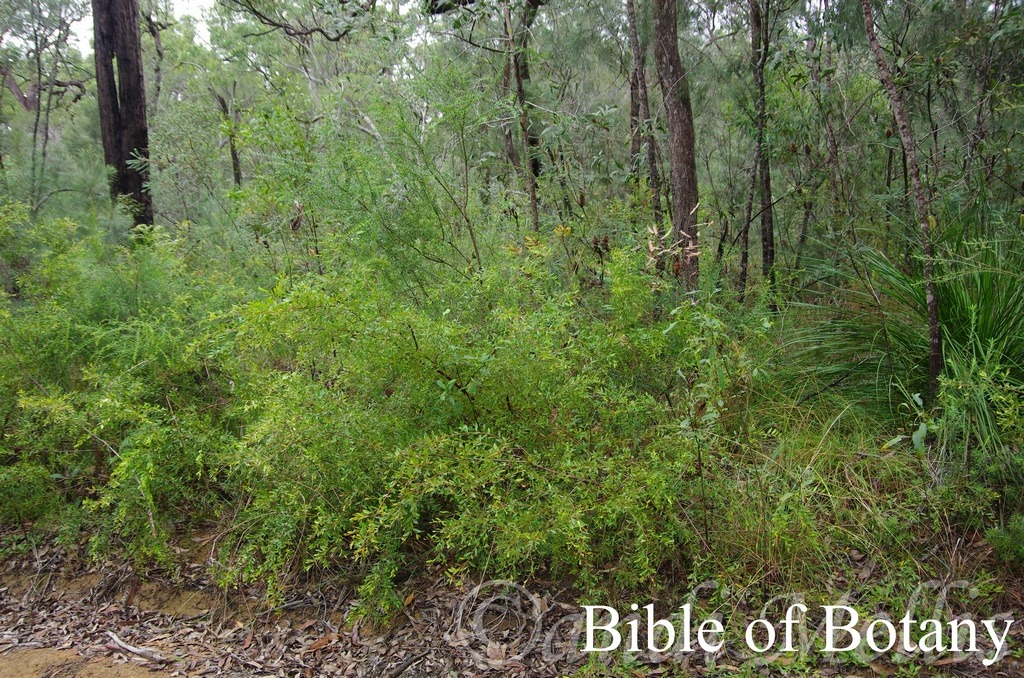
Banyabba National Park NSW

Banyabba National Park NSW

Banyabba National Park NSW
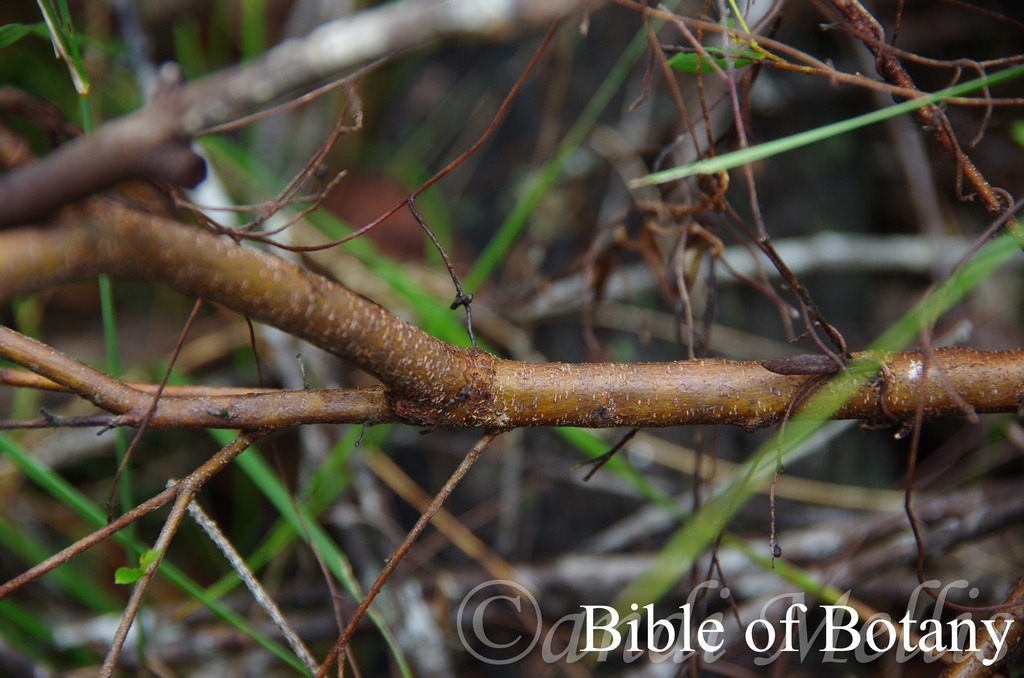
Banyabba National Park NSW
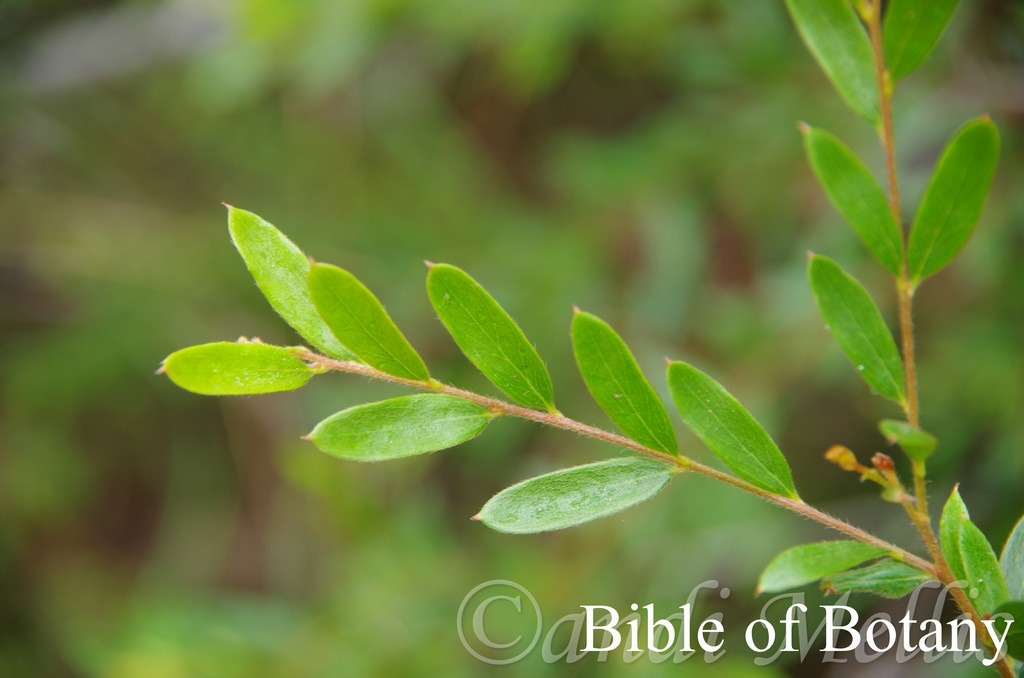
Banyabba National Park NSW
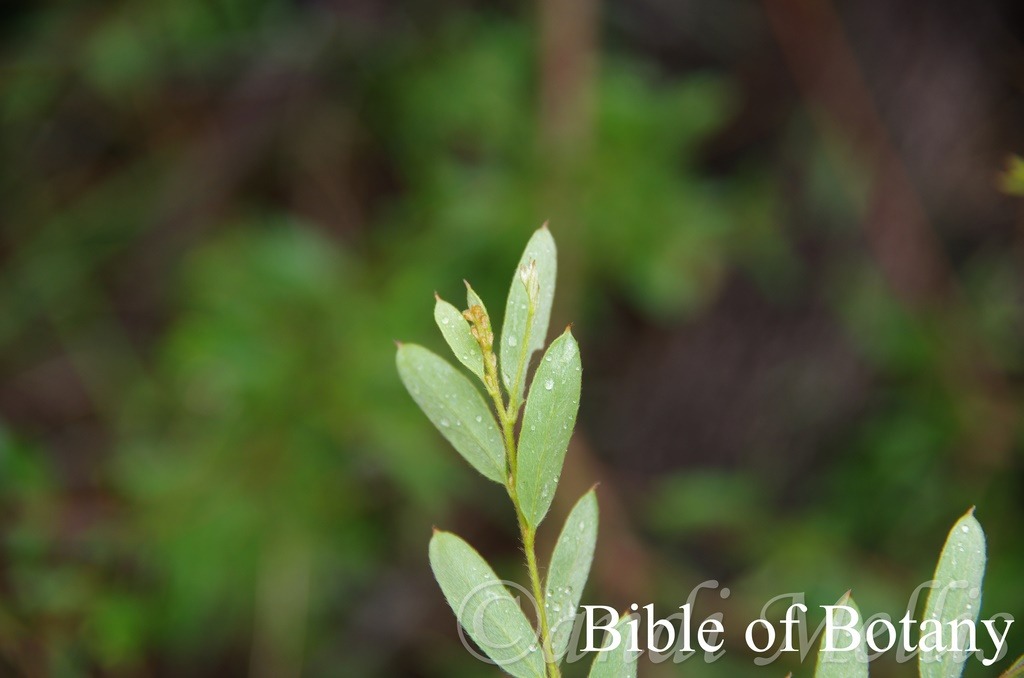
Banyabba National Park NSW
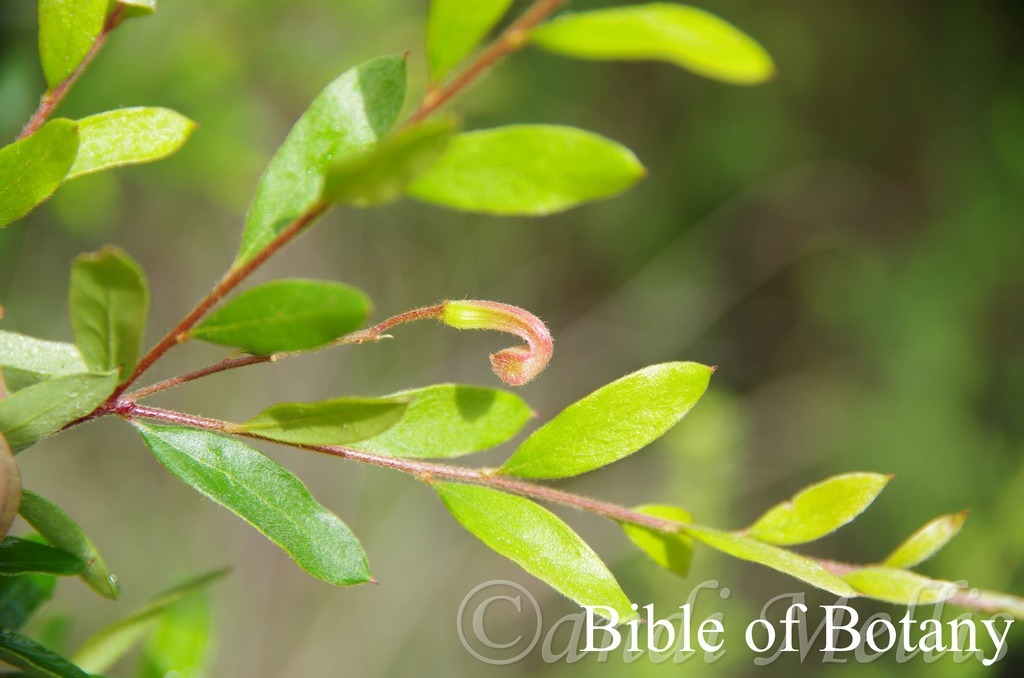
Banyabba National Park NSW

Morgan’s Camp Trail Fortis Creek National Park NSW
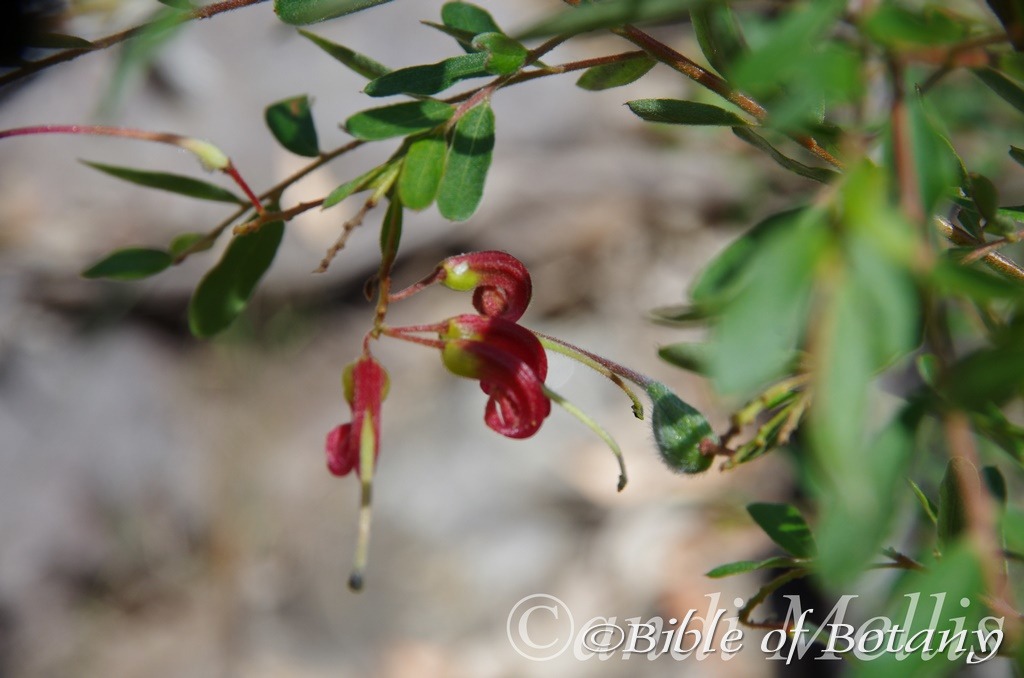
Morgan’s Camp Trail Fortis Creek National Park NSW
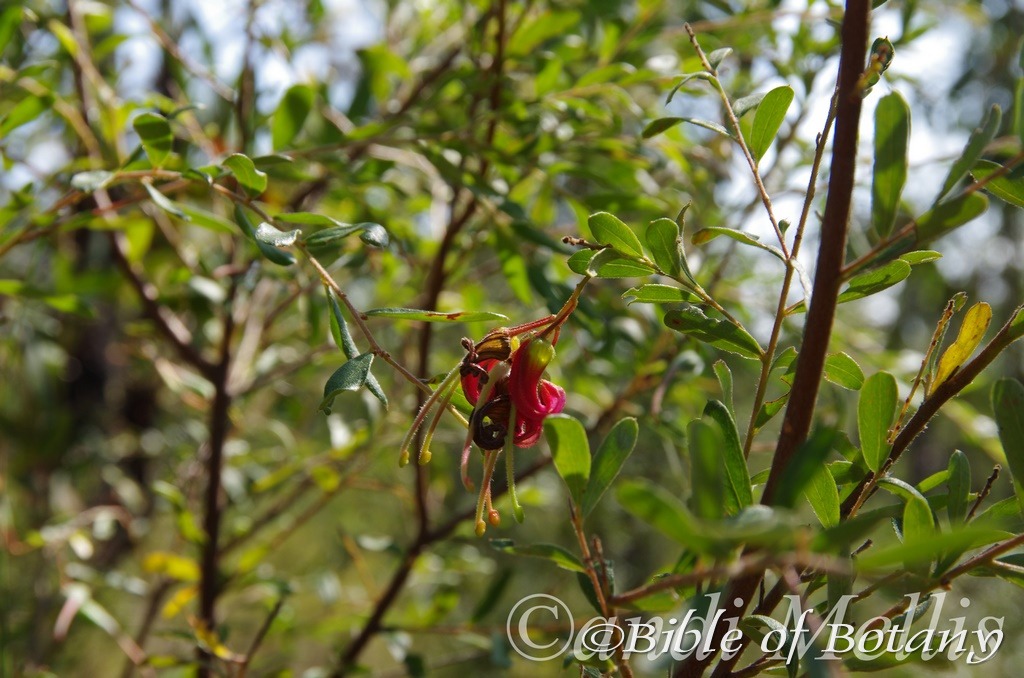
Morgan’s Camp Trail Fortis Creek National Park NSW
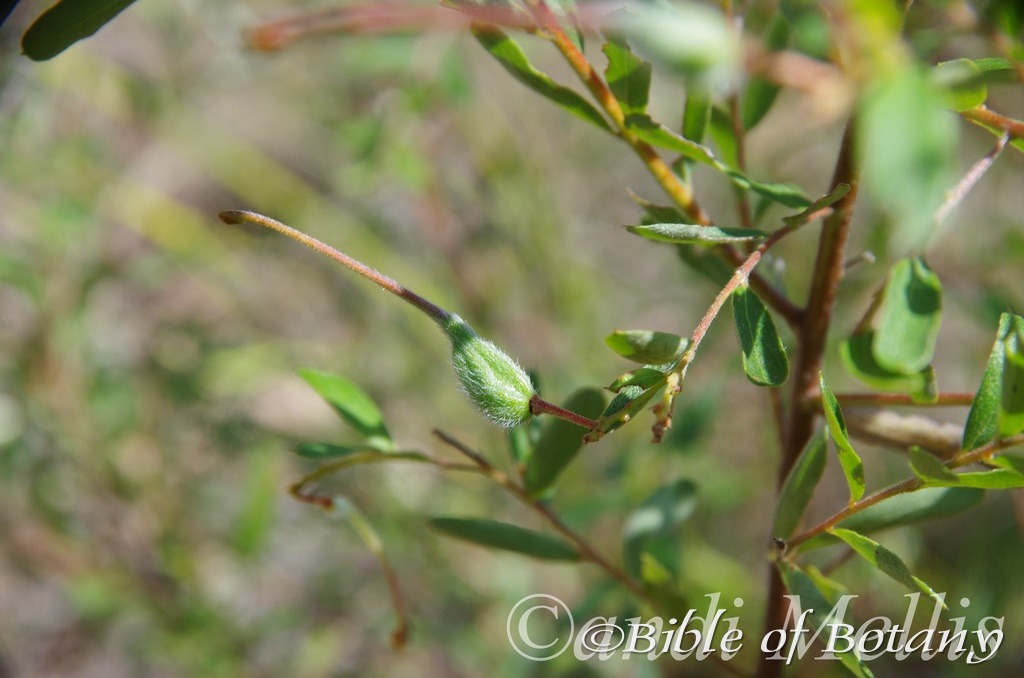
Morgan’s Camp Trail Fortis Creek National Park NSW

Banyabba National Park NSW
Grevillea banyabba
Class: Magnoliopsida
Order: Proteales
Family: Proteaceae
Genus: Is named in honour of C. F. Greville; 1749-1809, who was a British expert botanist on Algae, a foundation member of the London Horticultural Society and a collector of rare plants.
Species: From Banyabba, which is Latinized for the local Aboriginal vernacular for Macropus rufogriseus (Red Neck Wallaby). It refers to plants, which were first discovered in the Banyabba National Park which is known locally as a good refuge for the red neck wallaby north of Grafton in New South Wales.
Sub Species:
Common Name: Banyabba Grevillea.
Distribution:
Grevillea banyabba is endemic to the Fortis Creek National Park north of Grafton.
https://avh.ala.org.au/occurrences/search?taxa=Grevillea+banyabba#tab_mapView
Habitat Aspect Climate:
Grevillea banyabba prefer filtered sunlight in tall open Eucalyptus forests or open Eucalyptus woodlands on slopes, ridges and escarpments. The altitude ranges from 220 meters ASL to 300 meters ASL.
The temperatures range from 2 degrees in August to 38 degrees in January and February.
The rainfalls range from lows of 900mm to an average 1150mm annually.
Soil Requirements:
Grevillea banyabba prefers red sandy loams, light clays or skeletal loams over sandstone. The soils are usually derived from sandstone. The soils pH ranges from 5.5pH to 6pH. It does not tolerate water logged soils. Non saline soils to moderately saline soils are tolerated.
Height & Spread:
Wild Plants: 0.8m to 1.5m by 1m to 1.5m.
Characteristics:
Grevillea banyabba grows as an open somewhat straggly shrub with brown to grey-brown, glabrous branches and stems. The branchlets are dull, brown to grey-brown and glabrous while the juvenile and new growth is pale green and sparsely covered in white, sub sericeous to tomentose hairs.
The alternate obovate to elliptical leaves measure 25mm to 38mm in length by 5mm to 10mm in width. The bases are symmetrically cuneate while the apexes are broad acute, narrow acute with or without a small mucronate spinal tip. The discolourous laminas are dull mid green and glabrous to sparsely covered in fine farinaceous lumps on the upper lamina while the lower laminas are paler to glaucous and sparsely covered white subsericeous hairs. The laminas are flat or recurve slightly to moderately from the mid vein to the margins while the margins are entire. The mid vein is strongly prominent on the lower lamina and slightly prominent on the upper lamina on the base third to half. It is distinctly visible on the remainder of the lamina. Juvenile growth and new leaves are tan to bronze coloured and covered in fine white, caduceous subsericeous hairs.
The acroscopic conflorescences are born in auxiliary clusters or terminal sub clusters with the lower flowers on a short thick raceme. There are 6 to 16 individual flowers in a cluster or raceme. The racemes measure 6mm to 20mm in length. The pedicels measure 7mm to 8.5mm in length. The apiculate tepals measure 0.7mm to 1.5mm in length. The perianth and style are the most prominent parts of the flower. The individual perianths are pale green at the base around the ovary while the remainder of the perianth and lobes are crimson-red. The perianth and lobes are sparsely covered in white subsericeous to tomentose hairs externally while internally the perianth is glabrous and the lobes are covered in white hirtellous hairs. The perianth measures 3mm to 5mm in length while the lobes measure 15mm to 19mm in length. The lobes are free and joined.
The style and stigma are pale green while the lateral pollen presenter is yellow-green. The ovary is covered in sericeous to villous hairs and measure 2.5mm to 3mm in diameter while the style is covered in white, biramous, tomentose hairs and measure 22mm to 24mm in length. The perianths peduncles measure 6mm to 10mm in length. The ovary is glabrous while the style is sparsely covered in papillose lumps or short, white hirsute hairs on the apical half. The flowers appear from August to October.
The fruits are obovoidal to ellipsoidal follicles. The style is persistent on the dull, green glabrous follicles that turn brown when ripe. It is covered in short, pale grey villous and have 3 to 5 faint longitudinal ridges. The follicles measure 15mm to 18mm in length.
Confusing Species:
Grevillea banyabba lacks the lignotubers habit. The perianth’s beard is on the basal half. The pistil measures 24mm to 26mm in length. The leaves measure 24mm to 35mm in length. Follicles have 3 to 5 faint longitudinal ridges.
Grevillea masonii has a low lignotubers habit. The perianth’s beard is on the basal half. The pistil is shorter at 20mm to 24mm in length. Follicles lack the 3 to 5 faint longitudinal ridges.
Grevillea quadricaula lacks the lignotubers habit. The erect lime-green style is black and persistent on the follicles. Most or all of the leaves are greater than 20mm in length. Follicles lack the 3 to 5 faint longitudinal ridges.
Wildlife:
Grevillea banyabba is very attractive to smaller honeyeaters like the Silver Eyes (Zosterops lateralis), Yellow Face Honeyeater (Lichenostomus chrysops), Brown Honeyeater (Lichmera indistincta) and the eastern Spinebill, (Acanthorhynchus tenuirostris).
Cultivation:
Grevillea banyabba is a very beautiful small shrub for arid, subtropical or temperate gardens that comprise of sandstone soils and where only light frosts are encountered. In cultivation the shrubs are densely foliaged to the ground and have an upright or spreading habit. As garden subjects they will grow 1.2 meter to 1.8 meters in height by 1.2 meters to 2 meters in diameter when grown in the open. It is fast growing and drought tolerant. The flowers are very attractive to all nectar feeding honeyeaters.
When you design a taller, larger heath garden, which Grevillea banyabba is well suited to don’t use contours to display the plants as heath lands are almost always flat or have a slight rise. Taller heaths are better placed on the downhill side of a path so that you can still look over the tallest plants or placed in the mid to back ground on level sites.
Make the heath garden path narrow so you have to feel the plants as you walk through the garden bed. This gives an extra dimension which many people forget about when designing heath gardens. Plants must be planted close together and be short so you can see over the tallest ones with the exception of one or two plants at the most. These will be feature plants. The idea is to achieve a feeling of expansive flatness. This can be achieved with using the taller habit and surrounding it with many varieties of small low growing shrubs or prostrate plants. Mix them with other smaller shrubs so none of them dominate the scene but blend in to give a mosaic of foliage colours that you oversee. Here I immediately think of Actinotis helianthi, Melaleuca pearsonii or other sub shrubs like Chloanthes parviflora, Pelargonium australe or Pelargonium inodorum. Glycyrrhizin acanthocarpa would be something entirely different next to a path where you can walk by and pick a leaf to crush and enjoy the aroma of licorice.
Propagation:
Seeds: The seeds need to be treated before sowing. This can be done by placing the seeds into a small calico bag with sharp clean sand and rubbing them to scarify the surface or they can be nicked individually with a knife. Another method is to rub the individual seeds lightly over fine sandpaper. Sow the freshly treated seeds directly into a seed raising mix. Cover them with 5mm of fine sand and keep moist not wet. Place the tray in a warm sunny position. When the seedlings are 25mm to 50mm in height, prick them out and plant them into 50mm native tubes using a good organic mix.
Once the seedlings reach 150mm to 200mm in height, nip the tips out before planting them out into their permanent position. Use spacings of 3 meters to 4 meters centers.
Cuttings: Use 70mm to 100mm long half ripened material when growing from cuttings from the present season’s growth. Take them in mid-autumn or early spring. Remove half the leaves from the bottom section being careful not to tear the bark.
1 Prepare the cutting mix by adding one third sharp clean river sand, one third peat and one third perlite. These ingredients are sterilize,
2 Select good material from non diseased plants,
3 Select semi green stems for cuttings. Look for a stem with two or three nodes,
4 Place the cutting on a flat, hard surface, and make a clean cut down one side of the cutting at the base for 10mm with a sharp sterile knife or razor blade. – This scarification of the node will increase the chances of roots emerging from this spot. Now remove all but one or two the leaves, leaving the apex leaves in tact. If the leaves are very large in proportion to the stem, cut off the apical halves.
5 Fill a saucer with water, and place a little medium strength rooting hormone into another container like a milk bottle top. Dip the node end of the cutting into the water and then into the rooting hormone. Tap off any excess hormone,
6 Use a small dipple stick or old pencil to poke a hole into the soilless potting mix. Ensure the hole is slightly larger than the stem diameter and be careful not to wipe the rooting hormone off the cuttings base, place the cuttings in a pattern ensuring the cuttings are not touching each other,
7 I like to place the pots in Plastic bags to help maintain temperature and moisture. Place in a semi shaded place like under 50mm shade cloth.
8 When the cuttings have struck, open the bag to allow air circulation for a few days to a week,
9 Once hardened off remove the cuttings from the bag and allow to further hardening for a few more days,
10 Transplant into a good potting mix to grow on.
Fertilize using seaweed, fish emulsion or organic chicken pellets soaked in water on an alternate basis. Fertilize every two months until the plants are established then twice annually in early September or March to maintain health, vitality and better flowering. Avoid synthetic fertilizers as they will most likely contain calcium and phosphorous at levels, which are toxic to most Proteaceae.
Further Comments from Readers:
“Hi reader, it seems you use The Bible of Botany a lot. That’s great as we have great pleasure in bringing it to you! It’s a little awkward for us to ask, but our first aim is to purchase land approximately 1,600 hectares to link several parcels of N.P. into one at The Pinnacles NSW Australia, but we need your help. We’re not salespeople. We’re amateur botanists who have dedicated over 30 years to saving the environment in a practical way. We depend on donations to reach our goal. If you donate just $5, the price of your coffee this Sunday, We can help to keep the planet alive in a real way and continue to bring you regular updates and features on Australian plants all in one Botanical Bible. Any support is greatly appreciated. Thank you.”
In the spirit of reconciliation we acknowledge the Bundjalung, Gumbaynggirr and Yaegl and all aboriginal nations throughout Australia and their connections to land, sea and community. We pay our respect to their Elders past, present and future for the pleasures we have gained.
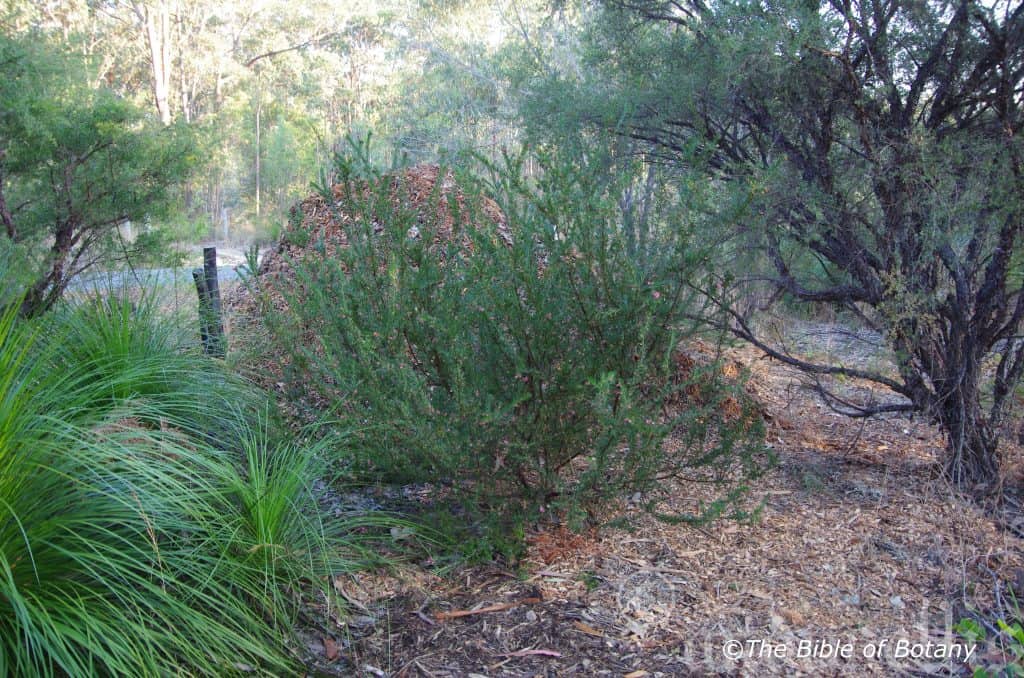
Author’s Garden The Pinnacles NSW
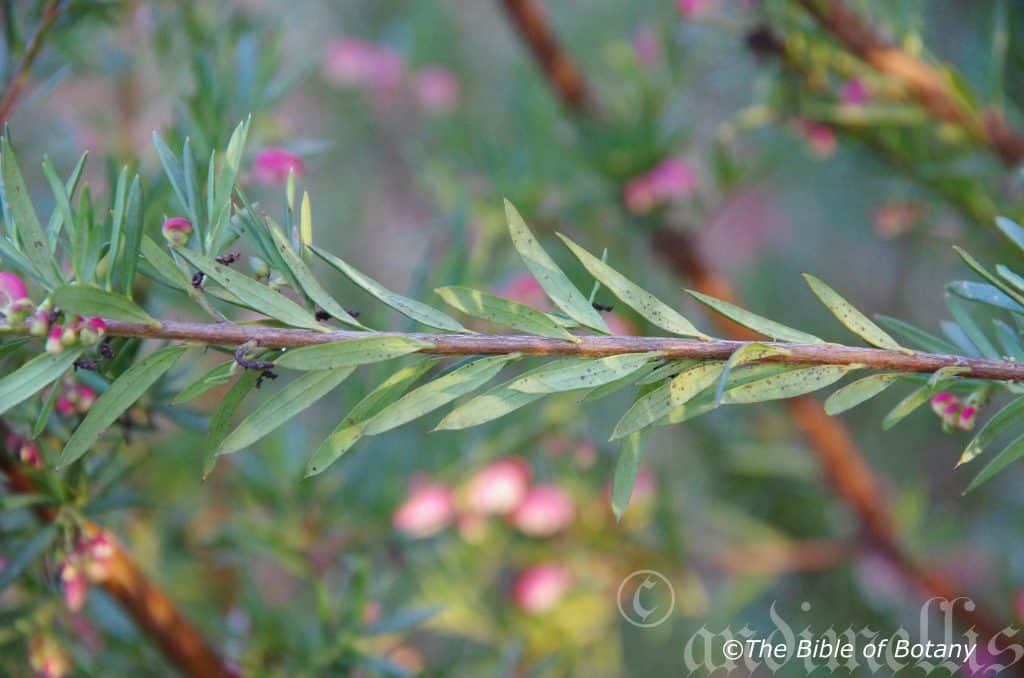
Author’s Garden The Pinnacles NSW

Author’s Garden The Pinnacles NSW
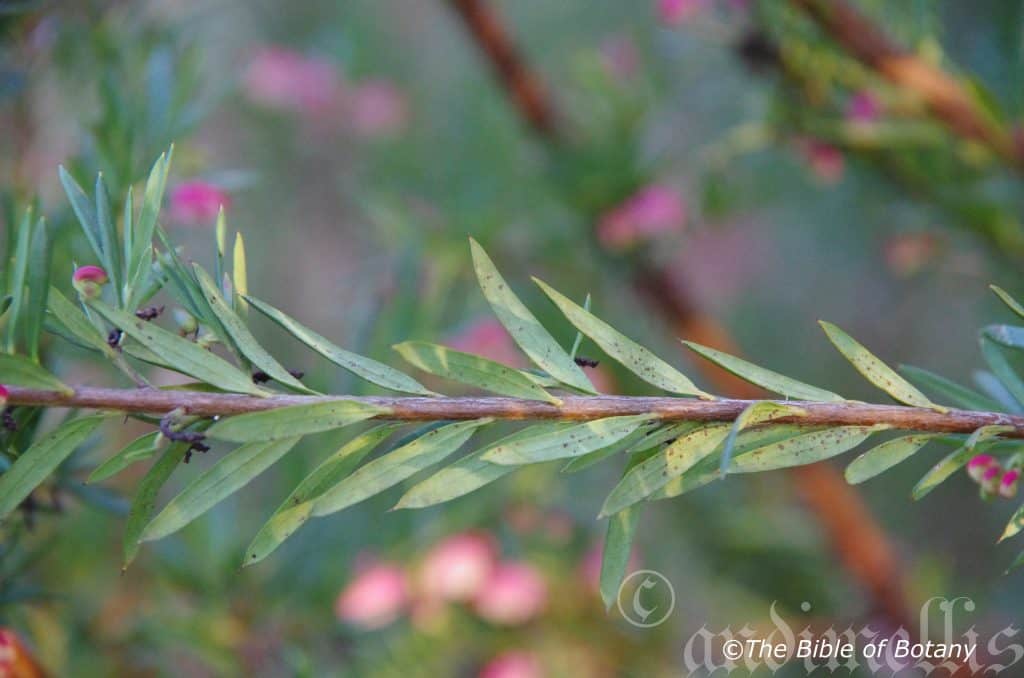
Author’s Garden The Pinnacles NSW
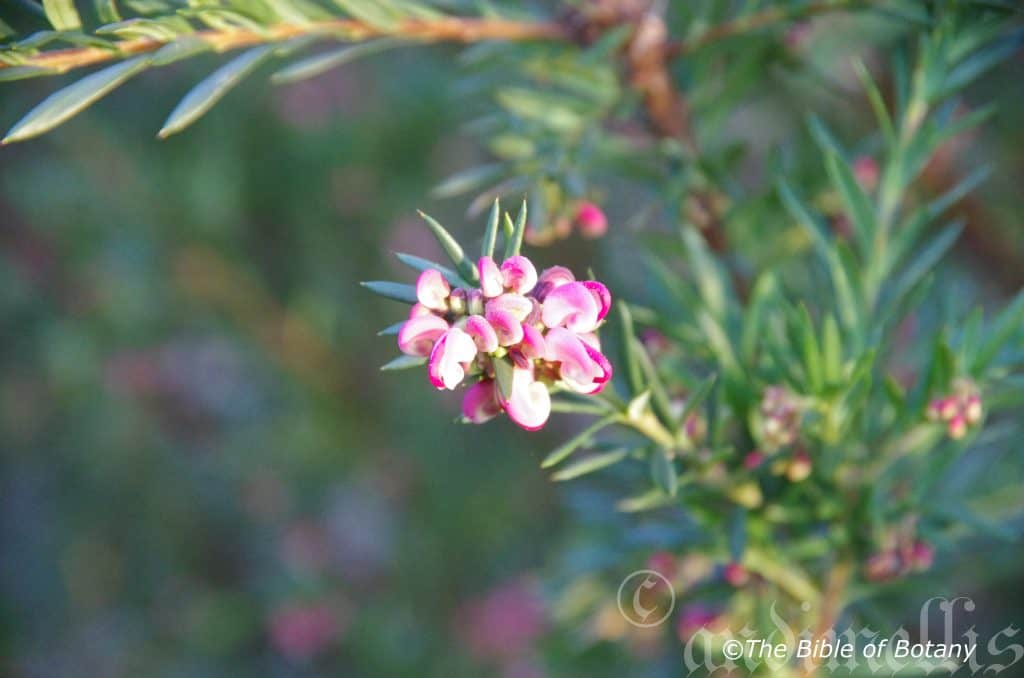
Author’s Garden The Pinnacles NSW

Author’s Garden The Pinnacles NSW

Author’s Garden The Pinnacles NSW
Grevillea baueri
Classification:
Class: Magnoliopsida
Order: Proteales
Family: Proteaceae
Genus: Is named in honour of C. F. Greville; 1749-1809, who was a British expert botanist on Algae, a foundation member of the London Horticultural Society and a collector of rare plants.
Species: Is named in honour of brothers Franze Andre Bauer; 1758-1840, and Ferdinand Lucas Bauer; 1760-1826, who were Austrian botanical artists. Ferdinand travelled with Mathew Flinders on his Australia expeditions.
Sub species: Grevillea baueri subsp. asperula. From Asper, which is Ancient Greek for rough. It refers to structures or organs, which have a rougher surface than other sub species in the genus.
Sub species: Grevillea baueri subsp. baueri. Is named in honour of brothers Franze Andre Bauer; 1758-1840, and Ferdinand Lucas Bauer; 1760-1826, who were Austrian botanical artists. Ferdinand travelled with Mathew Flinders on his Australia expeditions.
Common Name: Bauer’s Grevillea
Distribution:
Grevillea baueri subsp. baueri is endemic to New South Wales south
from the Blue Mountains and Sydney south to the Shoalhaven district
on and east of the Great dividing Range.
Grevillea baueri subsp. asperula is endemic to New South Wales south
from the Blue Mountains and Sydney south to the Shoalhaven district
on and east of the Great dividing Range with an isolated population
near the Victorian border and a second isolated population on Barker
Creek near Barham.
https://avh.ala.org.au/occurrences/search?taxa=Grevillea+baueri#tab_mapView
Habitat:
Grevillea baueri prefers full sun. It grows below medium size trees, low trees, in low dry open dry sclerophyll woodlands or open dry schlerophyll heaths. The altitude ranges from 5 meters ASL to 500 meters ASL.
The temperatures range from minus 4 degrees in July to 32 degrees in January.
The rainfalls range from lows of 300mm to an average of 1100mm annually.
Soil Requirements:
Grevillea baueri prefers skeletal rocky or stony soils, sandy loams, to light gravelly clay loams. The soils are derived from partially decomposed sandstones or granites. The soils pH ranges from 4.5pH to 6pH are preferred. It does not tolerate water logged soils. Non saline soils to moderately saline soils are tolerated.
Height & Spread:
Wild Plants: 0.5m to 2m by 1m to 2m.
Characteristics:
Grevillea baueri’s bark is a dark grey to a dark brown, glabrous and semi glossy on the branchlets.
Grevillea baueri sub sp. baueri leaves are oblong-elliptical to narrow oblong- ovate and measure 10mm to 28mm in length by 3mm to 7mm in width. The base is cordate while the apex is narrow acute. The margins are entire, recurved or revolute. The concolourous laminas are deep green and glabrous to granulate on the upper lamina while the lower lamina is glabrous. The mid vein is slightly prominent below and not clearly visible from above. Leaves are sessile or nearly so.
Grevillea baueri subsp. asperula leaves are oblong, oblong-elliptical or ovate and measure 10mm to 30mm in length by 3mm to 15mm in width. The base is cordate while the apex is narrow acute. The margins are entire, recurved or revolute. The concolourous laminas are deep green and glabrous on the upper lamina while the lower lamina is glabrous or slightly covered in white hirsute hairs especially along the mid vein. The mid vein is slightly prominent below and not clearly visible from above. Leaves are sessile or nearly so.
The inflorescences of Grevillea baueri subsp. baueri are erect, simple are born auxiliary or terminally. The flowers measure 30mm to 50mm in length by 15mm to 20mm in diameter.
The inflorescence of Grevillea baueri subsp. asperula are erect to decurve with 0 to 4 branches and are born auxiliary or terminally. The flowers measure 35mm to 50mm in length by 50mm to 55mm in diameter.
The perianth’s of both sub specie are the most prominent part of the flower and is red to pink turning cream to pale yellow towards the apex of the lobes. Individual perianths are 7mm to 10mm in length. The perianth is glabrous externally and is sparsely covered in white hirtellous hairs on the limb. The ovary is densely covered in white hirsute hairs and is sessile.
The lateral red style measures 16mm to 25mm in length. It is very sparsely covered in villose hairs on the base half and glabrous on the apex half. Peak flowering occurs in late July to early August though some flowers appear throughout the year.
Grevillea baueri fruit is a flattened ovoid to oblong follicle. The style is persistent though usually broken once the fruit ripens. The dull green follicles are covered in white hirsute hairs and turn deep grey to deep grey-brown when ripe.
Wildlife:
The dense foliage and proliferation of small flowers on Grevillea baueri make great food sources and corridors for smaller honeyeaters like the Silver Eyes (Zosterops lateralis), Yellow Face Honeyeater (Lichenostomus chrysops), Brown Honeyeater (Lichmera indistincta) and the eastern Spinebill (Acanthorhynchus tenuirostris).
Cultivation:
Grevillea baueri is a very beautiful small Grevillea which should be more widely grown. It suit small to large gardens. Garden subjects grow 0.5 meters to 2 meters in height by 0.8 meters to 2 meters in diameter. There are now several cultivars around to select from which will suit every sunny position in the garden. The smaller varieties are particularly good around swimming pools adding colour particularly in the winter months when the pool and surrounds are not all that attractive.
If companion plants are sought then the choice of plants to use either side is limited only by size of the area to be landscaped and the size of the other plants as they should be no more than 150mm in height to emphasize the Grevillea baueri.
If it is placed around a pool, courtyards or other confined spaces then plant them in small groups or scatter plant them for a more informal natural look against walls to help soften them. Using rocks and small boulders can make the pool or any water feature appear like an oasis. It is a compact bushy shrub which has a clean low habit which requires very little maintenance.
The leaves and flowers can make a great start for the larger heath setting. When you design a flat heath garden which this Grevillea is well suited don’t use contours to display the plants as heath lands are almost always flat or have a slight rise. Plants must be planted close together and be short so you can see over the tallest ones with the exception of one or two plants at the most. These will be feature plants. The idea is to achieve a feeling of expansive flatness. This can be achieved with using the Grevillea baueri’s deep green elliptical leaves and having them contrasting finer pale green or soft grey to glaucous coloured foliages. Use a lot of procumbent plants like Dampier Carpobrotus edulis or Hibbertia specie. Mix them with other smaller shrubs so none of them dominate the scene but blend in to give a mosaic of foliage colours that you oversee. Here I immediately think of Actinotis helianthi or Grevillea thelemanniana for two great contrasting foliages.
In formal gardens they break up the foliage of English type gardens without being overpowering.
In Native gardens they can be used for bird attraction, borders or placed in a position to force a change of direction. A bend in a path can break up straight lines. Place a smaller cultivar at the end of the path. This will lead the viewer’s eyes over to the background plants, yet they will walk the bend without noticing the change in direction.
Use them as a foreground plant with taller plants as the backdrop. Most red flowering Grevillea specie and this one is no exception look great when mixed with small Acacia specie. Try a prostrate Acacia surrounded by Grevillea baueri for something different and strong. Do not try this in reverse as the smaller flowers of the Grevillea baueri will be lost with the over powering brilliance of the Acacia specie unless the Acacia specie flower at different times to the Grevillea Baueri.
Propagation:
Seeds: Sow Grevillea baueri seeds directly into a seed raising mix. When the seedlings are 25mm to 50mm tall, prick them out and plant them into 50mm native tubes using a good organic mix.
Once the seedlings reach 150mm to 200mm in height, nip the tips out before planting them out into their permanent position.
Once the seedlings reach 150mm to 200mm in height, nip the tips out before planting them out into their permanent position. Use spacings of 3 meters to 4 meters centers.
Cuttings: Use 70mm to 100mm long half ripened material when growing from cuttings from the present season’s growth. Take them in mid-autumn or early spring. Remove half the leaves from the bottom section being careful not to tear the bark.
1 Prepare the cutting mix by adding one third sharp clean river sand, one third peat and one third perlite. These ingredients are sterilize,
2 Select good material from non diseased plants,
3 Select semi green stems for cuttings. Look for a stem with two or three nodes,
4 Place the cutting on a flat, hard surface, and make a clean cut down one side of the cutting at the base for 10mm with a sharp sterile knife or razor blade. – This scarification of the node will increase the chances of roots emerging from this spot. Now remove all but one or two the leaves, leaving the apex leaves in tact. If the leaves are very large in proportion to the stem, cut off the apical halves.
5 Fill a saucer with water, and place a little medium strength rooting hormone into another container like a milk bottle top. Dip the node end of the cutting into the water and then into the rooting hormone. Tap off any excess hormone,
6 Use a small dipple stick or old pencil to poke a hole into the soilless potting mix. Ensure the hole is slightly larger than the stem diameter and be careful not to wipe the rooting hormone off the cuttings base, place the cuttings in a pattern ensuring the cuttings are not touching each other,
7 I like to place the pots in Plastic bags to help maintain temperature and moisture. Place in a semi shaded place like under 50mm shade cloth.
8 When the cuttings have struck, open the bag to allow air circulation for a few days to a week,
9 Once hardened off remove the cuttings from the bag and allow to further hardening for a few more days,
10 Transplant into a good potting mix to grow on.
Fertilize using seaweed, fish emulsion or organic chicken pellets soaked in water on an alternate basis. Fertilize every two months until the plants are established then twice annually in early September or March to maintain health, vitality and better flowering. Avoid synthetic fertilizers as they will most likely contain calcium and phosphorous at levels, which are toxic to most Proteaceae.
Further Comments from Readers:
“Hi reader, it seems you use The Bible of Botany a lot. That’s great as we have great pleasure in bringing it to you! It’s a little awkward for us to ask, but our first aim is to purchase land approximately 1,600 hectares to link several parcels of N.P. into one at The Pinnacles NSW Australia, but we need your help. We’re not salespeople. We’re amateur botanists who have dedicated over 30 years to saving the environment in a practical way. We depend on donations to reach our goal. If you donate just $5, the price of your coffee this Sunday, We can help to keep the planet alive in a real way and continue to bring you regular updates and features on Australian plants all in one Botanical Bible. Any support is greatly appreciated. Thank you.”
In the spirit of reconciliation we acknowledge the Bundjalung, Gumbaynggirr and Yaegl and all aboriginal nations throughout Australia and their connections to land, sea and community. We pay our respect to their Elders past, present and future for the pleasures we have gained.
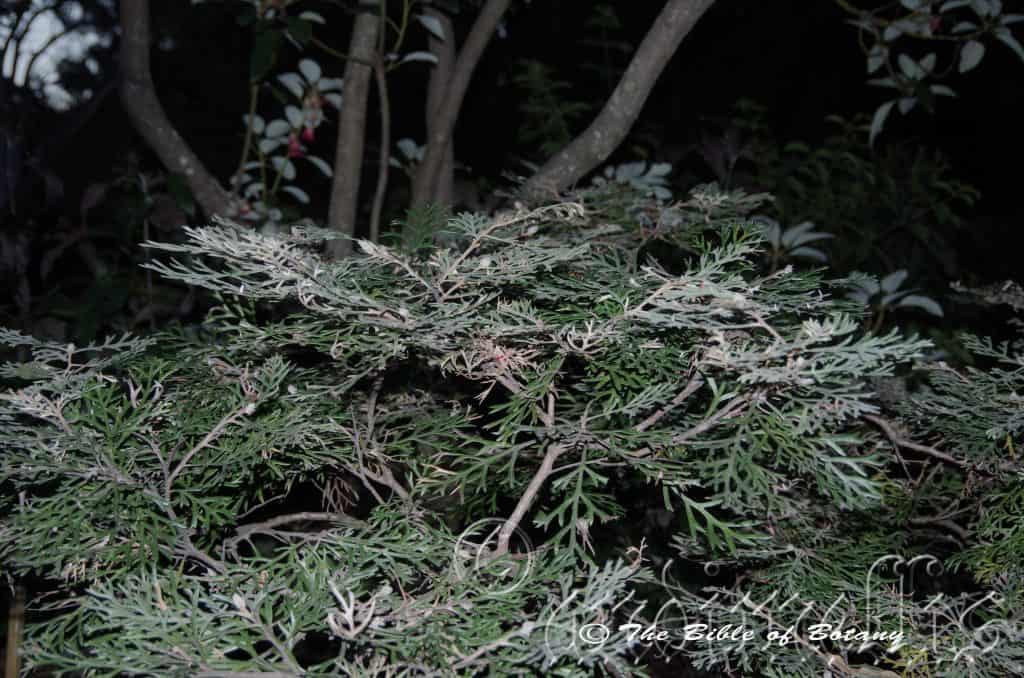
Ebor NSW
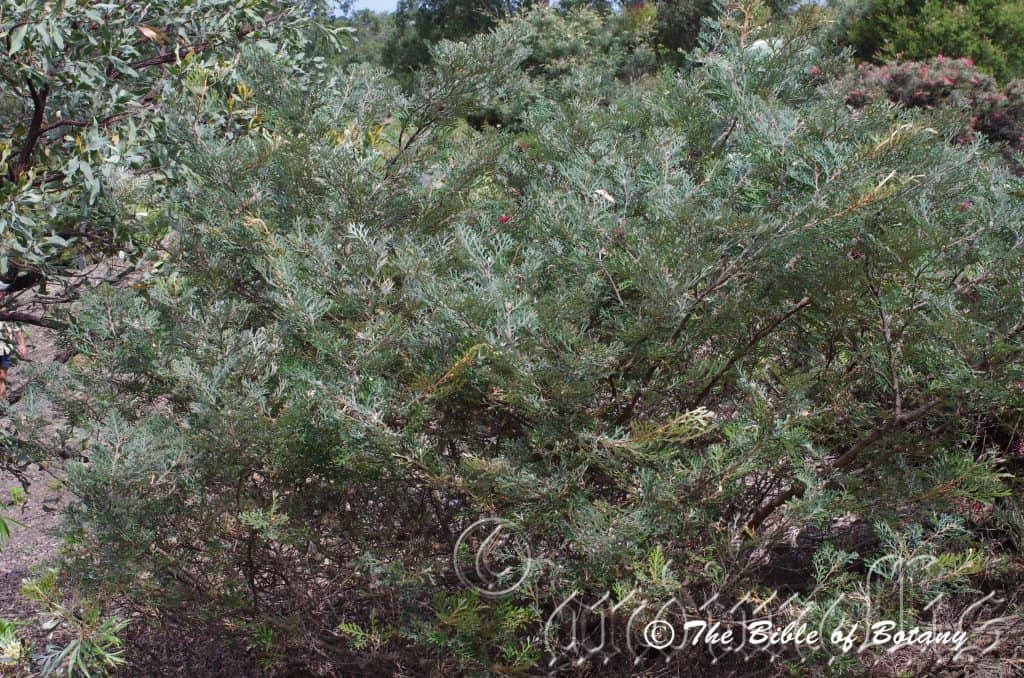
Mount Cootha Botanic Gardens Qld.
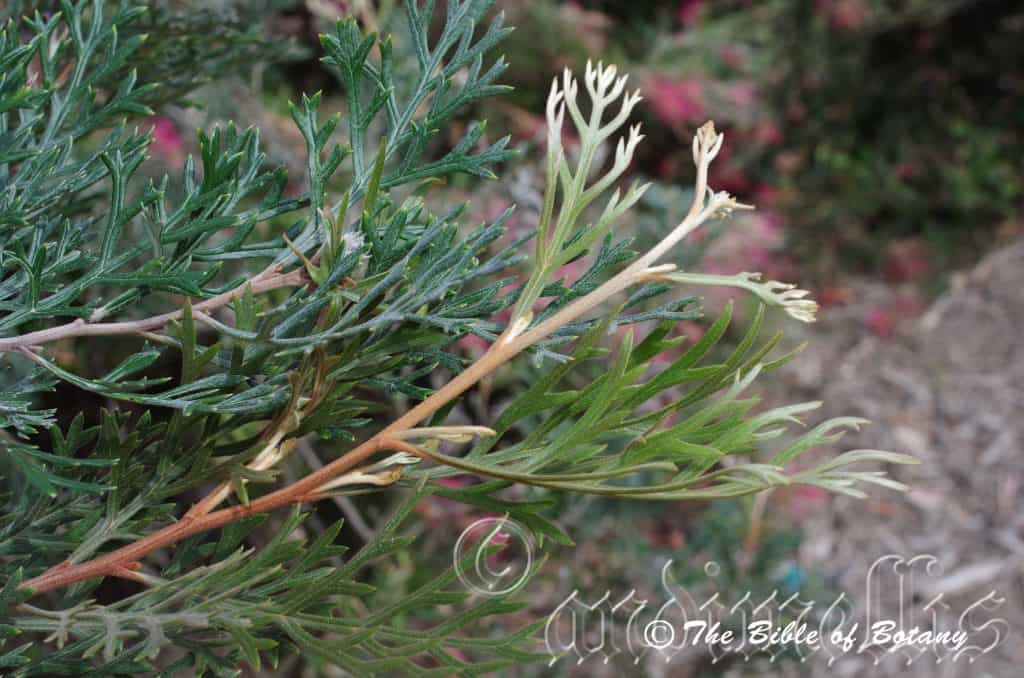
Mount Cootha Botanic Gardens Qld.

NCBG Coffs Harbour NSW

Mount Cootha Botanic Gardens Qld.
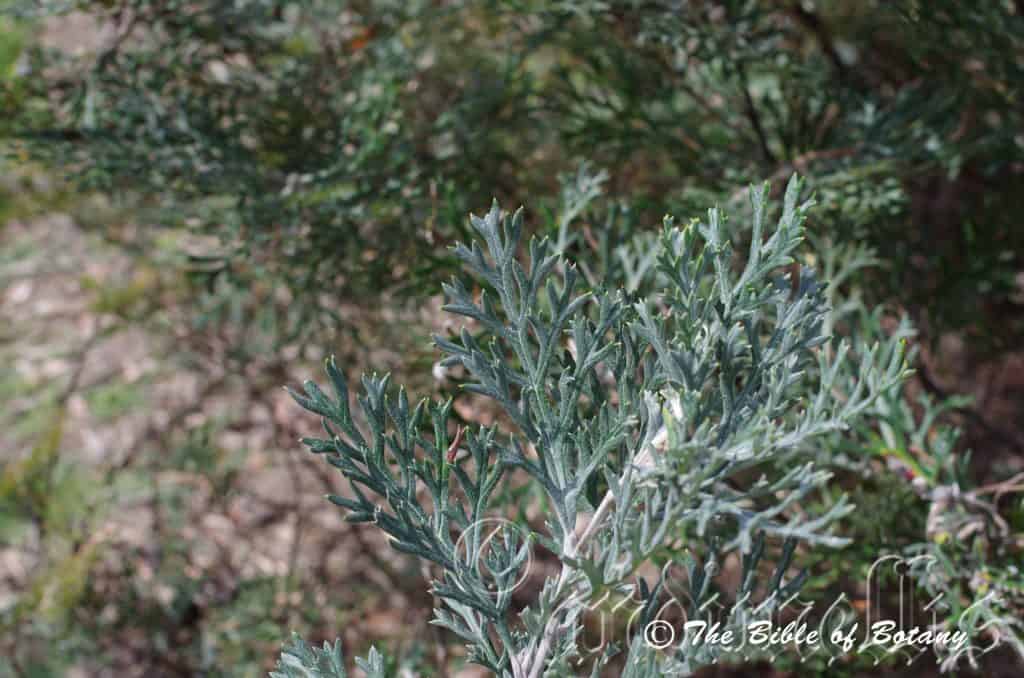
Mount Cootha Botanic Gardens Qld.
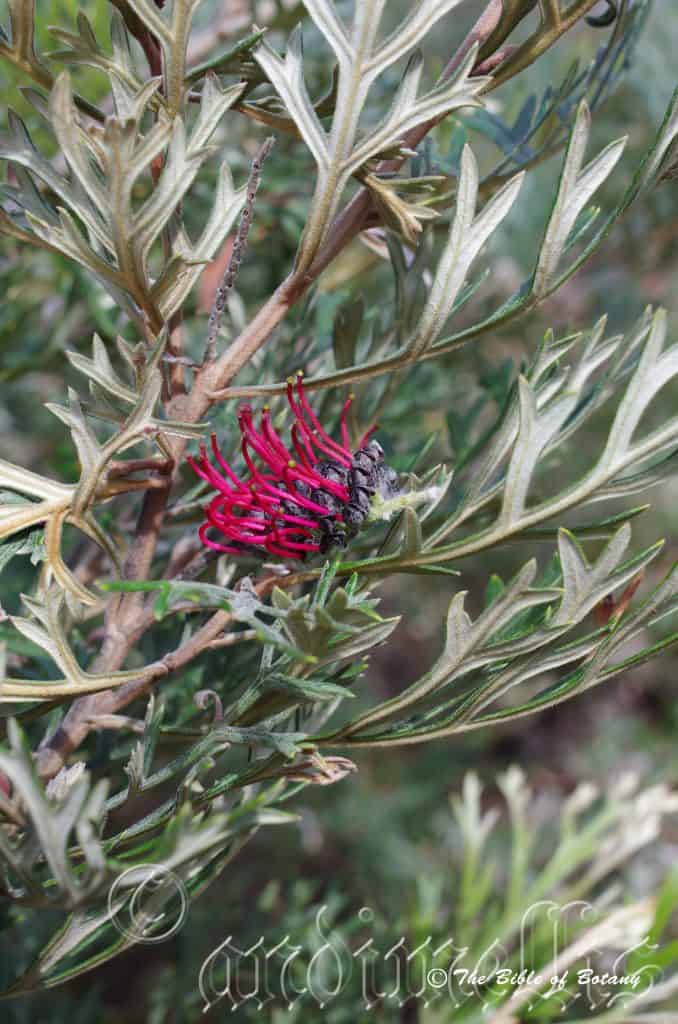
Mount Cootha Botanic Gardens Qld.
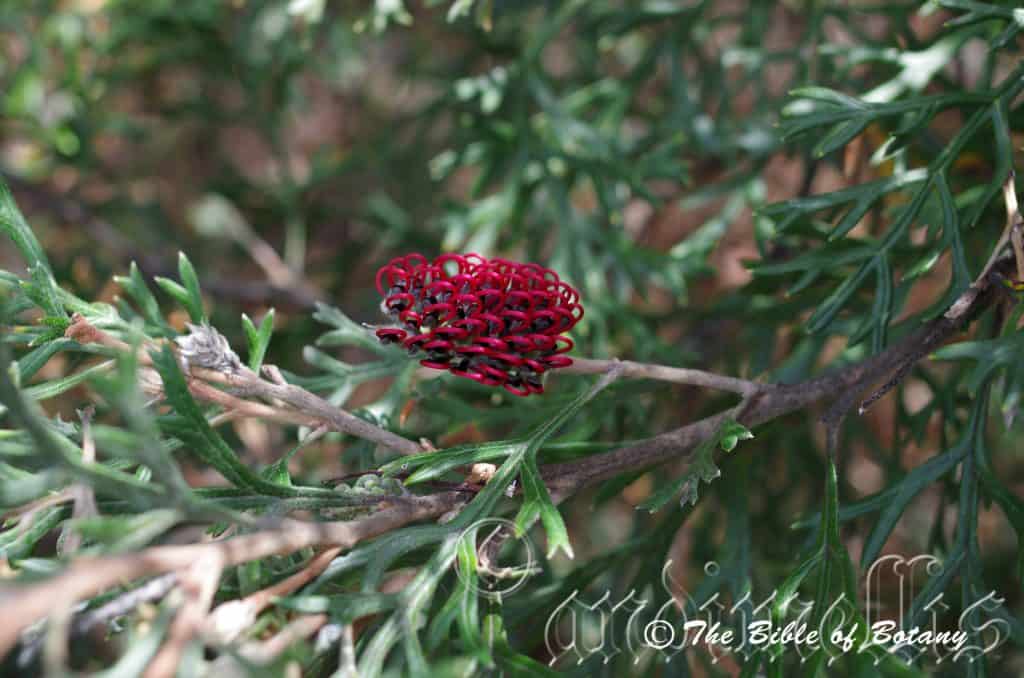
Mount Cootha Botanic Gardens Qld.
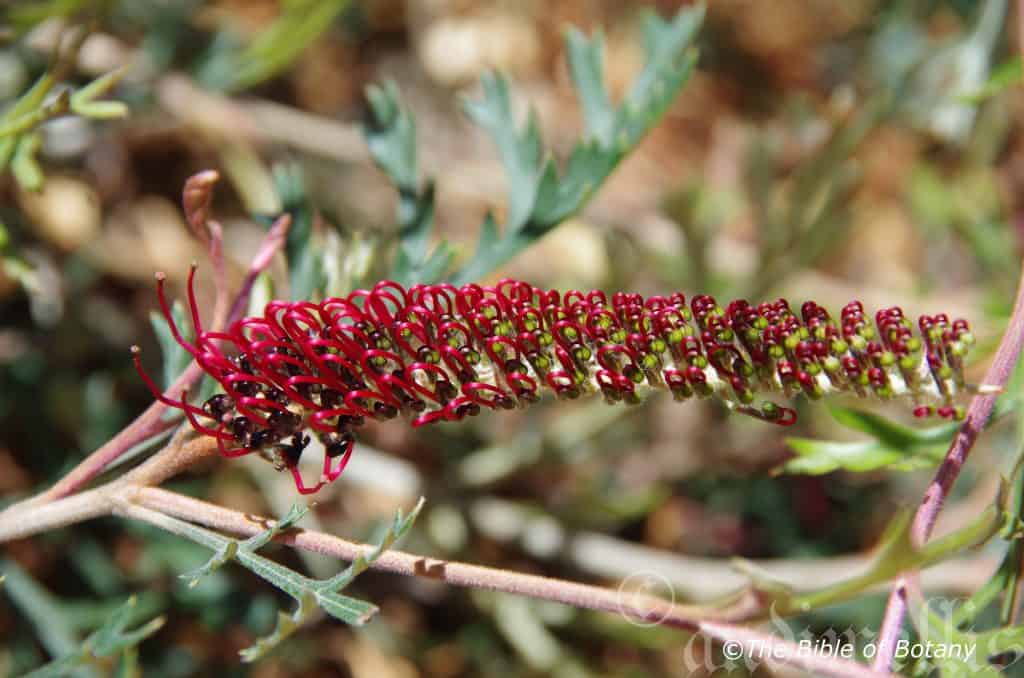
Author’s Garden The Pinnacles NSW
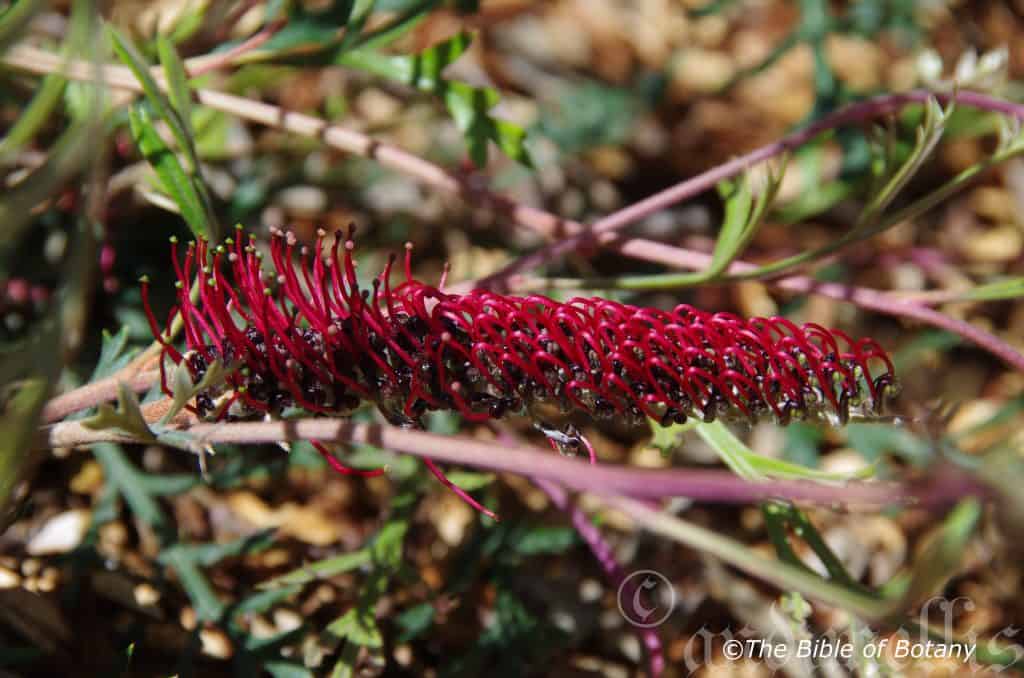
Author’s Garden The Pinnacles NSW

Author’s Garden The Pinnacles NSW
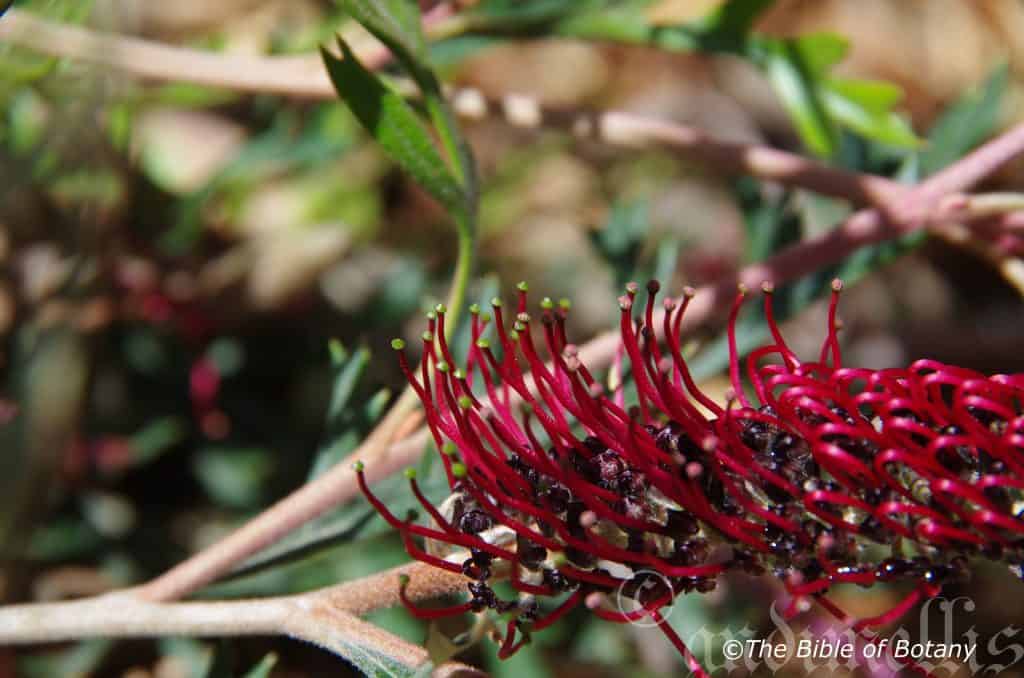
Author’s Garden The Pinnacles NSW

Author’s Garden The Pinnacles NSW
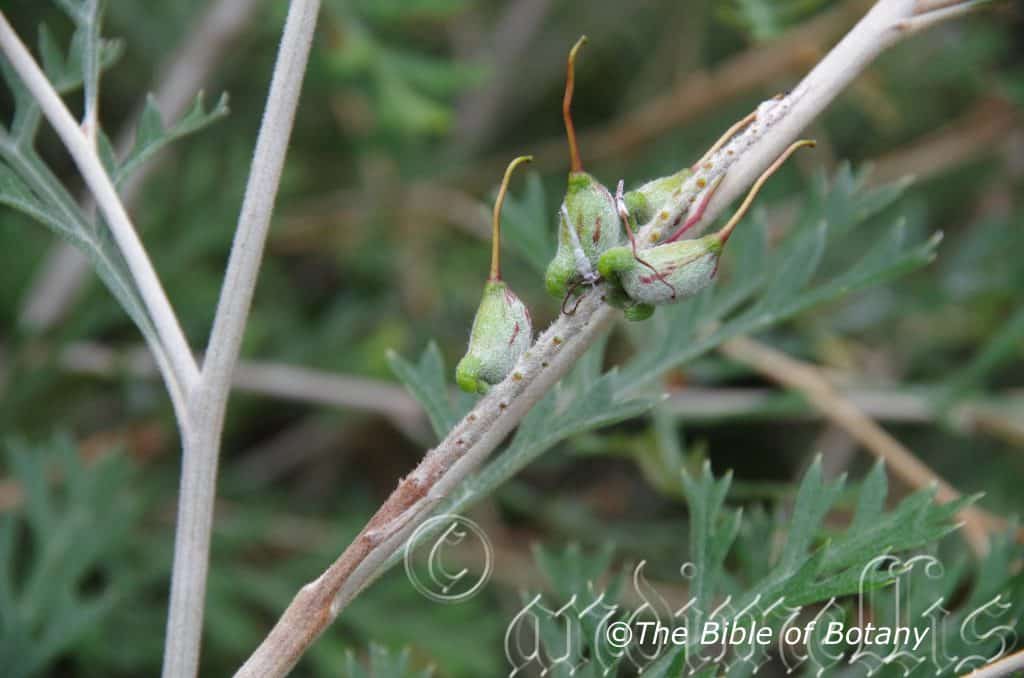
Author’s Garden The Pinnacles NSW

Lichenostomus chrysops Author’s Garden The Pinnacles NSW
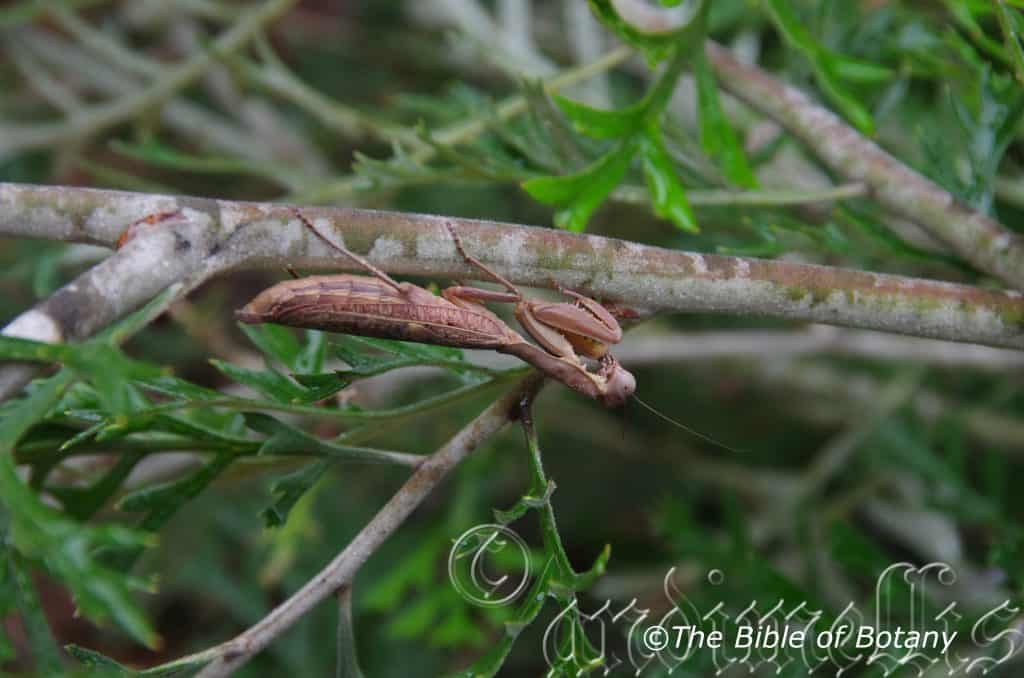
Sphodropoda tristis Author’s Garden The Pinnacles NSW
Grevillea beadleana
Classification:
Class: Magnoliopsida
Order: Proteales
Family: Proteaceae
Genus: Is named in honour of C. F. Greville; 1749-1809, who was a British expert botanist on Algae, a foundation member of the London Horticultural Society and a collector of rare plants.
Species: Is named in honour of Noel Charles William Beadle; 1914-1998, who was an Australian botanist, conversationalist and university lecturer.
Sub Species:
Common Name: Granite Grevillea.
Distribution:
Grevillea beadleana is restricted to the Guy Fawkes River catchment and the Aspley River Catchments on the Great Dividing Range in northern New South Wales.
https://avh.ala.org.au/occurrences/search?taxa=Grevillea+beadleana#tab_mapView
Habitat Aspect Climate:
Grevillea beadleana prefer full sun to light dappled shade. It grows below medium size trees, low trees, or in low dry scrub lands and dry Eucalyptus forests on ridges, escarpments and rocky ledges where gravelly sands accumulate. The altitude ranges from 400 meters ASL to 800 meters ASL.
The temperatures range from minus 5 degrees in August to 36 degrees in January.
The rainfalls range from lows of 650mm to an average of 1000mm annually.
Soil Requirements:
Grevillea beadleana prefers skeletal rocky or stony soils, sandy loams, to light gravelly clay loams. The soils are usually derived from decomposed and partially decomposed granite. The soils pH ranges from 5.5pH to 6pH are preferred. It does not tolerate water logged soils. Non saline soils to moderately saline soils are tolerated.
Height & Spread:
Wild Plants: 0.5m to 2m by 1m to 2.5m.
Characteristics:
Grevillea beadleana’s larger stems are mid grey glabrous while the smaller stems are covered in white to pale grey tomentose to pilose hairs. The branchlets are pale fawn-brown to pink-fawn and sparsely covered in white to pale grey pilose to tomentose hairs.
The pinnatisect leaves measure 80mm to 175mm long by 55mm to 110mm wide. The leaves are oblanceolate but usually have secondary or even tertiary lobes that are deeply divided. The 9 to 16 secondary lobes are broadly linear to oblong and measure 5mm to 40mm in length by 2mm to 11mm in width. The tertiary lobes when present are usually triangular. The petioles are 2mm to 5mm in length. The bases are attenuate while the lobe apexes are acute to narrow tapering. The concolourous laminas are dull pale green to mid grey-green and glabrous or very sparsely covered in white pilose to tomentose hairs on the upper laminas while the lower laminas are sparsely covered to densely covered in white tomentose hairs. The midvein is prominent on the lower lamina and is not clearly visible from the upper lamina.
The conflorescences of Grevillea beadleana are erect secunds born terminally. The rachis measures 45mm to 60mm in length while the second measures 35mm to 50mm in length. The style is the most prominent part of the flower. Individual sepals are grass green and are densely covered in white pilose to tomentose hairs. They measure 2.5mm to 3.5mm in length. The perianths are pale to deep grey and are covered in white pilose to tomentose hairs externally and are black and glabrous internally. It is strongly recurved, irregular measure 4mm to 6mm in length.
The styles are deep bright red, semi glossy with a lime-green or greenish-yellow pollen presenter. The pollen presenter is erect to oblique. The glabrous pistils measure 15mm to 20mm long. According to http://plantnet.rbgsyd.nsw.gov.au flowering occurs from March to early June however I have only seen the plants flowering in October around Ebor. In my garden the plants flower from mid-August to September with odd flowers through to early April.
Grevillea beadleana fruits are swollen ellipsoidal follicle. The style is persistent. The follicles are bright grass-green and are covered in white pilose to tomentose hairs turn a glossy deep purple to deep maroon-brown on ripening. It is marked in white or deep maroon-brown blotches and stripes. The follicles measure 14mm to 18mm in length by 8.5mm to 11mm in diameter. The ellipsoidal glossy black seeds measure 6mm to 8mm in length by 3mm to 4mm in diameter.
Wildlife:
The dense foliage and proliferation of flowers on Grevillea beadleana make great food sources and corridors for smaller honeyeaters like the Silver Eyes (Zosterops lateralis), Yellow Face Honeyeater (Lichenostomus chrysops), Brown Honeyeater (Lichmera indistincta) and the eastern Spinebill. (Acanthorhynchus tenuirostris).
Cultivation:
Grevillea beadleana is a beautiful Grevillea for temperate to cool subtropical areas in native gardens or in formal English gardens. It is a hemispherical shrub with a neat appearance so would look great in a formal setting or English style gardens. The foliage can be regularly tip pruned to increase the bushiness and to promote new growth. They suit small to large gardens where garden subjects grow 0.5 meters to 1.5 meters in height by 0.8 meters to 2 meters in diameter.
The leaves and flowers can make a great start for the larger heath setting. When you design a flat heath garden which this Grevillea is well suited don’t use contours to display the plants as heath lands are almost always flat or have a slight rise. Plants must be planted close together and be short so you can see over the tallest ones with the exception of one or two plants at the most. These will be feature plants. The idea is to achieve a feeling of expansive flatness. This can be achieved with using the Grevillea baueri’s deep green elliptical leaves and having them contrasting finer pale green or soft grey to glaucous coloured foliages. Use a lot of procumbent plants like Carpobrotus edulis or Hibbertia sp.. Mix them with other smaller shrubs so none of them dominate the scene but blend in to give a mosaic of foliage colours that you oversee. Here I immediately think of Actinotis helianthi or Grevillea thelemanniana for two great contrasting foliages.
It is also a good supply of nectar for birds over a long period during autumn. In Native gardens they can be used for bird attraction. A bend in a path can be broken up by placing them at the bend. Place them at the end of the path with medium plants behind. This will lead the viewer’s eyes down to the foreground where they flower and grab your attention for most of the year. Place broader deeper green leaf plants behind them with deep red flowers to contrast the pink. Do not use plants that are prolific flowers but instead use those that flower consistently over a long period of time or flower at other times of the year. Other colours will blend too much and yellows from Acacias are far too strong.
They do exceptionally well on steep banks and on the top of swales where good quality sandy loams or medium clays exist. There are a number of flower forms around now from very pale pinks which are almost white to deep pinks. A random mixture of colour and leaf shapes is pleasing and natural to the eye.
They can be planted between rocks and boulders in rockeries to great effect. Use purple flowered plants with contrasting foliages especially those with strap leaves. It is an impressive sight around large frog or fish ponds.
Propagation:
Seeds: Grevillea beadleana‘s seeds need to be treated before sowing. This can be done by placing the seeds into a small calico bag with sharp clean sand and rubbing them to scarify the surface or they can be nicked individually with a knife. Sow the freshly treated seeds directly into a seed raising mix. Cover them with 5mm of fine sand and keep moist not wet. Place the tray in a warm sunny position. When the seedlings are 25mm to 50mm tall, prick them out and plant them into 50mm native tubes using a good organic mix. Seeds gained from plants in warmer locations have far fewer fertile seeds. This could be a problem for the plants with global warming.
Once the seedlings reach 150mm to 200mm in height, nip the tips out before planting them out into their permanent position. When mass planting or growing for a hedge, plant them out at 2 meter to 3 meter centers.
Cuttings: Use 70mm to 100mm long half ripened material when growing from cuttings from the present season’s growth. Take them in mid-autumn or early spring. Remove half the leaves from the bottom section being careful not to tear the bark.
1 Prepare the cutting mix by adding one third sharp clean river sand, one third peat and one third perlite. These ingredients are sterilize,
2 Select good material from non diseased plants,
3 Select semi green stems for cuttings. Look for a stem with two or three nodes,
4 Place the cutting on a flat, hard surface, and make a clean cut down one side of the cutting at the base for 10mm with a sharp sterile knife or razor blade. – This scarification of the node will increase the chances of roots emerging from this spot. Now remove all but one or two the leaves, leaving the apex leaves in tact. If the leaves are very large in proportion to the stem, cut off the apical halves.
5 Fill a saucer with water, and place a little medium strength rooting hormone into another container like a milk bottle top. Dip the node end of the cutting into the water and then into the rooting hormone. Tap off any excess hormone,
6 Use a small dipple stick or old pencil to poke a hole into the soilless potting mix. Ensure the hole is slightly larger than the stem diameter and be careful not to wipe the rooting hormone off the cuttings base, place the cuttings in a pattern ensuring the cuttings are not touching each other,
7 I like to place the pots in Plastic bags to help maintain temperature and moisture. Place in a semi shaded place like under 50mm shade cloth.
8 When the cuttings have struck, open the bag to allow air circulation for a few days to a week,
9 Once hardened off remove the cuttings from the bag and allow to further hardening for a few more days,
10 Transplant into a good potting mix to grow on.
Fertilize using seaweed, fish emulsion or organic chicken pellets soaked in water on an alternate basis. Fertilize every two months until the plants are established then twice annually in early September or March to maintain health, vitality and better flowering. Avoid synthetic fertilizers as they will most likely contain calcium and phosphorous at levels, which are toxic to most Proteaceae.
Further Comments from Readers:
“Hi reader, it seems you use The Bible of Botany a lot. That’s great as we have great pleasure in bringing it to you! It’s a little awkward for us to ask, but our first aim is to purchase land approximately 1,600 hectares to link several parcels of N.P. into one at The Pinnacles NSW Australia, but we need your help. We’re not salespeople. We’re amateur botanists who have dedicated over 30 years to saving the environment in a practical way. We depend on donations to reach our goal. If you donate just $5, the price of your coffee this Sunday, We can help to keep the planet alive in a real way and continue to bring you regular updates and features on Australian plants all in one Botanical Bible. Any support is greatly appreciated. Thank you.”
In the spirit of reconciliation we acknowledge the Bundjalung, Gumbaynggirr and Yaegl and all aboriginal nations throughout Australia and their connections to land, sea and community. We pay our respect to their Elders past, present and future for the pleasures we have gained.
Grevillea bedggoodiana
Classification:
Class: Magnoliopsida
Order: Proteales
Family: Proteaceae
Genus: Is named in honour of C. F. Greville; 1749-1809, who was a British expert botanist on Algae, a foundation member of the London Horticultural Society and a collector of rare plants.
Species: Is most likely named in honour of Mrs. Stella Winifred Bedgood; 1916-1978, who was an Australian naturalist and wildlife photographer.
Sub Species:
Common Name: Enfield Grevillea.
Distribution:
Grevillea bedggoodiana is restricted to a small area in the Enfield National Park and the Brisbane Ranges west of Melbourne in southern Victoria.
https://avh.ala.org.au/occurrences/search?taxa=Grevillea+bedggoodiana#tab_mapView
Habitat Aspect Climate:
Grevillea bedggoodiana prefers full sun to dappled shade. It grows in dry open schlerophyll Eucalyptus forests or dry open sclerophyll woodlands. The altitude ranges from 300 meters ASL to 400 meters ASL.
The temperatures range from minus 2 degrees in August to 31 degrees in February.
The rainfall ranges from lows of 400mm to an average 750mm annually.
Soil Requirements:
Grevillea bedggoodiana prefers better quality light gravelly clay loams. The soils are derived decomposed from granite. The soils pH ranges from 5pH to 6pH are preferred. It does not tolerate water logged soils. Non saline soils to moderately saline soils are tolerated.
Height & Spread:
Wild Plants: 0.2m to 0.4m by 1.5m to 2m.
Characteristics:
Grevillea bedggoodiana’s stems are red-brown and glabrous. The branchlets are a pale pink turning white due to a very dense covering of white sericeous hairs.
Grevillea bedggoodiana’s alternate pinnatifid to pinnatipartite or toothed leaves are oblong to ovate and measure 20mm to 170mm in length by 20mm to 60mm in width. The bases are concave-attenuate while the apexes are broad acute extending to a short rigid pungent thorn. The bases are attenuate while the apexes are broadly acute extending to a short rigid sharp thorn. The discolourous laminas are dull mid olive-green to deep green and glabrous on the upper laminas while the lower laminas are paler and densely covered in soft, fawn appressed hirsute or villous hairs. The laminas are flat to recurve upwards from the mid vein to the margins while the margins 5 to 11 dentate lobes are triangular to narrowly ovate and measure 5mm to 30mm in length by 2 to 15mm in width. The mid vein and lateral veins are prominent on the lower lamina and are visible on the upper lamina being paler green.
The inflorescence of Grevillea bedggoodiana is an erect to decurve second to sub second born from the terminals. The secunds rachis is covered in fawn villose hairs and measures 35mm to 60mm in length.
The perianth and style are the most prominent parts of the flower. The individual perianths are pale lime green or yellow-green externally while it is deep purple to black internally. The perianths are sparsely covered in white to pale grey tomentose to villous hairs externally and are glabrous internally. The perianths measure 4mm to 5mm in length.
The style is dull yellow, pale pink to deep pink with a lime green or red stigma while the pollen presenter is lime-green. The pistil measure 12mm to 17mm in length. The style is glabrous while the ovary is stipitate. The flowers appear from early October through to late November.
Grevillea bedggoodiana’s fruits are flattened ovoid to oblong follicles. The style is persistent on the ripe fruit. The dull, green follicles are covered in white villous hairs and turn grey when ripe. They measure 10mm to 12mm in length while the seeds measure 6mm to 8mm in length.
Wildlife:
Grevillea bedggoodiana are great food sources and corridors for smaller honeyeaters like the Silver Eyes (Zosterops lateralis), Yellow Face Honeyeater (Lichenostomus chrysops), Brown Honeyeater (Lichmera indistincta) and the eastern Spinebill (Acanthorhynchus tenuirostris).
Confusing Specie:
Grevillea bedggoodiana’s caduceous floral bracts measure 2mm to 3mm in length by 3mm to 4mm in width. The follicles are sparsely covered in white tomentose hairs and measure 8.5mm to 10mm in length.
Grevillea repens’s caduceous floral bracts measure 0.7mm to 2mm in length by 0.2mm to 2.2mm in width. The follicles are sparsely covered in white appressed pilose hairs and measure 10mm to 12mm in length.
Cultivation:
Grevillea bedggoodiana is a very beautiful prostrate plant for most gardens in semi-arid, temperate zones. It is very prolific in unusual green and red-maroon flowers which contrast beautifully with the green and white foliage. As garden subjects they will grow 0.2 meters to 0.4 meters in height by 1 meter to 2 meters in diameter when cultivated. It is fast growing, drought and cold tolerant. In temperate or drier districts they can be a good starter plant giving good colour to the garden at a very early age. It is most suitable for use around swimming pools, sunny courtyards, besides pathways or driveways and rockeries. It is an ideal prostrate rockery plant. Do not use plants with large leaves as companion plants as these will be too overpowering. Try to use the oblong leaves to your advantage by highlighting them.
A bend in a path can be broken up by placing them at the bend. Mass plant them in the foreground with medium and larger plants behind. Plants with fine leaves with either small red flowers or white flowers can be used in the midground while large flowering specie can be placed in the background. This will lead the viewer’s eyes down and over to the back ground. Whether it is in flower or not these plants will catch your attention and the viewer will be transfixed on the display rather than watching the path.
Propagation:
Seeds: Grevillea bedggoodiana’s seeds need to be treated before sowing. This can be done by placing the seeds into a small calico bag with sharp clean sand and rubbing them to scarify the surface or they can be nicked individually with a knife. Another method is to rub the individual seeds lightly over fine sandpaper. Sow the freshly treated seeds directly into a seed raising mix. Cover them with 5mm of fine sand and keep moist not wet. Place the tray in a warm sunny position. When the seedlings are 25mm to 50mm tall, prick them out and plant them into 50mm native tubes using a good organic mix.
Once the seedlings reach 150mm to 200mm in height, nip the tips out before planting them out into their permanent position. When mass planting or growing for a hedge, plant them out at 2 meter to 3 meter centers.
Cuttings: Use 70mm to 100mm long half ripened material when growing from cuttings from the present season’s growth. Take them in mid-autumn or early spring. Remove half the leaves from the bottom section being careful not to tear the bark. Remove any flowers and buds. Take a 10mm slice off the bark from the bottom of the cutting on one side. Using an appropriate rooting hormone, dip the cutting in and place it in a moist sterile seed raising mix.
Place the trays under 30mm shade and keep the trays warm. Bottom heat is beneficial when striking the cuttings. Ideally temperatures should be maintained at between 22 to 24 degrees.
When the cuttings have obviously struck and have developed good roots treat them as for seedlings.
Fertilize using seaweed, fish emulsion or organic chicken pellets soaked in water on an alternate basis. Fertilize every two months until the plants are established then twice annually in early September or March to maintain health, vitality and better flowering. Avoid synthetic fertilizers as they will most likely contain calcium and phosphorous which are toxic to most Proteacea
Further Comments from Readers:
“Hi reader, it seems you use The Bible of Botany a lot. That’s great as we have great pleasure in bringing it to you! It’s a little awkward for us to ask, but our first aim is to purchase land approximately 1,600 hectares to link several parcels of N.P. into one at The Pinnacles NSW Australia, but we need your help. We’re not salespeople. We’re amateur botanists who have dedicated over 30 years to saving the environment in a practical way. We depend on donations to reach our goal. If you donate just $5, the price of your coffee this Sunday, We can help to keep the planet alive in a real way and continue to bring you regular updates and features on Australian plants all in one Botanical Bible. Any support is greatly appreciated. Thank you.”
In the spirit of reconciliation we acknowledge the Bundjalung, Gumbaynggirr and Yaegl and all aboriginal nations throughout Australia and their connections to land, sea and community. We pay our respect to their Elders past, present and future for the pleasures we have gained.
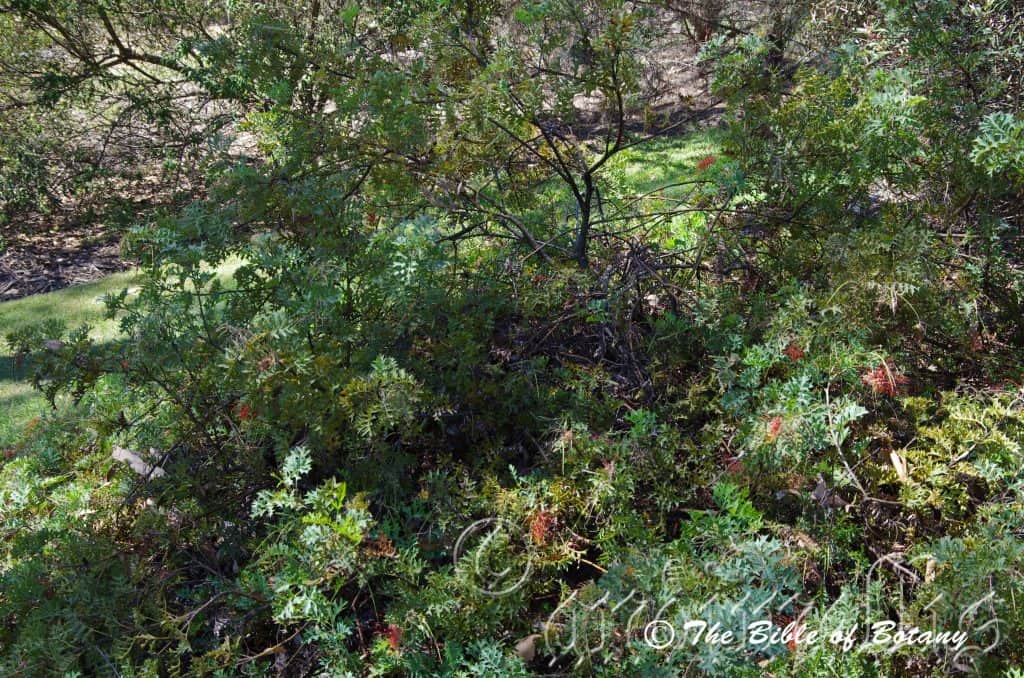
Mount Cootha Botanical Gardens Qld.
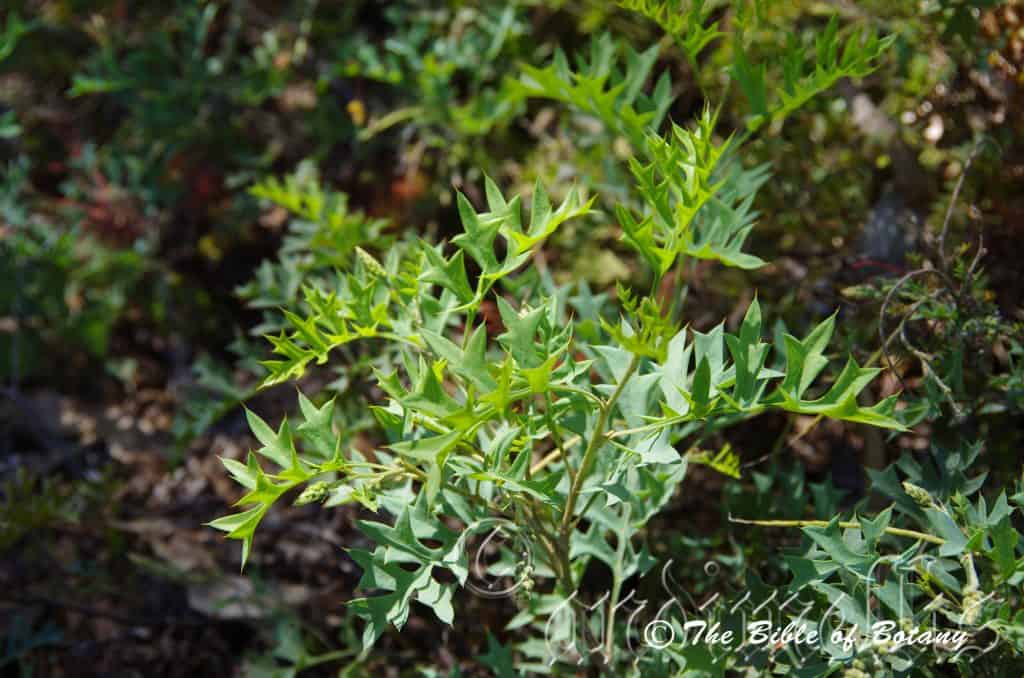
Mount Cootha Botanical Gardens Qld.
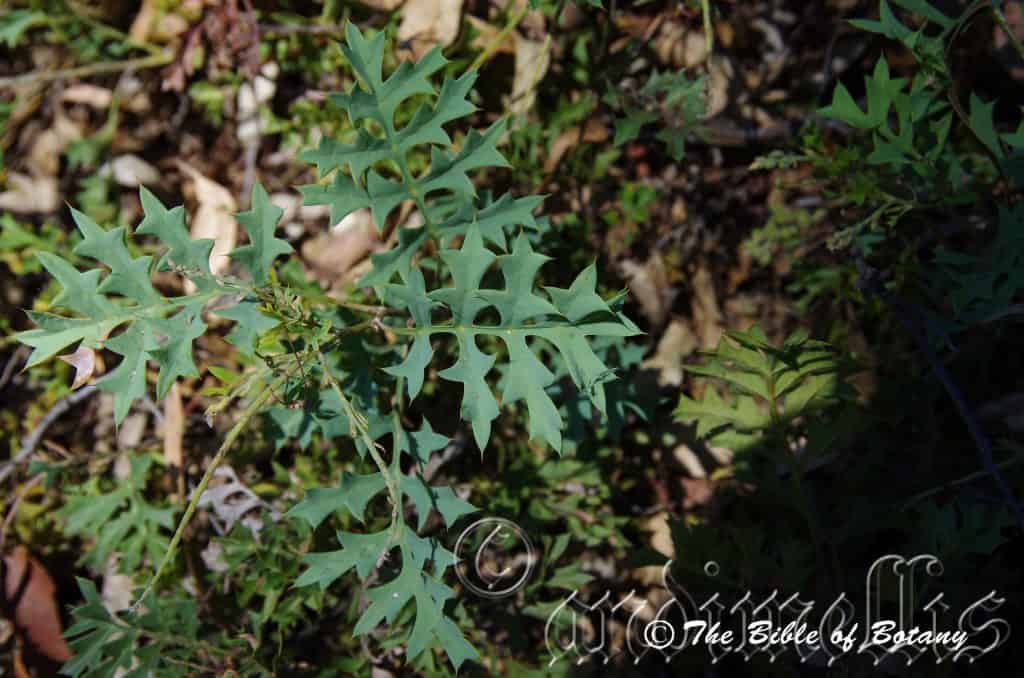
Mount Cootha Botanical Gardens Qld.

Mount Cootha Botanical Gardens Qld.

Mount Cootha Botanical Gardens Qld.
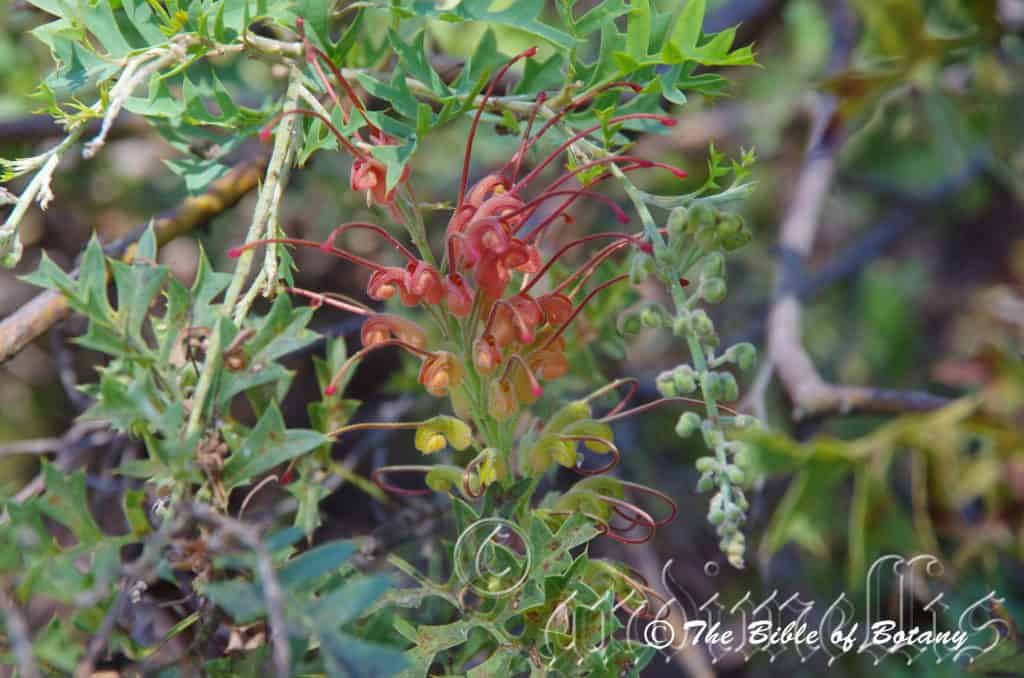
Mount Cootha Botanical Gardens Qld.
Grevillea bipinnatifida
Classification:
Class: Magnoliopsida
Order: Proteales
Family: Proteaceae
Genus: Is named in honour of C. F. Greville; 1749-1809, who was a British expert botanist on Algae, a foundation member of the London Horticultural Society and a collector of rare plants.
Species: From Bi/Bis, which is Greek/Latin for two and Pinnatus, which is Latin for a feather. It refers to leaves, which divided into two equal parts similar in structure to a bird’s feather then is divided again into two equal parts.
Sub Species:
Common Name: Fuchsia Grevillea or Grape Grevillea.
Distribution:
Grevillea bipinnatifida is restricted to an area in south western, Western Australia between Victoria Plains, Kojunup and Flinders Bay.
It is rare despite being found over a large relatively area and has suffered greatly from over logging and housing development.
https://avh.ala.org.au/occurrences/search?taxa=Grevillea+bipinnatifida#tab_mapView
Habitat:
Grevillea bipinnatifida prefers partial shade to dappled shade. It grows in dry open Jarrah forests or open mixed woodlands. The altitude ranges from sea level to 350 meters ASL.
The temperatures range from 3 degrees in August to 38 degrees in February.
The rainfall ranges from lows of 400mm to an average 1150mm annually.
Soil Requirements:
Grevillea bipinnatifida prefer to grow on skeletal stony or rocky outcrops. The soils are derived from partially decomposed sandstones or granite. The soils pH ranges from 6pH to 7pH are preferred. It does not tolerate water logged soils. Non saline soils to moderately saline soils are tolerated.
Height & Spread:
Wild Plants: 0.4m to 2m by 1.5m to 2m.
Characteristics: Grevillea bipinnatifida’s stems are pale grey to grey and glabrous. The branchlets are pale olive-green to lime-green and glabrous.
Grevillea bipinnatifida’s alternate oblong leaves measure 70mm to 120mm in length by 48mm to 85mm in width. The laminas are deeply dissected, pinnatifid or bipinnatifida. The lobes measure 20mm to 60mm in length by 20mm to 32mm in width. The concolourous laminas are green to pale blue-green and glabrous. The mid vein is prominent on the lower lamina and is distinctly visible on the upper lamina. The margins have 3 to 7 usually 5 final lobes which are oblong to triangular and measure 3mm to 5mm in length with a sharp thorn at the apex. The laminas curve upwards from the midvein as do the final lobes. The base is attenuate for the entire length of the 25mm to 35mm long petiole.
The inflorescence of Grevillea bipinnatifida is born on a terminal raceme. The racemes measure 65mm to 80mm in length. The perianth and style are the most prominent parts of the flower. The individual perianths are green or orange or pink or red from the base through to the lobes where they change to pink to orange. The perianth is covered in white pilose hairs externally and glabrous internally. The perianth and lobes measure 15mm to 20mm in length. The perianth and lobes are free and very irregular.
The style and stigma are deep red at the base while the pollen presenter is cream to deep yellow. The pistils measure 34mm to 40mm long. The lateral style is glossy and glabrous to sparsely covered in white pilose hairs. The ovary is covered in white hirsute hairs. The perianths peduncles measure 8mm to 10mm in length and are covered in white pilose hairs. There are 4 sessile stamens. The flowers appear from June to December with individual plants flowering for 2 to 3 months during this period.
Grevillea bipinnatifida’s fruits are oblong follicles. The style is persistent. The dull, green follicles are glabrous or covered in pale brown glandular hairs and turn brown when ripe.
Wildlife:
Grevillea bipinnatifida is very attractive to all nectar eating honeyeaters of all sizes.
Cultivation:
Grevillea bipinnatifida is a very beautiful small shrub for most gardens in semi-arid, temperate and subtropical zones. It is a very reliable and a prolific bloomer, with its flowers contrasting beautifully with the green foliage. As garden subjects they will grow 1 meter to 1.5 meters in height by 1 meter to 2 meters in diameter when cultivated in the open. It is fast growing, drought and cold tolerant.
It is most suitable for use around swimming pools, sunny courtyards, besides pathways or driveways and rockeries. The dense bushy habit with the flowers placed terminally they put on a great display.
It is best used adjacent to small areas of bush close to paths or the house so their flowers can be viewed regularly.
Placed near a bend they will gain a lot of attention whether you are coming or going. Mass plant them in the foreground with medium and larger plants behind. Plants with fine leaves with white flowers can be used in the midground while large flowering specie can be placed in the background. This will lead the viewer’s eyes down and over to the back ground. Whether it is in flower or not these plants will catch your attention and the viewer will be transfixed on the display rather than watching the path. Small Acacia specie with cream or white flowers can also be used to great effect as their flowering will compliment those from this Grevillea. The large deep green leaves will offset the strong flowers of the Acacia specie and in fact would be a very strong complementary contrast. If the prostrate or smaller Acacia specie were to flower at the same time or in a different season would be of no consequence as the foliages would still deliver plenty of interest. Try using Acacia specie with fine paler green leaves for best results
Another area where they excel is along driveways and on long sloping banks.
Propagation:
Seeds: The seeds need to be scarified prior to sowing. Sow the freshly treated seeds of Grevillea bipinnatifida directly into a seed raising mix. Cover them with 5mm of fine sand and place them in a warm sunny position and keep moist not wet. When the seedlings are 25mm to 50mm in height, prick them out and plant them into 50mm native tubes using a good organic mix.
Once the seedlings reach 150mm to 200mm in height, nip the tips out before planting them out into their permanent position. When mass planting or growing for a hedge, plant them out at 1.5 meter to 2 meter centers.
Cuttings: Use 70mm to 100mm long half ripened material when growing from cuttings from the present season’s growth. Take them in mid-autumn or early spring. Remove half the leaves from the bottom section being careful not to tear the bark.
1 Prepare the cutting mix by adding one third sharp clean river sand, one third peat and one third perlite. These ingredients are sterilize,
2 Select good material from non diseased plants,
3 Select semi green stems for cuttings. Look for a stem with two or three nodes,
4 Place the cutting on a flat, hard surface, and make a clean cut down one side of the cutting at the base for 10mm with a sharp sterile knife or razor blade. – This scarification of the node will increase the chances of roots emerging from this spot. Now remove all but one or two the leaves, leaving the apex leaves in tact. If the leaves are very large in proportion to the stem, cut off the apical halves.
5 Fill a saucer with water, and place a little medium strength rooting hormone into another container like a milk bottle top. Dip the node end of the cutting into the water and then into the rooting hormone. Tap off any excess hormone,
6 Use a small dipple stick or old pencil to poke a hole into the soilless potting mix. Ensure the hole is slightly larger than the stem diameter and be careful not to wipe the rooting hormone off the cuttings base, place the cuttings in a pattern ensuring the cuttings are not touching each other,
7 I like to place the pots in Plastic bags to help maintain temperature and moisture. Place in a semi shaded place like under 50mm shade cloth.
8 When the cuttings have struck, open the bag to allow air circulation for a few days to a week,
9 Once hardened off remove the cuttings from the bag and allow to further hardening for a few more days,
10 Transplant into a good potting mix to grow on.
Fertilize using seaweed, fish emulsion or organic chicken pellets soaked in water on an alternate basis. Fertilize every two months until the plants are established then twice annually in early September or March to maintain health, vitality and better flowering. Avoid synthetic fertilizers as they will most likely contain calcium and phosphorous at levels, which are toxic to most Proteaceae.
Further Comments from Readers:
“Hi reader, it seems you use The Bible of Botany a lot. That’s great as we have great pleasure in bringing it to you! It’s a little awkward for us to ask, but our first aim is to purchase land approximately 1,600 hectares to link several parcels of N.P. into one at The Pinnacles NSW Australia, but we need your help. We’re not salespeople. We’re amateur botanists who have dedicated over 30 years to saving the environment in a practical way. We depend on donations to reach our goal. If you donate just $5, the price of your coffee this Sunday, We can help to keep the planet alive in a real way and continue to bring you regular updates and features on Australian plants all in one Botanical Bible. Any support is greatly appreciated. Thank you.”
In the spirit of reconciliation we acknowledge the Bundjalung, Gumbaynggirr and Yaegl and all aboriginal nations throughout Australia and their connections to land, sea and community. We pay our respect to their Elders past, present and future for the pleasures we have gained.
Grevillea biternata
Classification:
Class: Magnoliopsida
Order: Proteales
Family: Proteaceae
Genus: Is named in honour of C. F. Greville; 1749-1809, who was a British expert botanist on Algae, a foundation member of the London Horticultural Society and a collector of rare plants.
Species: From Bi/Bis, which is Greek/Latin for two and Ternatus, which is Latin for to be in sets of three. It refers to having the leaves divide twice into three equal parts.
Common Name: Green Carpet.
Distribution:
Grevillea biternata is endemic to Western Australia and is restricted to an area south from Northampton Yuna to near Northam and on the Swan River Plains.
https://avh.ala.org.au/occurrences/search?taxa=Grevillea+biternata#tab_mapView
Habitat Aspect Climate:
Grevillea biternata prefers full sun. It grows on flat plains in dry open Eucalyptus forests or open mixed woodlands. The altitude ranges from 10 meters ASL to 350 meters ASL.
The temperatures range from 3 degrees in July to 39 degrees in January.
The rainfalls range from lows of 450mm to an average of 800mm annually.
Soil Requirements:
Grevillea biternata prefers red or yellow sands loams to medium clays. The soils have a high percentage of lateritic gravels, stones or rock in the strata and often over laterites or on lateritic outcrops where moisture gathers. The soils are derived from decomposed sandstones or granite. The soils pH ranges from 5.5pH to 6.5pH. It does not tolerate water logged soils. Non saline soils to moderately saline soils are tolerated.
Height & Spread:
Wild Plants: 0.3m to 1.5m by 2m to 3m.
Characteristics:
Grevillea biternata’s main stems are pale grey-brown and glabrous. The branchlets are a pale grass green and densely covered in white tomentose hairs.
Grevillea biternata alternate, simple or dissected or tripartite leaves are deeply divided to the mid vein and measure 20mm to 90mm in length by 20mm to 70mm in width overall. The leaves are usually divaricately tripartite or at times with the lateral lobes being tripartite or rarely biternate. The linear lobes measure 8mm to 70mm in length by 0.7mm to 2.8mm in width. The bases are sessile, while the apexes taper to a fine pungent tip. The concolourous laminas are pale grass-green to mid grass-green and glabrous on the upper laminas while the lower laminas are glabrous or sparsely covered in short, white puberulent hairs. The margins are revolute to midribs of leaf and lobes.
The inflorescence of Grevillea biternata are erect, short racemes which are born auxiliary or terminally. The sub globose to shortly conical or narrowly conical-cylindrical measure 18mm to 24mm in length by 12mm to 18mm in diameter. The perianth and style are the most prominent part of the flower and are white or cream. Individual perianths measure 1mm to 2mm in length. The perianth is glabrous externally and glabrous or covered in white hirtellous hairs internally. The 4 perianth lobes are very regular with the lobes being free. The rachis and pedicel are covered in white villous hairs.
The ovary and style are glabrous. The white or cream pistils measure 3mm to 4.5mm in length. The style is erect and white while the pollen presenter is conical to truncate conical with the base usually distinctly broader than apex of style. There are 4 inserted stamens. The stipe measures 0.5mm to 2mm in length. The flowering period is from July to November.
Grevillea biternata’s fruits are ovoidal to ellipsoidal follicles. The style is not persistent on the follicles which are bright grass-green and turn brown on ripening. It is smooth, glabrous, and faintly rugose with tuberculate lumps. It is not viscid. They measure 7mm to 10mm in length by 5mm to 7mm in width. The ellipsoidal deep brown seeds measure 4mm to 6.5mm in length by 3mm to 4.5mm in width.
Wildlife:
The flowers of Grevillea biternata are produced in abundance during late winter and early spring. Because of the proliferation small flowers, it is a great attraction for native insects. The painted Lady butterfly (Vanessa kershawi) was a particularly active.
Confusing Specie:
Grevillea triloba has shallower and broader lobes which are more evenly divaricate. The lobes are usually greater than 3 mm in width. The margins are less revolute while the lateral veins are acutely angled on the lower laminas while the ultimate veins on the upper laminas are clearly visible where as it is not visible in Grevillea biternata.
It is suspected that Grevillea triloba and Grevillea biternata hybridize in and around Geraldton on the Geraldton Sand Plains.
Cultivation:
Grevillea biternata is a low growing prostrate shrub or small erect shrub. Grevillea biternata should be more widely grown in large sunny rockeries. Well grown garden subjects grow from 1 meter to 2 meters in height by 1.5 meters to 2 meters in diameter while the prostrate form will grow to 200mm to 300mm in height by up to 3.5meters in diameter when grown in the open. It is particularly good on moist banks adding colour particularly in the winter months.
This is one Western Australian Grevillea that suits the coastal cool sub-tropical and temperate areas in the east. It has proven itself hardy in all Mediterranean climates.
Native gardens would benefit from this scrub or ground cover as its pale grass-green foliage contrasts beautifully with the flowers and any other shrub that is planted adjacent to them. The low growing prostrate forms look outstanding when mass planted over a large area with Hovea acutifolia or Hovea similes scattered between them. The deep green foliage and erect growth of the Hovea specie with their deep purple flowers make truly sensational display.
Another method of outstanding brilliance is to incorporate it at the edge of a bush scene with other small winter red flowering Grevillea like Grevillea speciosa or Grevillea robin gordon in the back ground or to the sides to give an undulating affect to the garden bed.
It can also be used with great affect in cottage or formal gardens because of its small butterfly attracting flowers and non-overpowering size or leaf form.
Propagation:
Seeds: This is one of the first Grevillea specie I had grown in the nursery. The seeds need to be treated before sowing. This can be done by placing the seeds into a small calico bag with sharp clean sand and rubbing them to scarify the surface or they can be nicked individually with a knife. Another method is to rub the individual seeds lightly over fine sandpaper. Sow Grevillea biternata seeds directly into a seed raising mix. When the seedlings are 25mm to 50mm tall, prick them out and plant them into 50mm native tubes using a good organic mix.
Once the seedlings reach 150mm to 200mm in height, nip the tips out before planting them out into their permanent position. For mass plantings plant them at 2 meter to 2.5 meter centers depending on the form, or in rockeries with a much wider spacing it give the arid or escarpment look.
Cuttings: Use 70mm to 100mm long half ripened material when growing from cuttings from the present season’s growth. Take them in mid-autumn or early spring. Remove half the leaves from the bottom section being careful not to tear the bark.
1 Prepare the cutting mix by adding one third sharp clean river sand, one third peat and one third perlite. These ingredients are sterilize,
2 Select good material from non diseased plants,
3 Select semi green stems for cuttings. Look for a stem with two or three nodes,
4 Place the cutting on a flat, hard surface, and make a clean cut down one side of the cutting at the base for 10mm with a sharp sterile knife or razor blade. – This scarification of the node will increase the chances of roots emerging from this spot. Now remove all but one or two the leaves, leaving the apex leaves in tact. If the leaves are very large in proportion to the stem, cut off the apical halves.
5 Fill a saucer with water, and place a little medium strength rooting hormone into another container like a milk bottle top. Dip the node end of the cutting into the water and then into the rooting hormone. Tap off any excess hormone,
6 Use a small dipple stick or old pencil to poke a hole into the soilless potting mix. Ensure the hole is slightly larger than the stem diameter and be careful not to wipe the rooting hormone off the cuttings base, place the cuttings in a pattern ensuring the cuttings are not touching each other,
7 I like to place the pots in Plastic bags to help maintain temperature and moisture. Place in a semi shaded place like under 50mm shade cloth.
8 When the cuttings have struck, open the bag to allow air circulation for a few days to a week,
9 Once hardened off remove the cuttings from the bag and allow to further hardening for a few more days,
10 Transplant into a good potting mix to grow on.
Fertilize using seaweed, fish emulsion or organic chicken pellets soaked in water on an alternate basis. Fertilize every two months until the plants are established then twice annually in early September or March to maintain health, vitality and better flowering. Avoid synthetic fertilizers as they will most likely contain calcium and phosphorous at levels, which are toxic to most Proteaceae.
Further Comments from Readers:
“Hi reader, it seems you use The Bible of Botany a lot. That’s great as we have great pleasure in bringing it to you! It’s a little awkward for us to ask, but our first aim is to purchase land approximately 1,600 hectares to link several parcels of N.P. into one at The Pinnacles NSW Australia, but we need your help. We’re not salespeople. We’re amateur botanists who have dedicated over 30 years to saving the environment in a practical way. We depend on donations to reach our goal. If you donate just $5, the price of your coffee this Sunday, We can help to keep the planet alive in a real way and continue to bring you regular updates and features on Australian plants all in one Botanical Bible. Any support is greatly appreciated. Thank you.”
In the spirit of reconciliation we acknowledge the Bundjalung, Gumbaynggirr and Yaegl and all aboriginal nations throughout Australia and their connections to land, sea and community. We pay our respect to their Elders past, present and future for the pleasures we have gained.
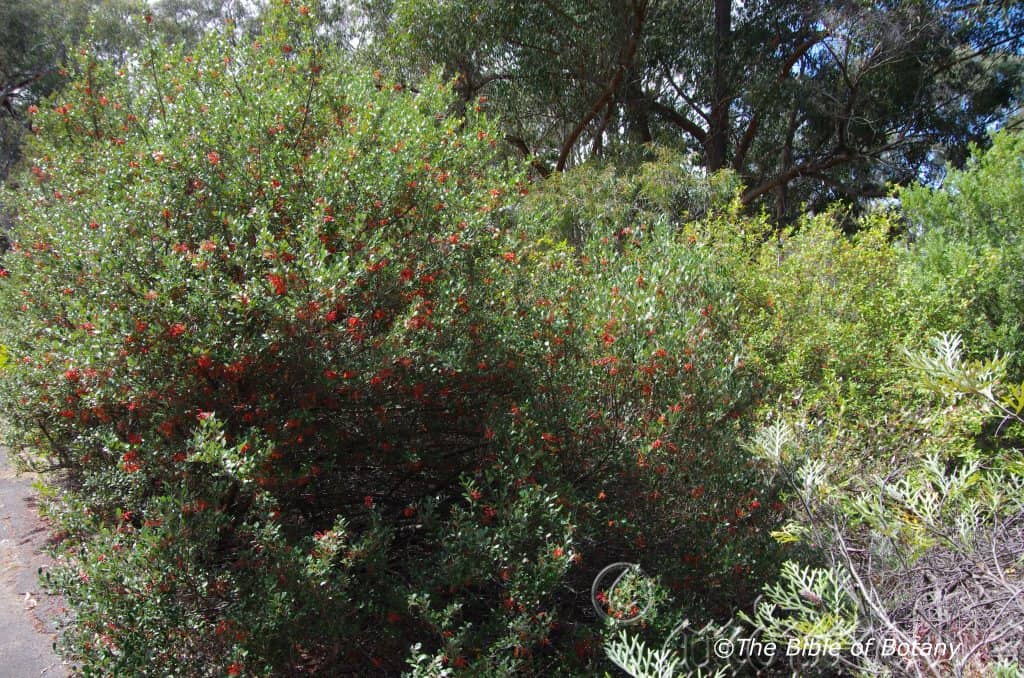
National Botanic Gardens ACT

National Botanic Gardens ACT
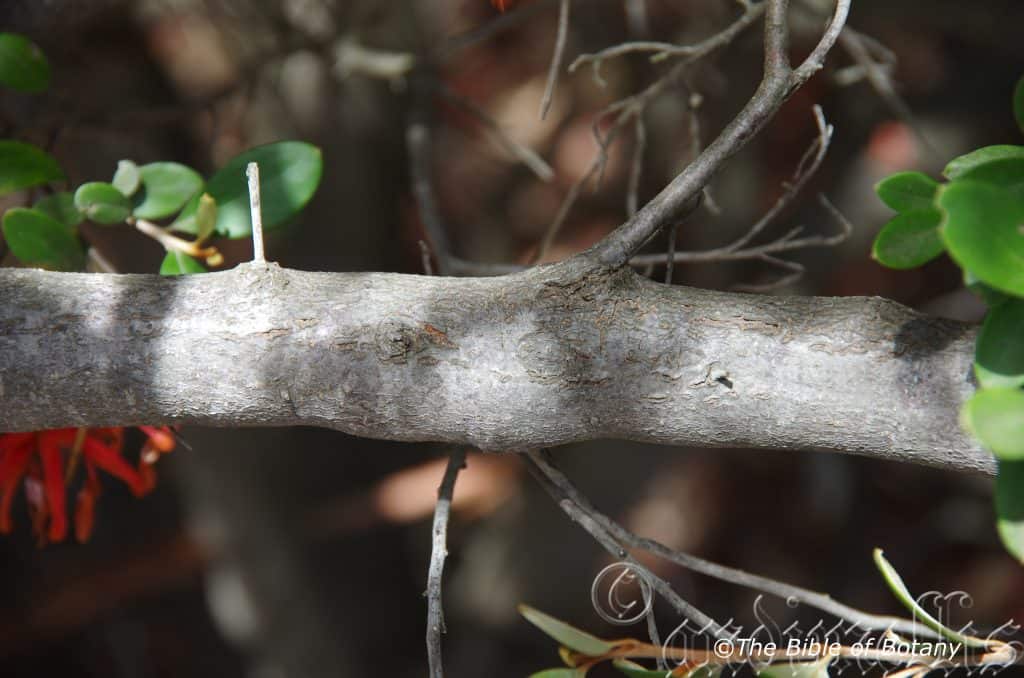
National Botanic Gardens ACT
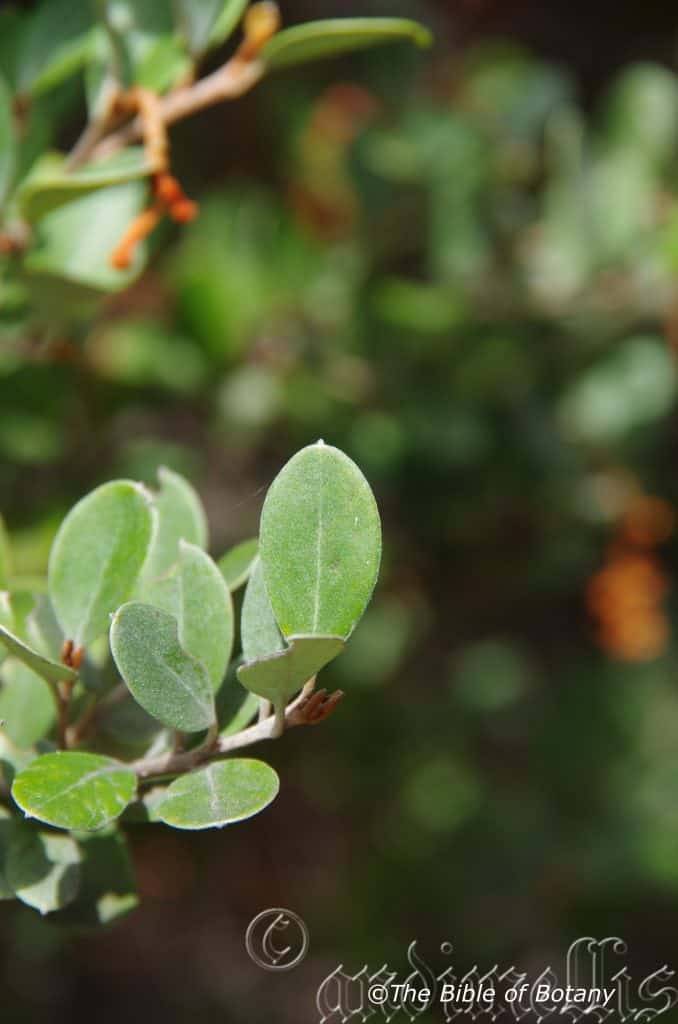
National Botanic Gardens ACT

National Botanic Gardens ACT
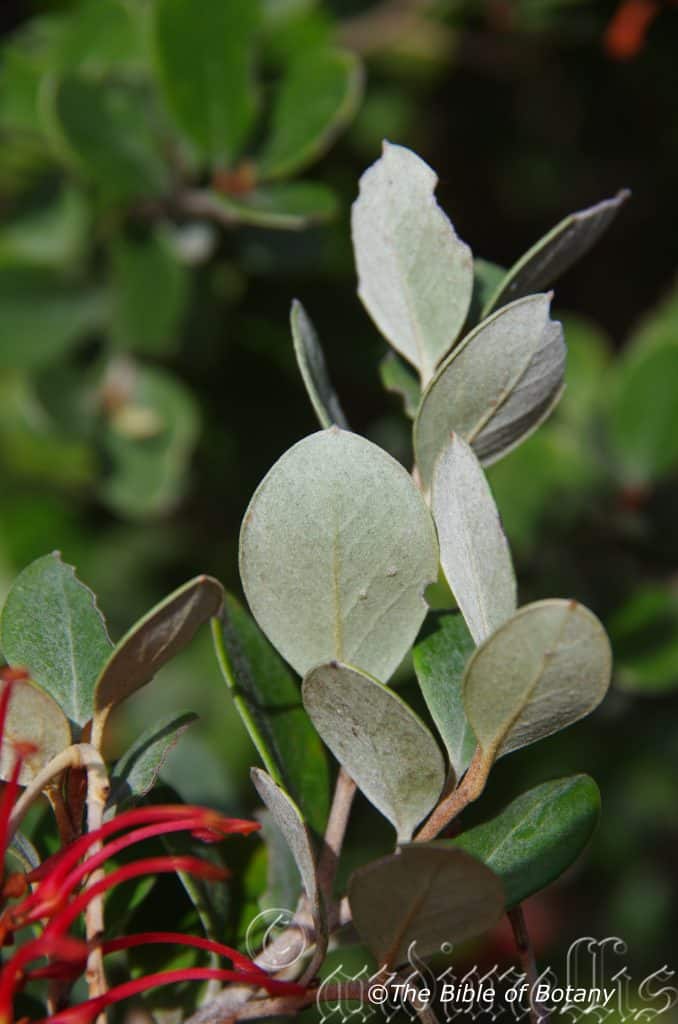
National Botanic Gardens ACT

National Botanic Gardens ACT
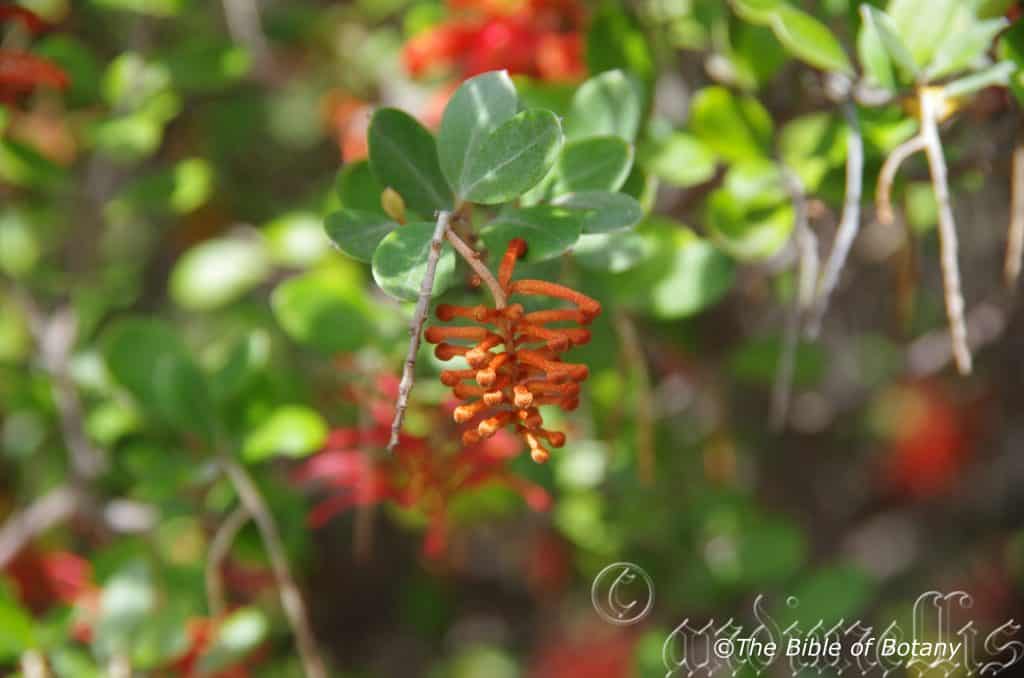
National Botanic Gardens ACT

National Botanic Gardens ACT
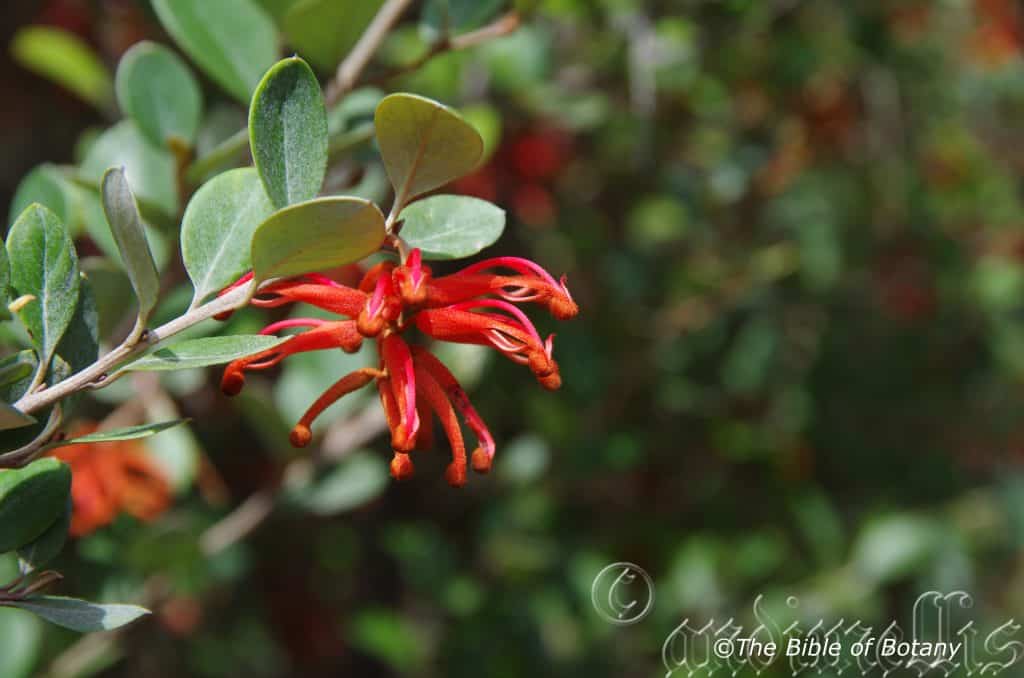
National Botanic Gardens ACT
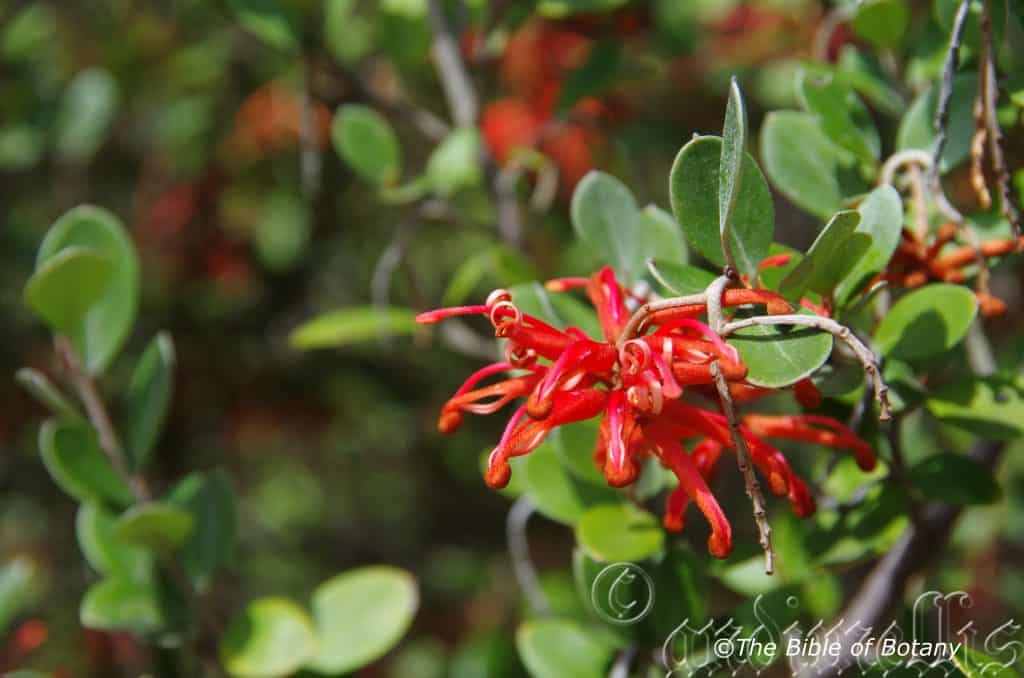
National Botanic Gardens ACT
Grevillea brevifolia
Classification
Class: Magnoliopsida
Order: Proteales
Family: Proteaceae
Genus: Is named in honour of C. F. Greville; 1749-1809, who was a British expert botanist on Algae, a foundation member of the London Horticultural Society and a collector of rare plants.
Species: From Brakhús, which is Ancient Greek or later Brevis, which is Latin for a short or small and Folium, which is Latin for a leaf or foliage. It refers to leaves, which are much shorter than those found on other species in the genus.
Sub Species: Grevillea brevifolia subsp. brevifolia From Brakhús, which is Ancient Greek or later Brevis, which is Latin for a short or small and Folium, which is Latin for a leaf or foliage. It refers to leaves, which are much shorter than those found on other species in the genus.
Sub Species: Grevillea brevifolia subsp. polychroma From Polús, which is Ancient Greek for many, much or a lot and Khrôma which is Ancient Greek for colour. It refers to flowers, which have great variation from the standard red colour. Recent DNA testing has shown that this subs species is a new species in its own right.
Common Name:
Distribution:
Grevillea brevifolia subsp. brevifolia is restricted a small area in the far south eastern New South Wales around Black Jack is a disjunct populations, one at Mount Alexander in central Victoria.
Grevillea brevifolia subsp. polychroma is restricted a small area in the northern Victoria east from the Wentworth River to the Brodribb Forest Management Block.
https://avh.ala.org.au/occurrences/search?taxa=Grevillea+brevifolia#tab_mapView
Habitat:
Grevillea brevifolia prefers full sun to dappled shade. It grows at subalpine altitudes on exposed rocky sites associated with open heathlands. The altitude ranges from 1200 meters ASL to 1800 meters ASL. Grevillea brevifolia subsp. polychroma is generally found at lower elevations.
The temperatures range from minus 8 degrees in August to 36 degrees in February.
The rainfalls range from lows of 850mm to an average 1060mm annually.
Soil Requirements:
Grevillea brevifolia prefers skeletal rocky or stony soils, sandy loams, to light gravelly clay loams. The soils are derived from partially decomposed or decomposed granites. The soils pH ranges from 5pH to 5.5pH are preferred. It tolerate waters logged soils and or seasonal flooding. Non saline soils to slightly saline soils are tolerated.
Height & Spread:
Wild Plants: 0.5m to 3m by 1m to 2m.
Characteristics:
Grevillea brevifolia’s grows as a low compact shrub to 0.7 meters or as a tall open shrub to 3 meters. The stems are red-brown glabrous. The branchlets are a tan to yellow-brown and are sparsely to densely covered in white hirsute hairs.
Grevillea brevifolia has alternate, elliptic to somewhat ovate leaves that measure 15mm to 32mm in length by 7mm to 14mm in width. The petioles measure 4mm to are cuneate to somewhat rounded while the apexes are obtuse with a small apiculate tip. The discolourous laminas are deep green, semi glossy and sparsely covered in white, sericeous hairs on the upper laminas while the lower laminas are white and densely covered in white, sericeous hairs. The laminas recurve slightly upwards from the mid vein to the margins and curve downwards at the margins but are not quite revolute while the margins are entire. The mid vein is prominent on both laminas on the basal half, while the lateral veins are barely visible.
The terminal conflorescence of Grevillea brevifolia is decurve to pendulant. The usually simple or with 3 or 4 branches in a loose cluster. The deep red, scarlet-red to maroon-red perianth’s outer surface is densely covered in fawn sericeous to tomentose hairs, while there is an internal beard near the opening. The gynoecium measures 17mm to 21mm in length, while the stipitate ovary is glabrous. The red style is sparsely covered in minute pubescent hairs towards the apex, while the basal section is mostly glabrous. The pollen lateral presenter is convex. The pedicels are moderately covered in reddish-fawn sericeous hairs and measure 3mm to 4mm in length. The flowers appear from September to November.
Grevillea brevifolia hasfruits that are narrow ovoidal follicles. The style is persistent. The green follicles turn brown on ripening. The follicles are glabrous.
Wildlife:
Grevillea brevifolia is very attractive to all small nectar eating honeyeaters, especially the Eastern spinebill, Acanthorhynchus tenuirostris.
Cultivation:
Grevillea brevifolia is a very unusual beautiful small shrub for most gardens in semi-arid and temperate zones. It is a very reliable and prolific bloomer, with its flowers contrasting beautifully with the unusual long linear leaves. The plants have a sparse covering of leaves so the flowers become showier. As garden subjects they will grow 1 meter to 1.5 meters in height by 1.5 meters in diameter when cultivated in the open. It is fast growing, drought tolerant and cold tolerant, at least down to temperatures of minus 3 degrees. They can be tip pruned in the juvenile stages to encourage a narrower more compact shrub.
In Native gardens they can be used for attracting small birds like silver eyes.
It is most suitable for use around swimming pools, sunny courtyards, besides pathways or driveways, rockeries and for along drive ways.
Placed near a bend they will gain a lot of attention whether you are coming or going. Place them in the midground with ground covers, very small shrubs or annuals in front and larger plants behind. Plants with either small cream flowers or white flowers can be used in the foreground while large flowering specie can be placed in the background. This will lead the viewer’s eyes down and over to the back ground.
Use plants with fine short pale green, blue-green or glaucous leaves to the rear and in the foreground otherwise the plants will be lost in miniature jungle that will look very untidy. Ensure that the whole plant or at least most of it is on display from most sections of the garden as the flowers are a real treat.
When it is in flower these plants will catch your attention and the viewer will be transfixed on the display rather than watching the path. When it is not in flower you need the other plants to become the main focal point in the garden unless strong contrasting foliages are used so the long leaves are accentuated. Small Acacia specie can also be used to great effect as their flowering will compliment those from this Grevillea specie. The large deep green leaves with the brilliant red flowers will offset the strong flowers of the Acacia specie and in fact would be a very strong complementary contrast if the prostrate or smaller Acacia specie were to flower in the same season.
This is one plant that benefits the gardener if mass planted together in small sections or scattered planted in small groups. Plant them at 1.6 meter to 1.8 meter centers.
Propagation:
Seeds: Grevillea brevifolia seeds need to be treated before sowing. This can be done by placing the seeds into a small calico bag with sharp clean sand and rubbing them to scarify the surface or they can be nicked individually with a knife. Another method is to rub the individual seeds lightly over fine sandpaper. Sow the freshly treated seeds directly into a seed raising mix. Cover them with 5mm of fine sand and keep moist not wet. Place the tray in a warm sunny position. When the seedlings are 25mm to 50mm tall, prick them out and plant them into 50mm native tubes using a good organic mix.
Once the seedlings reach 150mm to 200mm in height, nip the tips out before planting them out into their permanent position.
Cuttings: Use 70mm to 100mm long half ripened material when growing from cuttings from the present season’s growth. Take them in mid-autumn or early spring. Remove half the leaves from the bottom section being careful not to tear the bark.
1 Prepare the cutting mix by adding one third sharp clean river sand, one third peat and one third perlite. These ingredients are sterilize,
2 Select good material from non diseased plants,
3 Select semi green stems for cuttings. Look for a stem with two or three nodes,
4 Place the cutting on a flat, hard surface, and make a clean cut down one side of the cutting at the base for 10mm with a sharp sterile knife or razor blade. – This scarification of the node will increase the chances of roots emerging from this spot. Now remove all but one or two the leaves, leaving the apex leaves in tact. If the leaves are very large in proportion to the stem, cut off the apical halves.
5 Fill a saucer with water, and place a little medium strength rooting hormone into another container like a milk bottle top. Dip the node end of the cutting into the water and then into the rooting hormone. Tap off any excess hormone,
6 Use a small dipple stick or old pencil to poke a hole into the soilless potting mix. Ensure the hole is slightly larger than the stem diameter and be careful not to wipe the rooting hormone off the cuttings base, place the cuttings in a pattern ensuring the cuttings are not touching each other,
7 I like to place the pots in Plastic bags to help maintain temperature and moisture. Place in a semi shaded place like under 50mm shade cloth.
8 When the cuttings have struck, open the bag to allow air circulation for a few days to a week,
9 Once hardened off remove the cuttings from the bag and allow to further hardening for a few more days,
10 Transplant into a good potting mix to grow on.
Fertilize using seaweed, fish emulsion or organic chicken pellets soaked in water on an alternate basis. Fertilize every two months until the plants are established then twice annually in early September or March to maintain health, vitality and better flowering. Avoid synthetic fertilizers as they will most likely contain calcium and phosphorous at levels, which are toxic to most Proteaceae.
Further Comments from Readers:
“Hi reader, it seems you use The Bible of Botany a lot. That’s great as we have great pleasure in bringing it to you! It’s a little awkward for us to ask, but our first aim is to purchase land approximately 1,600 hectares to link several parcels of N.P. into one at The Pinnacles NSW Australia, but we need your help. We’re not salespeople. We’re amateur botanists who have dedicated over 30 years to saving the environment in a practical way. We depend on donations to reach our goal. If you donate just $5, the price of your coffee this Sunday, We can help to keep the planet alive in a real way and continue to bring you regular updates and features on Australian plants all in one Botanical Bible. Any support is greatly appreciated. Thank you.”
In the spirit of reconciliation we acknowledge the Bundjalung, Gumbaynggirr and Yaegl and all aboriginal nations throughout Australia and their connections to land, sea and community. We pay our respect to their Elders past, present and future for the pleasures we have gained.
Grevillea bronwenae
Classification
Class: Magnoliopsida
Order: Proteales
Family: Proteaceae
Genus: Is named in honour of C. F. Greville; 1749-1809, who was a British expert botanist on Algae, a foundation member of the London Horticultural Society and a collector of rare plants.
Species: Is named in honour of Bronwen Keighery, the wife of G. J. Keighery, who did the work on reclassifying Taxonomy of the Grevillea brachystylis species complex. She worked tirelessly as a volunteer to her husband on field trips over 15 years.
Sub Species:
Common Name:
Distribution:
Grevillea bronwenae is restricted a small area in the far south west of Western Australia south from Bunbury to Augusta and Nanup in the east.
https://avh.ala.org.au/occurrences/search?taxa=Grevillea+bronwenae#tab_mapView
Habitat:
Grevillea bronwenae prefers full sun to dappled shade. It grows on ridges, hills and slopes in Eucalyptus forests or moist mixed woodlands. The altitude ranges from near sea level to 200 meters ASL.
The temperatures range from 3 degrees in August to 38 degrees in February.
The rainfalls range from lows of 620mm to an average 1000mm annually.
Soil Requirements:
Grevillea bronwenae prefers skeletal rocky or stony soils, sandy loams, to light gravelly clay loams. The soils are derived from partially decomposed or decomposed lateritic sandstones. The soils pH ranges from 5pH to 5.5pH are preferred. It does not tolerate water logged soils. Non saline soils to moderately saline soils are tolerated.
Height & Spread:
Wild Plants: 0.5m to 2m by 1m to 1.5m.
Characteristics:
Grevillea bronwenae’s stems are red-brown glabrous. The branchlets are a tan to yellow-brown and are sparsely to densely covered in white hirsute hairs.
The alternate broad linear to very narrow obovate leaves measure 40mm to 160mm in length by 2mm to 14mm in width. The petiole measures 2mm to 4mm in length and is covered in white villous hairs. The bases taper to the petiole while the apexes are acute with a mucronate tip. The discolourous laminas are deep grass-green and sparsely to moderately covered in long, white, villous hairs on the upper laminas while the lower laminas are much paler and sparsely to densely covered in long, white, villous hairs. The laminas are slightly convex and decurve strongly near the margins but are not quite revote while the margins are entire. The mid vein is prominent on the lower lamina and is visible on the upper lamina.
The inflorescence is a raceme or cluster born terminally or from the leaf axils. The simple or erect to decurve, subsecunda or umbelloid to wheel like racemes or clusters contain 6 to 9 individual flowers. The racemes are covered in white villous hairs and measure 0.5mm to 2mm in length. The perianth is the most prominent part of the flower. The individual perianths are brilliant scarlet-red from the base through to the lobes. The perianth is sparsely to moderately covered in red tomentose hairs externally and is sparsely covered in red tomentose hairs internally. The perianth and lobes measure 9mm to 14mm in length. The lobes are joined to form a tube. The perianth and lobes are very irregular. The pedicels are moderately covered in red tomentose hairs and measure 3mm to 4mm in length.
The scarlet-red style is sparsely covered in reddish puberulent hairs with an ash grey stigma and concave pollen presenter. The pistil measures 8mm to 12mm in length. The stipitate ovary is covered in reddish villous hairs and measures 2mm to 4.5mm in length. The flowers appear from June to November.
The fruits are narrow ovoidal follicles. The style is persistent. The green follicles turn brown on ripening. It is glabrous and covered in white tomentose hairs. They measure 13mm to 16mm by 4mm to 6mm in diameter.
Wildlife:
Grevillea bronwenae is very attractive to all small nectar eating honeyeaters.
Cultivation:
Grevillea bronwenae a very unusual, beautiful, small shrub for most gardens in semi-arid and temperate zones. It is a very reliable and prolific bloomer, with its flowers contrasting beautifully with the unusual long linear leaves. The plants have a sparse covering of leaves so the flowers become showier. As garden subjects they will grow 1 meter to 1.5 meters in height by 1.5 meters in diameter when cultivated in the open. It is fast growing, drought tolerant and cold tolerant, at least down to temperatures of minus 3 degrees. They can be tip pruned in the juvenile stages to encourage a narrower more compact shrub.
In Native gardens it can be used for attracting small birds like silver eyes.
It is most suitable for use around swimming pools, sunny courtyards, besides pathways or driveways, rockeries and for along drive ways.
Placed near a bend they will gain a lot of attention whether you are coming or going. Place them in the midground with ground covers, very small shrubs or annuals in front and larger plants behind. Plants with either small cream flowers or white flowers can be used in the foreground while large flowering specie can be placed in the background. This will lead the viewer’s eyes down and over to the back ground.
Use plants with fine short pale green, blue-green or glaucous leaves to the rear and in the foreground otherwise the plants will be lost in miniature jungle that will look very untidy. Ensure that the whole plant or at least most of it is on display from most sections of the garden as the flowers are a real treat.
When it is in flower these plants will catch your attention and the viewer will be transfixed on the display rather than watching the path. When it is not in flower you need the other plants to become the main focal point in the garden unless strong contrasting foliages are used so the long leaves are accentuated. Small Acacia specie can also be used to great effect as their flowering will compliment those from this Grevillea specie. The large deep green leaves with the brilliant red flowers will offset the strong flowers of the Acacia specie and in fact would be a very strong complementary contrast if the prostrate or smaller Acacia specie were to flower in the same season.
This is one plant that benefits the gardener if mass planted together in small sections or scattered planted in small groups.
Propagation:
Seeds: Grevillea bronwenae seeds need to be treated before sowing. This can be done by placing the seeds into a small calico bag with sharp clean sand and rubbing them to scarify the surface or they can be nicked individually with a knife. Another method is to rub the individual seeds lightly over fine sandpaper. Sow the freshly treated seeds directly into a seed raising mix. Cover them with 5mm of fine sand and keep moist not wet. Place the tray in a warm sunny position. When the seedlings are 25mm to 50mm tall, prick them out and plant them into 50mm native tubes using a good organic mix.
Once the seedlings reach 150mm to 200mm in height, nip the tips out before planting them out into their permanent position. For mass plantings plant them at 2 meter to 2.5 meter centers depending on the form, or in rockeries with a much wider spacing it give the arid or escarpment look.
Cuttings:
Use 70mm to 100mm long half ripened material when growing from cuttings from the present season’s growth. Take them in mid-autumn or early spring. Remove half the leaves from the bottom section being careful not to tear the bark.
1 Prepare the cutting mix by adding one third sharp clean river sand, one third peat and one third perlite. These ingredients are sterilize,
2 Select good material from non diseased plants,
3 Select semi green stems for cuttings. Look for a stem with two or three nodes,
4 Place the cutting on a flat, hard surface, and make a clean cut down one side of the cutting at the base for 10mm with a sharp sterile knife or razor blade. – This scarification of the node will increase the chances of roots emerging from this spot. Now remove all but one or two the leaves, leaving the apex leaves in tact. If the leaves are very large in proportion to the stem, cut off the apical halves.
5 Fill a saucer with water, and place a little medium strength rooting hormone into another container like a milk bottle top. Dip the node end of the cutting into the water and then into the rooting hormone. Tap off any excess hormone,
6 Use a small dipple stick or old pencil to poke a hole into the soilless potting mix. Ensure the hole is slightly larger than the stem diameter and be careful not to wipe the rooting hormone off the cuttings base, place the cuttings in a pattern ensuring the cuttings are not touching each other,
7 I like to place the pots in Plastic bags to help maintain temperature and moisture. Place in a semi shaded place like under 50mm shade cloth.
8 When the cuttings have struck, open the bag to allow air circulation for a few days to a week,
9 Once hardened off remove the cuttings from the bag and allow to further hardening for a few more days,
10 Transplant into a good potting mix to grow on.
Fertilize using seaweed, fish emulsion or organic chicken pellets soaked in water on an alternate basis. Fertilize every two months until the plants are established then twice annually in early September or March to maintain health, vitality and better flowering. Avoid synthetic fertilizers as they will most likely contain calcium and phosphorous at levels, which are toxic to most Proteaceae.
Further Comments from Readers:
“Hi reader, it seems you use The Bible of Botany a lot. That’s great as we have great pleasure in bringing it to you! It’s a little awkward for us to ask, but our first aim is to purchase land approximately 1,600 hectares to link several parcels of N.P. into one at The Pinnacles NSW Australia, but we need your help. We’re not salespeople. We’re amateur botanists who have dedicated over 30 years to saving the environment in a practical way. We depend on donations to reach our goal. If you donate just $5, the price of your coffee this Sunday, We can help to keep the planet alive in a real way and continue to bring you regular updates and features on Australian plants all in one Botanical Bible. Any support is greatly appreciated. Thank you.”
In the spirit of reconciliation we acknowledge the Bundjalung, Gumbaynggirr and Yaegl and all aboriginal nations throughout Australia and their connections to land, sea and community. We pay our respect to their Elders past, present and future for the pleasures we have gained.
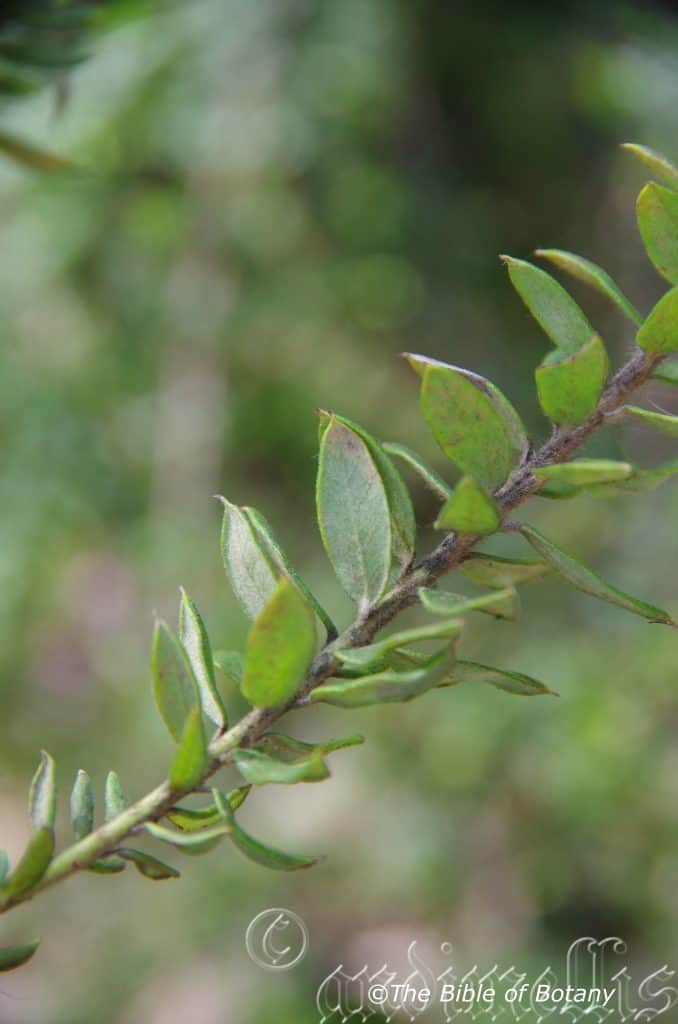
National Botanic Gardens ACT

National Botanic Gardens ACT
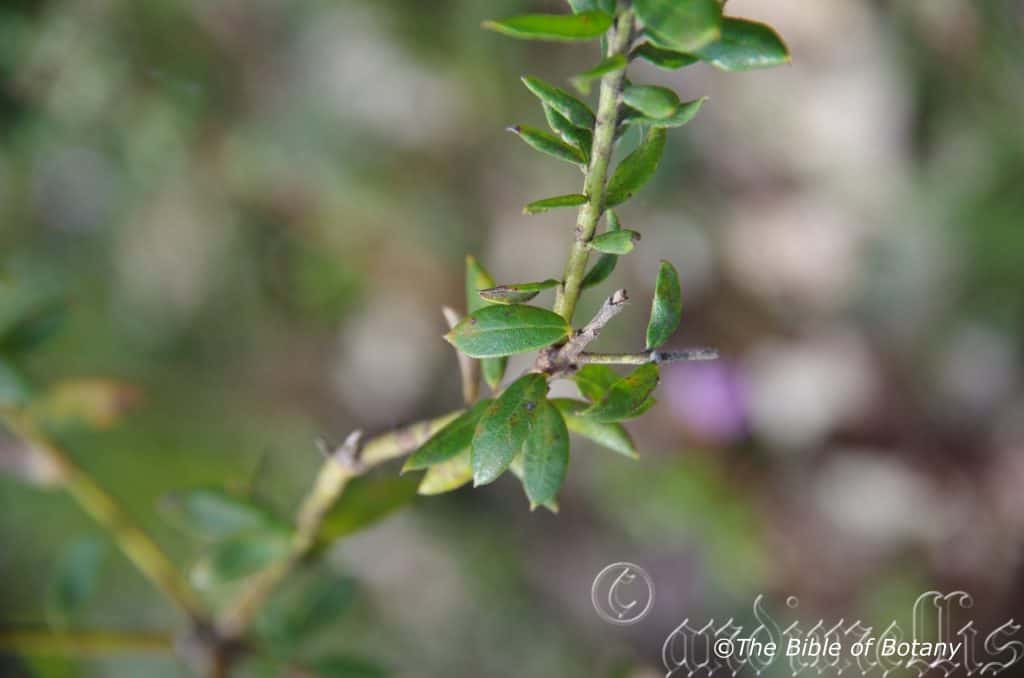
National Botanic Gardens ACT

National Botanic Gardens ACT

National Botanic Gardens ACT
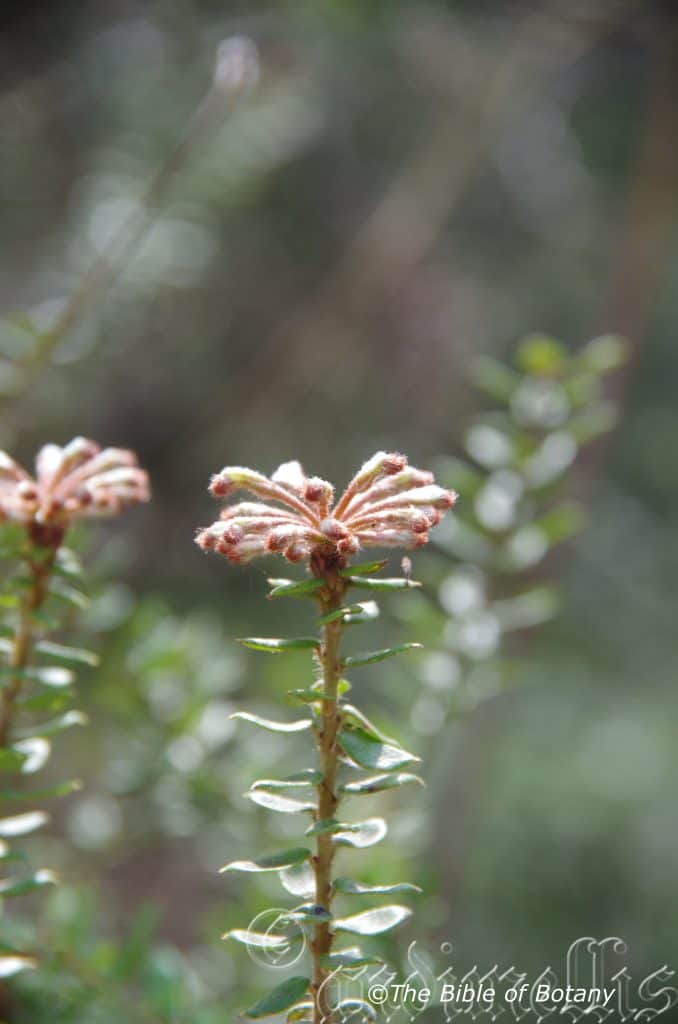
National Botanic Gardens ACT
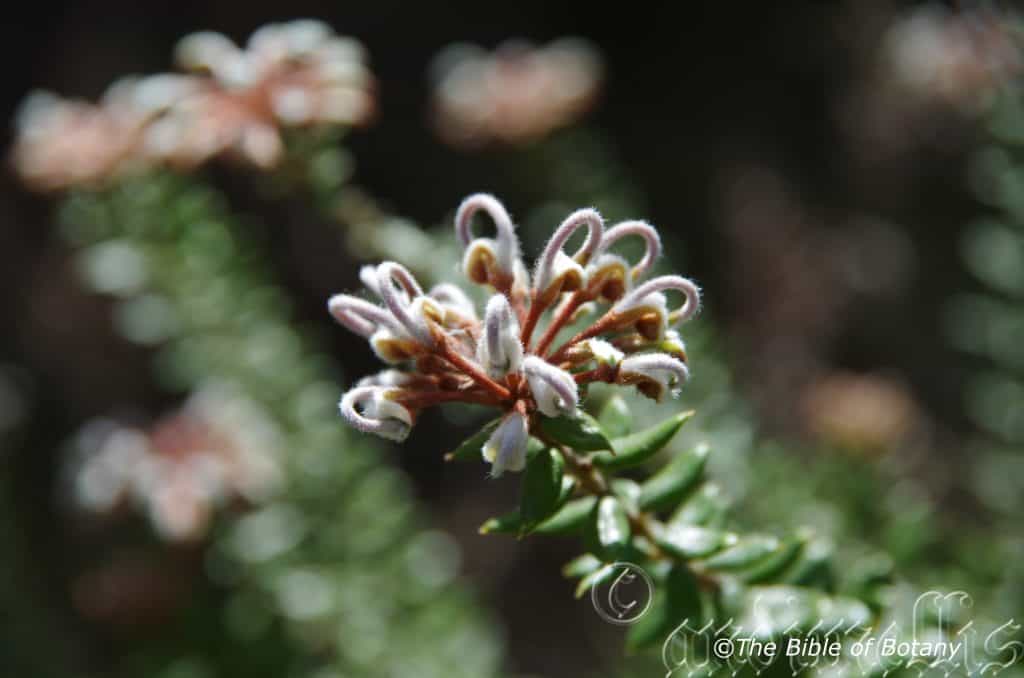
National Botanic Gardens ACT
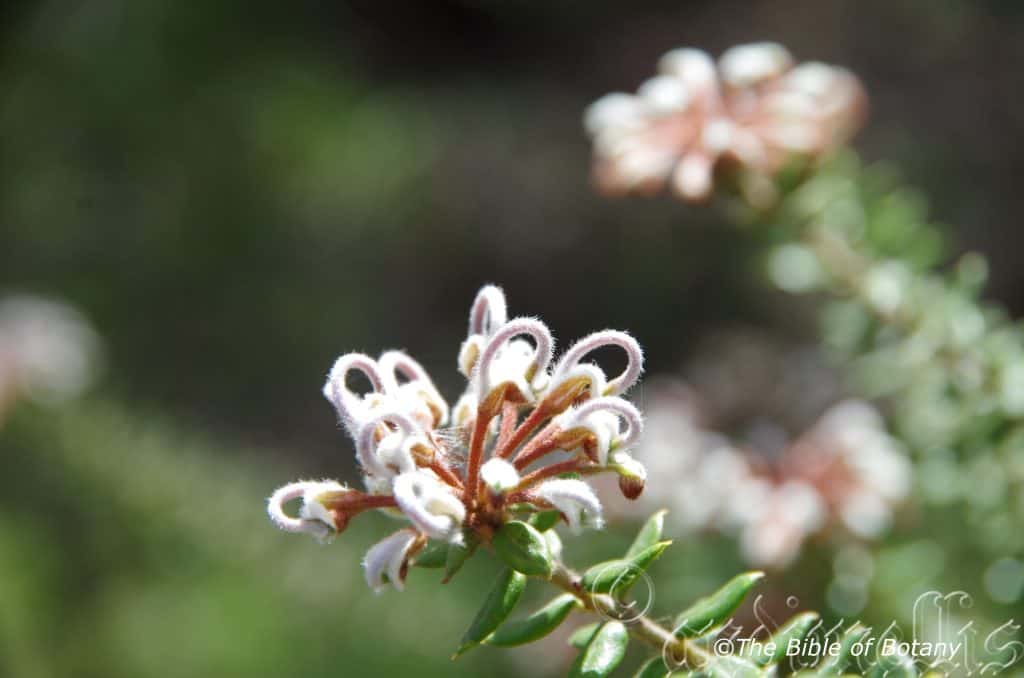
National Botanic Gardens ACT
Grevillea buxifolia
Classification:
Class: Magnoliopsida
Order: Proteales
Family: Proteaceae
Genus: Is named in honour of C. F. Greville; 1749-1809, who was a British expert botanist on Algae, a foundation member of the London Horticultural Society and a collector of rare plants.
Species: From Buxus which is Latin for a European genus and Folium, which is Latin for foliage. It refers to leaves, which resembles the European Buxus genus.
Sub species: Grevillea buxifolia subsp. buxifolia. From Buxus which is Latin for a European genus and Folium, which is Latin for foliage. It refers to leaves, which resembles the European Buxus genus.
Sub species: Grevillea buxifolia subsp. ecorniculata. From écorné, which is Latinized from the French for without horns as in having dehorned an animal and Culata which is Latinized from a French for a head. It refers to structures or organs which do not possess horns as other species or subspecies do in the genus or species.
Sub species: Grevillea buxifolia subsp. phylicoides. From Ph?llikos, which is Ancient Greek for an abundance or plenty and Eîdos/Oides, which is Ancient Greek for alike or similar to. It refers to plants, which have dense foliage, which resemble plants that have very dense foliage.
Sub species: Grevillea buxifolia subsp. sphacelata. From Sphacelata, which is Latin for appearing to be dead. It refers to the plants, which appear to be dead on the surface but spring back into life when it rains or always looking half dead. This subspecies is also treated as a specie in its own right as is now the common thought.
Distribution:
Grevillea buxifolia subsp. buxifolia is restricted to a small area in New South Wales bounded by Newcastle the Blue Mountains and Sydney.
Grevillea buxifolia subsp. ecorniculata is restricted to a small scattered populations in New South Wales between Cessnock and Kandos.
Grevillea buxifolia subsp. phylicoides is restricted to New South Wales bounded by Gosford the Lithgow and Shoalhaven.
Grevillea buxifolia subsp. sphacelata is restricted to New South Wales bounded by Gosford the Lithgow and Shoalhaven with an isolated population south west of Merriwa.
https://avh.ala.org.au/occurrences/search?taxa=Grevillea+buxifolia#tab_mapView
Habitat Aspect Climate:
Grevillea buxifolia prefer full sun to light dappled shade. It grows on moist patches below medium size trees, low trees or in low dry scrub lands in dry open woodland forests or open sclerophyll woodlands. The altitude ranges from sea level to 650 meters ASL.
The temperatures range from 0 degrees in August to 36 degrees in January.
The rainfalls range from lows of 800mm to an average of 1150mm annually.
Soil Requirements:
Grevillea buxifolia prefers skeletal rocky or stony sandy loams. The soils are usually derived from partially decomposed or decomposed sandstones or granites. The soils pH ranges from 5.5pH to 6pH are preferred. It does not tolerate water logged soils. Non saline soils to moderately saline soils are tolerated.
Height & Spread:
Wild Plants: 1m to 2m by 1m to 2m.
Characteristics:
Grevillea buxifolia’s larger stems are an olive-brown to pale brown. The smaller stems and branchlets are fawn to pale fawn-green and densely covered in short white to pale grey hirtellous hairs.
The elliptical to ovate, obovate or narrow obovate leaves measure 7mm to 35mm in length by 2mm to 9mm in width. The bases are round and sessile while the apexes are broadly acuminate. The discolourous laminas are dull green to mid green, glabrous and sparsely covered in white villous hairs on the upper lamina while the lower laminas are paler and covered in white villous to sub sericeous hairs. The laminas are flat while the margins are entire and recurved to revolute.
The inflorescence of Grevillea buxifolia are umbellate to sub umbellate and born terminally. The style is the most prominent part of the flower. The deep red to maroon peduncle is densely covered in white hirsute hairs internally while externally it is covered in long white villous hairs. The lobes measure 4mm to 6mm in length and swells where it unites with the ovary. Individual perianths are pale pink to maroon-red or maroon and are densely covered in long white villous to tomentose hairs and measure 5mm to 8mm in length.
The styles are pale to mid pink at the base turning to a deeper pink at the stigma or pollen presenter which is pale maroon to pink.
The style is covered in long white villous to tomentose hairs. The flowers appear from September to May though some flowers may be seen during winter when seasonal conditions are to the plants liking.
Grevillea buxifolia fruits are ellipsoidal follicles. The follicles are produced singularly radiating out from cluster and are covered in long white villous, tomentose and hirsute hairs. They measure 7mm to 11mm in length by 3mm to 4 in diameter. The pale blue-green follicles turn pale greenish-brown externally and cream internally when ripe. The persistent style slightly recoils on itself similar to a pig’s tail at the apex.
Confusing Sub specie Varieties:
Grevillea buxifolia subsp. buxifolia’s pistil measures 14mm to 17mm in length and has a 1mm to 4mm linear appendage attached to the back of the spherical stigma.
Grevillea buxifolia subsp. ecorniculata’s pistil measures 11mm to 13mm in length while the appendage attached to the stigma is usually less than 0.5mm in length. The villous hairs are longer on the style than other parts of the inflorescences.
Grevillea buxifolia subsp. phylicoides’s pistil measures 11mm to 17mm in length and the linear appendage is absent from the back of the spherical stigma.
Grevillea buxifolia subsp. sphacelata pistil measures 9mm to 10mm in length and the ovary is villous aging to glabrous.
Wildlife:
The dense foliage and proliferation of small flowers is a great attraction and safe zone for smaller honeyeaters like the Silver Eyes, Yellow Face Honeyeater, Brown Honeyeater and the eastern Spinebill (Acanthorhynchus tenuirostris). Many different species of butterflies are also attracted to the flowers.
Cultivation:
Grevillea buxifolia is a beautiful plant for temperate to subtropical gardens in native gardens or in formal English gardens. It is a hemispherical shrub with a neat appearance so would look great in a formal setting or English style gardens. The foliage can be regularly tip pruned ensuring the bushiness and to promote new growth. Its size makes it ideal for small or medium rockeries, sunny courtyards around swimming pools or feature beds. In cultivation it grows from 1 meter to 1.5 meters in height by 1 meter to 1.5 meters in diameter.
It is also a good supply of nectar for birds over a long period. In Native gardens they can be used for bird attraction. A bend in a path can be broken up by placing them at the bend. Place them at the end of the path with medium plants behind. This will lead the viewer’s eyes down to the foreground where they flower and grab your attention for most of the year. Place broader deeper green leaf plants behind them with deep small red flowers to contrast the pink. Do not use plants that have large or prolific flowers but instead use those that flower consistently over a long period of time. Other colours will blend too much and yellows from Acacias are far too strong.
It does exceptionally well on steep banks and on top of manmade swales where good quality sandy loams or medium clays exist. There are a number of flower forms around now from very pale pinks which are almost white to deep pinks. A random mixture of colour and leaf shapes is pleasing and natural to the eye.
It can be planted between rocks and boulders in rockeries to great effect. Use purple flowered plants with contrasting foliages especially those with strap leaves. It makes an impressive sight around frog or fish ponds.
Propagation:
Seeds: Grevillea buxifolia seeds need to be treated before sowing. This can be done by placing the seeds into a small calico bag with sharp clean sand and gently rubbing them to scarify the surface or they can be nicked individually with a knife. Another method is to rub the individual seeds lightly over fine sandpaper. Sow the freshly treated seeds directly into a seed raising mix. Cover them with 5mm of fine sand and keep moist not wet. Place the tray in a warm sunny position. When the seedlings are 25mm to 50mm tall, prick them out and plant them into 50mm native tubes using a good organic mix.
Once the seedlings reach 150mm to 200mm in height, nip the tips out before planting them out into their permanent position. When mass planting or growing for a hedge, spacing of 1 meter to 2 meters should be used.
Cuttings: Use 70mm to 100mm long half ripened material when growing from cuttings from the present season’s growth. Take them in mid-autumn or early spring. Remove half the leaves from the bottom section being careful not to tear the bark.
1 Prepare the cutting mix by adding one third sharp clean river sand, one third peat and one third perlite. These ingredients are sterilize,
2 Select good material from non diseased plants,
3 Select semi green stems for cuttings. Look for a stem with two or three nodes,
4 Place the cutting on a flat, hard surface, and make a clean cut down one side of the cutting at the base for 10mm with a sharp sterile knife or razor blade. – This scarification of the node will increase the chances of roots emerging from this spot. Now remove all but one or two the leaves, leaving the apex leaves in tact. If the leaves are very large in proportion to the stem, cut off the apical halves.
5 Fill a saucer with water, and place a little medium strength rooting hormone into another container like a milk bottle top. Dip the node end of the cutting into the water and then into the rooting hormone. Tap off any excess hormone,
6 Use a small dipple stick or old pencil to poke a hole into the soilless potting mix. Ensure the hole is slightly larger than the stem diameter and be careful not to wipe the rooting hormone off the cuttings base, place the cuttings in a pattern ensuring the cuttings are not touching each other,
7 I like to place the pots in Plastic bags to help maintain temperature and moisture. Place in a semi shaded place like under 50mm shade cloth.
8 When the cuttings have struck, open the bag to allow air circulation for a few days to a week,
9 Once hardened off remove the cuttings from the bag and allow to further hardening for a few more days,
10 Transplant into a good potting mix to grow on.
Fertilize using seaweed, fish emulsion or organic chicken pellets soaked in water on an alternate basis. Fertilize every two months until the plants are established then twice annually in early September or March to maintain health, vitality and better flowering. Avoid synthetic fertilizers as they will most likely contain calcium and phosphorous at levels, which are toxic to most Proteaceae.
Further Comments from Readers:
“Hi reader, it seems you use The Bible of Botany a lot. That’s great as we have great pleasure in bringing it to you! It’s a little awkward for us to ask, but our first aim is to purchase land approximately 1,600 hectares to link several parcels of N.P. into one at The Pinnacles NSW Australia, but we need your help. We’re not salespeople. We’re amateur botanists who have dedicated over 30 years to saving the environment in a practical way. We depend on donations to reach our goal. If you donate just $5, the price of your coffee this Sunday, We can help to keep the planet alive in a real way and continue to bring you regular updates and features on Australian plants all in one Botanical Bible. Any support is greatly appreciated. Thank you.”
In the spirit of reconciliation we acknowledge the Bundjalung, Gumbaynggirr and Yaegl and all aboriginal nations throughout Australia and their connections to land, sea and community. We pay our respect to their Elders past, present and future for the pleasures we have gained.

Mount Cootha Botanic Gardens NSW
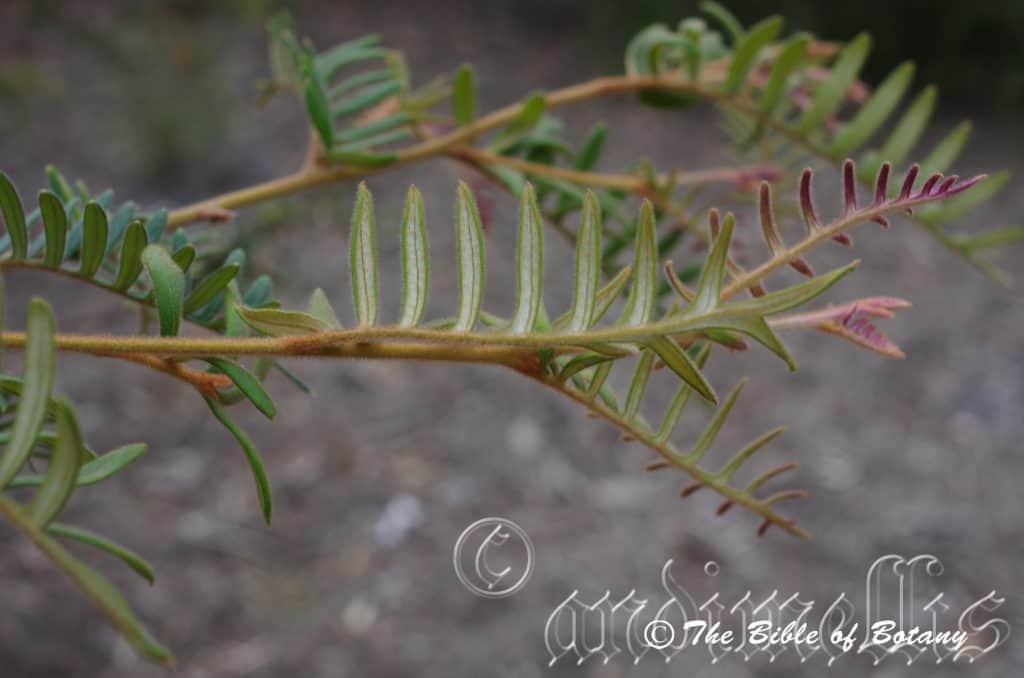
Mount Cootha Botanic Gardens NSW
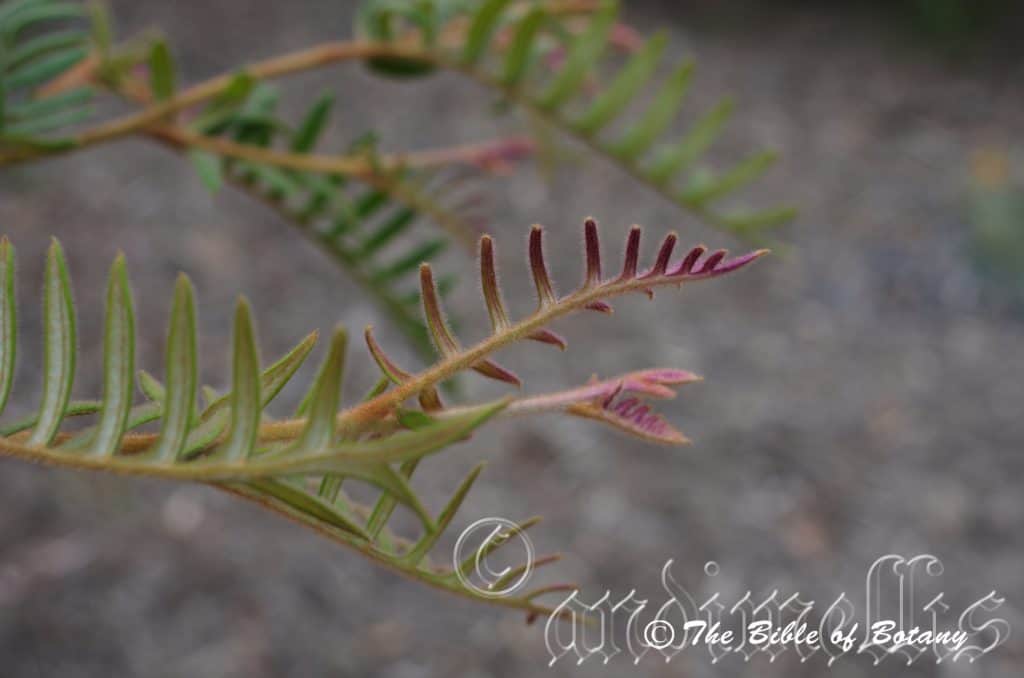
Mount Cootha Botanic Gardens NSW

Mount Cootha Botanic Gardens NSW

Mount Cootha Botanic Gardens NSW

Mount Cootha Botanic Gardens NSW
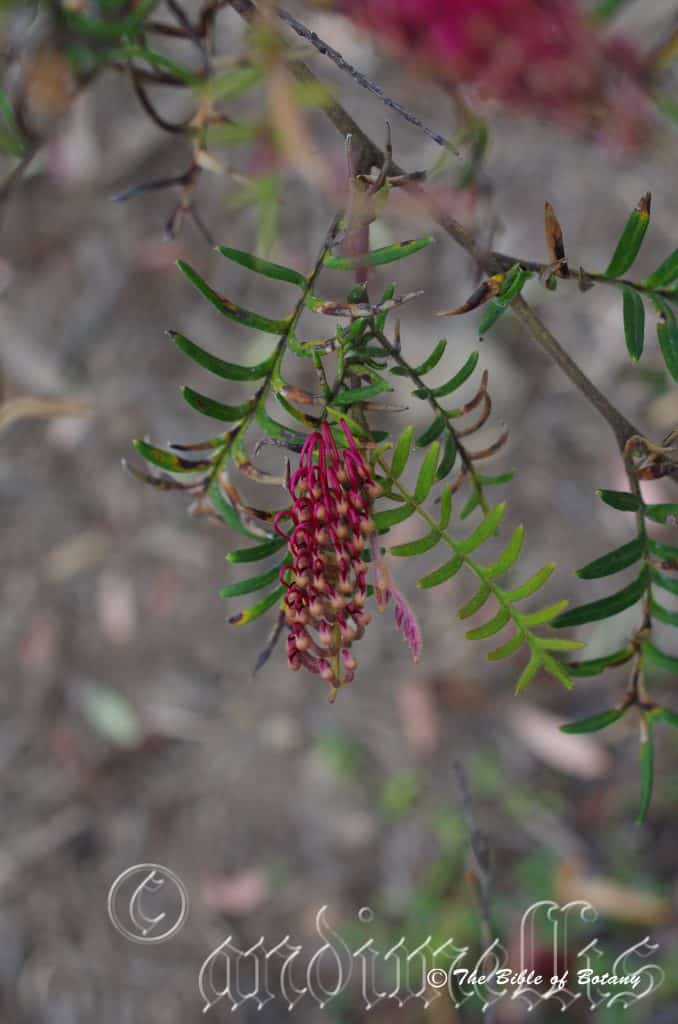
Mount Cootha Botanic Gardens NSW

Mount Cootha Botanic Gardens NSW
Grevillea caleyi
Classification
Class: Magnoliopsida
Order: Proteales
Family: Proteaceae
Genus: Is named in honour of C. F. Greville; 1749-1809, who was a British expert botanist on Algae, a foundation member of the London Horticultural Society and a collector of rare plants.
Species: Is named in honour of George Caley; 1770-1829 who was an English born collector of plants for Sir Joseph Banks in New South Wales.
Sub Species:
Common Name: Cayle’s Grevillea.
Distribution:
Grevillea caleyi is restricted to a small area north of Sydney from Belrose Park to Kairingai Chase National Park in central coastal New South Wales.
https://avh.ala.org.au/occurrences/search?taxa=Grevillea+caleyi#tab_mapView
Habitat:
Grevillea caleyi prefers full sun to light dappled shade. It grows below medium size trees, low trees, or in low dry scrub lands in dry open Eucalyptus forests or open mixed woodlands. The altitude ranges from 150 meters ASL to 400 meters ASL.
The temperatures range from minus 1 degree in August to 36 degrees in January.
The rainfall ranges from lows of 900mm to an average of 1150mm annually.
Soil Requirements:
Grevillea caleyi prefers skeletal rocky or stony soils in shallow depressions on ridges, crevices or crannies where water can lie. The soils are usually derived from partially decomposed or decomposed sandstones. The soils pH ranges from 5.5pH to 6pH are preferred. It does not tolerate water logged soils. Non saline soils to moderately saline soils are tolerated.
Height & Spread:
Wild Plants: 1m to 3 by 1m to 3m.
Characteristics:
Grevillea caleyi’s larger stems are pale grey-brown and glabrous. The smaller stems are golden yellow to yellow-brown. Branchlets are golden yellow and densely covered in white villose hairs so much that they look white.
The deeply divided leaves measure 70mm to 180mm in length by 30mm to 75mm in width overall. The 19 to 36 linear to narrow oblanceolate lobes measure 15mm to 35mm in length by 2mm to 6mm in width. The bases are sessile and truncate while the apexes are acute to obtuse. The discolourous laminas are dull grey-green to deep green and sparsely to moderately covered in rusty-brown tomentose hairs on the upper lamina while the lower laminas are densely covered in rusty-brown villous hairs. The rachises measure 10mm to 15mm in length.
The inflorescence is an erect secund born from the leaf axils. The rachis measures 45mm to 85mm in length. The style and perianth is the most prominent part of the flower. Individual perianths are fawn to brown and are covered in fawn to brown villose hairs externally and are glabrous internally. The perianths measure 10mm to 14mm in length.
The styles are deep bright semi glossy red with a lime-green or yellow swollen stigma that are erect or oblique. The pollen presenter is red or green. The pistils measure 25mm to 38mm in length. The style is glabrous while the ovaries are densely covered in fawn villose hairs. The 4 stamens are sessile. Flowering occurs from August to April.
Grevillea caleyi fruits are an ellipsoidal follicle. The follicles are produced singularly radiating out from rachis. The green follicles are covered in white villose hairs. The follicles turn creamy green to pastel fawn-green with purple-brown to purple longitudinal streaks. The follicles measure 25mm to 48mm in length by 8mm to 20mm in diameter. The oblong to ellipsoidal seeds are pale fawn with a hard testa and obtuse ends. They measure 16mm to 24mm in length by 9mm to 12mm in diameter.
Wildlife:
The dense foliage and proliferation of small flowers is a great attraction and safe zone for smaller honeyeaters like the Silver Eyes, Yellow Face Honeyeater, Brown Honeyeater and the eastern Spinebill. (Acanthorhynchus tenuirostris).
Cultivation:
Grevillea caleyi is an attractive beautiful Grevillea for temperate to subtropical areas in native gardens or in formal English gardens. It is a hemispherical shrub with a neat open appearance so would look great in a formal setting or English style gardens. The foliage can be regularly tip pruned to maintain the bushiness and to promote new growth and flowering. In the garden they will grow from 1.5 meters to 2.5 meters by 1.5 meters to 2.5 meters in diameter when grown in the open.
It is an ideal supplier of nectar for birds over a long period. In Native gardens they can be used for bird attraction.
Garden beds would need to be open with plenty of space between plants to allow air flow as well as to give the branchlets a chance to spread and be appreciated for their unique beauty. Crowding this type of foliage with other plants will see them lose all the effectiveness of the colour and form you require or want. Correct spacing will contrast the foliages better without one overpowering the other. For mass planting space the plants at least 3 meters to 3.5 meter centers if you are considering it for a feature shrub in a bush garden.
The use of annuals helps to attract the viewer to the permanent plants foliage as it is the predominant foliage you want people to notice in the patch. In the case of this Grevillea you could substitute very small Acacia specie, Grevillea specie or native ground covers instead of the native annuals. In addition ensure the annuals are flowering during the winter or spring to keep a continuous range of colour in the garden bed.
Annuals mixed with scattered planting of Grevillea caleyi help to give small gardens depth and make them look larger than what they really are. It works well with Grevillea masonii, Hardenbergia violacea, Hibbertia specie, small Hibiscus and other broad leaf natives half their size. The secret is to use contrasting foliages with the flowers being a bonus.
Propagation:
Seeds: Grevillea caleyi’s seeds need to be treated before sowing. This can be done by placing the seeds into a small calico bag with sharp clean sand and rubbing them to scarify the surface or they can be nicked individually with a knife. Sow the freshly treated seeds directly into a seed raising mix. Cover them with 5mm of fine sand and keep moist not wet. Place the tray in a warm sunny position. When the seedlings are 25mm to 50mm tall, prick them out and plant them into 50mm native tubes using a good organic mix.
Once the seedlings reach 150mm to 200mm in height, nip the tips out before planting them out into their permanent position. For mass plantings plant them at 2 meter to 2.5 meter centers depending on the form, or in rockeries with a much wider spacing it give the arid or escarpment look.
Cuttings: Use 70mm to 100mm long half ripened material when growing from cuttings from the present season’s growth. Take them in mid-autumn or early spring. Remove half the leaves from the bottom section being careful not to tear the bark.
1 Prepare the cutting mix by adding one third sharp clean river sand, one third peat and one third perlite. These ingredients are sterilize,
2 Select good material from non diseased plants,
3 Select semi green stems for cuttings. Look for a stem with two or three nodes,
4 Place the cutting on a flat, hard surface, and make a clean cut down one side of the cutting at the base for 10mm with a sharp sterile knife or razor blade. – This scarification of the node will increase the chances of roots emerging from this spot. Now remove all but one or two the leaves, leaving the apex leaves in tact. If the leaves are very large in proportion to the stem, cut off the apical halves.
5 Fill a saucer with water, and place a little medium strength rooting hormone into another container like a milk bottle top. Dip the node end of the cutting into the water and then into the rooting hormone. Tap off any excess hormone,
6 Use a small dipple stick or old pencil to poke a hole into the soilless potting mix. Ensure the hole is slightly larger than the stem diameter and be careful not to wipe the rooting hormone off the cuttings base, place the cuttings in a pattern ensuring the cuttings are not touching each other,
7 I like to place the pots in Plastic bags to help maintain temperature and moisture. Place in a semi shaded place like under 50mm shade cloth.
8 When the cuttings have struck, open the bag to allow air circulation for a few days to a week,
9 Once hardened off remove the cuttings from the bag and allow to further hardening for a few more days,
10 Transplant into a good potting mix to grow on.
Fertilize using seaweed, fish emulsion or organic chicken pellets soaked in water on an alternate basis. Fertilize every two months until the plants are established then twice annually in early September or March to maintain health, vitality and better flowering. Avoid synthetic fertilizers as they will most likely contain calcium and phosphorous at levels, which are toxic to most Proteaceae.
Further Comments from Readers:
“Hi reader, it seems you use The Bible of Botany a lot. That’s great as we have great pleasure in bringing it to you! It’s a little awkward for us to ask, but our first aim is to purchase land approximately 1,600 hectares to link several parcels of N.P. into one at The Pinnacles NSW Australia, but we need your help. We’re not salespeople. We’re amateur botanists who have dedicated over 30 years to saving the environment in a practical way. We depend on donations to reach our goal. If you donate just $5, the price of your coffee this Sunday, We can help to keep the planet alive in a real way and continue to bring you regular updates and features on Australian plants all in one Botanical Bible. Any support is greatly appreciated. Thank you.”
In the spirit of reconciliation we acknowledge the Bundjalung, Gumbaynggirr and Yaegl and all aboriginal nations throughout Australia and their connections to land, sea and community. We pay our respect to their Elders past, present and future for the pleasures we have gained.
Grevillea calliantha
Classification
Class: Magnoliopsida
Order: Proteales
Family: Proteaceae
Genus: Is named in honour of C. F. Greville; 1749-1809, who was a British expert botanist on Algae, a foundation member of the London Horticultural Society and a collector of rare plants.
Species: From Kallos/Kallis, which is Ancient Greek for beautiful or very beautiful and ántha/ánthos, which are Ancient Greek for the male reproductive organ of a flower or the flower. It refers to the flowers, which are very beautiful.
Sub Species:
Common Name: Apricot Craze or Plum crazy.
Distribution:
Grevillea calliantha is restricted to a small area in the south west of Western Australia around Cataby in the Leda Nature Reserve and Wongongderrah Nature Reserve between Perth and Geraldton.
https://avh.ala.org.au/occurrences/search?taxa=Grevillea+calliantha#tab_mapView
Habitat Aspect Climate:
Grevillea calliantha prefers full sun to dappled shade. It grows on flats, or shallow depressions in wind swept heaths adjacent to dry schlerophyll woodlands or schlerophyll heaths. The altitude ranges from 3 meters ASL to 50 meters ASL.
The temperatures range from 3 degrees in August to 38 degrees in February.
The rainfall ranges from lows of 650mm to an average 950mm annually.
Soil Requirements:
Grevillea calliantha prefers to grow on grey or yellow sands to light fatty clays with gravel over lateritic sandstone or lateritic clays. The soils are usually derived from decomposed sandstones, granites or accumulated sands. The soils pH ranges from 5pH to 5.5pH are preferred. It does not tolerate water logged soils. Non saline soils to moderately saline soils are tolerated.
Height & Spread:
Wild Plants: 0.8m to 2.5m by 2m to 3m.
Characteristics:
Grevillea calliantha’s stems are deep grey slightly glabrous. The branchlets are pale grey and are covered in short white pannate hairs.
The alternate sub pinnatisect leaves measure 40mm to 65mm in length. The linear lobes are deeply dissected once only and measure 10mm to 50mm in length by 1mm to 1.5mm in width. The petiole measures 7mm to 11mm in length and is glabrous. The bases are sessile while the apexes are narrow tapering and ending a short thorn. The concolourous laminas are grey-green and glabrous on the upper lamina and densely covered in white pannate hairs on the lower lamina. The mid vein is prominent on the lower lamina and is visible on the upper lamina. The margins are entire and revolute forming a groove along the mid vein.
The conflorescence of Grevillea calliantha is a second born in pairs or at times threes from the terminals or singularly from the leaf axils. The secunds measure 50mm to 70mm in length. The perianth and style are the most prominent parts of the flower. The individual perianths are pale yellow to yellow-green while the lobes are orange-red, apricot or yellow-orange the limbs. The perianth and lobes are very irregular. The lobes are united. The perianth is sparsely covered in very fine, short, white tomentose hairs and very sparsely covered in long, black hirsute hairs externally and are sparsely covered in biramous hirsute hairs internally. The perianth and lobes measure 8mm to 10mm in length. The pale green pedicels measure 1mm to 2mm in length.
The style is deep burgundy-black or rarely golden-yellow at the base through to the stigma. The stigma is deep burgundy-black adaxially and maroon-red or deep red abaxially or yellow golden while the pollen presenter is yellow. The pistil measures 28mm to 40mm in length. The erect style is glabrous or at times the basal 2mm to 3mm maybe sparsely covered in short biramous hirsute hairs while the pollen presenter is oblique. The ovary is covered in fine, short, white pulverulent hairs. The flowers appear from late July to November.
Grevillea calliantha fruit is an oblong to ellipsoidal follicle. The style is persistent. The dull, green follicles turn brown when ripe and are covered in long caduceous, tomentose or biramous hirsute hairs. The ripe follicles are sparsely covered in viscid glandular hairs and measure 13mm to 18mm in length by 8mm to 13mm in width. The flat ovoidal grey glossy black seeds measure 10mm to 12mm long by 6mm to 7mm wide with a 2mm to 3mm fawn papery wing surrounding the seed.
Wildlife:
Grevillea calliantha is very attractive to all nectar eating honeyeaters.
Cultivation:
Grevillea calliantha has unusual coloured flowers and deserve a place in every western Australian garden in the temperate south east or semi-arid areas in southern Australia. It is small flat topped shrub that is suitable in most small to medium gardens. It is a very reliable and prolific bloomer throughout winter spring and into early summer. As garden subjects they will grow to 1 meter to 2 meters in height by 2 meters to 3.5 meters in diameter in the open when cultivated. It is fast growing, drought resistant and cold tolerant, at least down to temperatures of minus 3 degrees.
3 plants placed on a bend will become a very strong focal point when in flower. Place them in the midground with annuals in front and larger plants behind to make them the focal point. Plants with either small red flowers or white flowers can be used in the foreground while large flowering specie can be placed in the background.
Use plants with pale green leaves and finer leaves in the foreground and ensure that the whole plant is on display from most sections of the garden as the flowers are a real bonus. They can be lightly pruned after flowering and spent flowers should be removed to increase the number of flowers and the flowering season.
There are 2 distinct types of heath lands those that are entirely flat with all small plants with mixed foliages or the windswept headland.
When you design a flat heath garden which this Grevillea is well suited don’t use contours to display the plants as heath lands are almost always flat or have a slight rise. Plants must be planted close together and be short so you can see over the tallest ones with the exception of one or two plants at the most. These will be feature plants. The idea is to achieve a feeling of expansive flatness. This can be achieved with using the Grevillea calliantha’s deeply dissected leaves and having them contrasting with finer or broader pale green or soft grey to glaucous coloured foliages. Use a lot of procumbent plants like Carpobrotus edulis or Hibbertia specie. Mix them with other smaller shrubs so none of them dominate the scene but blend in to give a mosaic of foliage colours that you oversee.
To further enhance the basis of a very unusual rockery or headland heath settings use Grevillea calliantha and prune it into a windswept form. Trees pruned to an interesting shape even on a large, long dry gentle sloping bank look very affective. They need to be trained to grow in one direction so that a strong wind swept heath land is created. If this is the theme then the windward side effect should be trimmed very low and allow it to grow out and taller on the leeward side to 1.5 meters in height. On the windward side use fine leaf plants smaller or equal in height. On the leeward side plants can be arranged so they become taller as they progress further away from the pruned tree. A strong contrast in foliages can be achieved with a wind turbulent affect by planting prostrate Correa specie, Hibbertia specie, Actinotis helianthi or Grevillea thelemanniana close to the pruned trees. This would mean planting Grevillea calliantha to the far left or right of the bed or bank.
Another method to achieve the headland heath is to plant small fine leaf plants on the windward side increasing their height over a few meters as you approach the leeward side to 1.5 meters in height. Suddenly plant plants like the Correa reflexa next to these leeward plants and again over the rest of the bed increase the height of the shrubs from the prostrate plants to taller shrubs of 1 meter or even 1.2 meters. Make sure the plants immediately adjacent to the Grevillea have fine pale green to fine mid green foliages for the greatest impact. Further out begin to mix fine leaf shrubs with broad leaf shrubs and use the different colour foliages in an uncontrolled mosaic.
When mass planting Grevillea calliantha use curves and irregular patterns so they can be viewed from different angles around the garden. The flowers really are a highlight so place them where it is highly visible. They look great either from a raised garden bed or set below a path so that you are looking down on the plants. Plant them at 3 meter centers so that the plants can spread out to their full potential.
Propagation:
Seeds: Grevillea calliantha seeds can be sown directly into a seed raising mix. Cover them with 5mm of fine sand and keep moist not wet. Place the tray in a warm sunny position. When the seedlings are 25mm to 50mm tall, prick them out and plant them into 50mm native tubes using a good organic mix.
Once the seedlings reach 150mm to 200mm in height, nip the tips out before planting them out into their permanent position.
Cuttings: Use 70mm to 100mm long half ripened material when growing from cuttings from the present season’s growth. Take them in mid-autumn or early spring. Remove half the leaves from the bottom section being careful not to tear the bark.
1 Prepare the cutting mix by adding one third sharp clean river sand, one third peat and one third perlite. These ingredients are sterilize,
2 Select good material from non diseased plants,
3 Select semi green stems for cuttings. Look for a stem with two or three nodes,
4 Place the cutting on a flat, hard surface, and make a clean cut down one side of the cutting at the base for 10mm with a sharp sterile knife or razor blade. – This scarification of the node will increase the chances of roots emerging from this spot. Now remove all but one or two the leaves, leaving the apex leaves in tact. If the leaves are very large in proportion to the stem, cut off the apical halves.
5 Fill a saucer with water, and place a little medium strength rooting hormone into another container like a milk bottle top. Dip the node end of the cutting into the water and then into the rooting hormone. Tap off any excess hormone,
6 Use a small dipple stick or old pencil to poke a hole into the soilless potting mix. Ensure the hole is slightly larger than the stem diameter and be careful not to wipe the rooting hormone off the cuttings base, place the cuttings in a pattern ensuring the cuttings are not touching each other,
7 I like to place the pots in Plastic bags to help maintain temperature and moisture. Place in a semi shaded place like under 50mm shade cloth.
8 When the cuttings have struck, open the bag to allow air circulation for a few days to a week,
9 Once hardened off remove the cuttings from the bag and allow to further hardening for a few more days,
10 Transplant into a good potting mix to grow on.
Fertilize using seaweed, fish emulsion or organic chicken pellets soaked in water on an alternate basis. Fertilize every two months until the plants are established then twice annually in early September or March to maintain health, vitality and better flowering. Avoid synthetic fertilizers as they will most likely contain calcium and phosphorous at levels, which are toxic to most Proteaceae.
Further Comments from Readers:
“Hi reader, it seems you use The Bible of Botany a lot. That’s great as we have great pleasure in bringing it to you! It’s a little awkward for us to ask, but our first aim is to purchase land approximately 1,600 hectares to link several parcels of N.P. into one at The Pinnacles NSW Australia, but we need your help. We’re not salespeople. We’re amateur botanists who have dedicated over 30 years to saving the environment in a practical way. We depend on donations to reach our goal. If you donate just $5, the price of your coffee this Sunday, We can help to keep the planet alive in a real way and continue to bring you regular updates and features on Australian plants all in one Botanical Bible. Any support is greatly appreciated. Thank you.”
In the spirit of reconciliation we acknowledge the Bundjalung, Gumbaynggirr and Yaegl and all aboriginal nations throughout Australia and their connections to land, sea and community. We pay our respect to their Elders past, present and future for the pleasures we have gained.
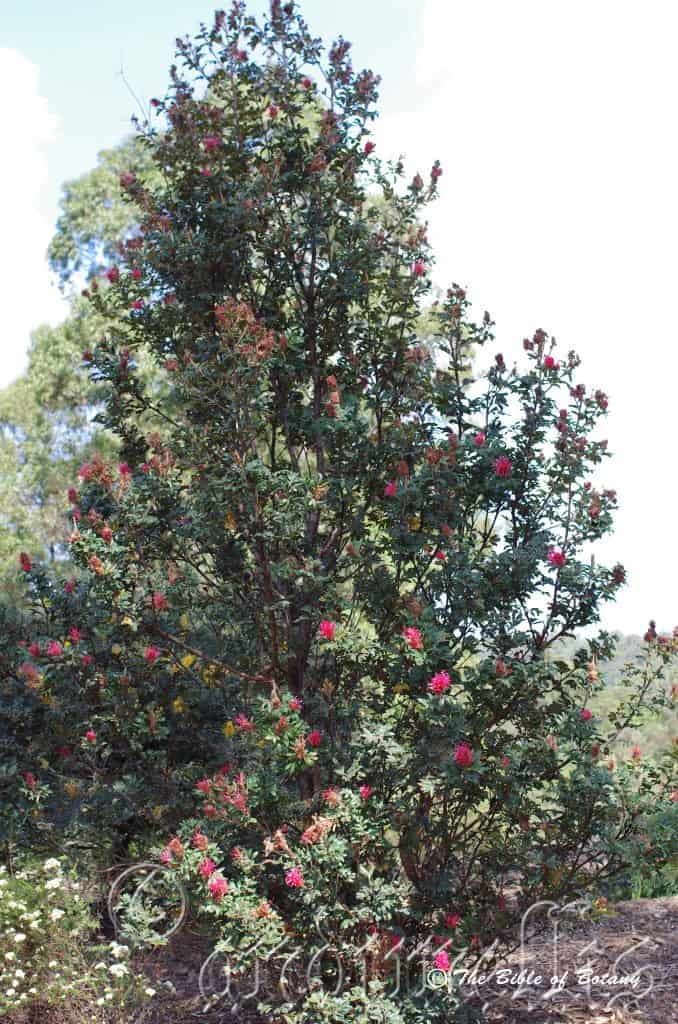
Mount Cootha Botanic Gardens NSW
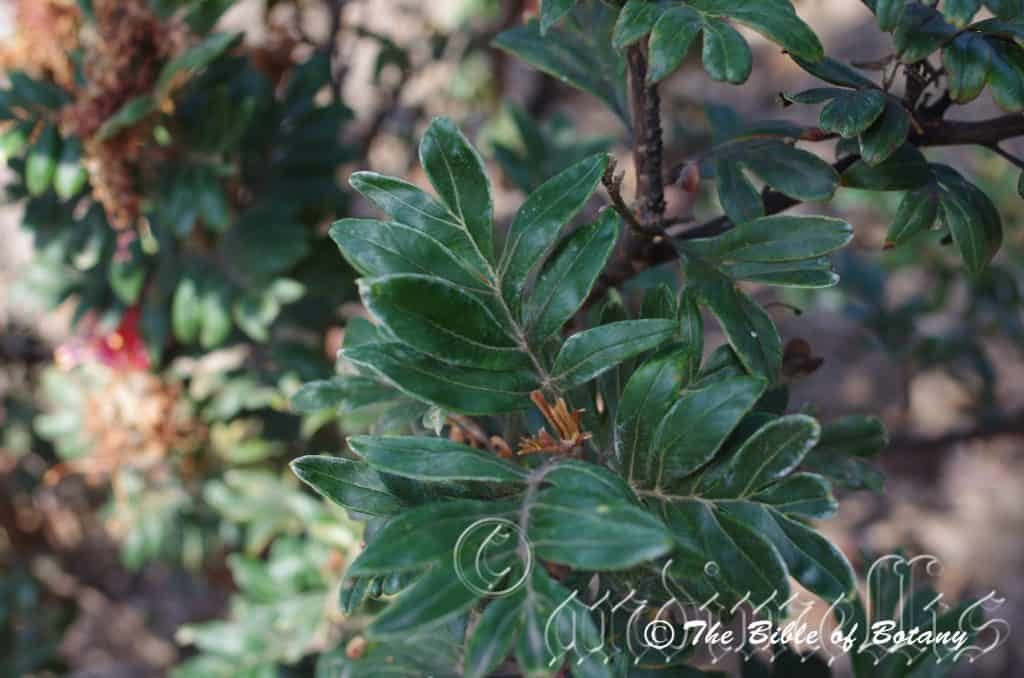
Mount Cootha Botanic Gardens NSW
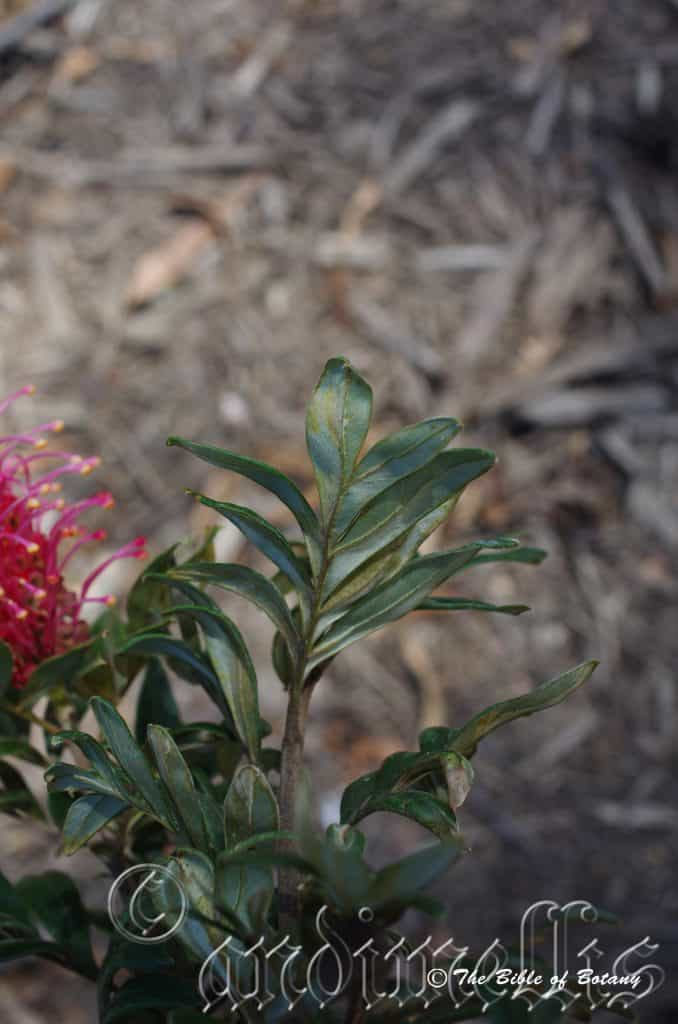
Mount Cootha Botanic Gardens NSW

Mount Cootha Botanic Gardens NSW

Mount Cootha Botanic Gardens NSW
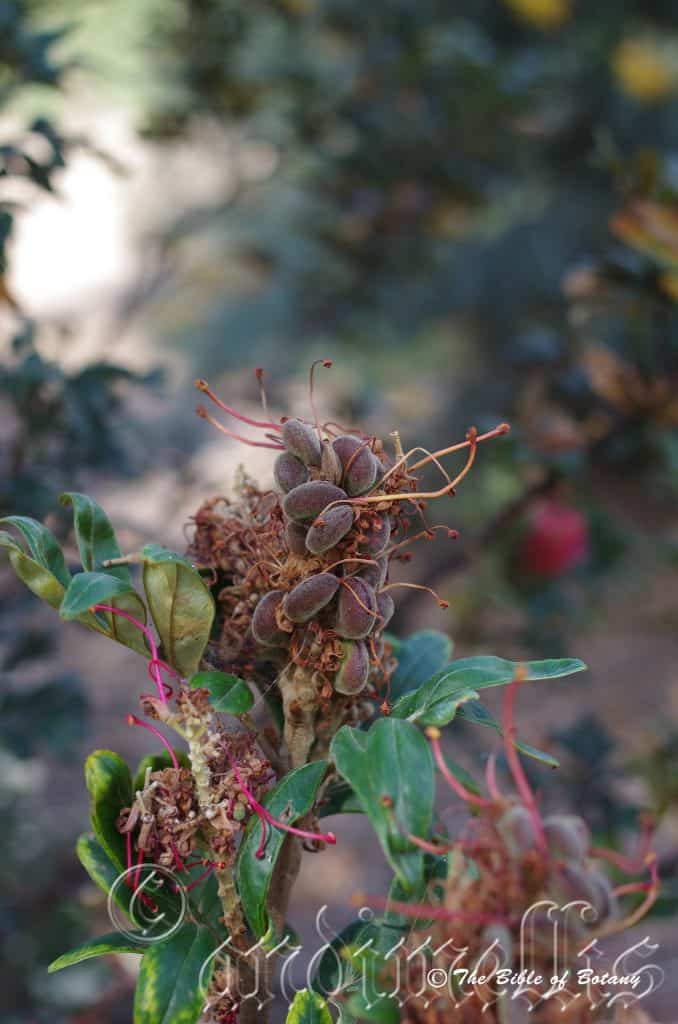
Mount Cootha Botanic Gardens NSW
Grevillea candelabroides
Classification:
Class: Magnoliopsida
Order: Proteales
Family: Proteaceae
Subfamily:
Genus: Is named in honour of C. F. Greville; 1749-1809, who was a British expert botanist on Algae, a foundation member of the London Horticultural Society and a collector of rare plants.
Species: From Cand?l?brum, which is Latin for a branched candle stick holder and Eîdos/Oides, which is Ancient Greek for alike or similar to. It refers to plants, which take the form of a candle stick holder or candelabrum.
Sub Species:
Common Name: Cream Candlestick Grevillea.
Distribution:
Grevillea candelabroides is restricted to an area close to the coast in southern coastal Western Australia from Nanga on Shark Bay Peninsular to Coorow and Eneaba.
https://avh.ala.org.au/occurrences/search?taxa=Grevillea+candelabroides#tab_mapView
Habitat Aspect Climate:
Grevillea candelabroides prefers full sun to dappled shade. It grows on flats and gentle slopes in dry Acacia woodlands, schlerophyll scrublands, and open woodlands or in dry heaths. It grows in shallow depressions where moisture is retained for longer periods. The altitude ranges from near sea level to 1350 meters ASL.
The temperatures range from 7 degrees in August to 38 degrees in February.
The rainfall ranges from lows of 150mm to an average 500mm annually.
Soil Requirements:
Grevillea candelabroides prefers to grow on coarse sands to light fatty clays. The soils are usually derived from partially decomposed or decomposed granites or at times accumulated beach sands back from the coast. The soils pH ranges from 5.5pH to 6.5pH are preferred. It does not tolerate water logged soils. Non saline soils to moderately saline soils are tolerated.
Height & Spread:
Wild Plants: 1m to 5m by 3m to 5m.
Characteristics:
The trunk is pale brown, glabrous and semi glossy. The glabrous stems are pale grey turning to red-brown or an olive–yellow as they approach the apex of the branchlets.
The alternate sub pinnatisect leaves have 6 to 18 ascending linear lobes which measure 120mm to 200mm in length. The lobes measure 50mm to 160mm in length by 0.8mm to 1mm in width. The glabrous petiole measures 14mm to 25mm in length. The bases are sessile while the apexes are tapering to a short point. The concolourous laminas are grey-green and glabrous to sparsely covered in white hirsute hairs on the upper lamina while the lower lamina is covered in white hirsute hairs. The mid vein is prominent on the lower lamina and is not clearly visible on the upper lamina. The margins are entire and strongly revolute forming a groove along the midvein.
The inflorescence is a cylindrical raceme which is born terminally. The 4 to 10 branched racemes measure 90mm to 240mm in length. The perianth and style are the most prominent parts of the flower. The individual perianths are white to cream from the base through to the limbs. The perianth is glabrous externally and internally. The perianth and lobes measure 6mm to 8mm in length. The lobes are free and joined. The perianth and lobes are very irregular. The glabrous pedicels measure 4mm to 6mm in length.
The erect glabrous style is cream at the base through to the stigma. The pistil measures 11mm to 14mm in length. The ovary is glabrous. The sweetly scented flowers appear from 8 weeks from early November to early February.
Grevillea candelabroides’ fruit is an ovoid to ovoid-ellipsoidal follicle. The style is persistent on the follicle. The follicles are dull green and turn grey on ripening. It is glabrous with fine farinaceous or striated markings. The follicles measure 13mm to 15mm in length by 7.5mm to 10mm in width. The flat grey seeds measure 10mm to 12mm in length by 4.5mm to 7mm in width. There is a 1.5mm to 2mm fawn papery wing surrounding the seed. The follicles are viscid when green.
Wildlife:
Grevillea candelabroides is very attractive to all nectar eating honeyeaters.
Cultivation:
Grevillea candelabroides is a very prolific flowering small tree or large shrub for most gardens in semi-arid, temperate and dry subtropical zones. As garden subjects they will grow from 4 meters to 6 meters in height by 4 meters to 6 meters in diameter when cultivated. They can be pruned to maintain a large shrub to 4 meters in height by 4 meters in diameter. It is fast growing, drought tolerant resistant and cold tolerant, at least down to temperatures of 1 degree. They can be utilized on the sunny side of sheds to help cool them down or as a small feature tree.
In Native gardens they can be used for attracting larger and more aggressive birds like silver eyes or butterflies, native bees, native flies or native beetles. It is most suitable for used along sandy banks and for along drive ways, screens, wind breaks or shelter belts for small native animals. The dense bushy crown, with the flowers placed terminally makes a great display.
The trees would make very good accent trees in front of low set commercial or industrial sheds where they will break up hard rigid architectural lines and give warmth and breadth to a building quickly while slower more permanent plants take hold. In front of high rise buildings they give balance especially where they could be grown in curves meandering to the entry doors or for something different used from the front of the path and meander back to the far corners with shrubs or flowers planted between the trees and the building and the trees and the nature strip.
Try using Grevillea candelabroides as the feature in a formal garden bed in the middle of a traffic island or between two driveways. Plant them in small groups of 2, 3, or 4 leaving one to grow tall and trimming the others at heights for something different. If it is the feature trees their foliage will contrast beautifully, against any broader leaf shrubs, especially those with red flowers. The cream and red flowers together from early summer to late summer would be a wonderful additional contrast.
Propagation:
Seeds: Grevillea candelabroides seeds can be sown directly into a seed raising mix. Cover them with 5mm of fine sand and keep moist not wet. Place the tray in a warm sunny position. When the seedlings are 25mm to 50mm tall, prick them out and plant them into 50mm native tubes using a good organic mix.
Once the seedlings reach 150mm to 200mm in height, nip the tips out before planting them out into their permanent position. For mass plantings plant them at 2 meter to 2.5 meter centers depending on the form, or in rockeries with a much wider spacing it give the arid or escarpment look.
Cuttings: Use 70mm to 100mm long half ripened material when growing from cuttings from the present season’s growth. Take them in mid-autumn or early spring. Remove half the leaves from the bottom section being careful not to tear the bark.
1 Prepare the cutting mix by adding one third sharp clean river sand, one third peat and one third perlite. These ingredients are sterilize,
2 Select good material from non diseased plants,
3 Select semi green stems for cuttings. Look for a stem with two or three nodes,
4 Place the cutting on a flat, hard surface, and make a clean cut down one side of the cutting at the base for 10mm with a sharp sterile knife or razor blade. – This scarification of the node will increase the chances of roots emerging from this spot. Now remove all but one or two the leaves, leaving the apex leaves in tact. If the leaves are very large in proportion to the stem, cut off the apical halves.
5 Fill a saucer with water, and place a little medium strength rooting hormone into another container like a milk bottle top. Dip the node end of the cutting into the water and then into the rooting hormone. Tap off any excess hormone,
6 Use a small dipple stick or old pencil to poke a hole into the soilless potting mix. Ensure the hole is slightly larger than the stem diameter and be careful not to wipe the rooting hormone off the cuttings base, place the cuttings in a pattern ensuring the cuttings are not touching each other,
7 I like to place the pots in Plastic bags to help maintain temperature and moisture. Place in a semi shaded place like under 50mm shade cloth.
8 When the cuttings have struck, open the bag to allow air circulation for a few days to a week,
9 Once hardened off remove the cuttings from the bag and allow to further hardening for a few more days,
10 Transplant into a good potting mix to grow on.
Fertilize using seaweed, fish emulsion or organic chicken pellets soaked in water on an alternate basis. Fertilize every two months until the plants are established then twice annually in early September or March to maintain health, vitality and better flowering. Avoid synthetic fertilizers as they will most likely contain calcium and phosphorous at levels, which are toxic to most Proteaceae.
Further Comments from Readers:
“Hi reader, it seems you use The Bible of Botany a lot. That’s great as we have great pleasure in bringing it to you! It’s a little awkward for us to ask, but our first aim is to purchase land approximately 1,600 hectares to link several parcels of N.P. into one at The Pinnacles NSW Australia, but we need your help. We’re not salespeople. We’re amateur botanists who have dedicated over 30 years to saving the environment in a practical way. We depend on donations to reach our goal. If you donate just $5, the price of your coffee this Sunday, We can help to keep the planet alive in a real way and continue to bring you regular updates and features on Australian plants all in one Botanical Bible. Any support is greatly appreciated. Thank you.”
In the spirit of reconciliation we acknowledge the Bundjalung, Gumbaynggirr and Yaegl and all aboriginal nations throughout Australia and their connections to land, sea and community. We pay our respect to their Elders past, present and future for the pleasures we have gained.
Grevillea capitellata
Classification:
Class: Magnoliopsida
Order: Proteales
Family: Proteaceae
Genus: Is named in honour of C. F. Greville; 1749-1809, who was a British expert botanist on Algae, a foundation member of the London Horticultural Society and a collector of rare plants.
Species: From Cand?l?brum, which is Latin for a branched candle stick holder and Eîdos/Oides, which is Ancient Greek for alike or similar to. It refers to plants, which take the form of a candle stick holder or candelabrum.
Sub Species:
Common Name: Swamp Grevillea.
Distribution:
Grevillea capitellata is restricted to a small area south from Sydney to the Illawarra district in New South Wales.
https://avh.ala.org.au/occurrences/search?taxa=Grevillea+capitella#tab_mapView
Habitat Aspect Climate:
Grevillea capitellata prefers full sun to light dappled shade. It grows below medium size trees, low trees, or in poorly drained depressions, swamp margins, or moist crevices where sand and forest litter accumulates in open woodlands. The altitude ranges from near sea level to 150 meters ASL.
The temperatures range from minus 2 degree in August to 33 degrees in January.
The rainfall ranges from lows of 750mm to an average of 1150mm annually.
Soil Requirements:
Grevillea capitellata prefers skeletal to shallow, red sandy soils over sandstone. The soils are usually derived from decomposed or partially decomposed sandstones. The soils pH ranges from 5.5pH to 6.5pH. It does not tolerate water logged soils. Non saline soils to moderately saline soils are tolerated.
Height & Spread:
Wild Plants: 0.3m to 0.5 by 0.8m to 1.2m.
Characteristics:
Grevillea capitellata’s larger stems are pale grey-brown. Branchlets are a creamy fawn to pale grey colour and densely covered in white to fawn and khaki tomentose to villous hairs.
The simple narrow elliptical to narrow oblong to lanceolate leaves measure 20mm to 90mm in length by 2mm to 9mm in width. The petiole measures 2mm to 5mm in length. The bases are cuneate while the apexes are narrowly acute. The discolourous laminas are dull to semi glossy pale green to pale grass-green and are sparsely covered in small punctate dots on the upper lamina while the lower lamina is moderately covered in fawn to khaki sub sericeous to short villous hairs.
The acroscopic conflorescence of Grevillea capitellata is an erect, globose to broadly secunds born terminally or from the leaf axils. The rachis measures 7mm to 18mm in length. The style and perianth are the most prominent part of the flower. Individual perianths are a deep crimson to deep maroon almost black and covered in white sub sericeous externally while the inner surface is covered in white hirsute hairs while the lobes are covered in white tomentose to villous hairs externally and covered in white hirsute hairs internally. The perianth and lobes are irregular while the lobes are united. The perianths measure 2mm to 3mm in length while the lobes measure 4mm to 5mm in length. The peduncles measure 1.5mm to 3mm in length.
The deep maroon styles curve strongly towards the apexes. The stigmas pollen presenter is oblique. The style is sparsely covered in minute papillate hairs. The pistil measures 10mm to 12mm in length. The ovary is sessile and glabrous while the style is glabrous except for the apical 2mm to 3mm which is covered in short pilose hairs. The flowers appear from July to December.
Grevillea capitellata fruits are narrow, ovoidal, and glabrous. The follicles are produced singularly, radiating out from rachis. The green follicles turn grey-brown when ripe while the style is persistent. They measure 15mm to 18mm in length.
Wildlife:
Grevillea capitellata’s wildlife is unknown to the author.
Cultivation:
Grevillea capitellata is a beautiful Grevillea for temperate to cool subtropical areas in native gardens where sandy poorly drained soils occur. It is a broad hemispherical shrub with a very dense neat appearance so would look great in a formal setting or English style gardens. The foliage can be regularly tip pruned to promote new growth and flowering.
A bend in a path can be broken up by placing them at the bend. Place them at the end of the path on the lower side so any water runoff will lie around their roots. Place taller growing plants at the back that have deep green leaves and white flowers or plants that flower at a different times.
This is an ideal shrub for a heath garden or placed amongst large rocks and boulders or adjacent to tree stumps or old roots it is small enough and dainty enough to contrast against the harsh bold lines of these items yet the leaves are large enough not to be dwarfed or overpowered.
When you design a flat heath garden and this Grevillea is most desirable as a heath plant either used as for its contrasting foliage to give strength against the finer foliages strap leaves or broader foliage plants or as the main feature plants in a miniature heath setting. Don’t use contours to display the plants as heath lands are almost always flat or have a slight rise. In a heath garden setting they will grow 300mm to 500mm in height by 800mm to 1200mm in diameter and form a beautiful rounded mound. It is this perfect mound shape that gives them the advantage over almost every other plant for a low feature plant in a heath garden. Plants must be planted close together and be short so you can see over the tallest ones with the exception of one or two plants at the most. These will be feature plants. They can be a standalone feature plant in a small heath garden or used with some taller shrubs in a large heath setting. Either way Grevillea capitellata is a near perfect choice to start with. The idea is to achieve a feeling of expansive flatness. This can be achieved with using it with Correa refelxa’s deep green ovate leaves, Actinotis helianthi’s beautiful grey soft velvety foliage or Grevillea thelemanniana’s bright green feathery foliage or Melaleuca thymifolia all have distinctive features with great contrasts. Small clump plants like Hibbertia procumbens or Hibertia linarifolia can both be used to create a dramatic affect. Mix them with other smaller shrubs so none of them dominate the scene but blend in to give a mosaic of foliage colours that you oversee.
Propagation:
Seeds: The fresh seeds can be sown directly into a seed raising mix. Cover them with 5mm of fine sand and keep moist not wet. Place the tray in a warm sunny position. When the seedlings are 25mm to 50mm tall, prick them out and plant them into 50mm native tubes using a good organic mix.
Once the seedlings reach 150mm to 200mm in height, nip the tips out before planting them out into their permanent position. When mass planting in raised garden beds or a large bog garden space the plants at 1 meter to 1.5 meters should be considered. If you are using them amongst rocks or around the small bog garden plant them sparingly, so not to make the area look cluttered. 3 or 4 in an area of 50 square meters would be ample. 3 plants separately planted or plant 2 close together and separate the other 2 to give width and depth where you want it.
Cuttings: Use 70mm to 100mm long half ripened material when growing from cuttings from the present season’s growth. Take them in mid-autumn or early spring. Remove half the leaves from the bottom section being careful not to tear the bark.
1 Prepare the cutting mix by adding one third sharp clean river sand, one third peat and one third perlite. These ingredients are sterilize,
2 Select good material from non diseased plants,
3 Select semi green stems for cuttings. Look for a stem with two or three nodes,
4 Place the cutting on a flat, hard surface, and make a clean cut down one side of the cutting at the base for 10mm with a sharp sterile knife or razor blade. – This scarification of the node will increase the chances of roots emerging from this spot. Now remove all but one or two the leaves, leaving the apex leaves in tact. If the leaves are very large in proportion to the stem, cut off the apical halves.
5 Fill a saucer with water, and place a little medium strength rooting hormone into another container like a milk bottle top. Dip the node end of the cutting into the water and then into the rooting hormone. Tap off any excess hormone,
6 Use a small dipple stick or old pencil to poke a hole into the soilless potting mix. Ensure the hole is slightly larger than the stem diameter and be careful not to wipe the rooting hormone off the cuttings base, place the cuttings in a pattern ensuring the cuttings are not touching each other,
7 I like to place the pots in Plastic bags to help maintain temperature and moisture. Place in a semi shaded place like under 50mm shade cloth.
8 When the cuttings have struck, open the bag to allow air circulation for a few days to a week,
9 Once hardened off remove the cuttings from the bag and allow to further hardening for a few more days,
10 Transplant into a good potting mix to grow on.
Fertilize using seaweed, fish emulsion or organic chicken pellets soaked in water on an alternate basis. Fertilize every two months until the plants are established then twice annually in early September or March to maintain health, vitality and better flowering. Avoid synthetic fertilizers as they will most likely contain calcium and phosphorous at levels, which are toxic to most Proteaceae.
Further Comments from Readers:
“Hi reader, it seems you use The Bible of Botany a lot. That’s great as we have great pleasure in bringing it to you! It’s a little awkward for us to ask, but our first aim is to purchase land approximately 1,600 hectares to link several parcels of N.P. into one at The Pinnacles NSW Australia, but we need your help. We’re not salespeople. We’re amateur botanists who have dedicated over 30 years to saving the environment in a practical way. We depend on donations to reach our goal. If you donate just $5, the price of your coffee this Sunday, We can help to keep the planet alive in a real way and continue to bring you regular updates and features on Australian plants all in one Botanical Bible. Any support is greatly appreciated. Thank you.”
In the spirit of reconciliation we acknowledge the Bundjalung, Gumbaynggirr and Yaegl and all aboriginal nations throughout Australia and their connections to land, sea and community. We pay our respect to their Elders past, present and future for the pleasures we have gained.
Grevillea centristigma
Classification:
Class: Magnoliopsida
Order: Proteales
Family: Proteaceae
Genus: Is named in honour of C. F. Greville; 1749-1809, who was a British expert botanist on Algae, a foundation member of the London Horticultural Society and a collector of rare plants.
Species: From Centris, which is Latin for in the middle and Stígma/Stízein, which is Ancient Greek for the receptive part of the female reproductive organ, which receives the pollen. It refers to stigmas, which are centrally positioned on the style.
Sub Species:
Common Name: Bearded Leaf Grevillea.
Distribution:
Grevillea centristigma is restricted to a small area in the south west corner of Western Australia south from the Swan river Coastal plain to D’entrecasteaux National Park.
https://avh.ala.org.au/occurrences/search?taxa=Grevillea+centristigma#tab_mapView
Habitat:
Grevillea centristigma prefers full sun to dappled shade. It grows in open shrubby eucalypt woodland or forest. The altitude ranges from near sea level to 350 meters ASL.
The temperatures range from 3 degrees in August to 36 degrees in February.
The rainfalls range from lows of 450mm to an average 1500mm annually.
Soil Requirements:
Grevillea centristigma prefers stony, gravelly or rocky clays or clay-loams. The soils are usually derived from decomposed or partially decomposed granites or at times sandstone. The soils pH ranges from 5.5pH to 6pH. It does not tolerate water logged soils. Non saline soils to moderately saline soils are tolerated.
Height & Spread:
Wild Plants: 0.2m to 1m by 0.5m to 1m.
Characteristics:
Grevillea centristigma’s stems are fawn to pale brown and glabrous. The smaller blue-green to pale green stems and branchlets are densely covered in long white pilose hairs.
The simple leaves are crowded near the ends of the stems. It is elliptical to obovate and measure 20mm to 65mm in length by 7mm to 20mm in width. The petiole is densely covered in long white pilose hairs and measures 6mm to 9mm in length and is glabrous. The bases are cuneate while the apexes are broad acute. The discolourous laminas are pale green to pale bluish-green, semi glossy and sparsely covered in long white pilose to velutinous hairs on the upper lamina while the lower lamina is paler and very sparsely covered in long white pilose to velutinous hairs. The upper laminas are convex while the margins are entire and densely covered in long white pilose to velutinous ciliate hairs. The mid vein is slightly prominent on the lower lamina and is barely visible on the upper lamina.
The adaxially acroscopic conflorescence of Grevillea centristigma is a short simple, erect to decurve, secund, umbelloid which is born from the terminal on short lateral branchlets. There are 5 to 9 individual flowers on a secund. The perianth and style are the most prominent parts of the flower. The individual perianths are a bright lemon to bright yellow from the base through to the variable limbs. The perianth is very irregular and is sparsely covered in white puberulent to pilose hairs externally and is covered in white hirsute hairs internally. The perianths measure 1.6mm to 2mm in length while the united lobes measure 3.5mm to 4mm in length. The rachises is covered in white villous hairs and measure 1mm to 2mm in length.
There are 4 stamens are reddish-yellow. The style is bright yellow-orange to deep yellow at the base through to the red or orange-red stigma. The style is sparsely covered in yellowish villous hairs on the basal half and is glabrous on the apical half. The lateral pollen presenter is bright lemon, bright yellow, a bright pale yellow-orange or scarlet red. The pistils measure 6mm to 8mm in length. The erect style is glabrous very sparsely covered in short grey hirsute hairs. The stipitate ovary is covered in white villous hairs. The flowers appear from July to November.
Grevillea centristigma’s fruit is an ovoid follicle. The style is persistent. The green follicles are covered in long, white, puberulent hairs, are longitudinally ribbed and turn grey when ripe. The non-viscid follicles measure 12mm to 15mm by 8mm to 10mm in width.
Wildlife:
Grevillea centristigma is very attractive to all smaller nectar feeding butterflies.
Cultivation:
Grevillea centristigma is a very prolific flowering small shrub for most gardens in semi-arid, temperate and subtropical zones. It is a very reliable and prolific bloomer, with its flowers contrasting beautifully with its pilose leaves. As garden subjects they will grow from 0.5 meters to 1.2 meters in height by 1 meter to 1.5 meters in diameter when cultivated in the open. It is fast growing, drought tolerant resistant and only slightly cold tolerant, at least down to temperatures of 1 degree.
It is most suitable for use around swimming pools, sunny courtyards, besides pathways or driveways, and rockeries where adequate soil moisture is available.
Because of their small size, beautiful dense foliage they can make a great contribution around fish and frog ponds or rockeries. Mix them with short strap leaf plants or other very small clumpy annuals leaving space between them so you can see the rocks, logs or other features.
Crowding this type of foliage with other plants sees them lose all the effectiveness of their original form. Correct spacing will contrast the foliages better without one over powering the other. When mass planting space the plants at least 1 meter to 1.5 meter centers should be considered. If you are using them amongst rocks or around the small wet heath land garden plant them far enough apart to allow them to fully develop but close enough that the surrounding plants will just touch the outer leaves. 4 or 5 in an area of 80 square meters would be ample. 4 plants separately planted or plant 2 close together and separate the other 3 to give width and depth where you want it.
The use of annuals helps to attract the viewer to the permanent plants foliage as it is the predominant foliage patch in sight. In addition most annuals flower when this Grevillea specie is resting during the summer and autumn. Annuals mixed with Grevillea centristigma help to give small gardens depth and make them look larger than what they really are. It works well with Grevillea masonii other Grevillea specie of similar size but contrasting foliages and interesting flowers must be considered.
Place them near old stumps and roots to make the stumps or roots look larger. Select an area of ground and let your hair down and be imaginative. This is one plant that may just change your life with art in the garden.
Propagation:
Seeds: Grevillea centristigma seeds can be sown directly into a seed raising mix. Cover them with 5mm of fine sand and keep moist not wet. Place the tray in a warm sunny position. When the seedlings are 25mm to 50mm tall, prick them out and plant them into 50mm native tubes using a good organic mix.
Once the seedlings reach 150mm to 200mm in height, nip the tips out before planting them out into their permanent position.
Cuttings: Use 70mm to 100mm long half ripened material when growing from cuttings from the present season’s growth. Take them in mid-autumn or early spring. Remove half the leaves from the bottom section being careful not to tear the bark.
1 Prepare the cutting mix by adding one third sharp clean river sand, one third peat and one third perlite. These ingredients are sterilize,
2 Select good material from non diseased plants,
3 Select semi green stems for cuttings. Look for a stem with two or three nodes,
4 Place the cutting on a flat, hard surface, and make a clean cut down one side of the cutting at the base for 10mm with a sharp sterile knife or razor blade. – This scarification of the node will increase the chances of roots emerging from this spot. Now remove all but one or two the leaves, leaving the apex leaves in tact. If the leaves are very large in proportion to the stem, cut off the apical halves.
5 Fill a saucer with water, and place a little medium strength rooting hormone into another container like a milk bottle top. Dip the node end of the cutting into the water and then into the rooting hormone. Tap off any excess hormone,
6 Use a small dipple stick or old pencil to poke a hole into the soilless potting mix. Ensure the hole is slightly larger than the stem diameter and be careful not to wipe the rooting hormone off the cuttings base, place the cuttings in a pattern ensuring the cuttings are not touching each other,
7 I like to place the pots in Plastic bags to help maintain temperature and moisture. Place in a semi shaded place like under 50mm shade cloth.
8 When the cuttings have struck, open the bag to allow air circulation for a few days to a week,
9 Once hardened off remove the cuttings from the bag and allow to further hardening for a few more days,
10 Transplant into a good potting mix to grow on.
Fertilize using seaweed, fish emulsion or organic chicken pellets soaked in water on an alternate basis. Fertilize every two months until the plants are established then twice annually in early September or March to maintain health, vitality and better flowering. Avoid synthetic fertilizers as they will most likely contain calcium and phosphorous at levels, which are toxic to most Proteaceae.
Further Comments from Readers:
“Hi reader, it seems you use The Bible of Botany a lot. That’s great as we have great pleasure in bringing it to you! It’s a little awkward for us to ask, but our first aim is to purchase land approximately 1,600 hectares to link several parcels of N.P. into one at The Pinnacles NSW Australia, but we need your help. We’re not salespeople. We’re amateur botanists who have dedicated over 30 years to saving the environment in a practical way. We depend on donations to reach our goal. If you donate just $5, the price of your coffee this Sunday, We can help to keep the planet alive in a real way and continue to bring you regular updates and features on Australian plants all in one Botanical Bible. Any support is greatly appreciated. Thank you.”
In the spirit of reconciliation we acknowledge the Bundjalung, Gumbaynggirr and Yaegl and all aboriginal nations throughout Australia and their connections to land, sea and community. We pay our respect to their Elders past, present and future for the pleasures we have gained.
Grevillea crithmifolia
Classification:
Class: Magnoliopsida
Order: Proteales
Family: Proteaceae
Genus: Is named in honour of C. F. Greville; 1749-1809, who was a British expert botanist on Algae, a foundation member of the London Horticultural Society and a collector of rare plants.
Species: From Centris, which is Latin for in the middle and Stígma/Stízein, which is Ancient Greek for the receptive part of the female reproductive organ, which receives the pollen. It refers to stigmas, which are centrally positioned on the style.
Common Name:
Distribution:
Grevillea crithmifolia is restricted to a small area in Western Australia along the coast south from Jurien Bay in the north to Bunbury.
https://avh.ala.org.au/occurrences/search?taxa=Grevillea+crithmifolia#tab_mapView
Habitat:
Grevillea crithmifolia prefers full sun. It grows below medium size trees, low trees, or in low dry scrub lands in coastal woodlands or coastal scrubby heaths on dunes, slopes and sand plains. The altitude ranges from near sea level to 50 meters ASL.
The temperatures range from 4 degrees in July to 38 degrees in January.
The rainfalls range from lows of 450mm to an average of 1000mm annually.
Soil Requirements:
Grevillea crithmifolia prefers to yellow, white or grey coarse sands, fine sands to sandy loams. The soils are usually derived from accumulated beach sands or decomposed limestones. The soils pH ranges from 6pH to 8pH. It does not tolerate water logged soils. Non saline soils to very saline soils are tolerated as are salt laden winds.
Height & Spread:
Wild Plants: 0.6m to 5m by 1m to 3m.
Characteristics:
Grevillea crithmifolia’s main stems and branchlets are a light grey-brown to brown or tan, glabrous and dull. The branchlets and stems are pale grey-brown and covered in white villous hairs.
Grevillea crithmifolia simple or 2 to 5 partite leaves are crowded near the ends. The linear leaves measure 10mm to 35mm in length by 0.7mm to 1mm in width while the lobes on the partite leaves measure 5mm to 10mm in length by 0.7mm to 1.7mm in width. The bases are sessile, while the apexes are broad acute to obtuse with a small mucronate tip. The concolourous laminas are grass-green to deep green and glabrous on the upper laminas while the lower laminas are covered in white pilose or villous hairs along the mid vein and 2 grooves. The margin’s lobes are entire and are revolute.
The acroscopic or irregular conflorescence of Grevillea crithmifolia are simple, erect, umbelloid, sub corymbosa or rarely conical racemes usually born from the terminals. The rachises are densely covered in white villous hairs and usually measure 6mm to 15mm in length or at times can measure up to 24mm in length. The perianth is the most prominent part of the flower and is pale pink to deep pink in bud fading to pastel pink following anthesis. Individual perianths measure 3mm to 5mm in length. The perianths are glabrous externally and covered in white villous hairs internally. The 2 perianth lobes are free. The perianths measure 1.5mm to 2mm in length while the lobes measure 3.5mm to 4mm in length.
The anthers are mauve to purple. The ovary and style are glabrous. The white, cream or pistil measures 5mm to 6mm in length. The white style and pollen presenter are erect while the stigma and pollen presenter are strongly conical. The flowering period is erratic occurring between July to September and sometimes as late as December.
Grevillea crithmifolia’s fruits are ellipsoidal to ovoidal follicles. The styles are persistent on the ripe follicles. The green follicles turn grey when ripe and are covered in short echinate to muricate spines. The follicles are not viscid. They measure 12mm to 15mm by 7mm to 10mm wide.
Wildlife:
Grevillea crithmifolia’s flowers are produced in abundance during late winter and early spring. Because of the proliferation small flowers, it is a great attraction for insects. Many varieties of unknown native flies, native bees and butterflies were seen feeding during the day especially in the early morning. The painted Lady butterfly (Vanessa kershawi) was a particularly active.
Cultivation:
Grevillea crithmifolia is a small Grevillea which should be more widely grown in sunny rockeries and pool surrounds. Well grown garden subjects grow from 1 meter to 2 meters in height by 1.5 meters to 2 meters in diameter. The prostrate form will grow to 600mm tall a by up to 3 meters in diameter. It is particularly good around swimming pools adding colour particularly in the winter months when the pool and surrounds are not all that attractive. Rockeries with medium size boulders are made attractive with scattered prostrate plants.
This is one of the Western Australian Grevillea that may suit the coastal cool sub-tropical and temperate areas in the east. It should prove hardy in any Mediterranean climate.
Native gardens would benefit from this scrub or ground cover as its pale green foliage contrasts beautifully with the flowers in winter. As it is a low growing prostrate plant or shrub it can be used adjacent to Hovea with sensational affects contrasting leaves form and flower colour. Another method of outstanding brilliance is to incorporate it at the edge of a bush scene with other small winter red flowering Grevillea like Grevillea speciosa or Grevillea Robin Gordon in the back ground or to the sides to give an undulating affect to the garden.
It can also be used with great affect in cottage or formal gardens because of its small butterfly attracting flowers and non-overpowering size or leaf form.
Propagation:
Seeds: I have not grown this Grevillea before but I would treat it similarly to other species. Sow Grevillea crithmifolia seeds directly into a seed raising mix. When the seedlings are 25mm to 50mm tall, prick them out and plant them into 50mm native tubes using a good organic mix.
Once the seedlings reach 150mm to 200mm in height, nip the tips out before planting them out into their permanent position. For mass plantings plant them out at 2 meter to 2.5 meter centers depending on the form, or in rockeries with a much wider spacing it give the arid or desert look.
Fertilize using Seaweed, fish emulsion or a half strength solution of organic chicken pellets soaked in water on an alternate basis. Fertilize every 3 months until the plants are well established then annually to assist in prolific blooming and good health.
Cuttings:
Further Comments from Readers:
“Hi reader, it seems you use The Bible of Botany a lot. That’s great as we have great pleasure in bringing it to you! It’s a little awkward for us to ask, but our first aim is to purchase land approximately 1,600 hectares to link several parcels of N.P. into one at The Pinnacles NSW Australia, but we need your help. We’re not salespeople. We’re amateur botanists who have dedicated over 30 years to saving the environment in a practical way. We depend on donations to reach our goal. If you donate just $5, the price of your coffee this Sunday, We can help to keep the planet alive in a real way and continue to bring you regular updates and features on Australian plants all in one Botanical Bible. Any support is greatly appreciated. Thank you.”
In the spirit of reconciliation we acknowledge the Bundjalung, Gumbaynggirr and Yaegl and all aboriginal nations throughout Australia and their connections to land, sea and community. We pay our respect to their Elders past, present and future for the pleasures we have gained.
Grevillea chrysophaea
Grevillea chrysophaea
Class: Magnoliopsida
Order: Proteales
Family: Proteaceae
Genus: Is named in honour of C. F. Greville; 1749-1809, who was a British expert botanist on Algae, a foundation member of the London Horticultural Society and a collector of rare plants.
Species: From Khrysos which is Ancient Greek for golden and Phae, which is Ancient Greek for deep or dark as per the colour. It refers to flowers, which have a rich, deep, golden-yellow colour.
Sub Species:
Common Name: Golden Flowered Grevillea.
Distribution:
Grevillea chrysophaea is restricted to an area in south eastern Victoria east from the Brisbane Range to Anakie and East Gippsland from near the coast at Woodside, south to Fish Creek and north east to Nowa Nowa. There is also a report of this Grevillea being found along the banks of the Lachlan River near Oxley but New South Wales government reports indicate there are no sittings of the plant in that state. There is also a report of an outlying population in Northern Tasmania west of Devonport which I have not been able to confirm.
https://avh.ala.org.au/occurrences/search?taxa=Grevillea+chrysophaea#tab_mapView
Habitat Aspect Climate:
Grevillea chrysophaea prefers full sun to dappled shade. It grows in Eucalyptus woodlands, Banksia woodlands or heaths in the shallow depressions where moisture is retained for short periods. The altitude ranges from 5 meters ASL to 1350 meters ASL.
The temperatures range from minus 5 degrees in August to 30 degrees in February.
The rainfall ranges from lows of 650mm to an average 1250mm annually.
Soil Requirements:
Grevillea chrysophaea prefers fine silty sands to course sandy loams. The soils are usually derived from decomposed sandstones, conglomerates, granites or accumulated peaty beach sands. The soils pH ranges from 5.5pH to 6.5pH are preferred. It does not tolerate water logged soils. Non saline soils to moderately saline soils are tolerated.
Height & Spread:
Wild Plants: 0.3m to 2.5m by 1m to 2m.
Characteristics:
Grevillea chrysophaea’s stems are pale grey to pale brown, glabrous and sparsely covered in rusty tomentose hairs. The young branchlets are fawn to rusty brown, glabrous and densely covered in rusty or white tomentose hairs or lanate hairs especially near the apex.
The alternate to sub opposite leaves are oblong, broad elliptic, narrow elliptical to almost linear and usually measure 15mm to 60mm in length by 3mm to 15mm in width or at times to 23mm in width. The petioles are covered in white tomentose to sub villous hairs and measure 0.5mm to 1mm length. The bases are rounded while the apexes are obtuse with a mucronate point. The discolourous laminas are sea-green, semi glossy and glabrous or rarely smooth to sparsely covered in white puberulent hairs on the upper laminas while the lower laminas are densely covered in white tomentose or velvety canescent hairs. The laminas are convex on the upper surface while the margins are entire recurve to revolute. The mid vein is slightly prominent on the lower lamina and is visible on the upper lamina.
The inflorescence of Grevillea chrysophaea is a short raceme which is born terminally or on short auxiliary branchlets. There are 2 to 12 flowers on the racemes. The racemes are covered in white tomentose to sub villous hairs and measure 2mm to 6.5mm in length. The perianth and style are the most prominent parts of the flower. The individual perianths are dull yellow to golden-yellow and sparsely to moderately covered in white and pale yellowish-brown tomentose and villous hairs externally and white to yellowish-brown hirsute hairs internally. The perianth and united, erect lobes measure 11mm to 14mm in length.
The style is pale orange-red to red and covered in reddish-yellow to yellowish-brown, rarely white hirtellous hairs from the base through to the stigma. The stigma’s pollen presenter is yellow-orange to red. The style and ovary measure 20mm to 25mm in length. The erect style is densely covered in rusty red and fawn hirsute and hirtellous hairs. The ovary is covered in rusty red and fawn hirsute and hirtellous hairs. The perianths peduncles measure 2mm to 3mm in length, bright yellow or yellow orange and covered in pale rusty red and fawn hirsute and hirtellous hairs. The flowers appear from mid-June to mid-December.
Grevillea chrysophaea’s fruits are ellipsoidal follicles. The style is persistent on the follicles. The green follicles turn grey-brown when ripe. It is glabrous with faint longitudinal ridges. They measure 11mm to 13mm by 7mm to 9mm wide.
Wildlife:
Grevillea chrysophaea upright forms are very attractive to small nectar eating honeyeaters and butterflies.
Cultivation:
Grevillea chrysophaea is a very prolific flowering prostrate shrub or small shrub for most gardens in semi-arid and temperate zones. It is a very reliable and prolific bloomer, with its flowers contrasting beautifully with its unusual strongly convex leaves. As garden subjects they will grow from 0.5 meters in height by 1.5 meters in diameter for the prostrate forms and 1.5 meters to 2.5 meters in height by 1.5 meters to 2.5 meters in diameter for the shrub when cultivated in the open. It is fast growing, drought tolerant resistant and cold tolerant, at least down to temperatures of minus 5 degrees.
It is most suitable for use around large swimming pools, sunny courtyards, besides pathways or driveways, rockeries, along sandy banks and for along drive ways, screens, wind breaks or shelter belts for small native animals depending on whether the plants are procumbent ground covers or small upright shrubs.
They make very good hedge rows and can be trimmed to maintain a smaller bushier shrub.
They can be used in raised garden beds surrounded by small shrubs with fine pale green leaves which flower at a different time of the year as the yellow flowers would be lost amongst strong reds and purples. Lilacs, mauves and pale pinks would blend leaving a feeling that something is missing. White flowers can give a very strong unusual colour combination that is warm and friendly. This combination is rarely used by gardeners and when it is used people often comment and take a second or third look. The procumbent forms can be used on sandy banks or mass planted with other prostrate plants. Again use plants that have fine pale green leaves.
Propagation:
Seeds: The seeds can be sown directly into a seed raising mix. Cover them with 5mm of fine sand and keep moist not wet. Place the tray in a warm sunny position. When the seedlings are 25mm to 50mm tall, prick them out and plant them into 50mm native tubes using a good organic mix.
Once the seedlings reach 150mm to 200mm in height, nip the tips out before planting them out into their permanent position. For mass plantings plant them out at 2 meter to 2.5 meter centers depending on the form, or in rockeries with a much wider spacing it give the arid or desert look.
Fertilize using Seaweed, fish emulsion or a half strength solution of organic chicken pellets soaked in water on an alternate basis. Fertilize every 3 months until the plants are well established then annually to assist in prolific blooming and good health.
Cuttings: Use 70mm to 100mm long half ripened material when growing from cuttings from the present season’s growth. Take them in mid-autumn or early spring. Remove half the leaves from the bottom section being careful not to tear the bark.
1 Prepare the cutting mix by adding one third sharp clean river sand, one third peat and one third perlite. These ingredients are sterilize,
2 Select good material from non diseased plants,
3 Select semi green stems for cuttings. Look for a stem with two or three nodes,
4 Place the cutting on a flat, hard surface, and make a clean cut down one side of the cutting at the base for 10mm with a sharp sterile knife or razor blade. – This scarification of the node will increase the chances of roots emerging from this spot. Now remove all but one or two the leaves, leaving the apex leaves in tact. If the leaves are very large in proportion to the stem, cut off the apical halves.
5 Fill a saucer with water, and place a little medium strength rooting hormone into another container like a milk bottle top. Dip the node end of the cutting into the water and then into the rooting hormone. Tap off any excess hormone,
6 Use a small dipple stick or old pencil to poke a hole into the soilless potting mix. Ensure the hole is slightly larger than the stem diameter and be careful not to wipe the rooting hormone off the cuttings base, place the cuttings in a pattern ensuring the cuttings are not touching each other,
7 I like to place the pots in Plastic bags to help maintain temperature and moisture. Place in a semi shaded place like under 50mm shade cloth.
8 When the cuttings have struck, open the bag to allow air circulation for a few days to a week,
9 Once hardened off remove the cuttings from the bag and allow to further hardening for a few more days,
10 Transplant into a good potting mix to grow on.
Fertilize using seaweed, fish emulsion or organic chicken pellets soaked in water on an alternate basis. Fertilize every two months until the plants are established then twice annually in early September or March to maintain health, vitality and better flowering. Avoid synthetic fertilizers as they will most likely contain calcium and phosphorous at levels, which are toxic to most Proteaceae.
Further Comments from Readers:
“Hi reader, it seems you use The Bible of Botany a lot. That’s great as we have great pleasure in bringing it to you! It’s a little awkward for us to ask, but our first aim is to purchase land approximately 1,600 hectares to link several parcels of N.P. into one at The Pinnacles NSW Australia, but we need your help. We’re not salespeople. We’re amateur botanists who have dedicated over 30 years to saving the environment in a practical way. We depend on donations to reach our goal. If you donate just $5, the price of your coffee this Sunday, We can help to keep the planet alive in a real way and continue to bring you regular updates and features on Australian plants all in one Botanical Bible. Any support is greatly appreciated. Thank you.”
In the spirit of reconciliation we acknowledge the Bundjalung, Gumbaynggirr and Yaegl and all aboriginal nations throughout Australia and their connections to land, sea and community. We pay our respect to their Elders past, present and future for the pleasures we have gained.
Grevillea diffusa
Classification:
Class: Magnoliopsida
Order: Proteales
Family: Proteaceae
Genus: Is named in honour of C. F. Greville; 1749-1809, who was a British expert botanist on Algae, a foundation member of the London Horticultural Society and a collector of rare plants.
Species: From Khrysos which is Ancient Greek for golden and Phae, which is Ancient Greek for deep or dark as per the colour. It refers to flowers, which have a rich, deep, golden-yellow colour.
Sub species: Grevillea diffusa subsp. constable. From Khrysos which is Ancient Greek for golden and Phae, which is Ancient Greek for deep or dark as per the colour. It refers to flowers, which have a rich, deep, golden-yellow colour.
Sub species: Grevillea diffusa subsp. diffusa. From Khrysos which is Ancient Greek for golden and Phae, which is Ancient Greek for deep or dark as per the colour. It refers to flowers, which have a rich, deep, golden-yellow colour.
Sub species: Grevillea diffusa subsp. filipéndula. From Khrysos which is Ancient Greek for golden and Phae, which is Ancient Greek for deep or dark as per the colour. It refers to flowers, which have a rich, deep, golden-yellow colour.
Common Name:
Distribution:
Grevillea diffusa is restricted to a small area south from the Hawkesbury River sandstones to the northern Illawarra sandstones in New South Wales.
Grevillea diffusa subsp. constablei is found from Southerland to Helensburgh in central New South Wales.
Grevillea diffusa subsp. diffusa is found from Gosford to Wollongong in central New South Wales.
Grevillea diffusa subsp. filipendula is bounded by Peats Ridge, The Hills Shire and Gosford Woy in central New South Wales.
https://avh.ala.org.au/occurrences/search?taxa=Grevillea+diffusa#tab_mapView
Habitat:
Grevillea diffusa prefers full sun to light dappled shade. It grows below medium size trees, low trees in moist depressions in dry schlerophyll forests or occasionally around swampy terrain. The altitude ranges from 20 meters ASL to 150 meters ASL.
The temperatures range from minus 1 degree in August to 38 degrees in January.
The rainfalls range from lows of 700mm to an average of 1250mm annually.
Soil Requirements:
Grevillea diffusa prefers on rocky ledges or hollows depressions where leaf litter accumulates with additional moisture. The soils are usually derived from decomposed sandstones. The soils pH ranges from 5.5pH to 6.5pH. It does not tolerate water logged soils. Non saline soils to moderately saline soils are tolerated.
Height & Spread:
Wild Plants: 0.3m to 2m by 0.8m to 1.2m.
Characteristics:
Grevillea diffusa subsp. diffusa’s larger stems are red-brown and glabrous. Branchlets are round to angled, creamy fawn colour and densely covered in fawn pannate, tomentose or villose hairs.
Grevillea diffusa subsp. constablei’s larger stems are red-brown and glabrous. Branchlets are round and creamy fawn colour and densely covered in fawn villose hairs.
Grevillea diffusa sub Sp. filipendula’s larger stems are red-brown and glabrous. Branchlets are more strongly angled, and glabrous to sparsely covered in creamy fawn sericeous-pannate hairs.
Grevillea diffusa subsp. diffusa’s simple elliptical to narrow elliptical to oblanceolate or linear leaves measure 20mm to 70mm in length by 1mm to 6mm in width. The concolourous laminas are semi glossy blue-green to grass green and granulate to prickly between the intramarginal veins on the upper lamina while the lower lamina is densely covered in white villose hairs. The leaf margins are entire and recurved or refracted. The base is cuneate and oblique while the apex is acute. The petiole measures 2mm to 4mm in length.
Grevillea diffusa subsp. constablei’s simple elliptical to narrow elliptical to oblanceolate or linear leaves measure 40mm to 100mm in length by 1mm to 10mm in width. The concolourous laminas are dull to semi glossy sea-green to grass green and glabrous on the upper lamina while the lower lamina is covered in fawn villose hairs. The leaf margins are entire and are recurved and revolute. The base is cuneate and oblique while the apex is acute. The petiole measures 2mm to 4mm in length.
Grevillea diffusa sub Sp. filipendula’s simple elliptical to narrow elliptical to oblanceolate or linear leaves measure 70mm to 130mm in length by 1mm to 6mm in width. The concolourous laminas are dull to semi glossy blue-green to grass green and granulate to prickly between the intramarginal veins on the upper lamina while the lower lamina is sparsely covered in white to fawn sericeous to tomentose hairs. The leaf margins are entire and strongly refracted. The base is cuneate and oblique while the apex is acute. The petiole measures 2mm to 4mm in length.
The inflorescence of Grevillea diffusa subsp. diffusa is an erect, decurve or pendant sub globose raceme born in the leaf axils. The style and perianth is the most prominent part of the flower. Individual perianths are a deep blood red to maroon or rarely green or red-brown. The upper perianth and limbs are sparsely covered in rusty brown to dirty white sericeous to tomentose hairs externally and glabrous internally. The perianths measure 12mm to 16mm in length. The nectarines are conspicuous at 0.2mm to 0.6mm in height. The peduncles measure 20mm to 40mm in length by 0.6mm to 1.2mm in diameter
The styles are deep maroon with a lime-green or yellow stigma and have an oblique pollen presenter. The pistil measures 18mm to 25mm in length. The style is glabrous while the ovary is covered in rusty brown to dirty white sericeous to tomentose hairs. Flowering occurs from June to November.
The inflorescence of Grevillea diffusa subsp. constablei is an erect, decurve or pendant sub globose raceme born in the leaf axils. The style and perianth is the most prominent part of the flower. Individual perianths are a deep red, rarely green or red-brown. The perianth and lobes are sparsely covered in rusty brown to fawn villose hairs externally and glabrous with a hirsute rim internally. The perianths measure 12mm to 16mm in length. The nectarines are inconspicuous. The peduncles measure 20mm to 40mm in length by 0.6mm to 1.2mm in diameter
The styles are deep maroon with a lime-green or yellow stigma and have oblique pollen presenters. The pistil measures 10mm to 14mm in length. The red style and ovary are glabrous. The ovary is stipitate. Flowering occurs from June to November.
The inflorescence of Grevillea diffusa sub Sp. filipendula is a pendant sub globose raceme born in the leaf axils. The style and perianth is the most prominent part of the flower. Individual perianths are a deep blood red to maroon. The upper perianth and limbs are sparsely covered in rusty brown to fawn sericeous to tomentose hairs externally and glabrous internally. The perianths measure 12mm to 16mm in length. The nectarines are conspicuous at 0.2mm to 0.6mm in height. The peduncles measure 15mm to 30mm in length by 0.5mm to 0.8mm in diameter
The styles are deep maroon with a lime-green or yellow stigma while the pollen presenter is oblique. The pistil measures 6mm to 11mm in length. The style is glabrous while the ovary is covered in rusty brown to fawn sericeous to tomentose hairs and measures 2mm to 2.5mm in diameter. Flowering occurs from June to November
Grevillea diffusa’s fruits are ellipsoidal glabrous follicle. The follicles are produced singularly radiating out from the rachis. The follicles measure 11mm to 16mm in length. The follicles turn brown when ripe. The ovate seeds are brown with a hard testa.
Wildlife:
The proliferation of flowers on Grevillea diffusa is a great attraction attracts smaller honeyeaters like the Silver Eyes (Zosterops lateralis), Yellow Face Honeyeater (Lichenostomus chrysops), Brown Honeyeater (Lichmera indistincta) and the eastern Spinebill. (Acanthorhynchus tenuirostris).
Cultivation:
Grevillea diffusa is a beautiful Grevillea for temperate to subtropical areas in native gardens where sandy poorly drained soils occur. It is usually prostrate but can grow as a small shrub to 2 meters. Garden subjects usually grow from 0.5 meters to 1.5 meters in height by 0.8 meters to 2.2 meters in diameter when grown in the open. The foliage can be regularly tip pruned to promote new growth, bushiness and flowering. It is best grown as a prostrate or semi prostrate plant on banks, rockeries or along driveways.
It is also a good supply of nectar for birds over a long period. In Native gardens they can be used for bird attraction. A bend in a path can be broken up by placing them at the bend. Place them at the end of the path on the lower side so any water runoff lie around their roots.
Place taller growing plants at the back that have deep green leaves and white flowers or plants that flower at a different times. This will lead the viewer’s eyes over to the midground or down to them depending on which is in flower at the time and onto the background when their flowering is out of season. However they will grab your attention throughout winter. Do not use and Acacia specie as their flowering will be far too strong unless the Acacia specie are smaller than the Grevillea diffusa. In this scenario the taller growth will compensate for the lack of strength.
Grevillea diffusa are great small plants for the rockeries both large and small. Placed between rocks and boulders or adjacent to tree stumps or old roots it is small enough and dainty enough to contrast against the harsh bold lines of these items.
The area where they would excel is that of the bog garden. Mixed with other small shrubs annuals with bold coloured flowers where they can compete with the boldness. Properly used as a prostrate ground cover in conjunction with small fish ponds or small frog ponds and other plants with strap leaves like the smaller Lomandra specie the whole area would look a lot larger than what it actually is.
Propagation:
Seeds: Grevillea diffusa’s seeds can be sown directly into a seed raising mix. Cover them with 5mm of fine sand and keep moist not wet. Place the tray in a warm sunny position. When the seedlings are 25mm to 50mm tall, prick them out and plant them into 50mm native tubes using a good organic mix.
Once the seedlings reach 150mm to 200mm in height, nip the tips out before planting them out into their permanent position. For mass plantings plant them out at 2 meter to 2.5 meter centers depending on the form, or in rockeries with a much wider spacing it give the arid or desert look.
Fertilize using Seaweed, fish emulsion or a half strength solution of organic chicken pellets soaked in water on an alternate basis. Fertilize every 3 months until the plants are well established then annually to assist in prolific blooming and good health.
Cuttings:
Use 70mm to 100mm long half ripened material when growing from cuttings from the present season’s growth. Take them in mid-autumn or early spring. Remove half the leaves from the bottom section being careful not to tear the bark.
1 Prepare the cutting mix by adding one third sharp clean river sand, one third peat and one third perlite. These ingredients are sterilize,
2 Select good material from non diseased plants,
3 Select semi green stems for cuttings. Look for a stem with two or three nodes,
4 Place the cutting on a flat, hard surface, and make a clean cut down one side of the cutting at the base for 10mm with a sharp sterile knife or razor blade. – This scarification of the node will increase the chances of roots emerging from this spot. Now remove all but one or two the leaves, leaving the apex leaves in tact. If the leaves are very large in proportion to the stem, cut off the apical halves.
5 Fill a saucer with water, and place a little medium strength rooting hormone into another container like a milk bottle top. Dip the node end of the cutting into the water and then into the rooting hormone. Tap off any excess hormone,
6 Use a small dipple stick or old pencil to poke a hole into the soilless potting mix. Ensure the hole is slightly larger than the stem diameter and be careful not to wipe the rooting hormone off the cuttings base, place the cuttings in a pattern ensuring the cuttings are not touching each other,
7 I like to place the pots in Plastic bags to help maintain temperature and moisture. Place in a semi shaded place like under 50mm shade cloth.
8 When the cuttings have struck, open the bag to allow air circulation for a few days to a week,
9 Once hardened off remove the cuttings from the bag and allow to further hardening for a few more days,
10 Transplant into a good potting mix to grow on.
Fertilize using seaweed, fish emulsion or organic chicken pellets soaked in water on an alternate basis. Fertilize every two months until the plants are established then twice annually in early September or March to maintain health, vitality and better flowering. Avoid synthetic fertilizers as they will most likely contain calcium and phosphorous at levels, which are toxic to most Proteaceae.
Further Comments from Readers:
“Hi reader, it seems you use The Bible of Botany a lot. That’s great as we have great pleasure in bringing it to you! It’s a little awkward for us to ask, but our first aim is to purchase land approximately 1,600 hectares to link several parcels of N.P. into one at The Pinnacles NSW Australia, but we need your help. We’re not salespeople. We’re amateur botanists who have dedicated over 30 years to saving the environment in a practical way. We depend on donations to reach our goal. If you donate just $5, the price of your coffee this Sunday, We can help to keep the planet alive in a real way and continue to bring you regular updates and features on Australian plants all in one Botanical Bible. Any support is greatly appreciated. Thank you.”
In the spirit of reconciliation we acknowledge the Bundjalung, Gumbaynggirr and Yaegl and all aboriginal nations throughout Australia and their connections to land, sea and community. We pay our respect to their Elders past, present and future for the pleasures we have gained.
Grevillea dimorpha
Classification
Order: Proteales
Class: Magnoliopsida
Family: Proteaceae
Genus: Is named in honour of C. F. Greville; 1749-1809, who was a British expert botanist on Algae, a foundation member of the London Horticultural Society and a collector of rare plants.
Species: From Di/Dis, which are Ancient Greek for two and Morphos, which is Ancient Greek for a form or structure. It refers to plant structures or organs, which have two distinct forms.
Sub Species:
Common Name: Red Spider Flower.
Distribution:
Grevillea dimorpha is restricted to 2 small areas including the Englebrook Nature Reserve south of Adelaide in southern South Australia, on the Grampians in central western Victoria.
https://avh.ala.org.au/occurrences/search?taxa=Grevillea+dimorpha#tab_mapView
Habitat:
Grevillea dimorpha prefers full sun to dappled shade. It grows on hills and mountains in dry schlerophyll forests, Eucalyptus forests or open woodlands. The altitude ranges from 300 meters to 850 meters ASL.
The temperatures range from minus 3 degrees in August to 33 degrees in February.
The rainfalls range from lows of 500mm to an average 800mm annually.
Soil Requirements:
Grevillea dimorpha prefers better quality sandy loams to light fatty clays. The soils are usually derived from partially decomposed or decomposed granites. The soils pH ranges from 5.5pH to 6pH are preferred. It does not tolerate water logged soils. Non saline soils to moderately saline soils are tolerated.
Height & Spread:
Wild Plants: 1m to 2m by 0.8m to 1.5m.
Characteristics:
Grevillea dimorpha’s stems are pale brown to deep brown and glabrous. The angulated branchlets are fawn to a pale brown or green and glabrous.
The alternate leaves are linear to narrow elliptical or narrow obovate even on the same plant and usually measure 50mm to 150mm in length by 1.5mm to 20mm in width or at times 40mm in width. The glabrous petiole measures 5mm to 8mm in length. The bases are cuneate or tapering to the petiole while the apexes are acute to acuminate or tapering to a fine point. The discolourous laminas are sea-green to mid grass-green and glabrous on the upper lamina while the lower lamina is glaucous. The mid vein is prominent on the lower lamina and is visible on the upper lamina. The margins are entire and curve slightly upwards from the mid vein. It is recurved to slightly revolute.
The inflorescence of Grevillea dimorpha is a short loose irregular to sub secund cluster that are usually born from the leaf axils or at times are cauline. The 2 to 16 individual flowers in a cluster open indeterminate. The perianth and style are the most prominent parts of the flower.
The individual perianths are abaxially oriented, or twisted on retrorse pedicels. The perianths are bright scarlet red from the base through to the lobes. The perianths are sparsely covered in white subsericeous to tomentose hairs externally and are sparsely covered in white hirsute hairs internally. The perianths measure 10mm to 12mm in length. The linear lobes are free, revolute and measure 10mm to 12mm in length. The perianths peduncles are 2mm to 3mm in length.
The style is scarlet red at the base through to the stigma. The stigma presenter is usually yellow or on rare occasions red. The pistil measures 21mm to 26mm in length. The style gently curves on the apical half and is glabrous on the basal half and sparsely covered in minute reddish hirsute hairs on the apical half. The pollen presenter is strongly oblique. The flowers appear from August to December.
Grevillea dimorpha’s fruits ellipsoidal follicles. The style is persistent. The green follicles turn grey when ripe and are colliculose. It is glabrous with tuberculate or striated markings. They measure 12mm to 16mm by 7mm to 10mm wide.
Wildlife:
Grevillea dimorpha is very attractive to small nectar eating honeyeaters and butterflies.
Cultivation:
There is no better native flowering small shrub than Grevillea dimorpha for most small to large gardens. It grows well in semi-arid, cool temperate to sub-tropical zones. It should be more widely grown with in all areas of Australia and tried at least as far north as Stanthorpe and Warwick on the Granite belt in southern Queensland.
As garden subjects they will grow from 1 meter to 2 meters in height by 1 meter to 2 meters in diameter in an open situation. It has an open habit of growth which makes it ideal for medium and large heath garden settings. It is fast growing, drought tolerant, cold resistant at least down to temperatures of minus 5 degrees.
In a heath setting Grevillea dimorpha’s finer leaf forms will go unnoticed from December to April, but then an outstanding transformation takes place as the scarlet red buds develop and burst into bloom. It is the flowers that make this plant so special that they will make any heath or bush setting attention grabbing.
In Native gardens they can be used for attracting small birds like silver eyes or butterflies. They can be a good starter plant giving good colour to the garden at a very early age.
It is most suitable for use around large swimming pools, sunny courtyards, besides pathways or driveways, rockeries, along sandy banks and for along drive ways, screens, wind breaks or shelter belts for small native animals depending on whether the plants are procumbent ground covers or small upright shrubs.
It is best used adjacent to small areas of bush close to paths or the house so their spectacular flowers can be viewed regularly
Another method would be to mass plant them mixing the prostrate and shrub forms together below a small growing Acacia that flowers at the same time. The foliages and the flowers would complement each other yet give a strong 3 dimensional feature with plenty of character in a small area. You would need to prune the shrub forms so they maintain a 1 meter height or they would overpower the prostrate forms. Try surrounding them with small dwarf growing Acacias for a spectacular winter display.
Mass planted placed on a bend will become a very strong focal point when in flower gain a lot of attention whether you are coming or going. Place them in the midground with ground covers, very small shrubs or annuals in front and larger plants behind. Plants with either small red flowers or white flowers can be used in the foreground while large flowering specie can be placed in the background. This will lead the viewer’s eyes down and over to the back ground.
Use plants with pale green leaves and finer leaves to the rear and in the foreground use prostrate plants or small annuals only, otherwise the plants will be lost in miniature jungle that will look very untidy. Ensure that the whole plant or at least most of it is on display from most sections of the garden as the flowers are a real bonus.
When in flower these plants will catch your attention and the viewer will be transfixed on the display rather than watching the path. When it is not in flower you need the other plants to become the main focal point in the garden. Small prostrate Acacias can also be used to great effect as their flowering will compliment those from this Grevillea if the taller shrubs are being used. The large deep green leaves will offset the strong flowers of the Acacias and in fact would be a very strong complementary contrast if the prostrate or smaller Acacias were to flower at in a different season. This is one plant that benefits the gardener if mass planted together in small sections. Plant them at 1.8 meter to 2.2 meter centers.
Propagation:
Seeds: The seeds can be sown directly into a seed raising mix. Cover them with 5mm of fine sand and keep moist not wet. Place the tray in a warm sunny position. When the seedlings are 25mm to 50mm tall, prick them out and plant them into 50mm native tubes using a good organic mix.
Once the seedlings reach 150mm to 200mm in height, nip the tips out before planting them out into their permanent position.
Cuttings: Use 50mm to 75mm tips when growing from cuttings from the present season’s growth. Take them in mid-summer immediately after flowering is completed. Remove half the leaves from the bottom section being careful not to tear the bark. Take a 10mm slice off the bark from the bottom of the cutting on one side. Using a weak rooting hormone, dip the cutting in and place it in a moist sterile seed raising mix.
Place the trays under 30mm shade and keep the trays warm. While bottom heat is beneficial when striking the cuttings good results will be attained without artificial heat especially if the cuttings are taken in summer. Ideally temperatures should be maintained at between 22 to 24 degrees.
When the cuttings have obviously struck and have developed good roots treat them as for seedlings.
Fertilize using seaweed, fish emulsion or organic chicken pellets soaked in water on an alternate basis. Fertilize every two months until the plants are established then twice annually in early September or March to maintain health, vitality and better flowering. Avoid synthetic fertilizers as they will most likely contain calcium and phosphorous which are toxic to most Proteacea
Further Comments from Readers:
“Hi reader, it seems you use The Bible of Botany a lot. That’s great as we have great pleasure in bringing it to you! It’s a little awkward for us to ask, but our first aim is to purchase land approximately 1,600 hectares to link several parcels of N.P. into one at The Pinnacles NSW Australia, but we need your help. We’re not salespeople. We’re amateur botanists who have dedicated over 30 years to saving the environment in a practical way. We depend on donations to reach our goal. If you donate just $5, the price of your coffee this Sunday, We can help to keep the planet alive in a real way and continue to bring you regular updates and features on Australian plants all in one Botanical Bible. Any support is greatly appreciated. Thank you.”
In the spirit of reconciliation we acknowledge the Bundjalung, Gumbaynggirr and Yaegl and all aboriginal nations throughout Australia and their connections to land, sea and community. We pay our respect to their Elders past, present and future for the pleasures we have gained.
Grevillea disjuncta
Classification:
Class: Magnoliopsida
Order: Proteales
Family: Proteaceae
Genus: Is named in honour of C. F. Greville; 1749-1809, who was a British expert botanist on Algae, a foundation member of the London Horticultural Society and a collector of rare plants.
Species: From Di/Dis, which is Ancient Greek for two and J?ncta, which is Latin for joined. It refers to the leaves or other organs of a plant, which are spaced widely apart but still have a common point.
Common Name:
Distribution:
Grevillea disjuncta is restricted to a small area in a triangle west of Perth to Albany and Esperance in the south west corner of Western Australia.
https://avh.ala.org.au/occurrences/search?taxa=Grevillea+disjuncta#tab_mapView
Habitat Aspect Climate:
Grevillea disjuncta prefer full sun. It grows below medium size trees, low trees, or in low dry scrub lands in Eucalyptus woodlands or mallee type scrubs on flat plains, hillocks to gentle slopes. The altitude ranges from 5 meters ASL to 350 meters ASL.
The temperatures range from 4 degrees in July to 36 degrees in January.
The rainfalls range from lows of 250mm to an average of 1100mm annually.
Soil Requirements:
Grevillea disjuncta prefers to grow on gravelly clays, gravelly loams, and sandy loams to medium clays. The soils are derived from decomposed sandstones, granites or accumulated sands. The soils pH ranges from 5.5pH to 6.5pH are preferred. It does not tolerate water logged soils. Non saline soils to moderately saline soils are tolerated.
Height & Spread:
Wild Plants: 0.5m to 3m by 0.8m to 2m.
Characteristics:
Grevillea disjuncta’s main stems and branchlets are grey glabrous. The branchlets are pale grey tending pale grey-white near the apex due to the dense covering of short pale grey-white canescent to pulverulent hairs.
Grevillea disjunct simple leaves are crowded along the stems. The linear, broad elliptical to obovate leaves measure 50mm to 150mm in length by 1.5mm to 40mm in width. The bases are tapering while the apexes taper to a fine point. The discolourous laminas are pale grey-green to blue-green and obscurely covered in fine punctate dots on the upper lamina while the lower laminas are slightly paler and densely covered in white subsericeous hairs. The laminas are flat while the margins are entire and strongly revolute forming a groove along the mid vein.
The inflorescence of Grevillea disjuncta are born on short lateral branchlets, usually decurve, sessile or very shortly pedunculate. The loose irregular to sub secund clusters contain 2 to 16 flowers. The perianth is the most prominent part of the flower.
The individual perianths are abaxially oriented on twisted or retrorse pedicels. It is densely covered in pale grey, sub sericeous to tomentose hairs externally and sparsely covered in white hirsute hairs internally. They measure 2mm to 3mm in length while the revolute lobes measure 2mm to 3mm in length. The perianth is sparsely covered in white hirsute hairs or rarely glandular hairs. The perianth splits into 4 equal very irregular lobes.
The ovary is covered in white hirtellous hairs while the red or orange-red style turns green as it approaches the stigma and lateral pollen presenter. It is covered in short white hirtellous hairs. The erect style extends beyond the perianth with an enlarged, flat, oval, yellow or red stigma. The pistil measures 18mm to 26mm in length. The pedicle measures 4mm to 6mm in length. Flowering occurs within a two month period from April to September.
Grevillea disjuncta fruit is an ovoid follicle. The follicles are produced singularly radiating out from the central peduncle. They measure 10mm to 12mm long. It is covered in white hirtellous hairs and are not viscid. The style is persistent on the follicles.
Wildlife:
The dense foliage and proliferation of small flowers is a great attraction and safe haven for smaller honeyeaters like the Yellow Face Honeyeater, Brown Honeyeater and white browed honeyeater.
Cultivation:
Grevillea disjuncta is a small Grevillea which should be more widely grown in sunny rockeries and pool surrounds. Well grown garden subjects grow from 0.4 meters to 0.6 meters in height by 0.5 meters to 0.8 meters in diameter. It is particularly good around swimming pools adding colourful foliage particularly in the winter months when the pool and surrounds are not all that attractive. It is compact neat, clean and can be pruned to minimize their size or shape to suit any confined position. The plants will break up hard architectural lines without taking them away.
Rockeries with large boulders are made more attractive with plants scattered here and there. This is one Grevillea that is more pleasant to the eye if it is not mass planted but placed strategically throughout the boulders.
Plants with larger pale green leaves that lie parallel to the ground will help give contrast to the rocks and this little Grevillea will achieve this for you. Do not mix them with very large leaves or the affect can be ruined. It is more suited to a garden where foliage is more important than strong flower colours. Any plants chosen should have inconspicuous flowers or flowers that do not dominate the scene but rely more on their foliage to lure the gardener. It is best planted where plants do not overlap each other so the ground pebbles or bark can be seen.
Propagation:
Seeds: I have not grown this Grevillea before but I would treat it similarly to other inland species. Sow Grevillea disjunct seeds directly into a seed raising mix. When the seedlings are 25mm to 50mm tall, prick them out and plant them into 50mm native tubes using a good organic mix.
Once the seedlings reach 150mm to 200mm in height, nip the tips out before planting them out into their permanent position. For mass plantings plant them out at 0.7 meter to 2 meter centers depending on the form or whether it is used as a hedge of feature shrub.
Fertilize using Seaweed, fish emulsion or a half strength solution of organic chicken pellets soaked in water on an alternate basis. Fertilize every 3 months until the plants are well established then annually to assist in prolific blooming and good health.
Cuttings: Use 70mm to 100mm long half ripened material when growing from cuttings from the present season’s growth. Take them in mid-autumn or early spring. Remove half the leaves from the bottom section being careful not to tear the bark.
1 Prepare the cutting mix by adding one third sharp clean river sand, one third peat and one third perlite. These ingredients are sterilize,
2 Select good material from non diseased plants,
3 Select semi green stems for cuttings. Look for a stem with two or three nodes,
4 Place the cutting on a flat, hard surface, and make a clean cut down one side of the cutting at the base for 10mm with a sharp sterile knife or razor blade. – This scarification of the node will increase the chances of roots emerging from this spot. Now remove all but one or two the leaves, leaving the apex leaves in tact. If the leaves are very large in proportion to the stem, cut off the apical halves.
5 Fill a saucer with water, and place a little medium strength rooting hormone into another container like a milk bottle top. Dip the node end of the cutting into the water and then into the rooting hormone. Tap off any excess hormone,
6 Use a small dipple stick or old pencil to poke a hole into the soilless potting mix. Ensure the hole is slightly larger than the stem diameter and be careful not to wipe the rooting hormone off the cuttings base, place the cuttings in a pattern ensuring the cuttings are not touching each other,
7 I like to place the pots in Plastic bags to help maintain temperature and moisture. Place in a semi shaded place like under 50mm shade cloth.
8 When the cuttings have struck, open the bag to allow air circulation for a few days to a week,
9 Once hardened off remove the cuttings from the bag and allow to further hardening for a few more days,
10 Transplant into a good potting mix to grow on.
Fertilize using seaweed, fish emulsion or organic chicken pellets soaked in water on an alternate basis. Fertilize every two months until the plants are established then twice annually in early September or March to maintain health, vitality and better flowering. Avoid synthetic fertilizers as they will most likely contain calcium and phosphorous at levels, which are toxic to most Proteaceae
Further Comments from Readers:
“Hi reader, it seems you use The Bible of Botany a lot. That’s great as we have great pleasure in bringing it to you! It’s a little awkward for us to ask, but our first aim is to purchase land approximately 1,600 hectares to link several parcels of N.P. into one at The Pinnacles NSW Australia, but we need your help. We’re not salespeople. We’re amateur botanists who have dedicated over 30 years to saving the environment in a practical way. We depend on donations to reach our goal. If you donate just $5, the price of your coffee this Sunday, We can help to keep the planet alive in a real way and continue to bring you regular updates and features on Australian plants all in one Botanical Bible. Any support is greatly appreciated. Thank you.”
In the spirit of reconciliation we acknowledge the Bundjalung, Gumbaynggirr and Yaegl and all aboriginal nations throughout Australia and their connections to land, sea and community. We pay our respect to their Elders past, present and future for the pleasures we have gained.
Grevillea dryophylla
Classification
Class: Magnoliopsida
Order: Proteales
Family: Proteaceae
Genus: Is named in honour of C. F. Greville; 1749-1809, who was a British expert botanist on Algae, a foundation member of the London Horticultural Society and a collector of rare plants.
Species: From Dryas, which is Ancient Greek for the nymph of the Oak trees in a forest in Greek mythology and Phullon/Phýllon, which is Ancient Greek for a leaf. It refers to leaves, which resemble the leaves of the oak tree.
Sub Species:
Common Name: Gold Fields Grevillea.
Distribution:
Grevillea dryophylla is restricted to a small population in Victoria between Maryborough, St Arnau, Bendigo and Castlemaine.
https://avh.ala.org.au/occurrences/search?taxa=Grevillea+dryophylla#tab_mapView
Habitat Aspect Climate:
Grevillea dryophylla prefers full sun to dappled shade. It grows on hills, mountains rocky ridges boulder country and granitic outcrops in dry schlerophyll forests often associated with Iron bark and stringy barked Eucalyptus. The altitude ranges from near 320 meters ASL to 400 meters ASL.
The temperatures range from 3 degrees in August to 34 degrees in February.
The rainfalls range from lows of 350mm to an average 800mm annually.
Soil Requirements:
Grevillea dryophylla prefers poorer quality sandy loams to medium clays. The soils are derived from partially decomposed sandstones or mudstone. The soils pH ranges from 5.5pH to 6pH are preferred. It does not tolerate water logged soils. Non saline soils to moderately saline soils are tolerated.
Height & Spread:
Wild Plants: 0.3m to 1.2m by 0.8m to 1.2m.
Characteristics:
Grevillea dryophylla’s stems are brown and glabrous. The young branchlets are pale pink-brown and densely covered in short white or fawn pilose to villous hairs.
Grevillea dryophylla’s alternate partite or rarely entire or dentate leaves are oblong along with usually 3 to 7 lobes. The leaves measure 20mm to 85mm in length by 20mm to 70mm in width. The primary lobes have 2 to 5 broadly triangular or rarely dentate teeth while the final lobes are measure 6mm to 30mm in length by 5mm to 20mm wide. The petiole measures 3mm to 5mm in length and is glabrous. The bases are attenuate while the apexes are dentate, tapers to a point with a long pungent spine. The discolourous laminas are dull, deep grass-green and glabrous on the upper laminas while the lower laminas are paler and sparsely covered in pale fawn villous hairs. The laminas are flat to recurve upwards from the mid veins to the tips of the lobes or to the margins while the margins are covered in broad triangular dentate lobes that have a prominent vein extending to the long, pungent spine. The mid vein is prominent on the lower lamina and is visible on the upper lamina.
The conflorescences of Grevillea dryophylla are born terminally or from the leaf axils on erect to decurve seconds. The secunds have 24 to 35 individual flowers and measure 10mm to 40mm in length. The rachis is densely covered in off white to fawn sericeous or tomentose hairs. The perianth and style are the most prominent parts of the flower.
The individual perianths are dull yellow, pale brown-maroon, dull yellowish externally and deep maroon-burgundy internally from the base through to the limbs. The perianths are densely covered in off white to fawn sub sericeous or tomentose hairs externally and are glabrous internally. The lobes are strongly recurved, are joined along one side. The perianths peduncles are covered in white sub sericeous to villous hairs.
The style is pale green, khaki, creamy pink, pink or red at the base through to the stigma. The stigma and pollen presenter are lime-green. The pistil measure 13.5mm to 15.5mm in length. The erect style gently curves on the apical third and has an erect stigma and a small, pale, papillate pollen presenter. The ovary and style are glabrous. The flowers appear for about 8 weeks from August to November.
Grevillea dryophylla’s fruit is an ovoidal follicle. The style is persistent on the ripe follicles. The green follicles turn grey-brown when ripe. It is covered in short white sub sericeous hairs. They measure 9mm to 13mm in length by 6mm to 10mm in width.
Wildlife:
Grevillea dryophylla upright forms are very attractive to small nectar eating honeyeaters and butterflies, beetles, native flies and native bees.
Cultivation:
Grevillea dryophylla is a small shrub with very unusual foliage for most gardens in semi-arid and temperate zones. As garden subjects they will grow from 1 meter to 1.2 meters in height by 1.5 meters to 2 meters in diameter or are procumbent growing just 0.5 meter high and 2 meters wide when cultivated in the open. It is fast growing, drought tolerant resistant and cold tolerant, at least down to temperatures of minus 6 degrees.
It is best mixed with annuals or other small prostrate plants on banks and slopes of hills on medium clays so that any excess water drains from the site quickly. Plants with complimentary pale green fine leaves should be used that flower at different periods as the flowers of Grevillea dryophylla are not strong enough or showy enough to stand out in a crowd. They would make a reasonable cut flower though the stems would be short; however the creative minded person would find this a challenge rather than an obstacle.
Propagation:
Seeds: The seeds can be sown directly into a seed raising mix. Cover them with 5mm of fine sand and keep moist not wet. Place the tray in a warm sunny position. When the seedlings are 25mm to 50mm tall, prick them out and plant them into 50mm native tubes using a good organic mix.
Once the seedlings reach 150mm to 200mm in height, nip the tips out before planting them out into their permanent position. For mass plantings plant them out at 0.7 meter to 2 meter centers depending on the form or whether it is used as a hedge of feature shrub.
Fertilize using Seaweed, fish emulsion or a half strength solution of organic chicken pellets soaked in water on an alternate basis. Fertilize every 3 months until the plants are well established then annually to assist in prolific blooming and good health.
Cuttings: Use 70mm to 100mm long half ripened material when growing from cuttings from the present season’s growth. Take them in mid-autumn or early spring. Remove half the leaves from the bottom section being careful not to tear the bark.
1 Prepare the cutting mix by adding one third sharp clean river sand, one third peat and one third perlite. These ingredients are sterilize,
2 Select good material from non diseased plants,
3 Select semi green stems for cuttings. Look for a stem with two or three nodes,
4 Place the cutting on a flat, hard surface, and make a clean cut down one side of the cutting at the base for 10mm with a sharp sterile knife or razor blade. – This scarification of the node will increase the chances of roots emerging from this spot. Now remove all but one or two the leaves, leaving the apex leaves in tact. If the leaves are very large in proportion to the stem, cut off the apical halves.
5 Fill a saucer with water, and place a little medium strength rooting hormone into another container like a milk bottle top. Dip the node end of the cutting into the water and then into the rooting hormone. Tap off any excess hormone,
6 Use a small dipple stick or old pencil to poke a hole into the soilless potting mix. Ensure the hole is slightly larger than the stem diameter and be careful not to wipe the rooting hormone off the cuttings base, place the cuttings in a pattern ensuring the cuttings are not touching each other,
7 I like to place the pots in Plastic bags to help maintain temperature and moisture. Place in a semi shaded place like under 50mm shade cloth.
8 When the cuttings have struck, open the bag to allow air circulation for a few days to a week,
9 Once hardened off remove the cuttings from the bag and allow to further hardening for a few more days,
10 Transplant into a good potting mix to grow on.
Fertilize using seaweed, fish emulsion or organic chicken pellets soaked in water on an alternate basis. Fertilize every two months until the plants are established then twice annually in early September or March to maintain health, vitality and better flowering. Avoid synthetic fertilizers as they will most likely contain calcium and phosphorous at levels, which are toxic to most Proteaceae.
Further Comments from Readers:
“Hi reader, it seems you use The Bible of Botany a lot. That’s great as we have great pleasure in bringing it to you! It’s a little awkward for us to ask, but our first aim is to purchase land approximately 1,600 hectares to link several parcels of N.P. into one at The Pinnacles NSW Australia, but we need your help. We’re not salespeople. We’re amateur botanists who have dedicated over 30 years to saving the environment in a practical way. We depend on donations to reach our goal. If you donate just $5, the price of your coffee this Sunday, We can help to keep the planet alive in a real way and continue to bring you regular updates and features on Australian plants all in one Botanical Bible. Any support is greatly appreciated. Thank you.”
In the spirit of reconciliation we acknowledge the Bundjalung, Gumbaynggirr and Yaegl and all aboriginal nations throughout Australia and their connections to land, sea and community. We pay our respect to their Elders past, present and future for the pleasures we have gained.
Grevillea eriobotrya
Classification:
Class: Magnoliopsida
Order: Proteales
Family: Proteaceae
Genus: Is named in honour of C. F. Greville; 1749-1809, who was a British expert botanist on Algae, a foundation member of the London Horticultural Society and a collector of rare plants.
Species: From Erion, which is Ancient Greek for woolly and Botrys, which is Ancient Greek for a bunch of grapes. It refers to fruits which hang down like small bunches of woolly grapes.
Common Name: Native Loquat or Loquat Grevillea.
Distribution:
Grevillea eriobotrya is restricted to several small disjunct populations in central southern Western Australia from east of Geraldton to west of Kalgoorlie.
https://avh.ala.org.au/occurrences/search?taxa=Grevillea+eriobotrya#tab_mapView
Habitat:
Grevillea eriobotrya prefers full sun to dappled shade. It grows on hills, slopes and higher spots or rises on sandy plains in dry schlerophyll forests, dry scrublands and open woodlands. The altitude ranges from near 250 meters ASL to 450 meters ASL.
The temperatures range from 5 degrees in August to 40 degrees in February.
The rainfalls range from lows of 300mm to an average 650mm annually.
Soil Requirements:
Grevillea eriobotrya prefers better quality cream and yellow sands to medium sandy clays. The soils are derived from partially decomposed or decomposed sandstones. The soils pH ranges from 5.5pH to 6pH are preferred. It does not tolerate water logged soils. Non saline soils to moderately saline soils are tolerated.
Height & Spread:
Wild Plants: 1.5m to 4m by 1m to 3.5m.
Characteristics:
The trunk and branches are pale grey and glabrous. The branchlets are fawn to fawn-purple or pale red-brown and glabrous.
The alternate simple leaves are usually entire and linear, sometimes 2 or 3 partite with linear lobes deeply divided to the mid vein. The leaves measure 50mm to 180mm in length by 1mm to 2mm in width. The bases are sessile while the apexes taper to a point. The concolourous laminas are pale olive-green to a pale grey-green and glabrous. The laminas are flat while the margins are entire and strongly revolute. The mid vein is slightly prominent on the lower lamina with 3 to 5 shallow channels while it is distinctly visible on the upper laminas with the 3 to 5 longitudinal ridges.
The inflorescence of Grevillea eriobotrya is a cylindrical raceme usually born singularly or in groups of 2 to 4 from the base, terminally or at times from the leaf axils. The racemes have 120 to 200 individual flowers and measure 60mm to 80mm in length. The perianth and style are the most prominent parts of the flower. The individual perianths are cream to white from the base through to the lobes and are very irregular. The perianths are covered in white villous hairs externally and glabrous internally. The perianths measure 3mm to 5mm in length while the lobes measure 6mm to 8mm in length. The perianth’s peduncles measure 1mm to 2mm in length.
The style is white or cream at the base through to the stigma. The stigma and pollen presenter are white or cream while the pollen presenter is oblique. The style and stigma measure 10mm to 13mm in length. The lateral style gently curves as it approaches the stigma and is sparsely covered in white or cream villous hairs. The ovary is moderately covered in white or cream villous hairs. The flowers appear for about 6 weeks from September to December.
The fruits are sub globose to thickly ellipsoidal follicles that lie transverse on the pedicel. The style is persistent on the ripe follicles. The glossy grass-green follicles turn deep brown when ripe and are glabrous to densely covered in white pulverulent hairs. The follicles measure 20mm to 23mm by 12mm to 16mm in diameter. The deep brown semi ellipsoidal seeds measure 12mm to 16mm in length by 4mm to 6mm in width. The pedicels and the follicle’s neck are segregated by a maroon-burgundy ring. The pedicels measure 8mm to 10mm in length while the neck measures 8mm to 10mm in length.
Wildlife:
Grevillea eriobotrya wildlife is unknown to the author.
Cultivation:
Grevillea eriobotrya is a very prolific flowering small shrub for most gardens in semi-arid and temperate zones. It is a very reliable and a prolific bloomer, with its flowers contrasting beautifully with its leaves. As garden subjects they will grow from 3 meters to 4 meters in height by 3 meters to 3.5 meters in diameter when cultivated in the open. It is fast growing, drought tolerant and cold tolerant, at least down to temperatures of minus 2 degrees. They can be utilized on the sunny side of sheds to help cool them down or as small feature trees.
It is most suitable for use besides pathways or driveways, rockeries, along sandy banks and for along drive ways, screens, wind breaks or shelter belts for small native animals. The dense bushy crown, with the flowers placed near the terminals make for a great display every year.
Placed at the edge of a dry bush garden their striking display of flowers will draw your attention so that you will want to investigate further. A bend in a path can be broken up by placing them at the back of the bend. Place them in the background with medium and smaller plants in front. Plants with either small red flowers can be used in the midground while the prostrate or smaller shrubs are best with red or orange flowers in the front. This will lead the viewer’s eyes down and over to the back ground. The viewer will be transfixed on the display of flowers or shape rather than watching the path. Red flowering shrubs can also be used to great effect as their flowering will compliment those from this Grevillea. Plant them at 3.5 meter to 4 meter centers when mass planting or in rows for a screen.
Propagation:
Seeds: The seeds need to be treated before sowing. This can be done by placing the seeds into a small calico bag with sharp clean sand and rubbing them to scarify the surface or they can be nicked individually with a knife. Another method is to rub the individual seeds lightly over fine sandpaper. Sow the freshly treated seeds directly into a seed raising mix. Cover them with 5mm of fine sand and keep moist not wet. Place the tray in a warm sunny position. When the seedlings are 25mm to 50mm tall, prick them out and plant them into 50mm native tubes using a good organic mix.
Once the seedlings reach 150mm to 200mm in height, nip the tips out before planting them out into their permanent position. For mass plantings plant them out at 0.7 meter to 2 meter centers depending on the form or whether it is used as a hedge of feature shrub.
Fertilize using Seaweed, fish emulsion or a half strength solution of organic chicken pellets soaked in water on an alternate basis. Fertilize every 3 months until the plants are well established then annually to assist in prolific blooming and good health.
Cuttings: Use 70mm to 100mm long half ripened material when growing from cuttings from the present season’s growth. Take them in mid-autumn or early spring. Remove half the leaves from the bottom section being careful not to tear the bark.
1 Prepare the cutting mix by adding one third sharp clean river sand, one third peat and one third perlite. These ingredients are sterilize,
2 Select good material from non diseased plants,
3 Select semi green stems for cuttings. Look for a stem with two or three nodes,
4 Place the cutting on a flat, hard surface, and make a clean cut down one side of the cutting at the base for 10mm with a sharp sterile knife or razor blade. – This scarification of the node will increase the chances of roots emerging from this spot. Now remove all but one or two the leaves, leaving the apex leaves in tact. If the leaves are very large in proportion to the stem, cut off the apical halves.
5 Fill a saucer with water, and place a little medium strength rooting hormone into another container like a milk bottle top. Dip the node end of the cutting into the water and then into the rooting hormone. Tap off any excess hormone,
6 Use a small dipple stick or old pencil to poke a hole into the soilless potting mix. Ensure the hole is slightly larger than the stem diameter and be careful not to wipe the rooting hormone off the cuttings base, place the cuttings in a pattern ensuring the cuttings are not touching each other,
7 I like to place the pots in Plastic bags to help maintain temperature and moisture. Place in a semi shaded place like under 50mm shade cloth.
8 When the cuttings have struck, open the bag to allow air circulation for a few days to a week,
9 Once hardened off remove the cuttings from the bag and allow to further hardening for a few more days,
10 Transplant into a good potting mix to grow on.
Fertilize using seaweed, fish emulsion or organic chicken pellets soaked in water on an alternate basis. Fertilize every two months until the plants are established then twice annually in early September or March to maintain health, vitality and better flowering. Avoid synthetic fertilizers as they will most likely contain calcium and phosphorous at levels, which are toxic to most Proteaceae.
Further Comments from Readers:
“Hi reader, it seems you use The Bible of Botany a lot. That’s great as we have great pleasure in bringing it to you! It’s a little awkward for us to ask, but our first aim is to purchase land approximately 1,600 hectares to link several parcels of N.P. into one at The Pinnacles NSW Australia, but we need your help. We’re not salespeople. We’re amateur botanists who have dedicated over 30 years to saving the environment in a practical way. We depend on donations to reach our goal. If you donate just $5, the price of your coffee this Sunday, We can help to keep the planet alive in a real way and continue to bring you regular updates and features on Australian plants all in one Botanical Bible. Any support is greatly appreciated. Thank you.”
In the spirit of reconciliation we acknowledge the Bundjalung, Gumbaynggirr and Yaegl and all aboriginal nations throughout Australia and their connections to land, sea and community. We pay our respect to their Elders past, present and future for the pleasures we have gained.
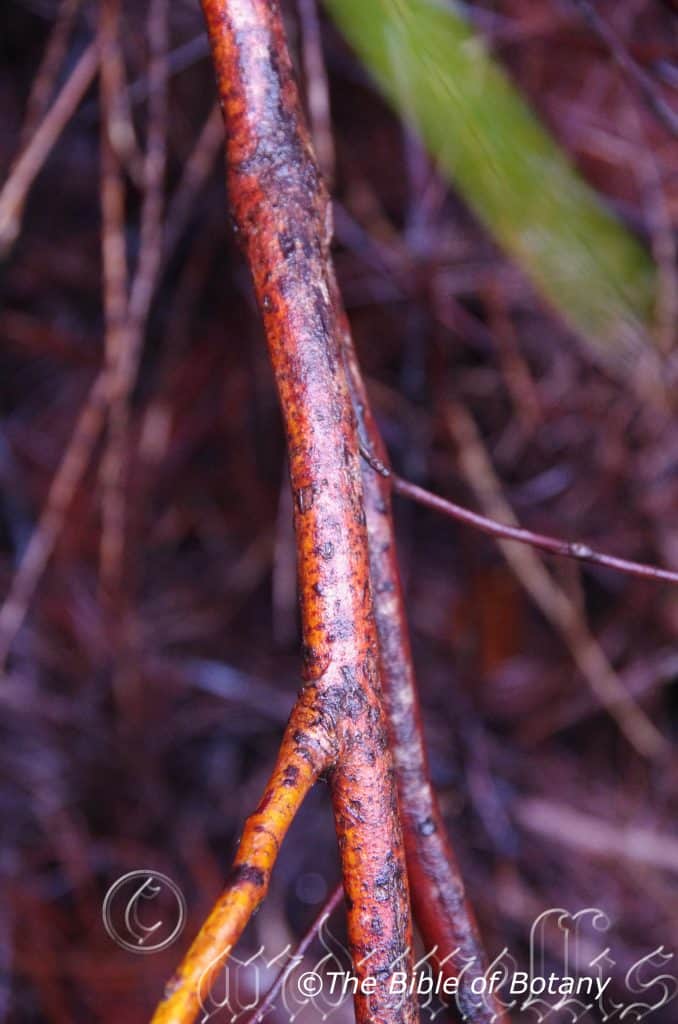
Author’s Garden The Pinnacles NSW

Author’s Garden The Pinnacles NSW
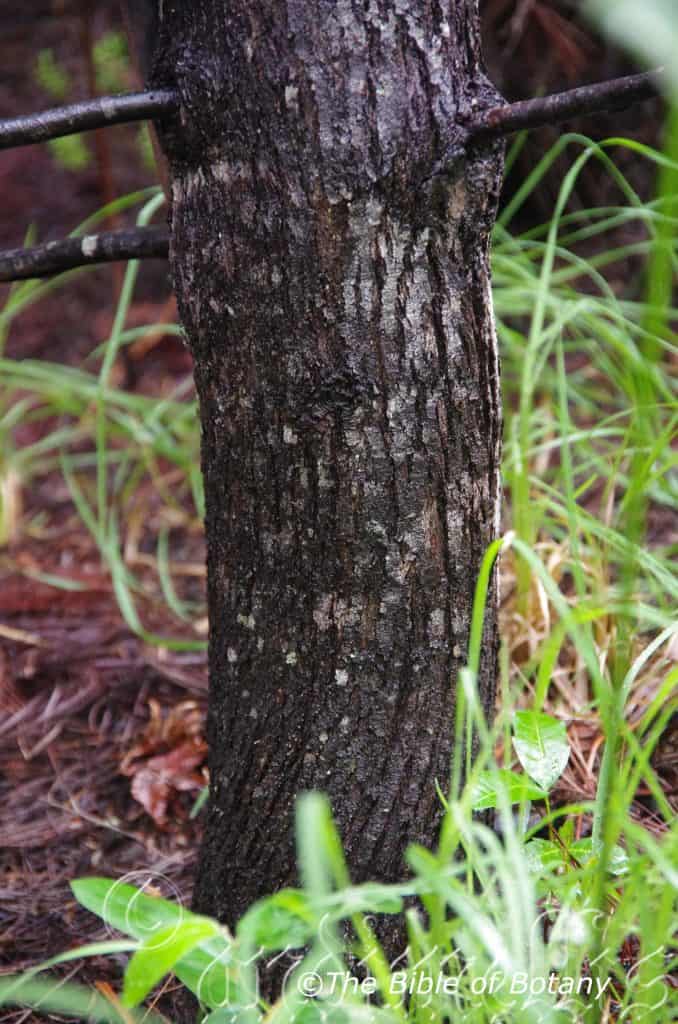
Author’s Garden The Pinnacles NSW

Author’s Garden The Pinnacles NSW
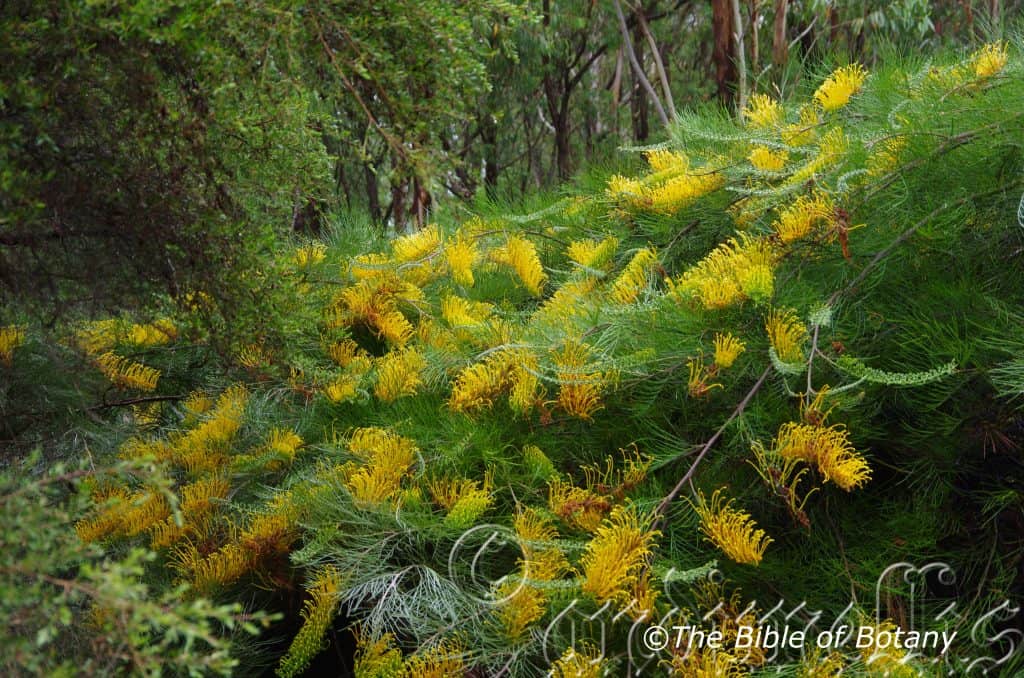
Author’s Garden The Pinnacles NSW

Author’s Garden The Pinnacles NSW
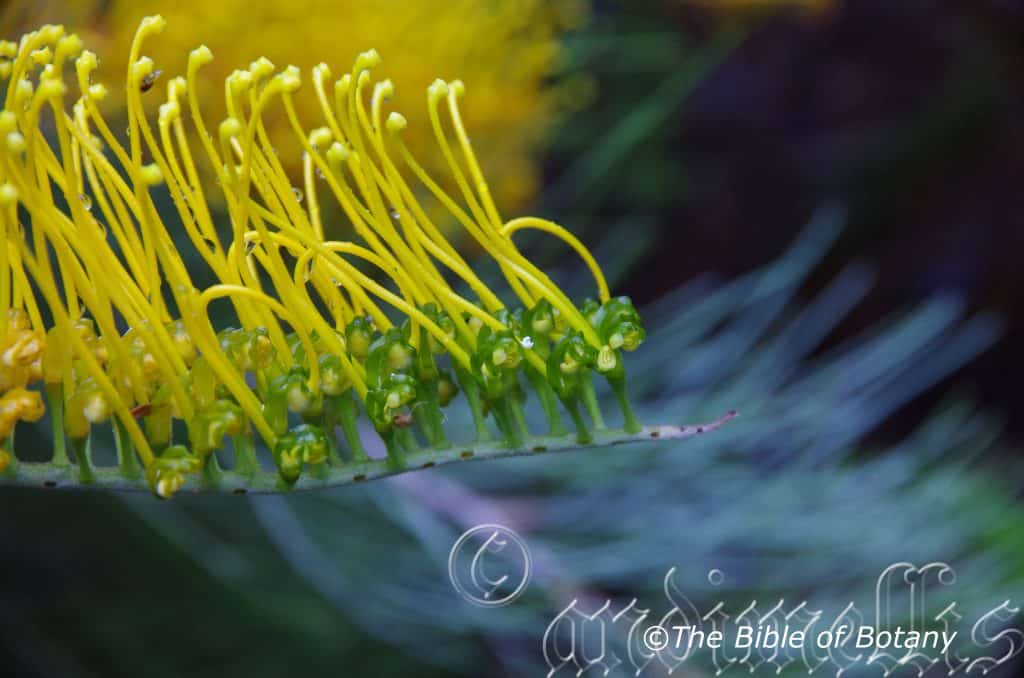
Author’s Garden The Pinnacles NSW
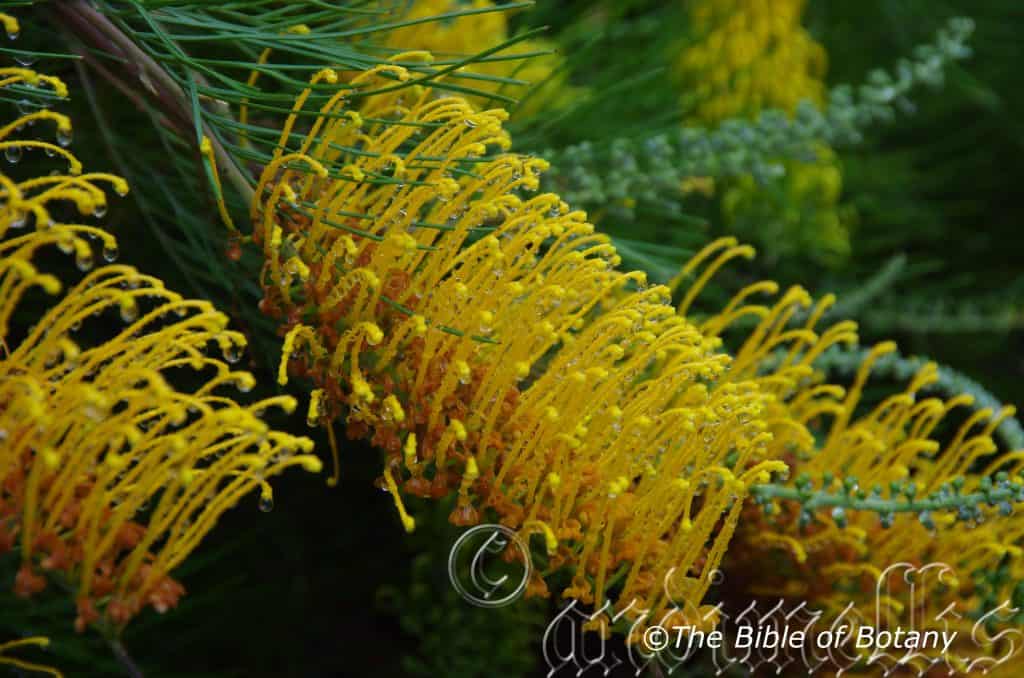
Author’s Garden The Pinnacles NSW
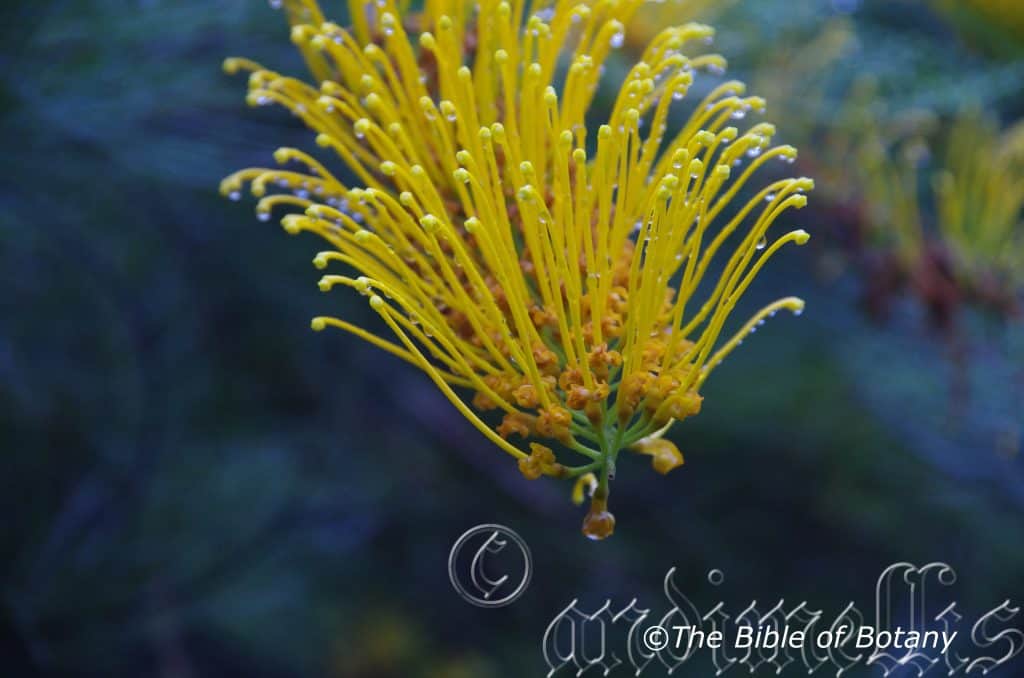
Author’s Garden The Pinnacles NSW
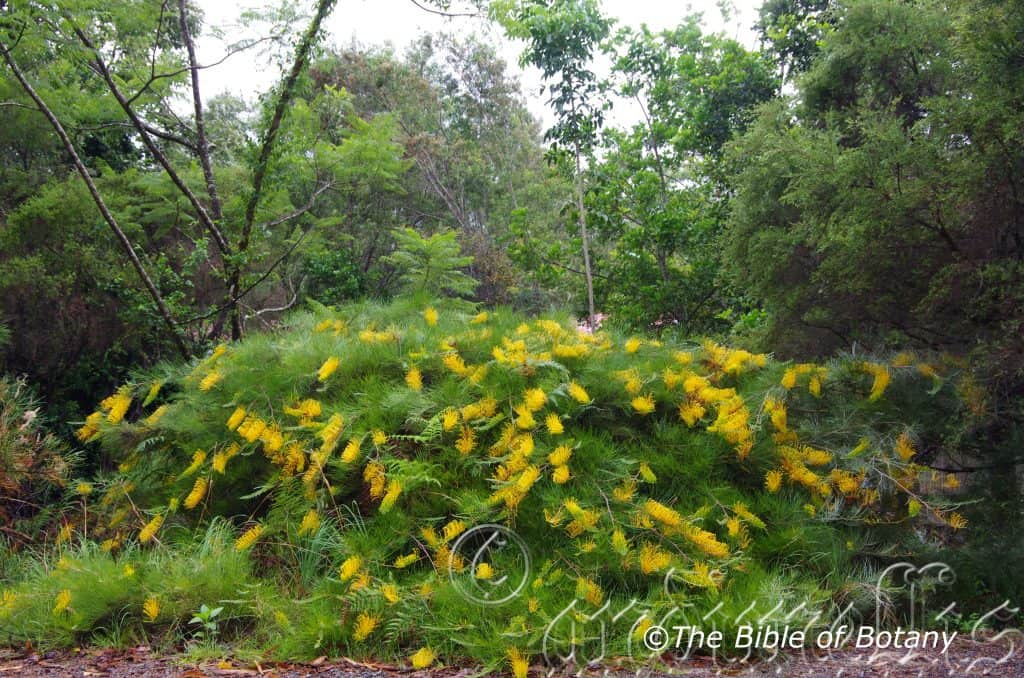
Author’s Garden The Pinnacles NSW
Grevillea eriostachya
Classification:
Class: Magnoliopsida
Order: Proteales
Family: Proteaceae
Genus: Is named in honour of C. F. Greville; 1749-1809, who was a British expert botanist on Algae, a foundation member of the London Horticultural Society and a collector of rare plants.
Species: From Erion, which is Ancient Greek for woolly and Stachy, which is Ancient Greek for an ear or grain especially corn. It refers to the flowers appearing like ears of corn especially the colour and the racemes and peduncles being covered in short floccose hairs.
Common Name: Kimberley Grevillea, Yellow Flame Grevillea or Desert Grevillea. Wama in Yewara, Kaliny or Kalinypa in Pitjantjatjara and Yankunytjatjara or Rawur Rawurba in the Galigiri and Gugadja languages.
Distribution:
Grevillea eriostachya is widespread species found south from Broome in coastal central Western Australia in the north, south to Perth and east to Mount Cheesman in far north western South Australia and through to Alice Springs in southern central Northern Territory.
https://avh.ala.org.au/occurrences/search?taxa=Grevillea+eriostachya#tab_mapView
Habitat:
Grevillea eriostachya prefers full sun to light dappled shade. It grows on slopes on dunes, swales and plains on sandy plains in dry in low heath, mixed scrub and spinifex scrub land. The altitude ranges from near 5 meters ASL to 450 meters ASL.
The temperatures range from 5 degrees in August to 47 degrees in February.
The rainfalls range from lows of 220mm to an average 800mm annually.
Soil Requirements:
Grevillea eriostachya prefers deep red, yellow or grey sand. The soils are derived from partially decomposed or decomposed sandstones. The soils pH ranges from 5 pH to 6.5pH are preferred. It does not tolerate water logged soils. Non saline soils to moderately saline soils are tolerated.
Height & Spread:
Wild Plants: 1m to 2m by 1m to 2.5m.
Characteristics:
The trunk and branches are pale grey and glabrous. The branchlets are pale greyish-green or greyish blue turning pale brown with age. The new stems are densely covered in white to whitish-grey floccose hairs.
The alternate leaves are deeply pinnatipartite or at times entire. The narrow linear leaflets are often thrice partite near the base, then twice partite and entire on the apical half. The leaves measure 70mm to 180mm in length by 70mm to 180mm in width overall. The bases are sessile while the apexes taper to a fine distinct point. The 1 to 7, narrow-linear leaflets measure 20mm to 160mm in length by 1mm to 2.5mm in width. The mid-vein and penninervation is faintly prominent on the upper lamina with 2 narrow persistently pubescent grooves between margins and midrib on the lower lamina. The apex has a short mucronate or straight tip.
The inflorescence of Grevillea eriostachya is a secund born singularly from the leaf axils and terminally. The pedicels measure 3mm to 4.5mm in length. The secunds have 100 to 180 individual flowers and measure 140mm to 250mm in length by 4mm to 6mm in diameter. The perianth and style are the most prominent parts of the flower. The individual perianths are glossy green from the base through to the lobes and are densely covered in short, fine floccose hairs externally and are glabrous internally. The glossy green torus is horizontal. The perianth measures 6.5mm to 9mm in length and is dilated at the base, strongly recurved below the limb, dividing into four free segments below the limb. The elliptical anthers are bright yellow.
The sessile, glossy green ovary is densely covered in white floccose hairs. The style is greenish-yellow at the base turning bright yellow to yellow-orange, is glabrous and measures 43mm to 48mm in length. The pollen presenter is somewhat oblique on a cylindrical cone.
Grevillea eriostachya fruits are compressed obliquely, ovate to elliptical and covered in white floccose hairs externally, glabrous internally and measure 15mm to 20mm in length. The style is persistent at the apex.
The two seeds per capsule are elliptical and have a broad flat membranous wing.
Wildlife:
Grevillea eriostachya wildlife is particularly attractive to nectar feeding birds including the brown honeyeater, Lichmera indistincta.
Cultivation:
Grevillea eriostachya is a very prolific flowering large shrub for most gardens in semi-arid, arid and warm temperate zones. It is a very reliable and a prolific bloomer, with its flowers contrasting beautifully with its leaves. As garden subjects it will grow from 1.5 meters to 2.5 meters in height by 3 meters to 4 meters in diameter when cultivated in the open. It is fast growing, drought tolerant and cold tolerant, at least down to temperatures of 2 degrees. It can be utilized on the sunny side of sheds to help cool them down or as small feature trees, including colour bond sheds as it can tolerate high temperatures.
It is most suitable for use besides pathways or driveways, rockeries, along sandy banks and for along drive ways, screens, wind breaks or shelter belts for small native animals. The dense bushiness of the plants, with the large flowers placed near the terminals make for a great golden-yellow display every year.
Placed at the edge of a dry bush garden their striking display of flowers will draw your attention so that you will want to investigate further. A bend in a path can be broken up by placing them at the back of the bend. Place them in the background with medium and smaller plants in front. Plants with either small red flowers can be used in the midground while the prostrate or smaller shrubs are best with red or orange flowers in the front. This will lead the viewer’s eyes down and over to the back ground. This Grevillea is a must for larger dry gardens and does well on the east coast on sandy well drained soils. Red flowering shrubs can also be used to great effect as their flowering will compliment those from this Grevillea. Plant them at 3.5 meter to 4 meter centers when mass planting or in rows for a screen.
Some flowers appear throughout the year but is heaviest during the summer months of December through to February or March in our garden at The Pinnacles NSW.
Propagation:
Seeds: The seeds need to be treated before sowing. This can be done by nicking the surface with a knife. Another method is to rub the individual seeds lightly over fine sandpaper. Sow the freshly treated seeds directly into a seed raising mix. Cover them with 5mm of fine sand and keep moist not wet. Place the tray in a warm sunny position. When the seedlings attain 25mm to 50mm in height, prick them out and plant them into 50mm native tubes using a good organic mix.
Once the seedlings reach 150mm to 200mm in height, nip the tips out before planting them out into their permanent position. For mass plantings plant them out at 3 meter to 3.5 meter centers.
Fertilize using Seaweed, fish emulsion or a half strength solution of organic chicken pellets soaked in water on an alternate basis. Fertilize every 3 months until the plants are well established then annually to assist in prolific blooming and good health.
Cuttings: Cuttings have proven difficult. Try useing 70mm to 100mm long half ripened material when growing from cuttings from the present season’s growth. Take them in mid-autumn or early spring. Remove half the leaves from the bottom section being careful not to tear the bark.
1 Prepare the cutting mix by adding one third sharp clean river sand, one third peat and one third perlite. These ingredients are sterilize,
2 Select good material from non diseased plants,
3 Select semi green stems for cuttings. Look for a stem with two or three nodes,
4 Place the cutting on a flat, hard surface, and make a clean cut down one side of the cutting at the base for 10mm with a sharp sterile knife or razor blade. – This scarification of the node will increase the chances of roots emerging from this spot. Now remove all but one or two the leaves, leaving the apex leaves in tact. If the leaves are very large in proportion to the stem, cut off the apical halves.
5 Fill a saucer with water, and place a little medium strength rooting hormone into another container like a milk bottle top. Dip the node end of the cutting into the water and then into the rooting hormone. Tap off any excess hormone,
6 Use a small dipple stick or old pencil to poke a hole into the soilless potting mix. Ensure the hole is slightly larger than the stem diameter and be careful not to wipe the rooting hormone off the cuttings base, place the cuttings in a pattern ensuring the cuttings are not touching each other,
7 I like to place the pots in Plastic bags to help maintain temperature and moisture. Place in a semi shaded place like under 50mm shade cloth.
8 When the cuttings have struck, open the bag to allow air circulation for a few days to a week,
9 Once hardened off remove the cuttings from the bag and allow to further hardening for a few more days,
10 Transplant into a good potting mix to grow on.
Fertilize using seaweed, fish emulsion or organic chicken pellets soaked in water on an alternate basis. Fertilize every two months until the plants are established then twice annually in early September or March to maintain health, vitality and better flowering. Avoid synthetic fertilizers as they will most likely contain calcium and phosphorous at levels, which are toxic to most Proteaceae.
Further Comments from Readers:
“Hi reader, it seems you use The Bible of Botany a lot. That’s great as we have great pleasure in bringing it to you! It’s a little awkward for us to ask, but our first aim is to purchase land approximately 1,600 hectares to link several parcels of N.P. into one at The Pinnacles NSW Australia, but we need your help. We’re not salespeople. We’re amateur botanists who have dedicated over 30 years to saving the environment in a practical way. We depend on donations to reach our goal. If you donate just $5, the price of your coffee this Sunday, We can help to keep the planet alive in a real way and continue to bring you regular updates and features on Australian plants all in one Botanical Bible. Any support is greatly appreciated. Thank you.”
In the spirit of reconciliation we acknowledge the Bundjalung, Gumbaynggirr and Yaegl and all aboriginal nations throughout Australia and their connections to land, sea and community. We pay our respect to their Elders past, present and future for the pleasures we have gained.
Grevillea eryngioides
Classification:
Class: Magnoliopsida
Order: Proteales
Family: Proteaceae
Genus: Is named in honour of C. F. Greville; 1749-1809, who was a British expert botanist on Algae, a foundation member of the London Horticultural Society and a collector of rare plants.
Species: From Errygion, which is Ancient Greek for holly sea and Eîdos/Oides, which is Ancient Greek for alike or similar to. It refers to the deep blue-purplish to blue or bluish-purple flowers, which resemble the Erygium genus in colour.
Sub Species:
Common Name: Mustard Grevillea or Cress Grevillea.
Distribution:
Grevillea eryngioides is restricted to a large population in central southern Western Australia south from near Geraldton in a general south easterly direction to the northern region of the Esperance Coastal Plains.
https://avh.ala.org.au/occurrences/search?taxa=Grevillea+eryngioides#tab_mapView
Habitat Aspect Climate:
Grevillea eryngioides prefers full sun to dappled shade. It is found on sandy plains in dry scrubby woodlands, open Eucalyptus woodlands or heaths. The altitude ranges from near 200 meters ASL to 400 meters ASL.
The temperatures range from 5 degrees in August to 40 degrees in February.
The rainfalls range from lows of 300mm to an average 500mm annually.
Soil Requirements:
Grevillea eryngioides prefers cream and yellow coarse sands, sandy loams to medium gravelly fatty clays. The soils are usually derived from partially decomposed sandstones or at times granites. The soils pH ranges from 5.5pH to 6pH are preferred. It does not tolerate water logged soils. Non saline soils to moderately saline soils are tolerated.
Height & Spread:
Wild Plants: 0.5m to 2m by 0.4m to 0.7m.
Characteristics:
The very short stems are glaucous yellow or glaucous cream. The flowering spikes may reach 2.2 meters and are pale grey to yellow-green or pale blue-green sometimes with a pink tinge and are densely covered in white to fawn hirtellous hairs eventually becoming glabrous on the lower sections. It has a suckering habit that forms loose rosettes close to the ground.
The alternate pinnatipartite leaves measure 90mm to 220mm in length by 15mm to 65mm in width. The 2 to 7 pairs of lobes are variable from oblong to broad obovate and measure 10mm to 50mm in length by 15mm to 30mm in width. The bases are rounded, decurrent while the apexes are obtuse with an apiculate tip. The concolourous laminas are glaucous blue to glaucous grey-blue, glaucous. The laminas are flat, recurved or decurve or undulating while the margins are entire. The pale yellow mid vein is prominent on the lower lamina and is sparsely covered in white biramous glandular hairs and is distinctly visible on the upper lamina.
The acroscopic inflorescence of Grevillea eryngioides are cylindrical racemes born on a long terminal spike to 2.2 meters. The racemes and pedicels are covered in white puberulent hairs. The racemes measure 20mm to 70mm in length while the green pedicels measure 4mm to 5mm in length. The perianth and style are the most prominent parts of the flower. The individual perianths are pale maroon-purple to pale purplish-red from the base through to the limbs externally and creamy pastel maroon internally. The limbs are joined and are strongly recurved. The perianth are sparsely to densely covered in white glandular or pulverulent hairs externally and are glabrous internally. The caduceous perianths measures 5mm to 6.5mm in length while the lobes measure 4mm to 5mm in length.
The glabrous style is yellow to yellow-green at the base turning deep maroon near to the stigma. The oblique pollen presenter is deep maroon-burgundy. The pistil measures 9mm to 11mm in length. The lateral style is glabrous. The stipitate ovary is glabrous and measures 1.5mm to 2mm in diameter. The flowers appear from September to November.
Grevillea eryngioides fruits are compressed ovoidal to lenticellata follicles. The style is persistent on the ripe follicles. The follicles are dull green and turn grey on ripening. It is sparsely covered in tuberculate to rugulose lumps and are viscid. They measure 14mm to 21mm in length by 12mm to 16mm wide. The 2 grey seeds measure 7mm to 10mm in length by 5mm to 8mm wide. There is a 2.5mm to 4mm fawn papery wing surrounding the seed.
Wildlife:
Grevillea eryngioides are very attractive to small nectar eating honeyeaters, butterflies, beetles, native flies and native bees.
Cultivation:
Grevillea eryngioides is a most unusual flowering small shrub for most gardens in semi-arid and temperate zones. It is a very reliable bloomer, with its flowers and leaves contrasting beautifully with every other prostrate to small clumpy shrub in the garden. As garden subjects they will grow from 400mm to 600mm in height by 500mm to 800mm in diameter with flower spikes attain 2200mm in height when cultivated in the open. It is fast growing, drought and cold tolerant, at least down to temperatures of minus 2 degrees. This is one Grevillea I will be persevering with at the Pinnacles near Grafton along my driveway as its beauty and unusualness is so unique. It is most suitable for use around swimming pools, sunny courtyards, besides pathways, rockeries, along sandy banks and for along drive ways.
Placed near a bend in the garden or along a long driveway with other small green leaf Grevillea they will gain a lot of attention and highlight the other green leaf shrubs. I intend mixing Grevillea masonii and Grevillea centristigma with this one in a triangular bed adjacent to the driveway where they will be on full display to all my guests.
It is a great addition for anyone wanting to achieve a barren desert look or even a heath look to the garden or rockery. An arid look with harsh contrasting environment yet when planted close to other bright green foliage plants offers a compliment appearance in a casual bush setting. Whether you are coming or going in season or out of season they should leave a long lasting impression.
Mass plant them in the foreground with medium and larger plants behind. Plants with broad green leaves with white yellow or red flowers can be used in the midground while large flowering specie can be placed in the background. This will lead the viewer’s eyes down and over to the back ground. Whether it is in flower or not these plants will catch your attention and the viewer will be transfixed on the display rather than watching the path. Small Acacias to 1 meter diameter with cream or white flowers can also be used to great effect as their flowering will compliment this Grevillea. The large glaucous loose rosette leaves will offset the strong flowers of the Acacia specie and in fact would be a very strong complementary contrast. If the prostrate or smaller Acacia specie were to flower at the same time or in a different season would be of no consequence as the foliages would still deliver plenty of interest. This is one plant that benefits the gardener if mass planted together in small sections. Plant them at 0.6 meter to 0.8 meter centers.
Because of their small size, beautiful dense foliage they can make a great contribution around fish and frog ponds or rockeries. Mix them with short strap leaf plants or other very small shrubs or small clumpy annuals leaving space between them so you can see the rocks, logs or other features.
When mass planting Grevillea eryngiodes, use curves and irregular patterns so they can be viewed from different angles around the garden. The flowers and leaves really are a highlight so place them where it is highly visible.
Garden beds would need to be open with plenty of space between plants to allow air flow as well as to give the leaves a chance to be appreciated for their unique beauty. Crowding this type of foliage with other plants sees them lose all the effectiveness of the harsh environment they originated from. Correct spacing will contrast the foliages better without one overpowering the other. If you are using them amongst rocks or around the small desert garden plant them sparingly, so not to make the area look cluttered or detract from the other features. 4 or 5 in an area of 80 square meters would be ample. 4 plants separately planted or plant 2 close together and separate the other 3 to give width and depth where you want it. The use of annuals helps to attract the viewer to the permanent plants foliage as it is the predominant foliage patch in patch. In the case with this Grevillea you could substitute other very small Grevillea specie or natives instead of the native annuals. In addition most annuals flower when this Grevillea is resting during the summer. Annuals mixed with Grevillea eryngiodes help to give small gardens depth and make them look larger than what they really are. It works well with Grevillea masonii another Grevillea specie of similar size but contrasting foliages and interesting flowers.
When you design a miniature desert garden, use contours to display the plants to their best. Plant a row on the top to represent the hills or a ridge they would taller than those planted in valleys or on plains. Don’t make the ridge straight curve it so it winds around. Use small tussock grasses or Lomandra specie adjacent to Grevillea eryngiodes to give them height. Prune plants up the valleys and background so they remain shorter than those in the foreground to give greater depth.
Place them near old stumps and roots to make the stumps or roots look larger. Select an area of ground and let your hair down and be imaginative and this is the plant that may just change your life. Remember this plant is rather large for this type of garden so be sparingly with the other plants when planting and remember that deserts are rolling flat plains not steep hills so it is best to use a gentle slope or a basin with a small pool at the bottom. A billabong affect is the go, not a waterfall or cascades.
Propagation:
Seeds: The seeds need to be treated before sowing. This can be done by placing the seeds into a small calico bag with sharp clean sand and rubbing them to scarify the surface or they can be nicked individually with a knife. Another method is to rub the individual seeds lightly over fine sandpaper. Sow the freshly treated seeds directly into a seed raising mix. Cover them with 5mm of fine sand and keep moist not wet. Place the tray in a warm sunny position. When the seedlings are 25mm to 50mm tall, prick them out and plant them into 50mm native tubes using a good organic mix.
Once the seedlings reach 150mm to 200mm in height, nip the tips out before planting them out into their permanent position. For mass plantings plant them out at 0.7 meter to 2 meter centers depending on the form or whether it is used as a hedge of feature shrub.
Fertilize using Seaweed, fish emulsion or a half strength solution of organic chicken pellets soaked in water on an alternate basis. Fertilize every 3 months until the plants are well established then annually to assist in prolific blooming and good health.
Cuttings: Use 70mm to 100mm long half ripened material when growing from cuttings from the present season’s growth. Take them in mid-autumn or early spring. Remove half the leaves from the bottom section being careful not to tear the bark.
1 Prepare the cutting mix by adding one third sharp clean river sand, one third peat and one third perlite. These ingredients are sterilize,
2 Select good material from non diseased plants,
3 Select semi green stems for cuttings. Look for a stem with two or three nodes,
4 Place the cutting on a flat, hard surface, and make a clean cut down one side of the cutting at the base for 10mm with a sharp sterile knife or razor blade. – This scarification of the node will increase the chances of roots emerging from this spot. Now remove all but one or two the leaves, leaving the apex leaves in tact. If the leaves are very large in proportion to the stem, cut off the apical halves.
5 Fill a saucer with water, and place a little medium strength rooting hormone into another container like a milk bottle top. Dip the node end of the cutting into the water and then into the rooting hormone. Tap off any excess hormone,
6 Use a small dipple stick or old pencil to poke a hole into the soilless potting mix. Ensure the hole is slightly larger than the stem diameter and be careful not to wipe the rooting hormone off the cuttings base, place the cuttings in a pattern ensuring the cuttings are not touching each other,
7 I like to place the pots in Plastic bags to help maintain temperature and moisture. Place in a semi shaded place like under 50mm shade cloth.
8 When the cuttings have struck, open the bag to allow air circulation for a few days to a week,
9 Once hardened off remove the cuttings from the bag and allow to further hardening for a few more days,
10 Transplant into a good potting mix to grow on.
Fertilize using seaweed, fish emulsion or organic chicken pellets soaked in water on an alternate basis. Fertilize every two months until the plants are established then twice annually in early September or March to maintain health, vitality and better flowering. Avoid synthetic fertilizers as they will most likely contain calcium and phosphorous at levels, which are toxic to most Proteaceae.
Further Comments from Readers:
“Hi reader, it seems you use The Bible of Botany a lot. That’s great as we have great pleasure in bringing it to you! It’s a little awkward for us to ask, but our first aim is to purchase land approximately 1,600 hectares to link several parcels of N.P. into one at The Pinnacles NSW Australia, but we need your help. We’re not salespeople. We’re amateur botanists who have dedicated over 30 years to saving the environment in a practical way. We depend on donations to reach our goal. If you donate just $5, the price of your coffee this Sunday, We can help to keep the planet alive in a real way and continue to bring you regular updates and features on Australian plants all in one Botanical Bible. Any support is greatly appreciated. Thank you.”
In the spirit of reconciliation we acknowledge the Bundjalung, Gumbaynggirr and Yaegl and all aboriginal nations throughout Australia and their connections to land, sea and community. We pay our respect to their Elders past, present and future for the pleasures we have gained.
Grevillea evansiana
Classification:
Class: Magnoliopsida
Order: Proteales
Family: Proteaceae
Genus: Is named in honour of C. F. Greville; 1749-1809, who was a British expert botanist on Algae, a foundation member of the London Horticultural Society and a collector of rare plants.
Species: Is named in honour of Thomas Evans Chapman; 1788-1864, who was a British landscape artist who later collected and studied plants from Malaysia.
Sub Species:
Common Name: Evans Grevillea.
Distribution:
Grevillea evansiana is restricted to a small population on the Hawksbury sandstones from east of Rylstone to south west of Muswellbrook in central eastern New South Wales.
https://avh.ala.org.au/occurrences/search?taxa=Grevillea+evansiana#tab_mapView
Habitat Aspect Climate:
Grevillea evansiana prefers full sun to light dappled shade. It grows below medium size trees, low trees in moist shallow depressions in dry schlerophyll forests, dry sclerophyll woodlands or occasionally in swampy heaths. The altitude ranges from near 240 meters ASL to 1030 meters ASL.
The temperatures range from minus 3 degree in August to 38 degrees in January.
The rainfalls range from lows of 700mm to an average of 1100mm annually.
Soil Requirements:
Grevillea evansiana prefers on ledges or shallow depressions where forest litter and sand accumulate. The soils are usually derived from partially decomposed sandstones. The soils pH ranges from 5.5pH to 6pH. It does not tolerate water logged soils. Non saline soils to moderately saline soils are tolerated.
Height & Spread:
Wild Plants: 0.3m to 0.5m by 0.8m to 1m.
Characteristics:
It grows as a small shrub with red-brown, glabrous stems. The sub terete smaller stems are a creamy fawn colour and densely covered in fawn tomentose hairs.
The alternate to almost opposite leaves are elliptical to obovate or linear. The leaves measure 25mm to 60mm by 3mm to 10mm wide. The petiole measures 0.5mm to 2mm in length. The bases are cuneate while the apexes are mucronate or rarely emarginate. The concolourous laminas are semi glossy pale green, grass green or mid grey-green and glabrous or very sparsely covered in off white to pale grey sub sericeous to tomentose hairs on the upper lamina while the lower laminas are densely covered in white sub sericeous to tomentose hairs with a scattering of longer pilose hairs. The leaf margins are entire and strongly recurved to revolute. The mid vein is prominent on the lower lamina and is barely visible on the upper lamina.
The acroscopic conflorescence are pendant and born on short pendulous branchlets from the axils or terminals. The style and perianth are the most prominent part of the flower. The sub terete peduncles are covered in white subsericeous and measure 1mm to 15mm in length. The tightly packed, sub globose perianths are usually blackish-red to deep burgundy-red or very rarely white and are densely covered in grey sericeous hairs. The perianths are moderately covered in white to grey sericeous hairs while the limbs are densely covered in grey villous hairs externally while internally the perianths and lobes are sparsely covered in grey hirtellous hairs. The caduceous perianths measure 6mm to 6.5mm in length while the lobes measure 3mm to 4mm in length.
The styles are blackish-maroon, deep red or rarely white. The pistil is glabrous except for a 1mm to 3mm ring on the apical section which is sparsely covered in minute papillose, hirtellous hairs. The pistils measures 9mm to 10mm in length. The pollen presenter is oblique. The flowers appear from August to December.
Grevillea evansiana fruits are ovoidal follicles. The follicles are produced singularly radiating out from rachis. The green follicles turn brown when ripe. They measure 10mm to 12mm in length.
Wildlife:
The dense foliage and proliferation of small flowers is a great attraction and safe zone for smaller honeyeaters like the Silver Eyes, Yellow Face Honeyeater, Brown Honeyeater and the eastern Spinebill, Acanthorhynchus tenuirostris.
Cultivation:
Grevillea evansiana is a beautiful Grevillea for temperate to subtropical areas in native gardens where sandy poorly drained soils occur. It will grow from 0.6 meters to 0.8 meters in height by 0.8 meters to 1.2 meters in diameter in cultivation when grown in the open. The foliage can be regularly tip pruned to promote new growth, bushiness and flowering. It is best grown as a prostrate or semi prostrate plant on banks, rockeries or along driveways. This is as close as any flower gets to being black.
It is also a good supply of nectar for birds over a long period. In Native gardens they can be used for bird attraction. A bend in a path can be broken up by placing them at the bend.
Grevillea evansiana is a great small plant for the rockeries both large and small. Placed between rocks and boulders or adjacent to tree stumps or old roots it is small enough and dainty enough to contrast against the harsh bold lines of these items.
The area where it would excel is that of the heath garden. Mixed with other small shrubs annuals with bold coloured flowers where it can compete with the boldness. Properly used as a prostrate ground cover in conjunction with small fish ponds or small frog ponds and other plants with strap leaves like the smaller Lomandra the whole area would look a lot larger than what it actually is.
It is best used mixed with plants which have white, cream or pale yellow flowers that flower at the same time to help contrast the dark flowers.
Propagation:
Seeds: Sow Grevillea evansiana seeds need to be treated before sowing. This can be done by placing the seeds into a small calico bag with sharp clean sand and rubbing them to scarify the surface or they can be nicked individually with a knife. Another method is to rub the individual seeds lightly over fine sandpaper. Sow the freshly treated seeds directly into a seed raising mix. Cover them with 5mm of fine sand and keep moist not wet. Place the tray in a warm sunny position. When the seedlings are 25mm to 50mm tall, prick them out and plant them into 50mm native tubes using a good organic mix.
Once the seedlings reach 150mm to 200mm in height, nip the tips out before planting them out into their permanent position. For mass plantings plant them out at 0.7 meter to 2 meter centers depending on the form or whether it is used as a hedge of feature shrub.
Fertilize using Seaweed, fish emulsion or a half strength solution of organic chicken pellets soaked in water on an alternate basis. Fertilize every 3 months until the plants are well established then annually to assist in prolific blooming and good health.
Cuttings: Use 70mm to 100mm long half ripened material when growing from cuttings from the present season’s growth. Take them in mid-autumn or early spring. Remove half the leaves from the bottom section being careful not to tear the bark.
1 Prepare the cutting mix by adding one third sharp clean river sand, one third peat and one third perlite. These ingredients are sterilize,
2 Select good material from non diseased plants,
3 Select semi green stems for cuttings. Look for a stem with two or three nodes,
4 Place the cutting on a flat, hard surface, and make a clean cut down one side of the cutting at the base for 10mm with a sharp sterile knife or razor blade. – This scarification of the node will increase the chances of roots emerging from this spot. Now remove all but one or two the leaves, leaving the apex leaves in tact. If the leaves are very large in proportion to the stem, cut off the apical halves.
5 Fill a saucer with water, and place a little medium strength rooting hormone into another container like a milk bottle top. Dip the node end of the cutting into the water and then into the rooting hormone. Tap off any excess hormone,
6 Use a small dipple stick or old pencil to poke a hole into the soilless potting mix. Ensure the hole is slightly larger than the stem diameter and be careful not to wipe the rooting hormone off the cuttings base, place the cuttings in a pattern ensuring the cuttings are not touching each other,
7 I like to place the pots in Plastic bags to help maintain temperature and moisture. Place in a semi shaded place like under 50mm shade cloth.
8 When the cuttings have struck, open the bag to allow air circulation for a few days to a week,
9 Once hardened off remove the cuttings from the bag and allow to further hardening for a few more days,
10 Transplant into a good potting mix to grow on.
Fertilize using seaweed, fish emulsion or organic chicken pellets soaked in water on an alternate basis. Fertilize every two months until the plants are established then twice annually in early September or March to maintain health, vitality and better flowering. Avoid synthetic fertilizers as they will most likely contain calcium and phosphorous at levels, which are toxic to most Proteaceae.
Further Comments from Readers:
“Hi reader, it seems you use The Bible of Botany a lot. That’s great as we have great pleasure in bringing it to you! It’s a little awkward for us to ask, but our first aim is to purchase land approximately 1,600 hectares to link several parcels of N.P. into one at The Pinnacles NSW Australia, but we need your help. We’re not salespeople. We’re amateur botanists who have dedicated over 30 years to saving the environment in a practical way. We depend on donations to reach our goal. If you donate just $5, the price of your coffee this Sunday, We can help to keep the planet alive in a real way and continue to bring you regular updates and features on Australian plants all in one Botanical Bible. Any support is greatly appreciated. Thank you.”
In the spirit of reconciliation we acknowledge the Bundjalung, Gumbaynggirr and Yaegl and all aboriginal nations throughout Australia and their connections to land, sea and community. We pay our respect to their Elders past, present and future for the pleasures we have gained.
Grevillea exposita
Classification:
Class: Magnoliopsida
Order: Proteales
Family: Proteaceae
Genus: Is named in honour of C. F. Greville; 1749-1809, who was a British expert botanist on Algae, a foundation member of the London Horticultural Society and a collector of rare plants.
Species: From Exposit?/Exposit?, which is Latin for to exposed or spread-out. It refers to plants, and their stems, which are well spread out.
Sub Species:
Common Name:
Distribution:
Grevillea exposita is restricted to a small population on the southern west coast of Western Australia in a broad triangle from Port Dennison east to Morawa and south to Eneabba.
https://avh.ala.org.au/occurrences/search?taxa=Grevillea+exposita#tab_mapView
Habitat Aspect Climate:
Grevillea exposita prefers full sun to dappled shade. It grows on sandy plains in dry heaths or open woodlands. The altitude ranges from 5 meters ASL to 110 meters ASL.
The temperatures range from 6 degrees in August to 38 degrees in February.
The rainfalls range from lows of 300mm to an average 500mm annually.
Soil Requirements:
Grevillea exposita prefers white, grey, cream or yellow sands through to medium sandy clays. The soils are usually derived from decomposed sandstones or accumulated beach sands. The soils pH ranges from 5.5pH to 6.5pH are preferred. It does not tolerate water logged soils. Non saline soils to moderately saline soils are tolerated.
Height & Spread:
Wild Plants: 1m to 2m by 1m to 2m.
Characteristics:
The stems are grey to grey-brown dull to semi glossy. The angulated to terete branchlets are pale grey-brown, semi glossy and are covered in white to pale grey tomentose to pulverulent hairs.
The alternate to almost opposite simple leaves are crowded towards the ends of the branchlets. The oblong-linear to very narrow obovate or narrow elliptical leaves measure 15mm to 35mm in length by 1.2mm to 5.5mm in width. The 2 or 3 lobes measure 15mm to 30mm in length by 1.5mm to 5mm in width. The bases are rounded while the apexes are obtuse sometimes with a mucronate tip. The discolourous laminas are sea-green to deep green and glabrous or sparsely covered in white appressed hirsute hairs and obscurely pitted on the upper lamina while the lowers while the lowers are moderately covered in white sericeous hairs. The margins are entire and strongly revolute often forming a groove along the mid vein while the margins are entire. The mid vein is prominent on the lower lamina and is faintly visible on the upper lamina.
The conflorescences of Grevillea exposita are decurve or deflexed secunds to loosely sub cylindrical racemes born terminally or from the leaf axils. The racemes have 8 to 20 flowers and measure 7mm to 17mm in length. The rachis is covered in white sub sericeous hairs. The perianth and style are the most prominent parts of the flower. The individual perianths are bright red with creamy white limb. The perianth is glabrous externally while the limbs are very sparsely covered in white sericeous hairs. The perianth is covered in white, tomentose to pulverulent hairs internally. The perianths measure 4.5mm to 5.5mm in length while the lobes measure 2mm to 2.5mm in length. The perianths peduncles measure 2mm to 3mm in length.
The glabrous style is scarlet red while the clavate stigma is lime-green. The pistils measure 20mm to 24mm in length. The oblique stigma and pollen presenter are glabrous. The ovary is glabrous. The flowers appear from September to October.
Grevillea exposita’s fruits are ovoidal to follicles with an acuminate apex. The style is persistent on the ripe follicles. The green follicles are semi glossy turn grey with an angled ridge at near the base while the surface is rugose or smooth when ripe. The follicles measure 12mm to 13mm in length by 8mm to 9mm in width.
Wildlife:
Grevillea exposita are very attractive to small nectar eating honeyeaters, butterflies, beetles, native flies and native bees.
Cultivation:
Grevillea exposita is a beautiful dense foliaged small shrub for most gardens in semi-arid and temperate zones. It is a very reliable bloomer. As garden subjects they will grow from 1.8 meters to 2.2 meters in height by 1.8 meters to 2.2 meters in diameter when cultivated. It is fast growing, drought and cold tolerant, at least down to temperatures of minus 2 degrees.
In Native gardens they can be used for attracting small birds like silver eyes or butterflies, native bees, native flies or native beetles. It is most suitable for use around swimming pools, sunny courtyards, besides pathways or driveways, rockeries, along sandy banks and for along drive ways, screens, wind breaks or shelter belts for small native animals.
Two, three or four planted on a bend will become a very strong focal point when in flower gain a lot of attention whether you are coming or going because of the fresh clean look of the foliage even in the driest of times. They can be tip pruned if a smaller shrub is required. They respond well to pruning recovering quickly and often increasing the number of flowers in the following season. Place them in the midground with large leaf ground covers, very small shrubs or annuals in front and larger plants behind. Plants with white flowers can be used in the foreground while large flowering specie can be placed in the background. This will lead the viewer’s eyes down and over to the back ground.
Propagation:
Seeds: Sow Grevillea exposita’s seeds need to be treated before sowing. This can be done by placing the seeds into a small calico bag with sharp clean sand and rubbing them to scarify the surface or they can be nicked individually with a knife. Another method is to rub the individual seeds lightly over fine sandpaper. Sow the freshly treated seeds directly into a seed raising mix. Cover them with 5mm of fine sand and keep moist not wet. Place the tray in a warm sunny position. When the seedlings are 25mm to 50mm tall, prick them out and plant them into 50mm native tubes using a good organic mix.
Once the seedlings reach 150mm to 200mm in height, nip the tips out before planting them out into their permanent position. For mass plantings plant them out at 0.7 meter to 2 meter centers depending on the form or whether it is used as a hedge of feature shrub.
Fertilize using Seaweed, fish emulsion or a half strength solution of organic chicken pellets soaked in water on an alternate basis. Fertilize every 3 months until the plants are well established then annually to assist in prolific blooming and good health.
Cuttings: Use 70mm to 100mm long half ripened material when growing from cuttings from the present season’s growth. Take them in mid-autumn or early spring. Remove half the leaves from the bottom section being careful not to tear the bark.
1 Prepare the cutting mix by adding one third sharp clean river sand, one third peat and one third perlite. These ingredients are sterilize,
2 Select good material from non diseased plants,
3 Select semi green stems for cuttings. Look for a stem with two or three nodes,
4 Place the cutting on a flat, hard surface, and make a clean cut down one side of the cutting at the base for 10mm with a sharp sterile knife or razor blade. – This scarification of the node will increase the chances of roots emerging from this spot. Now remove all but one or two the leaves, leaving the apex leaves in tact. If the leaves are very large in proportion to the stem, cut off the apical halves.
5 Fill a saucer with water, and place a little medium strength rooting hormone into another container like a milk bottle top. Dip the node end of the cutting into the water and then into the rooting hormone. Tap off any excess hormone,
6 Use a small dipple stick or old pencil to poke a hole into the soilless potting mix. Ensure the hole is slightly larger than the stem diameter and be careful not to wipe the rooting hormone off the cuttings base, place the cuttings in a pattern ensuring the cuttings are not touching each other,
7 I like to place the pots in Plastic bags to help maintain temperature and moisture. Place in a semi shaded place like under 50mm shade cloth.
8 When the cuttings have struck, open the bag to allow air circulation for a few days to a week,
9 Once hardened off remove the cuttings from the bag and allow to further hardening for a few more days,
10 Transplant into a good potting mix to grow on.
Fertilize using seaweed, fish emulsion or organic chicken pellets soaked in water on an alternate basis. Fertilize every two months until the plants are established then twice annually in early September or March to maintain health, vitality and better flowering. Avoid synthetic fertilizers as they will most likely contain calcium and phosphorous at levels, which are toxic to most Proteaceae.
Further Comments from Readers:
“Hi reader, it seems you use The Bible of Botany a lot. That’s great as we have great pleasure in bringing it to you! It’s a little awkward for us to ask, but our first aim is to purchase land approximately 1,600 hectares to link several parcels of N.P. into one at The Pinnacles NSW Australia, but we need your help. We’re not salespeople. We’re amateur botanists who have dedicated over 30 years to saving the environment in a practical way. We depend on donations to reach our goal. If you donate just $5, the price of your coffee this Sunday, We can help to keep the planet alive in a real way and continue to bring you regular updates and features on Australian plants all in one Botanical Bible. Any support is greatly appreciated. Thank you.”
In the spirit of reconciliation we acknowledge the Bundjalung, Gumbaynggirr and Yaegl and all aboriginal nations throughout Australia and their connections to land, sea and community. We pay our respect to their Elders past, present and future for the pleasures we have gained.